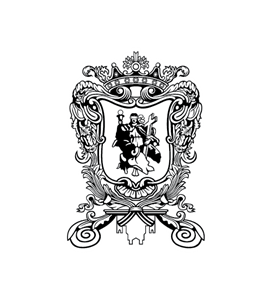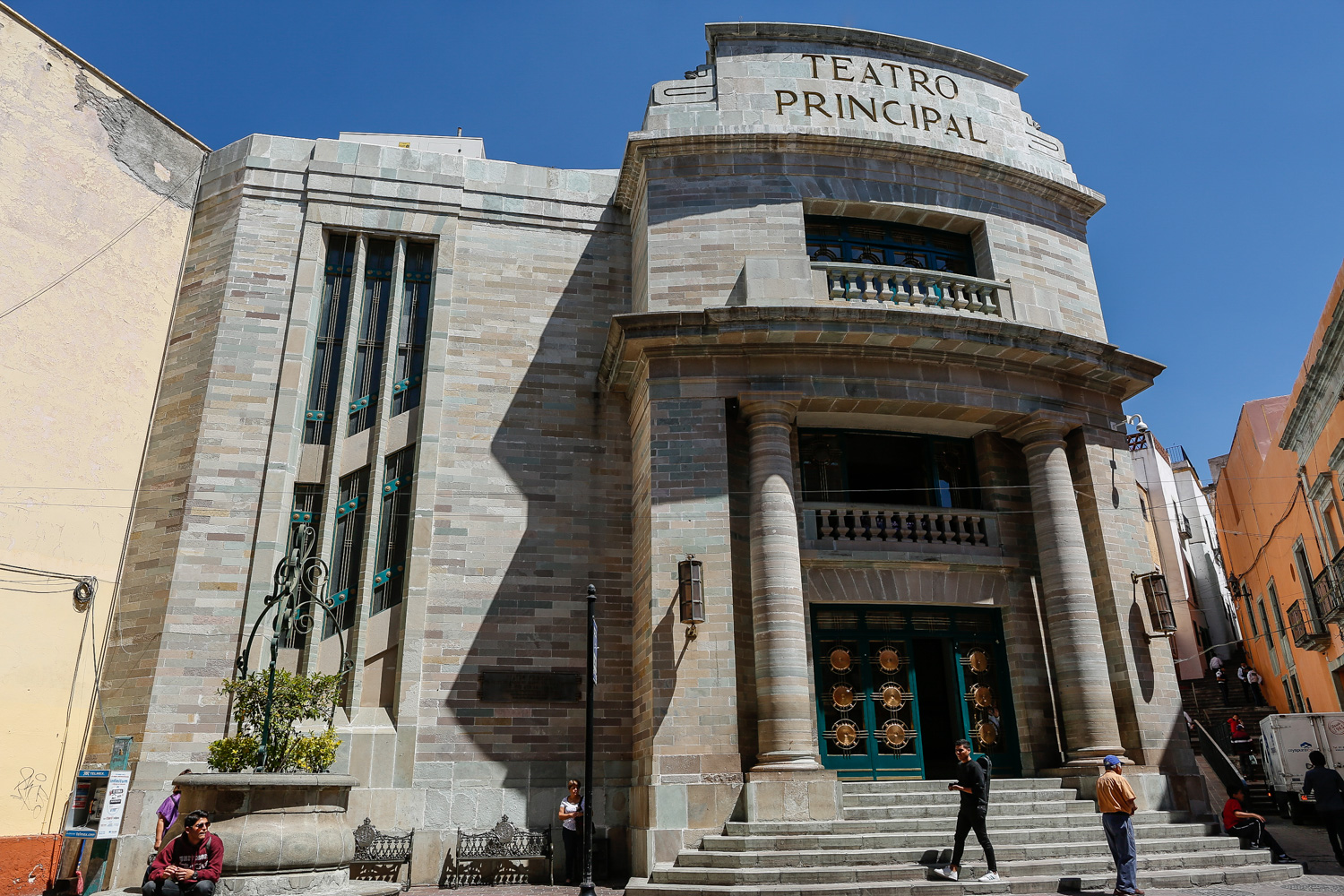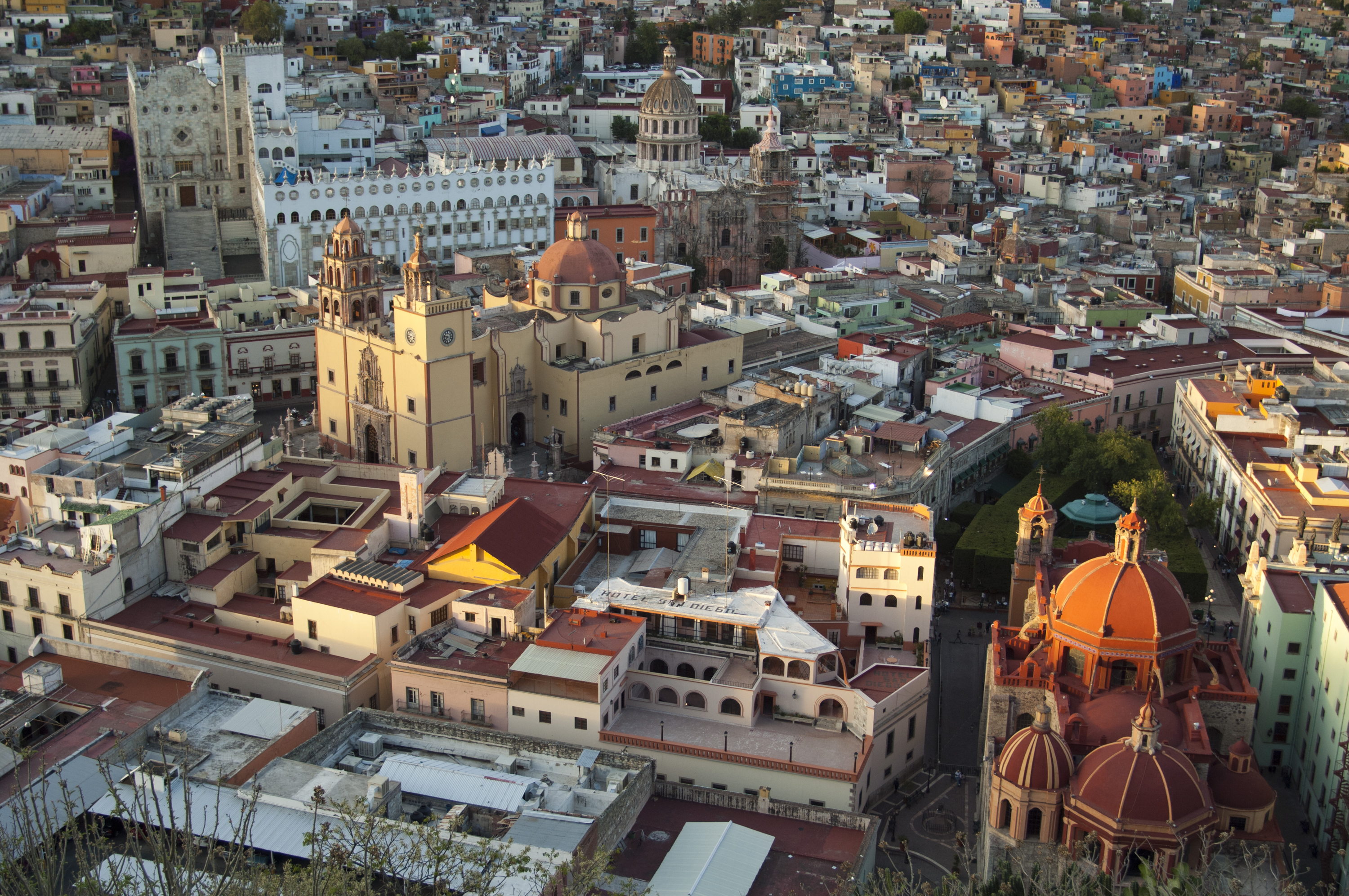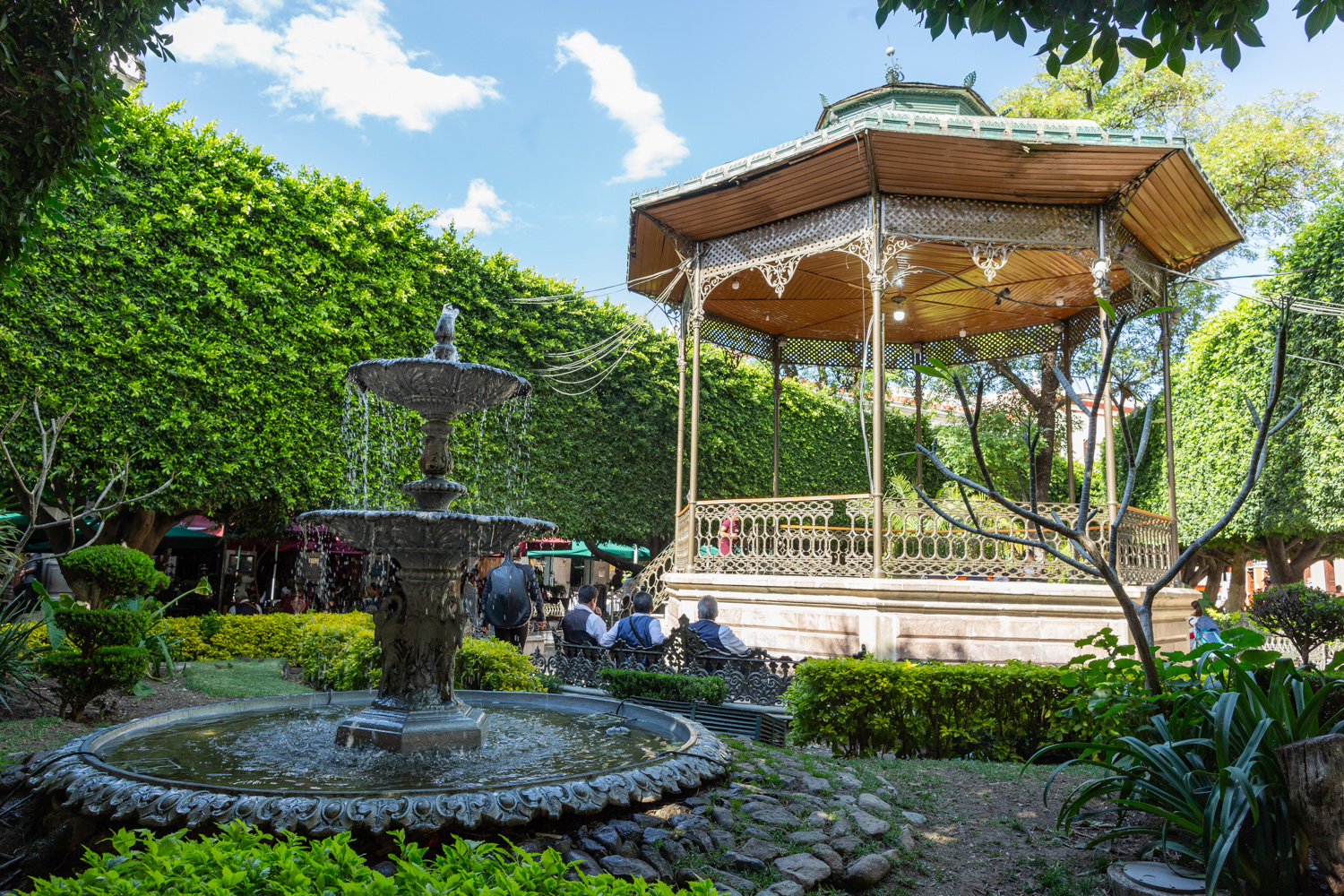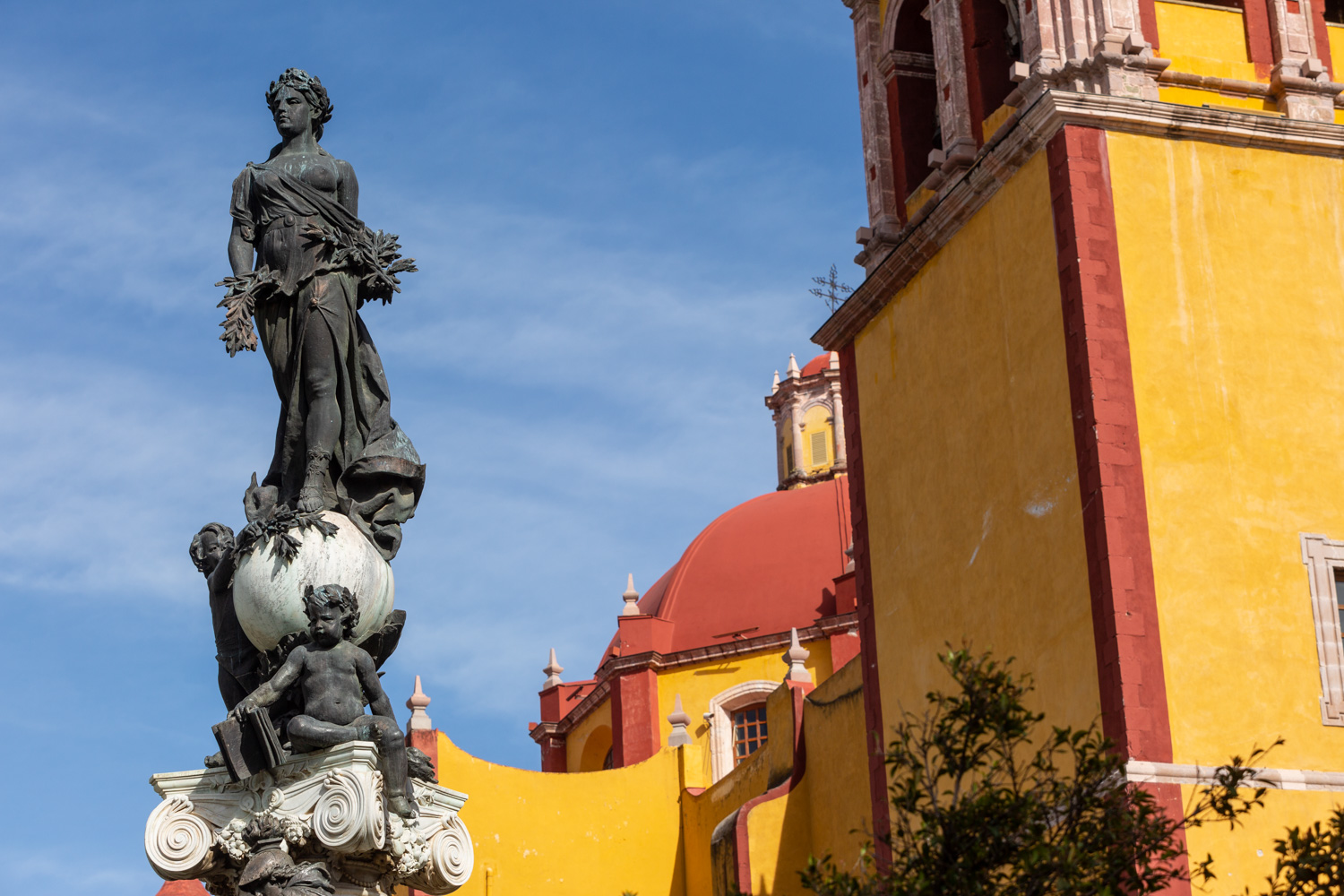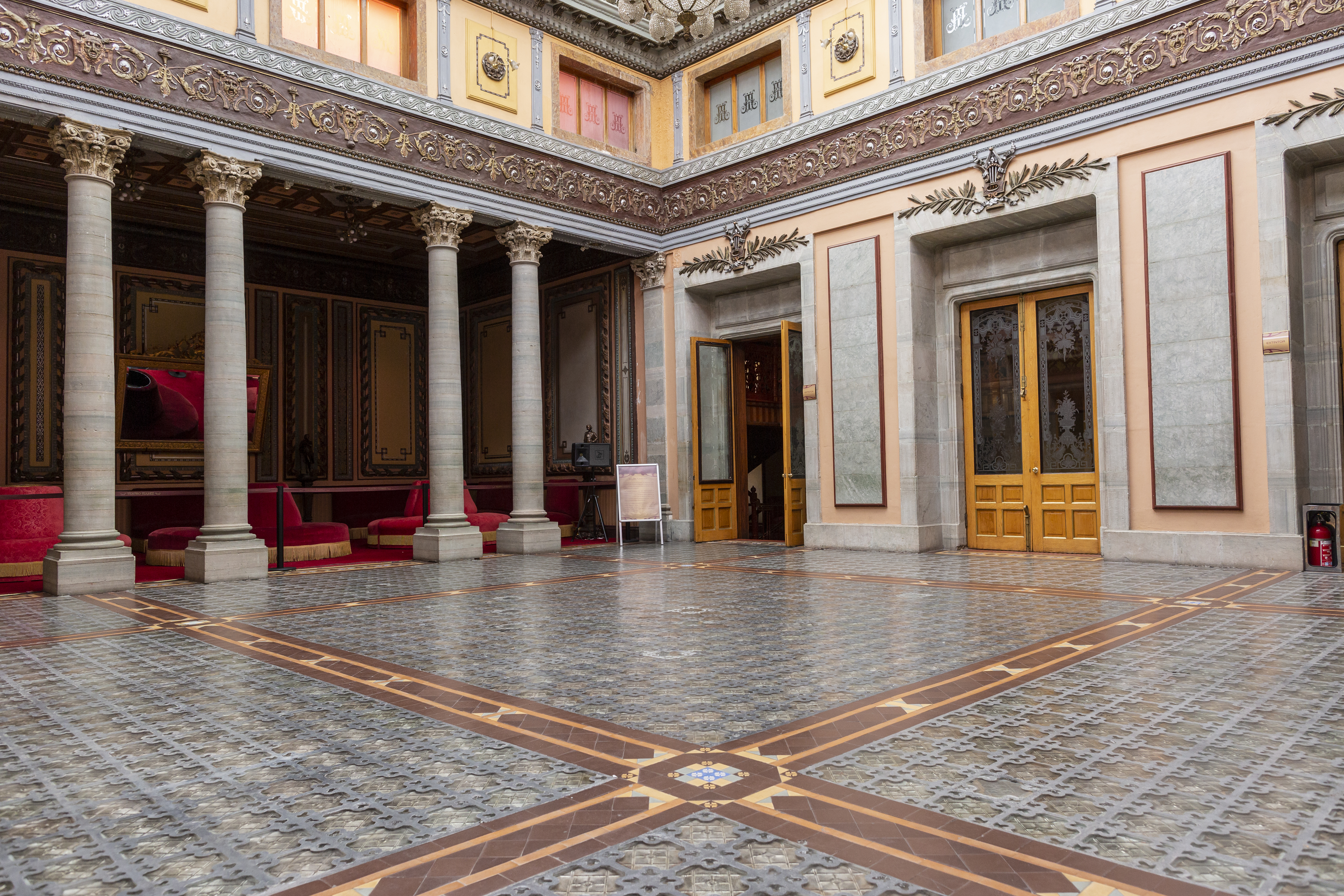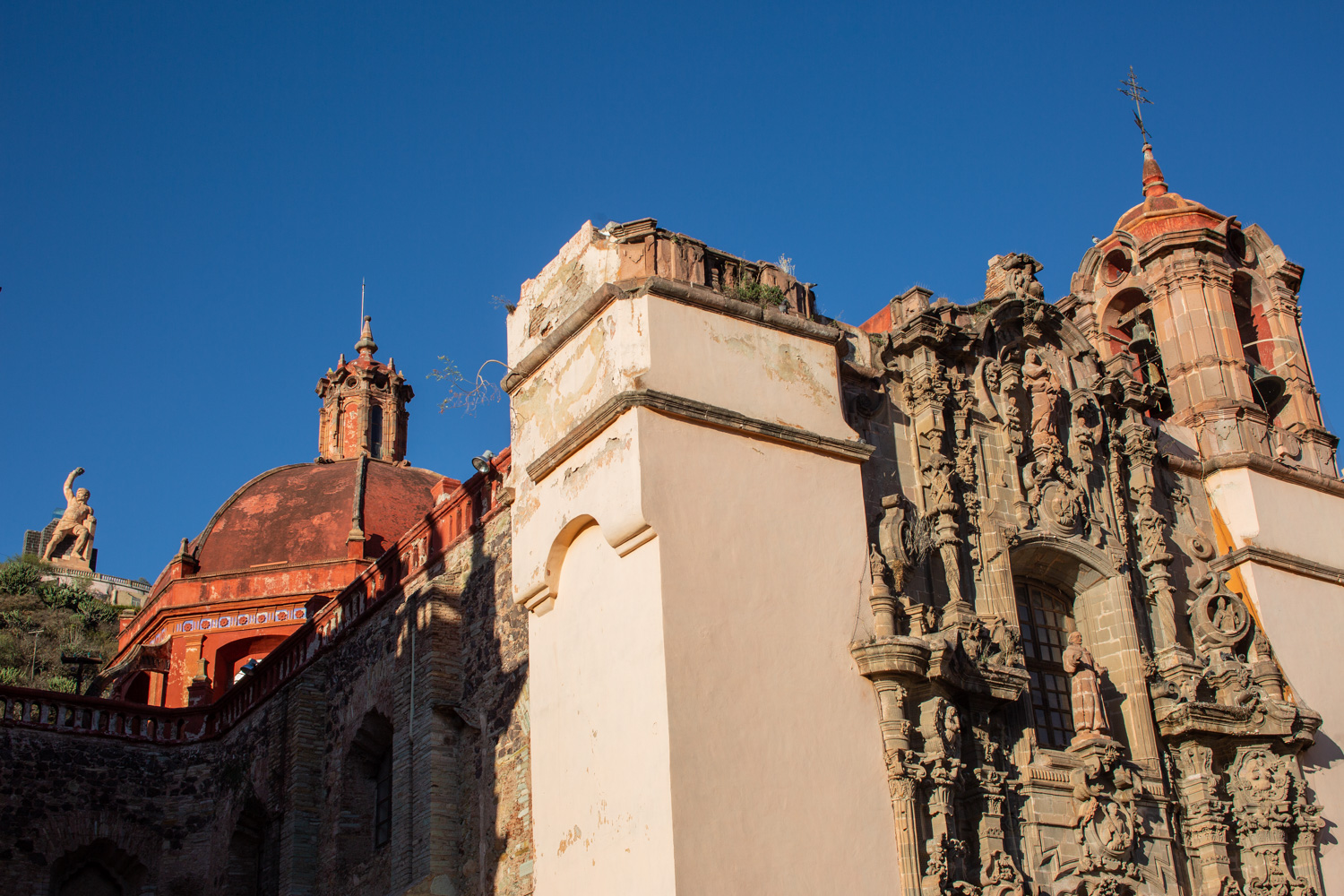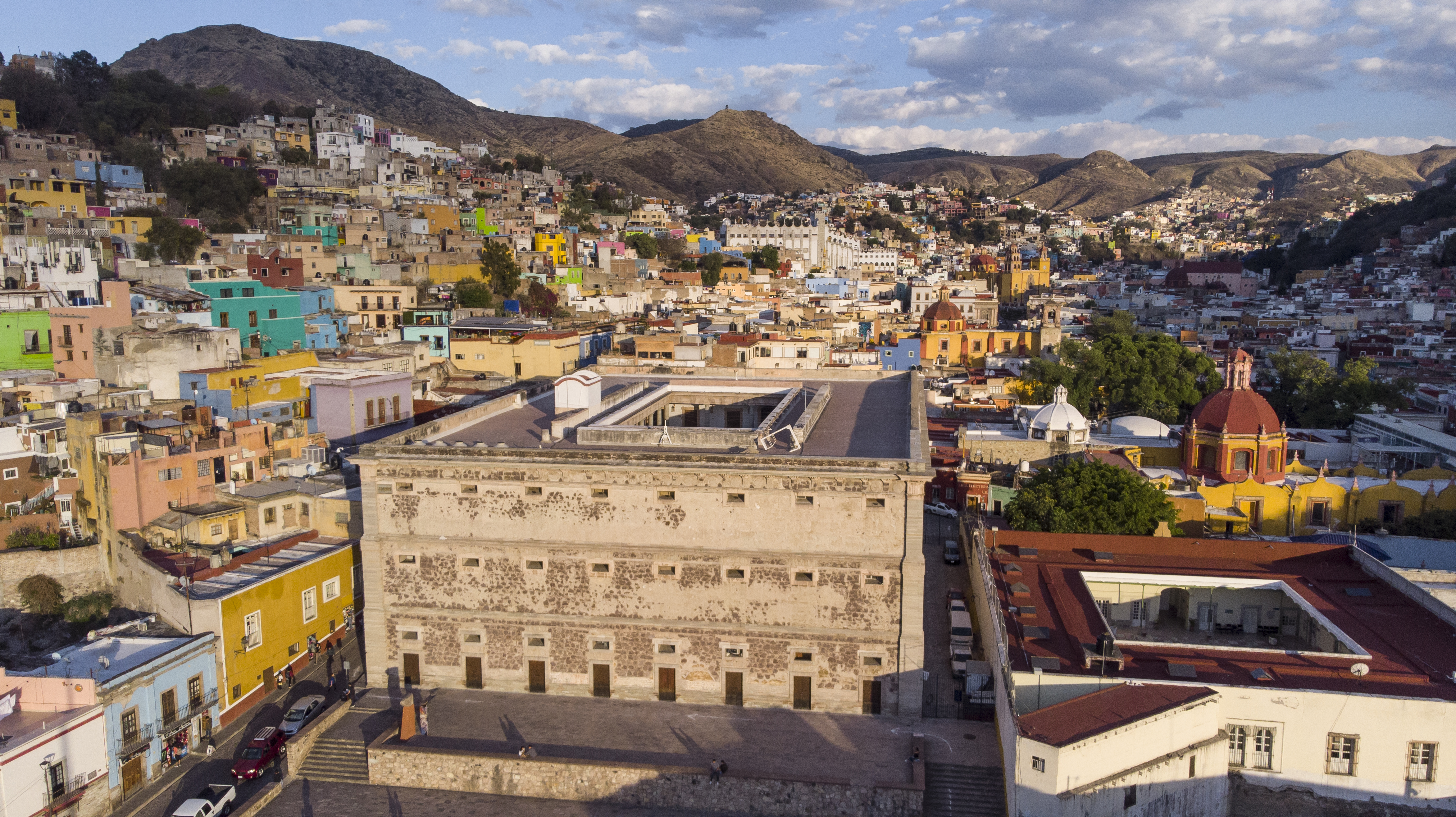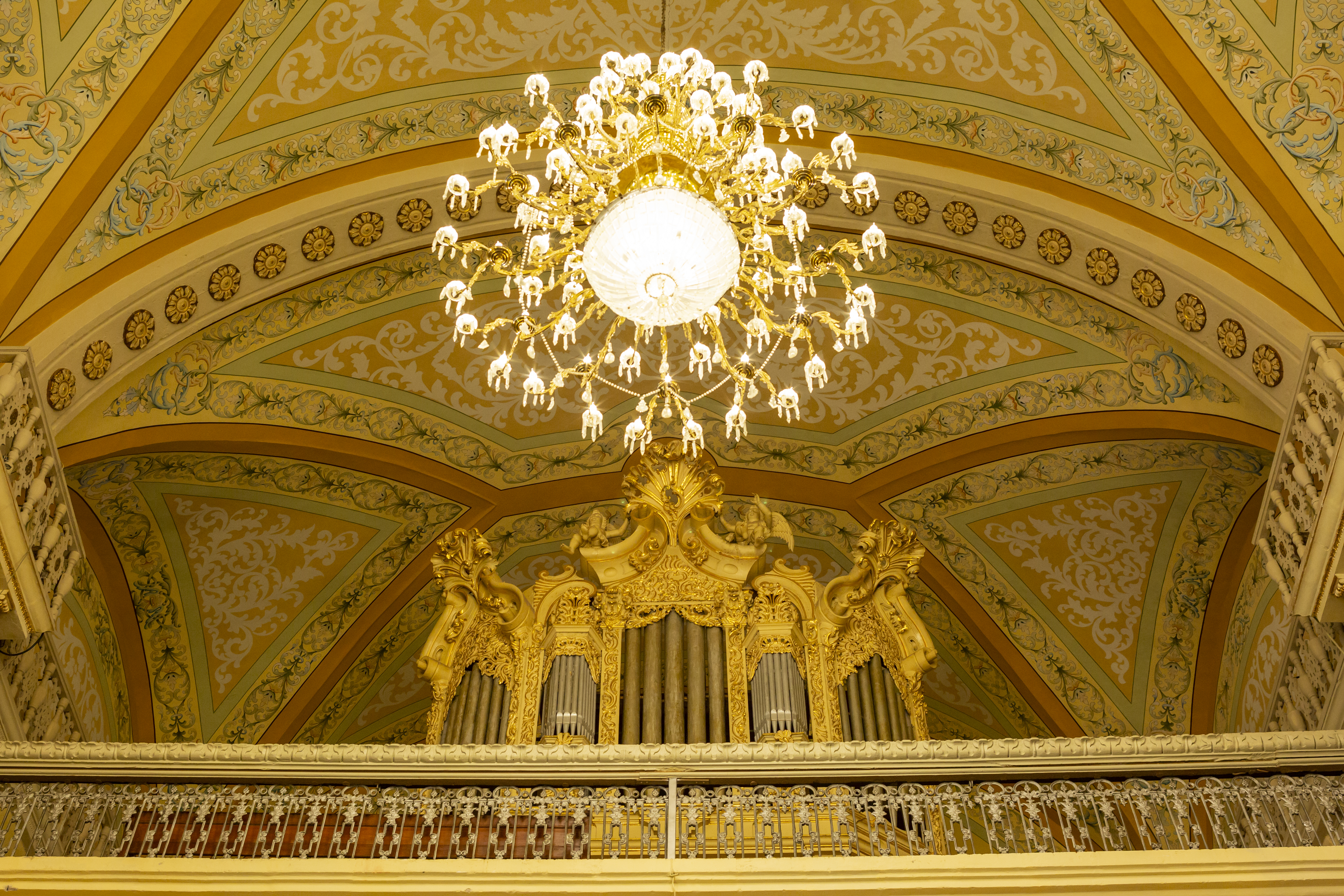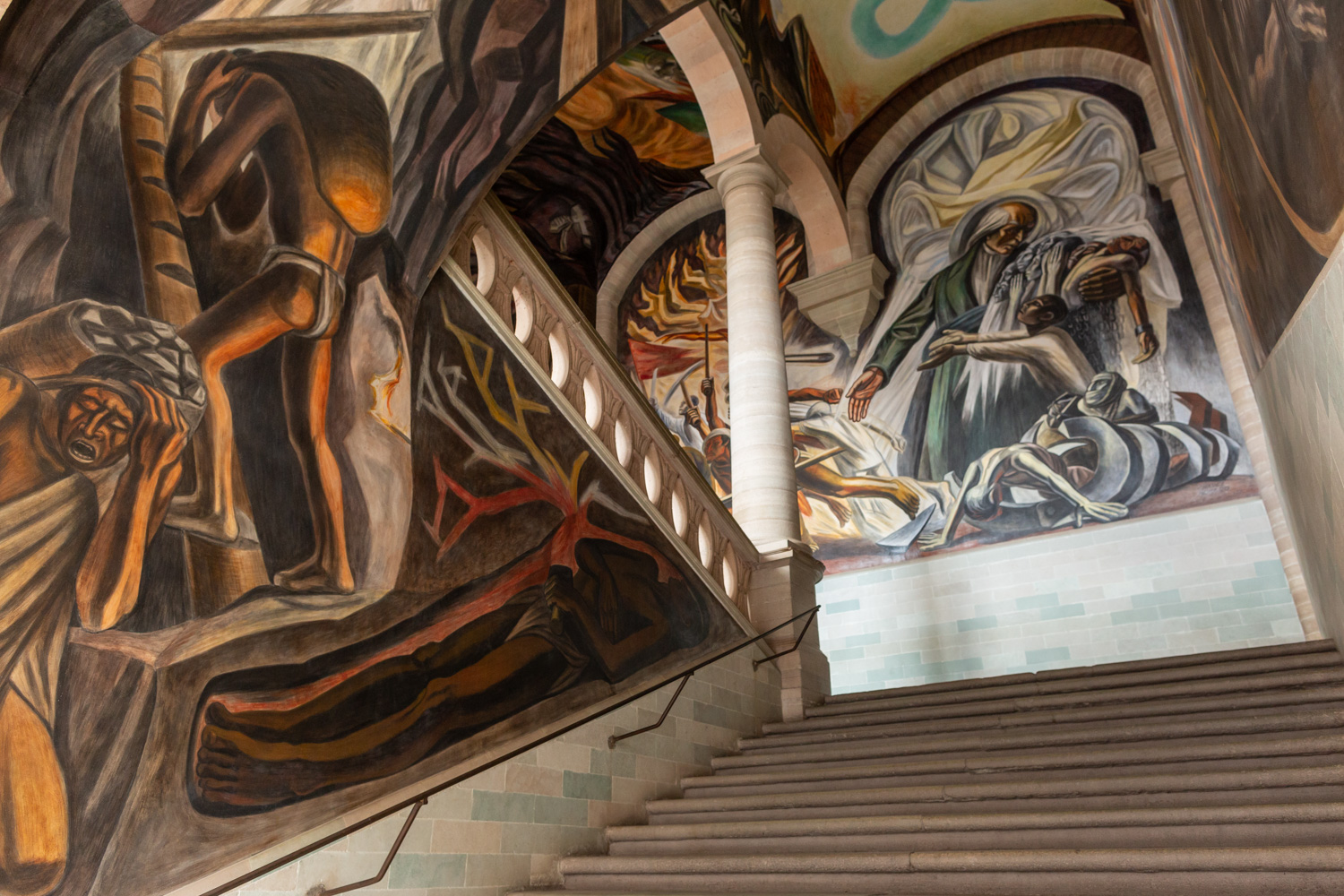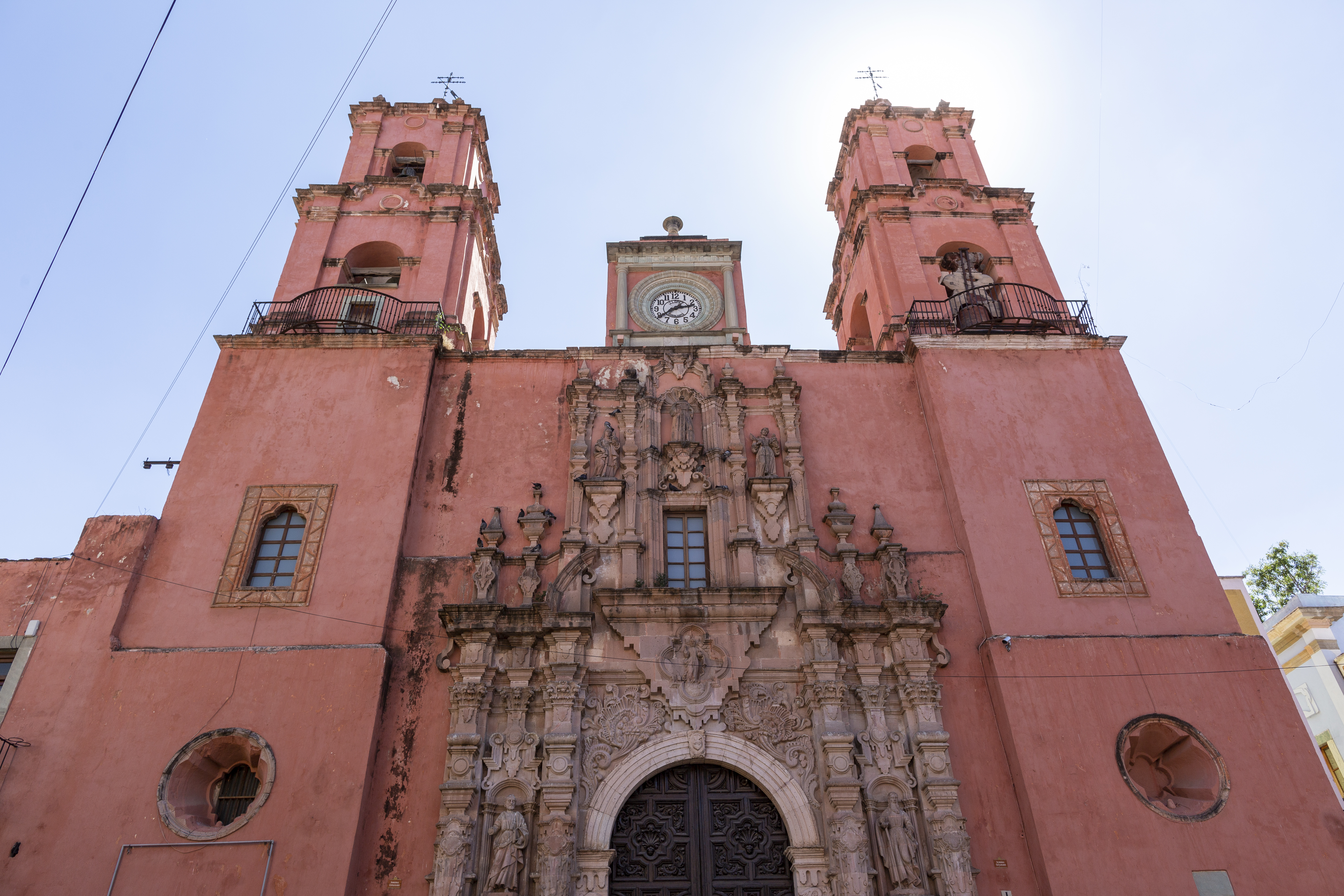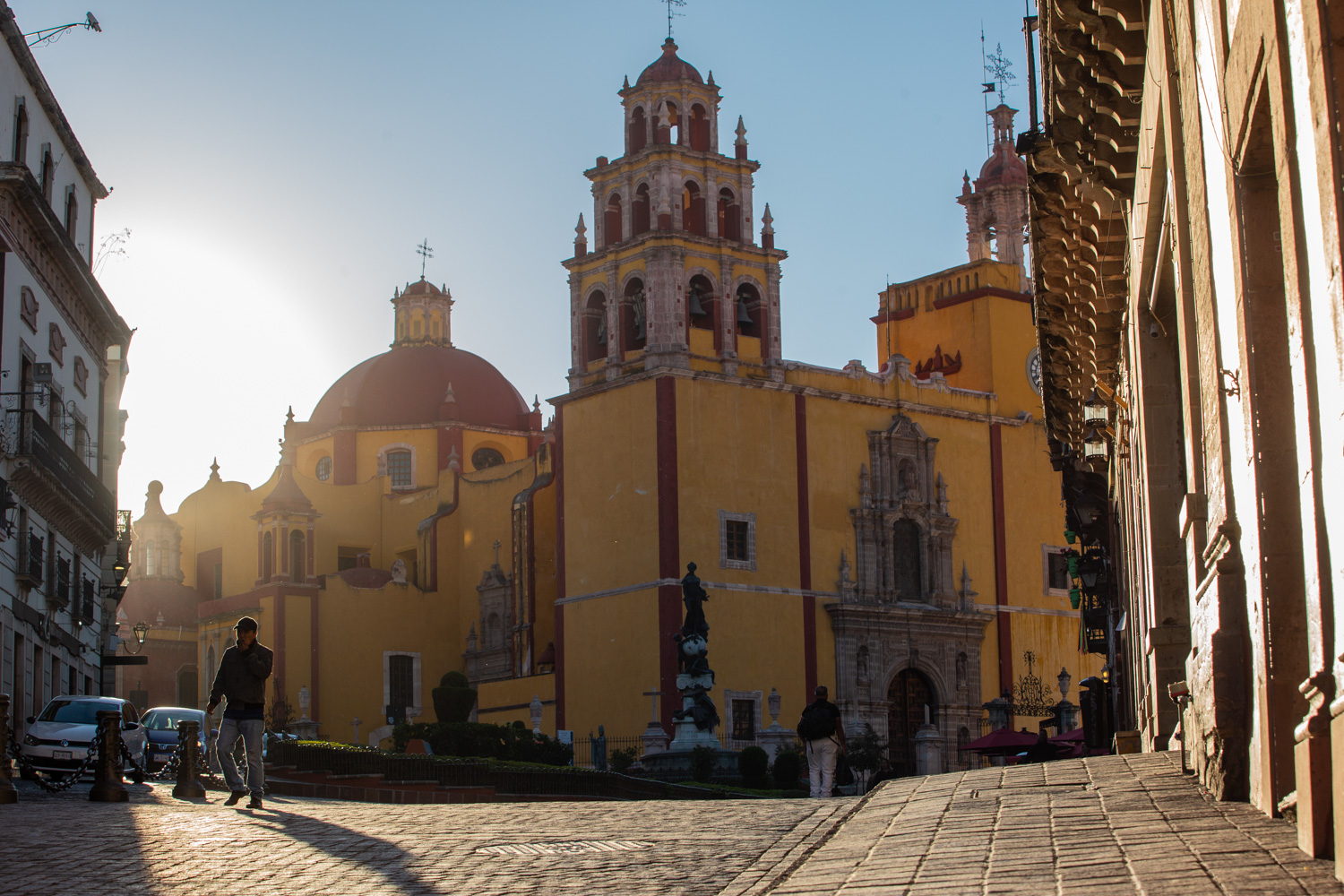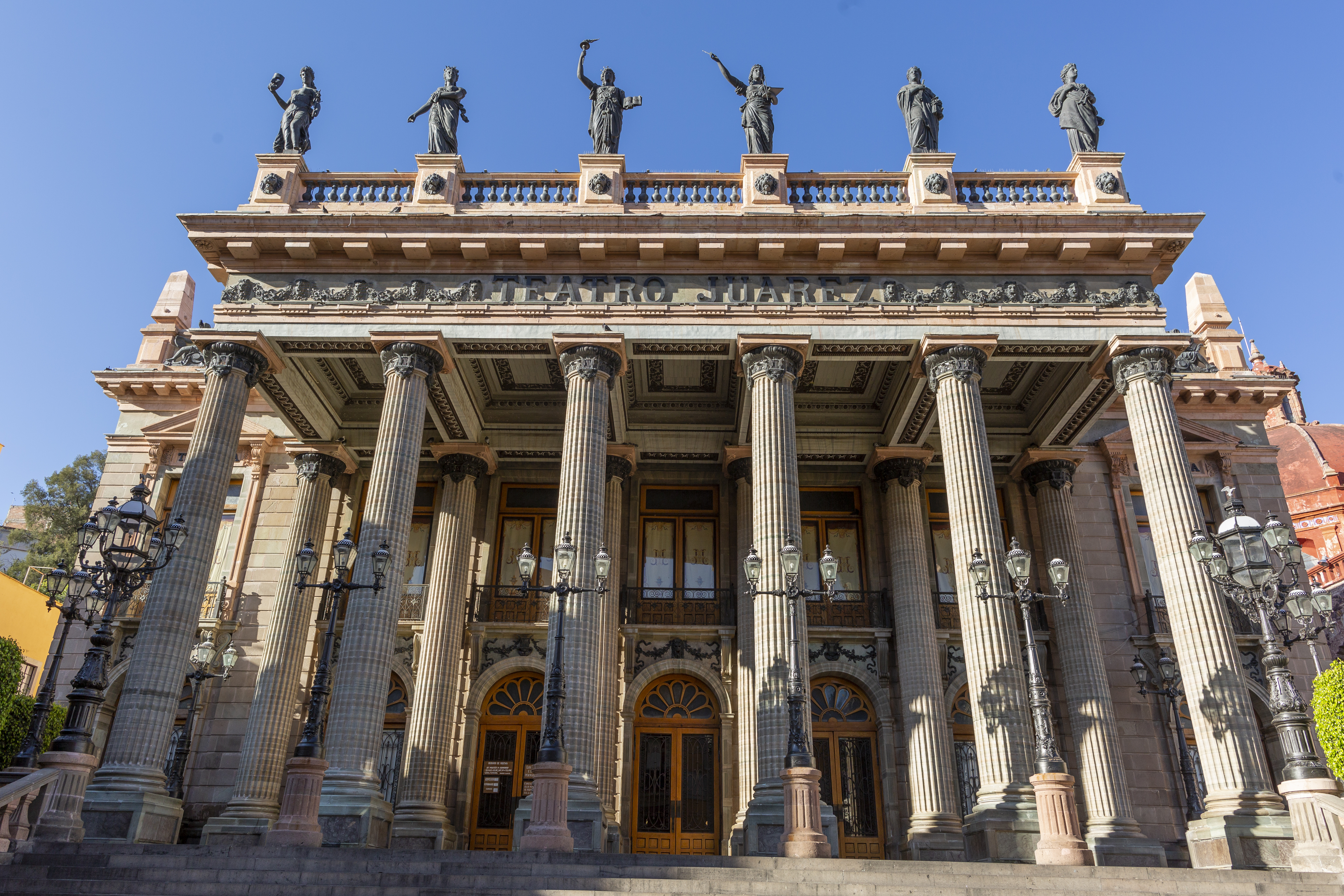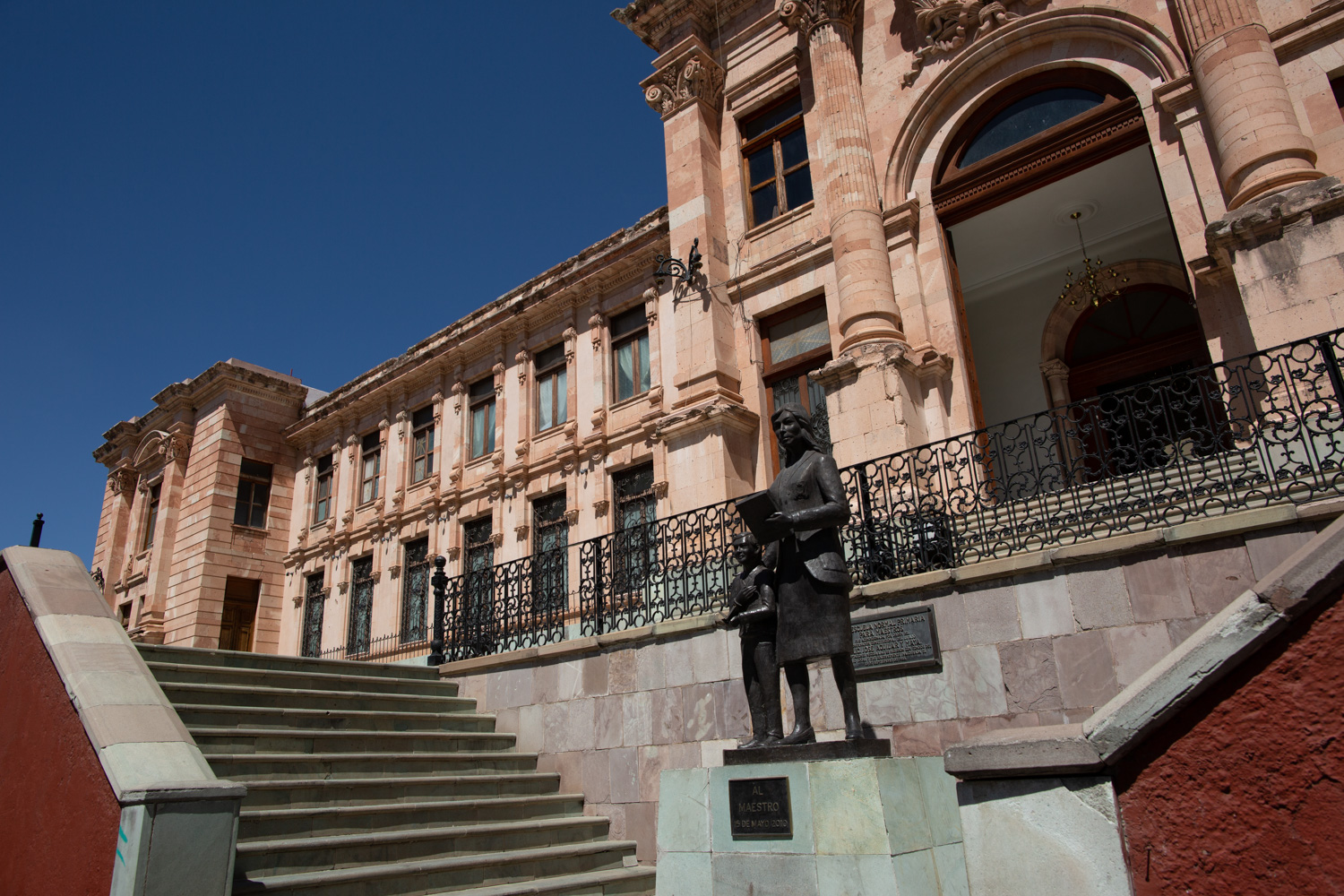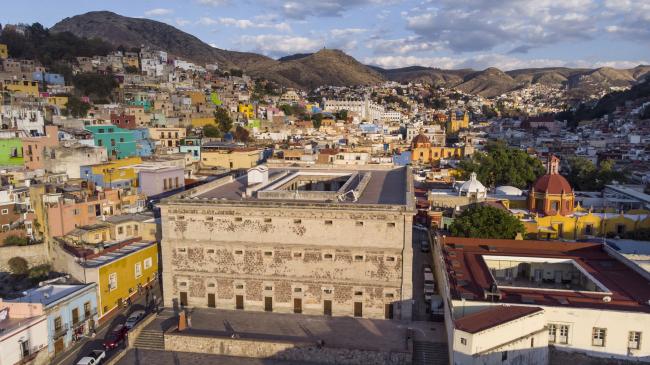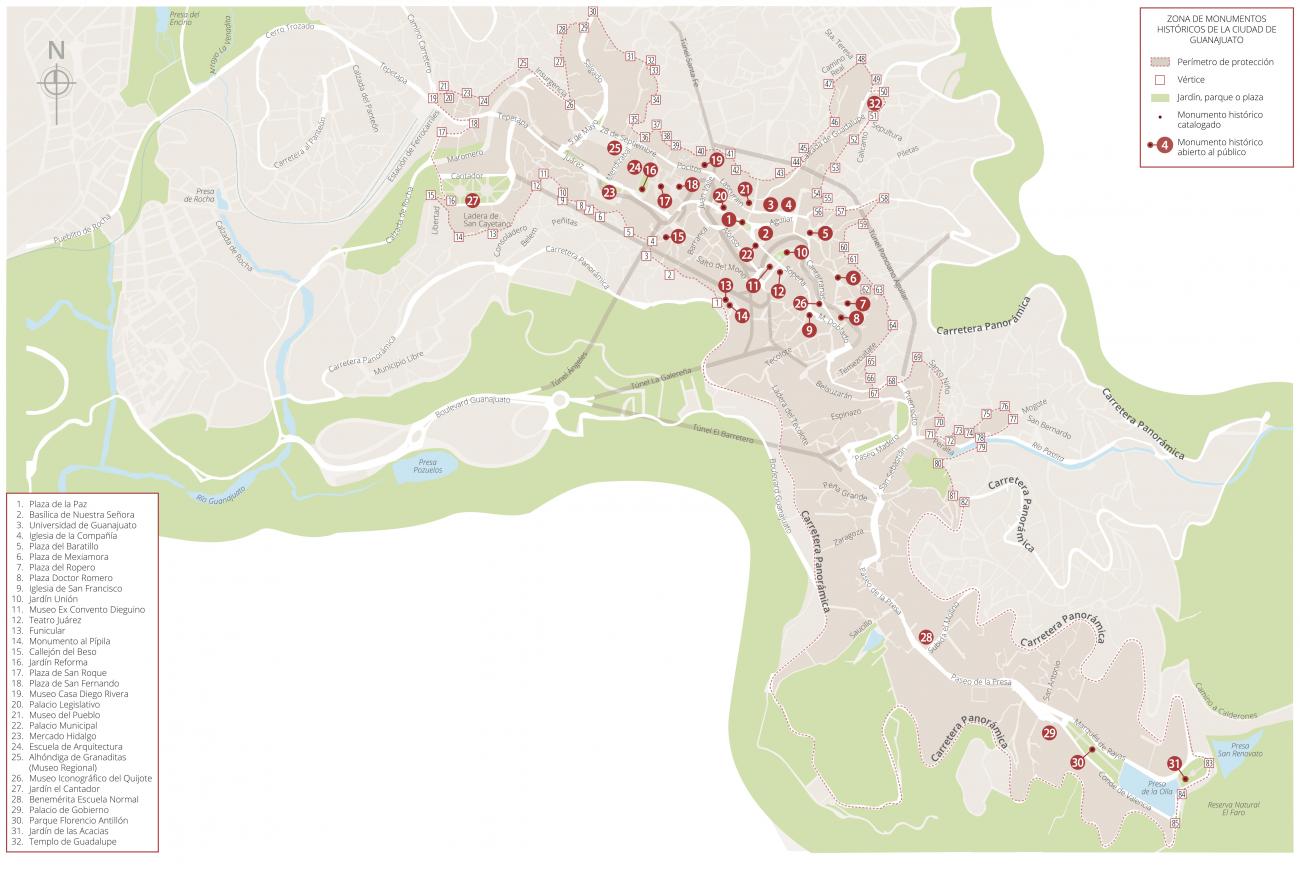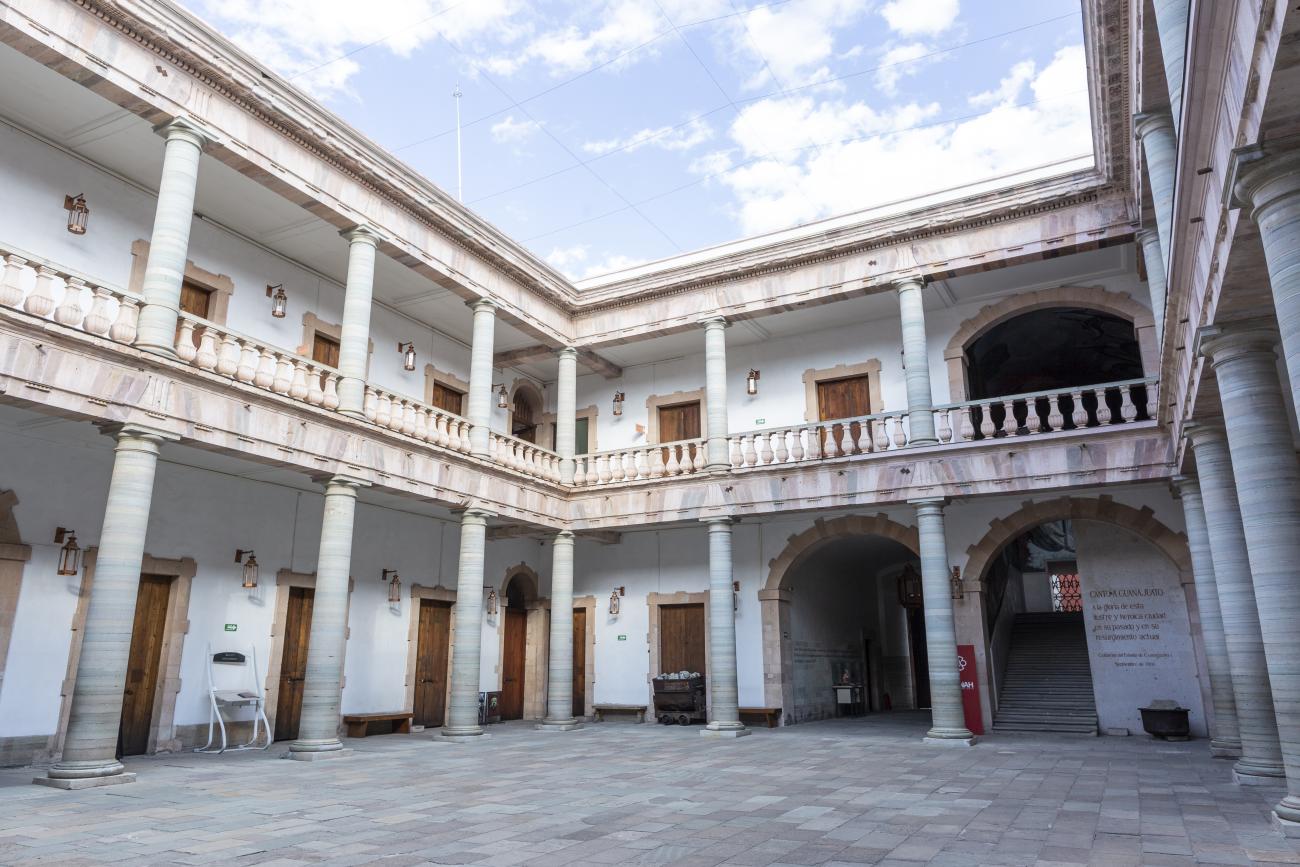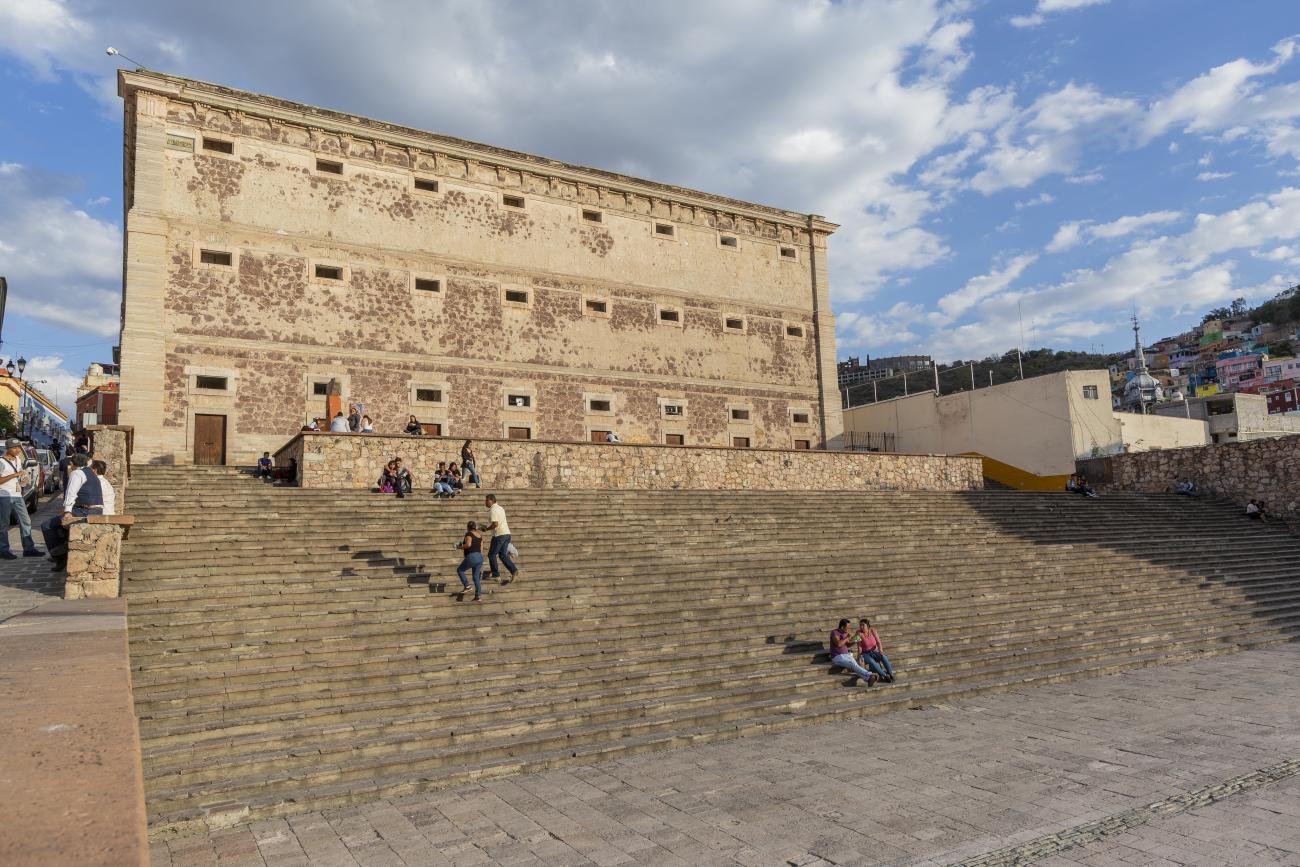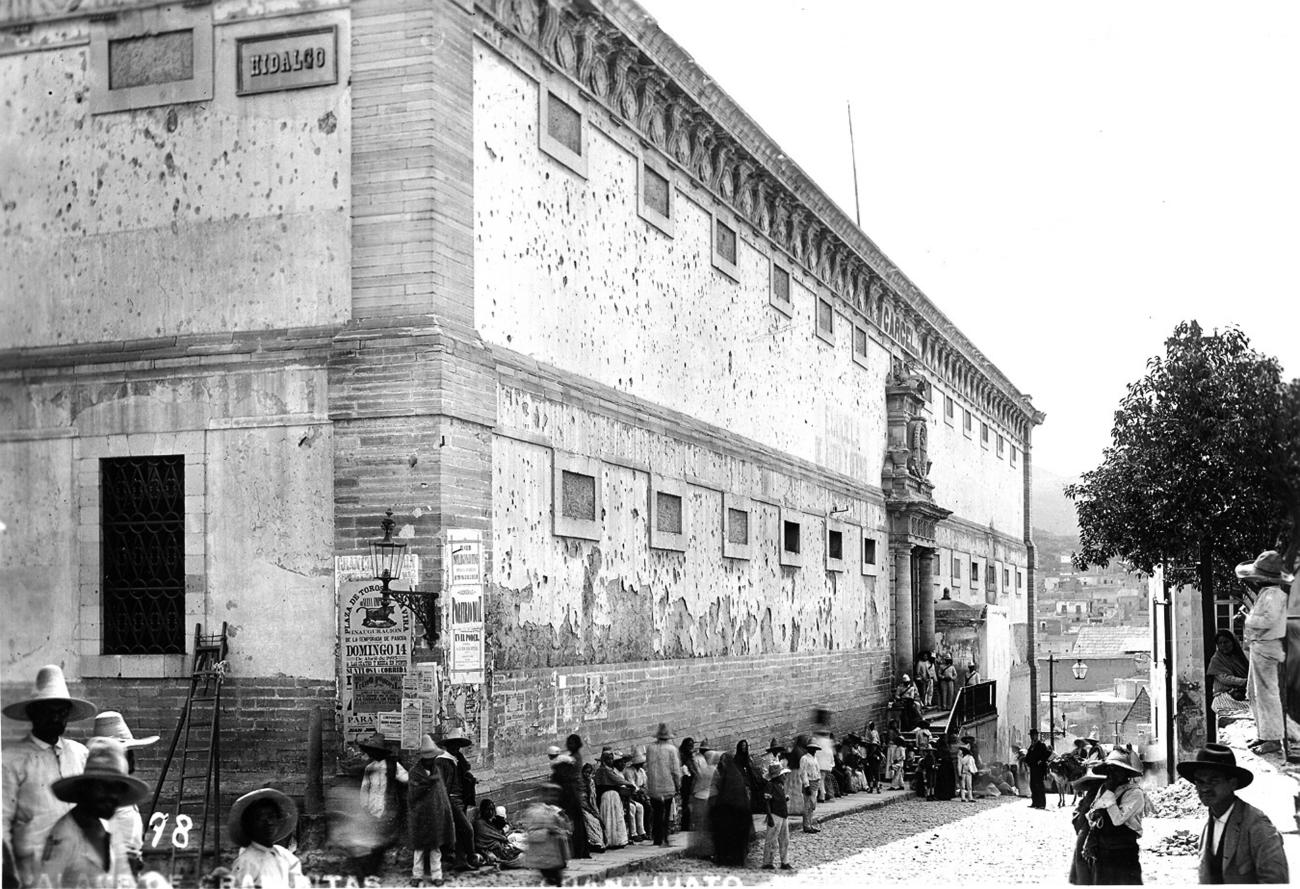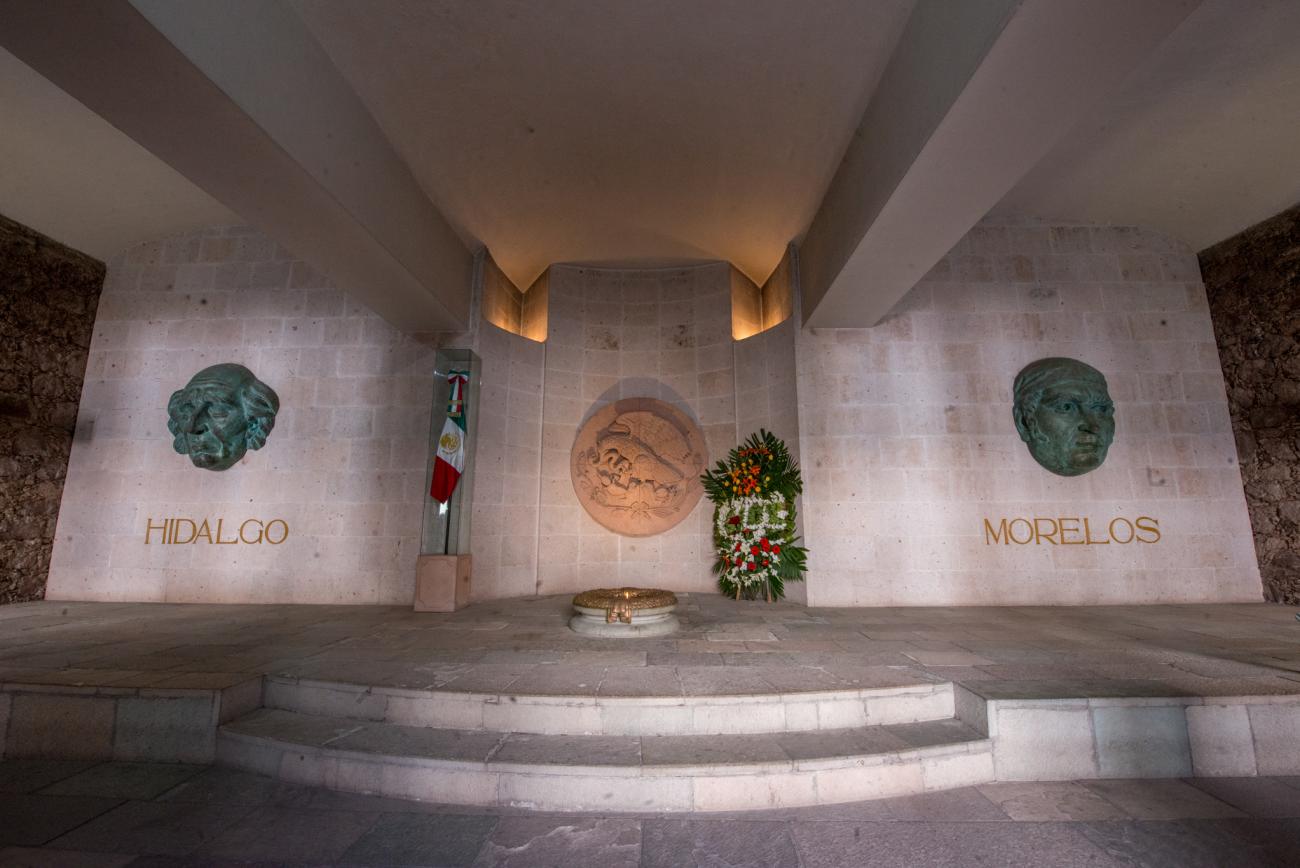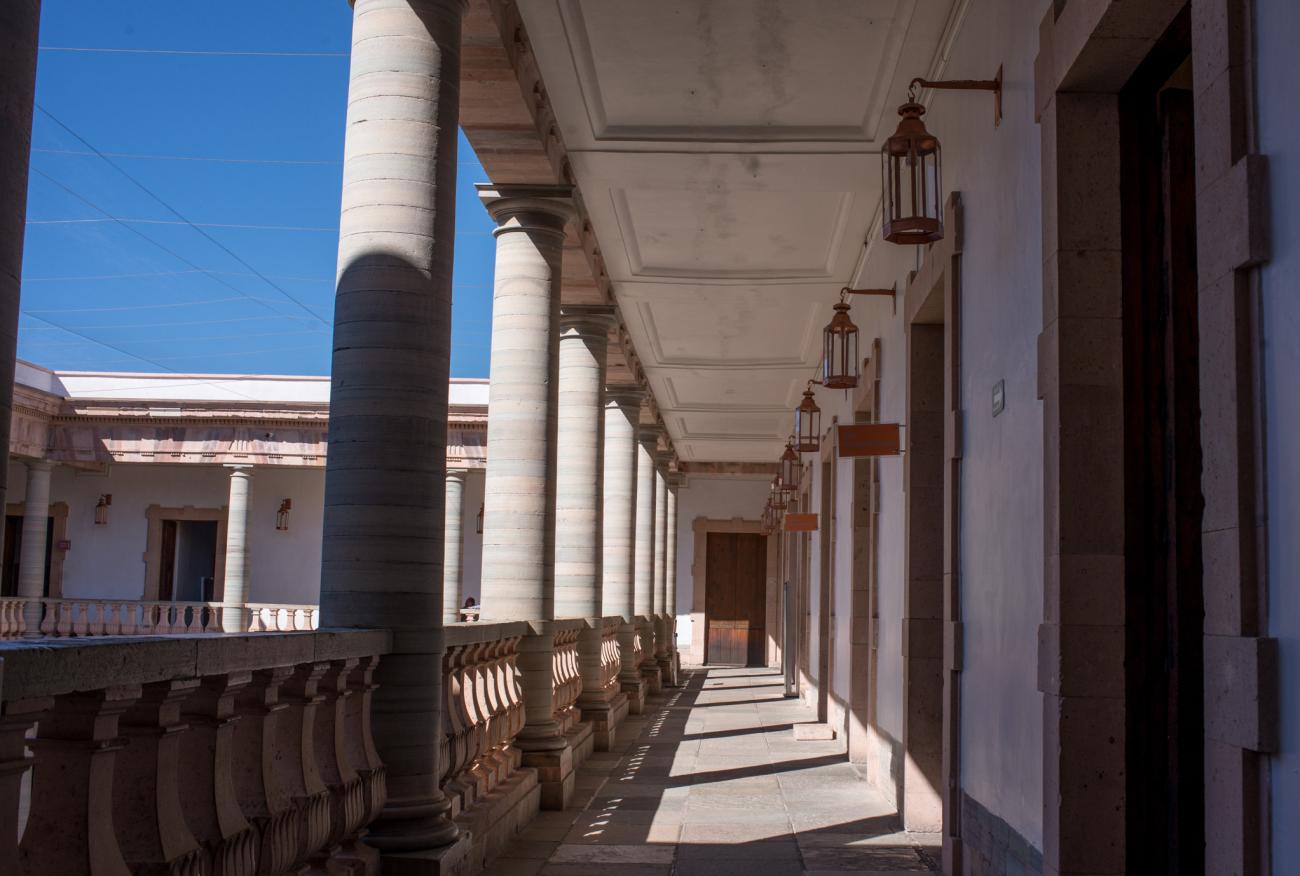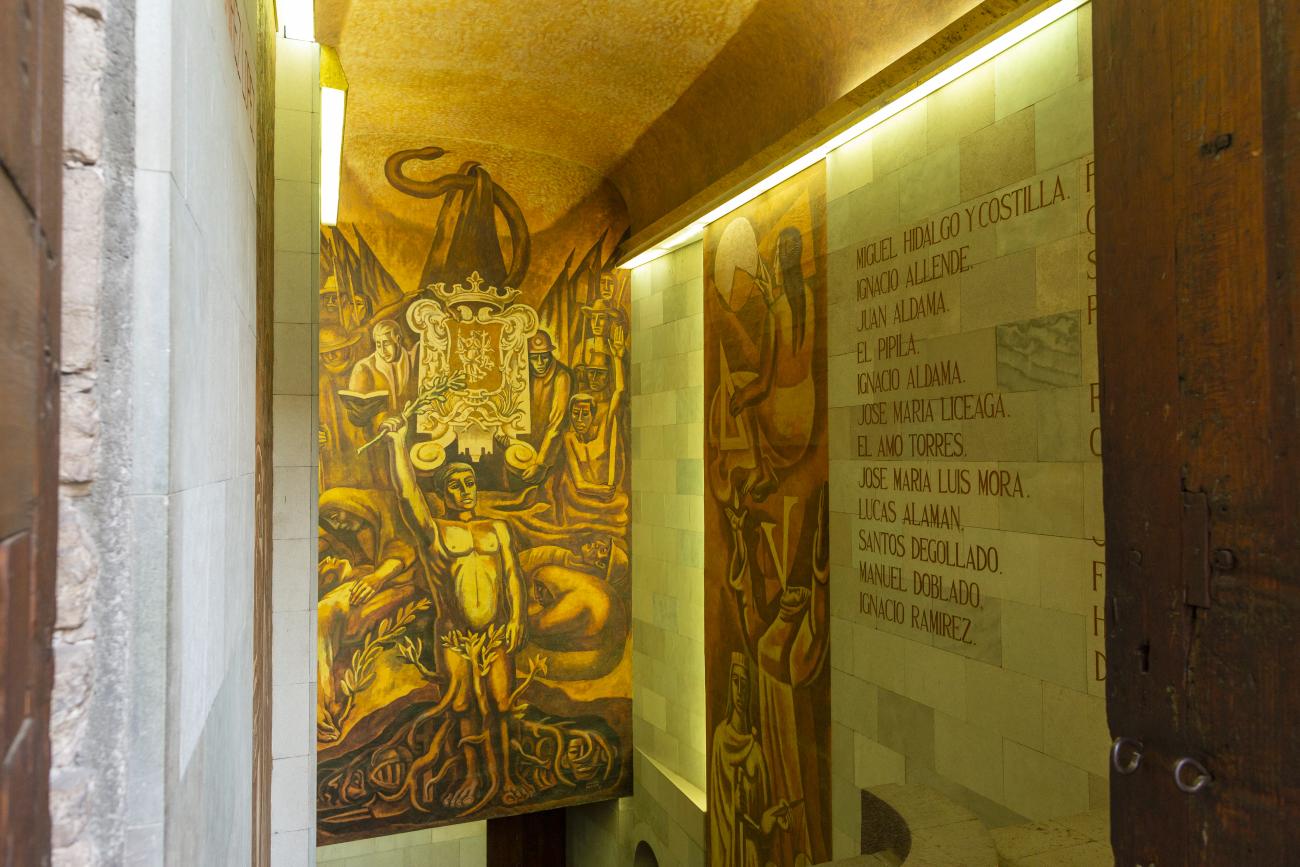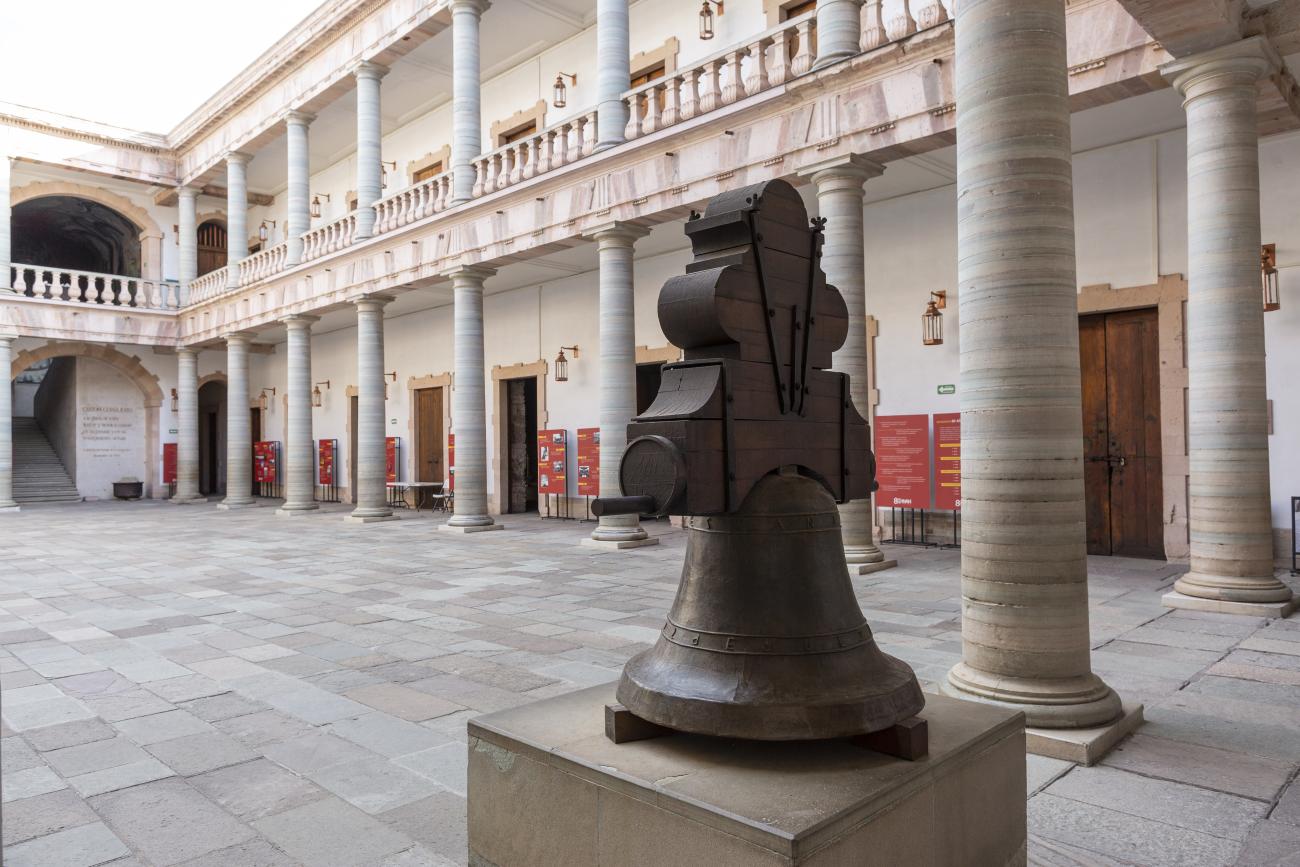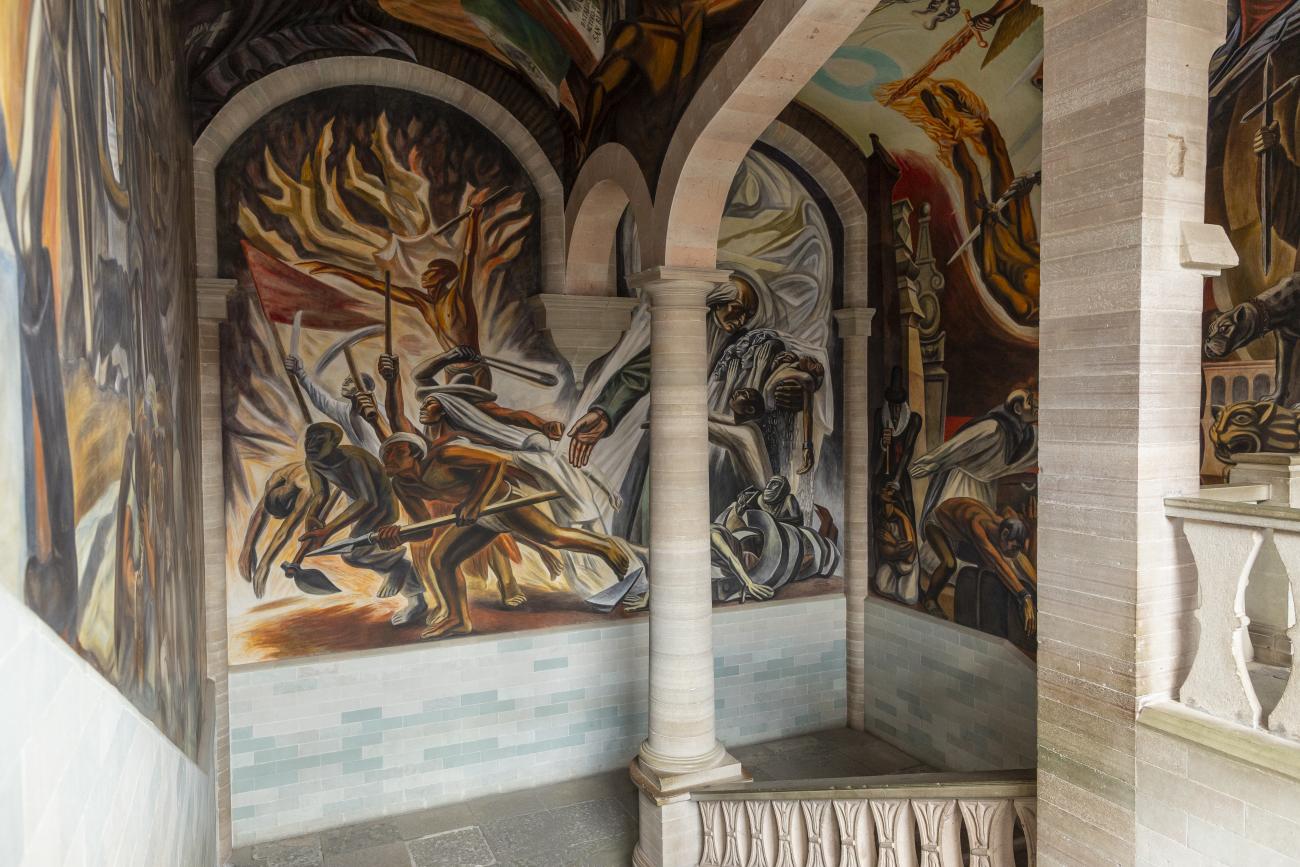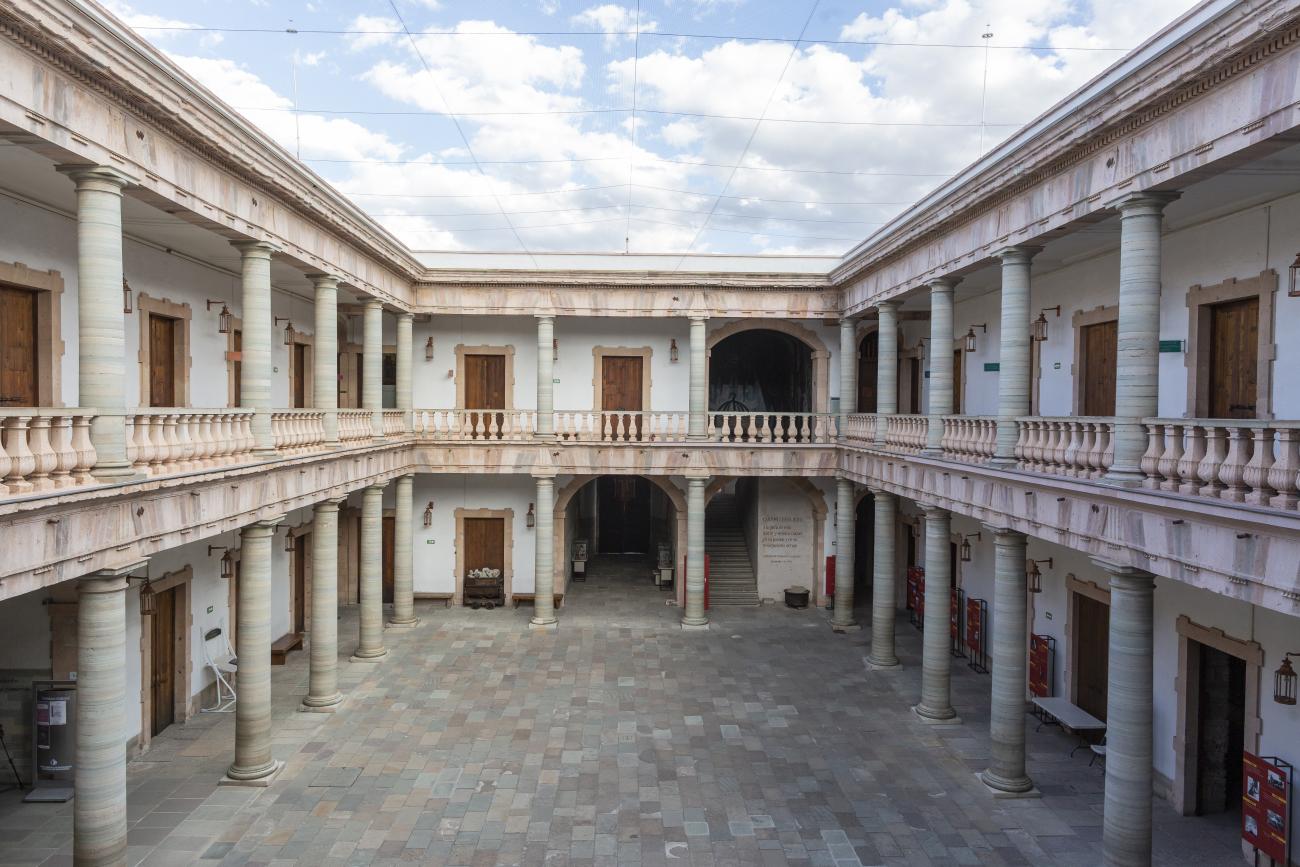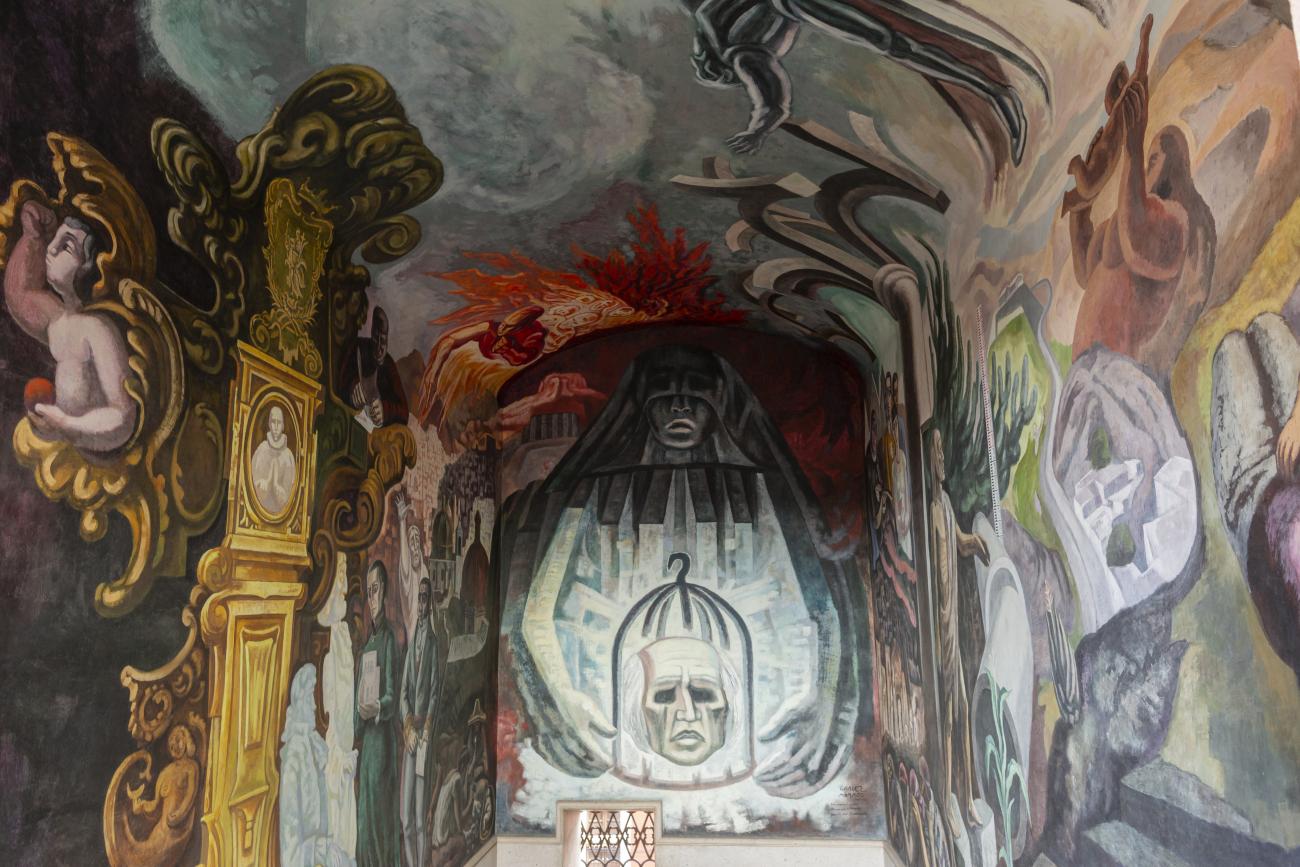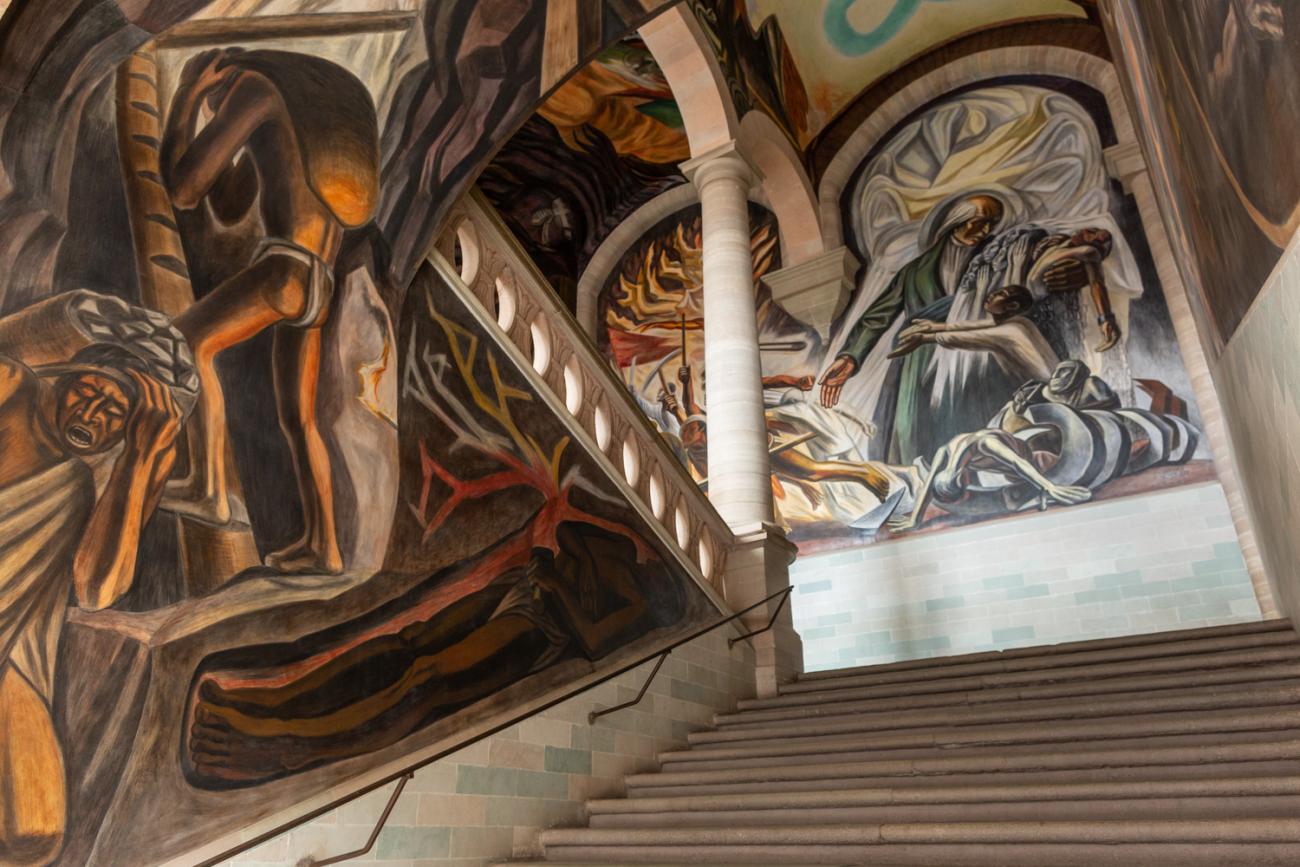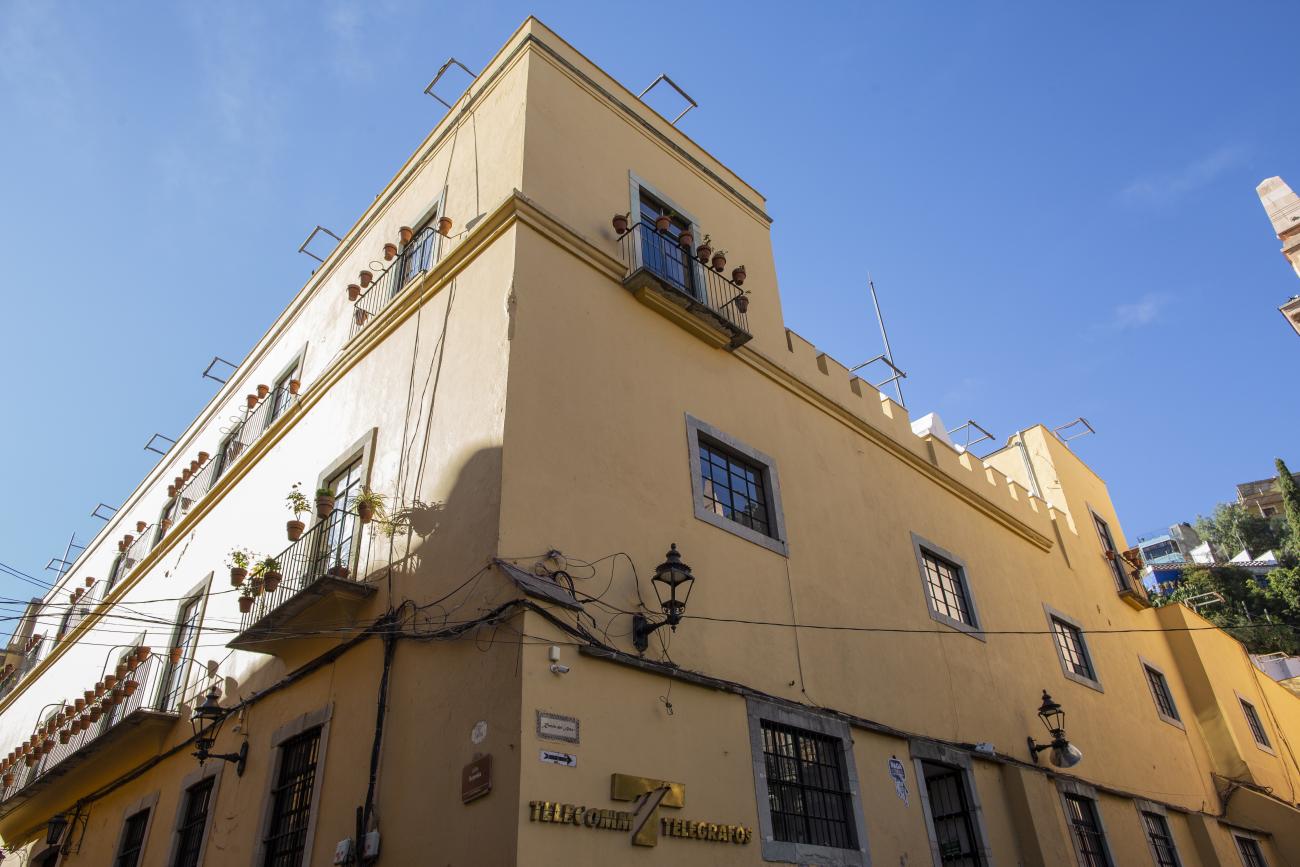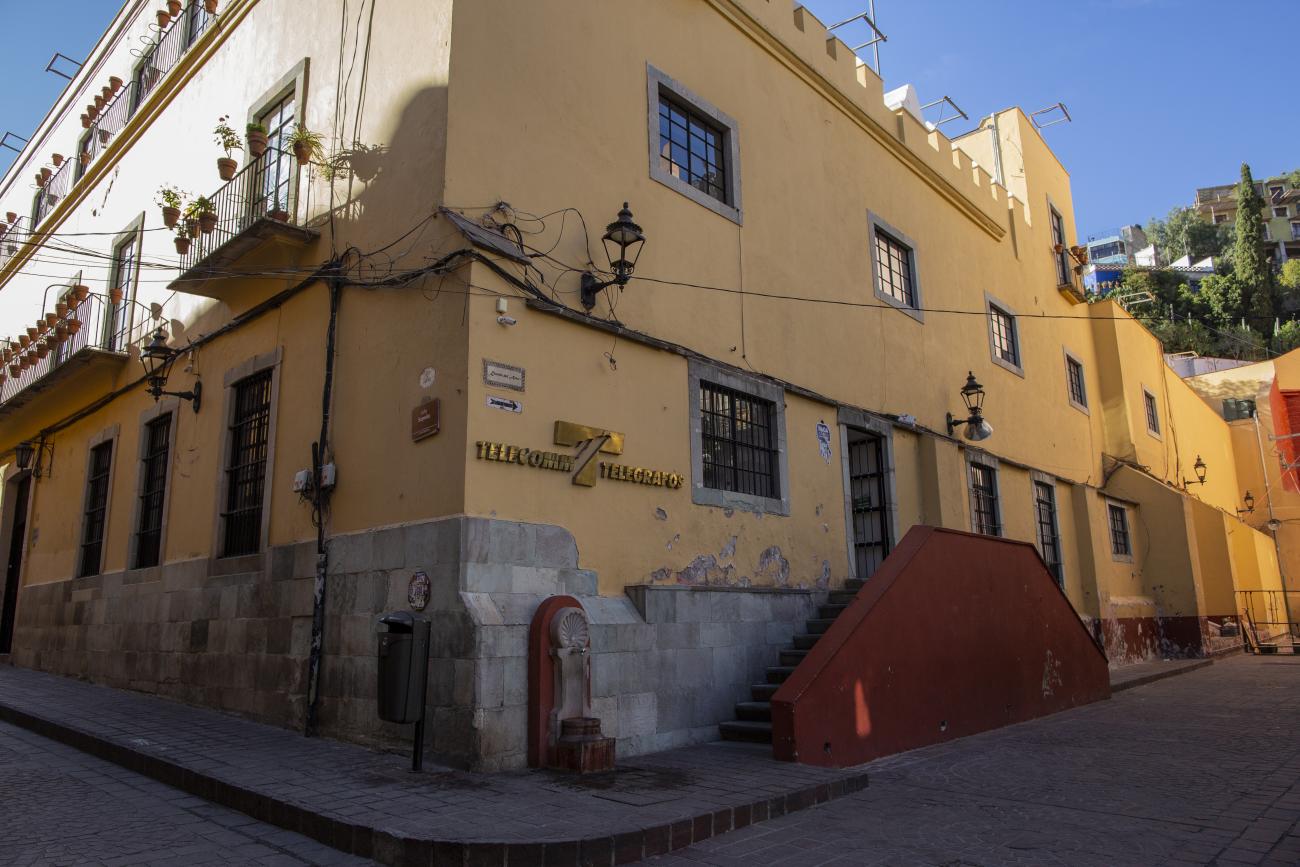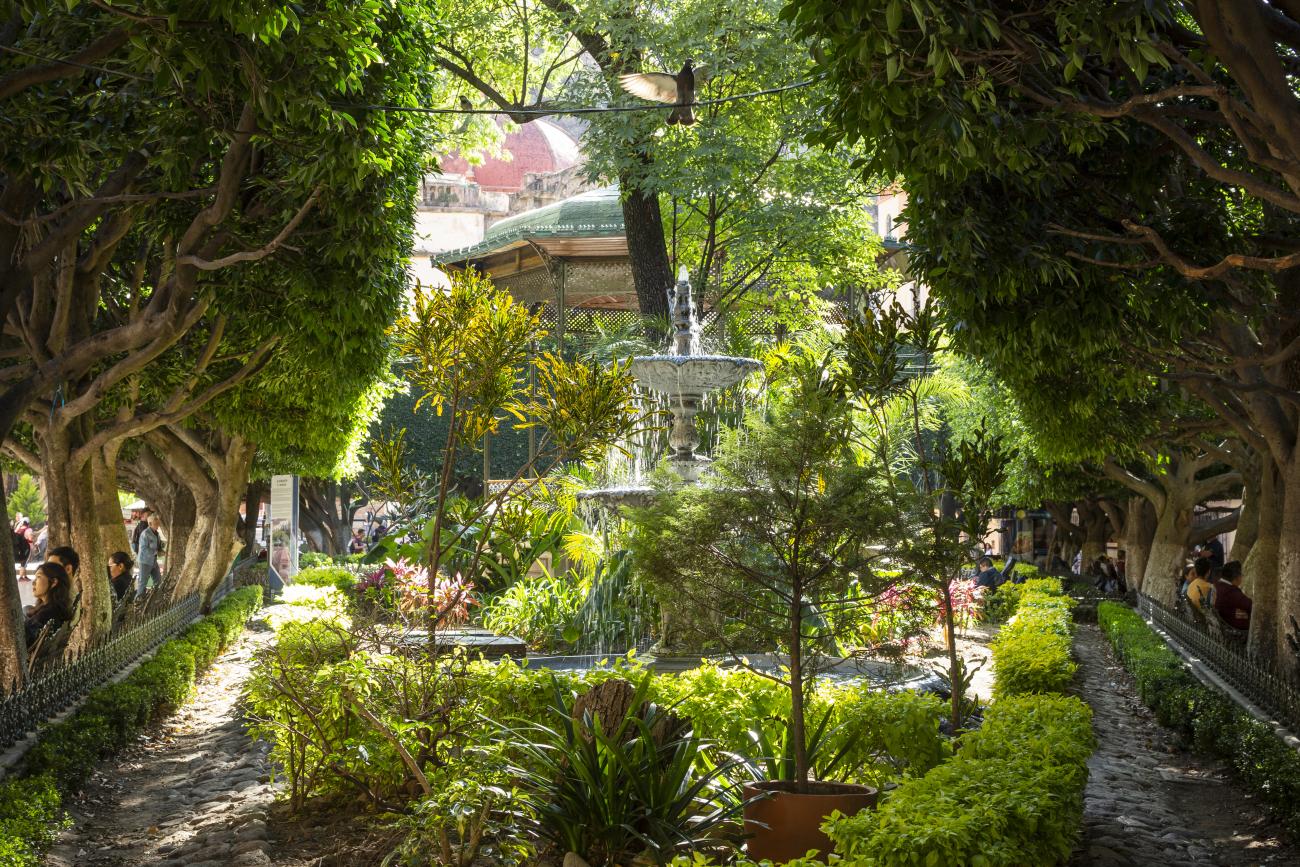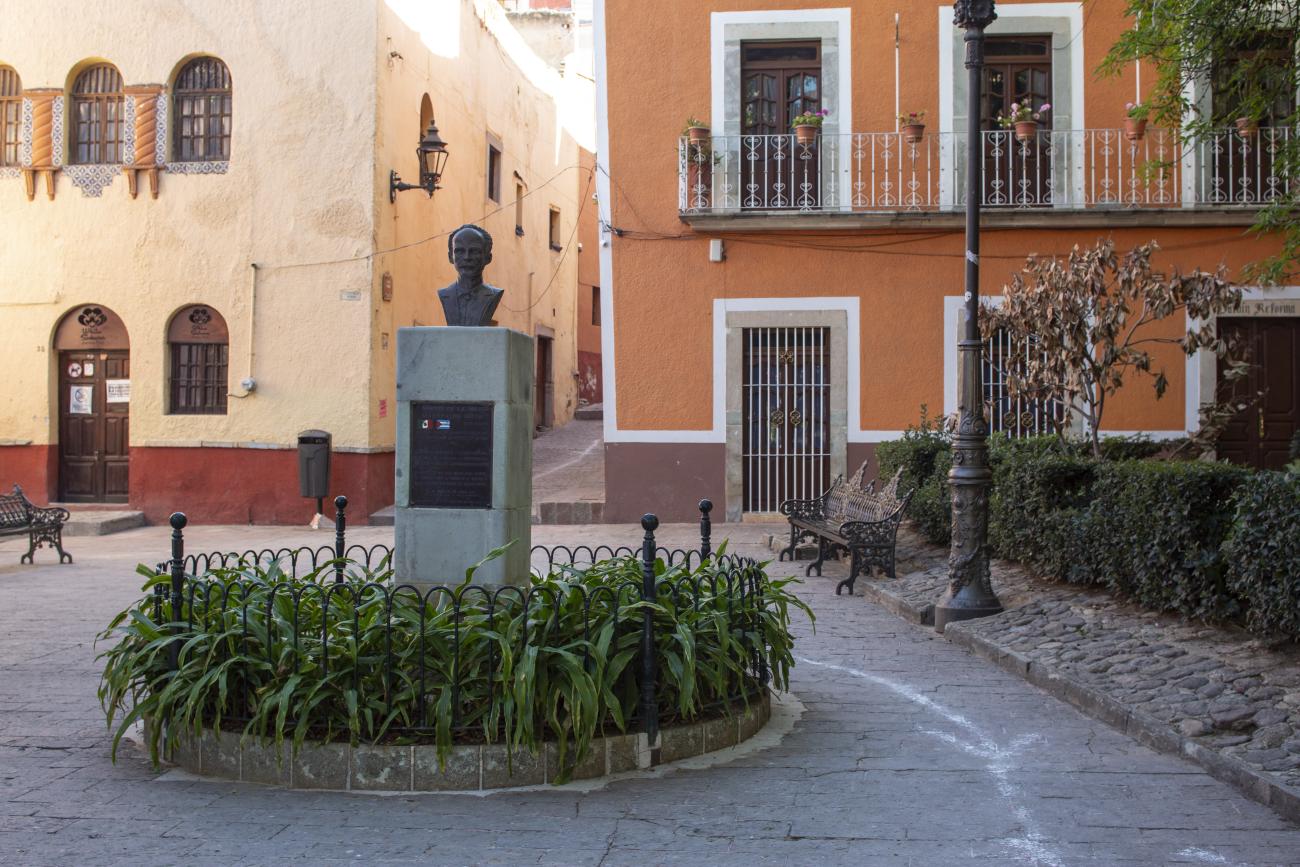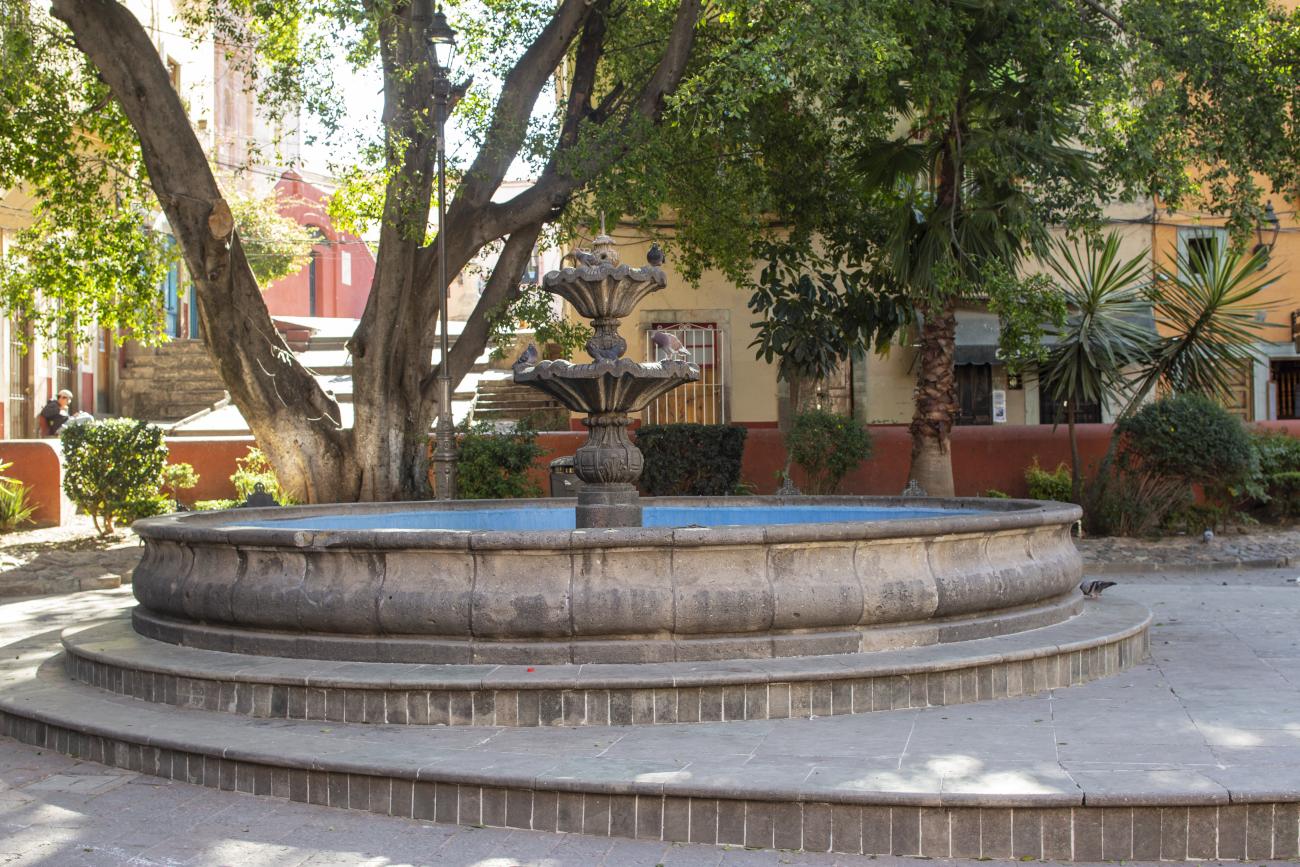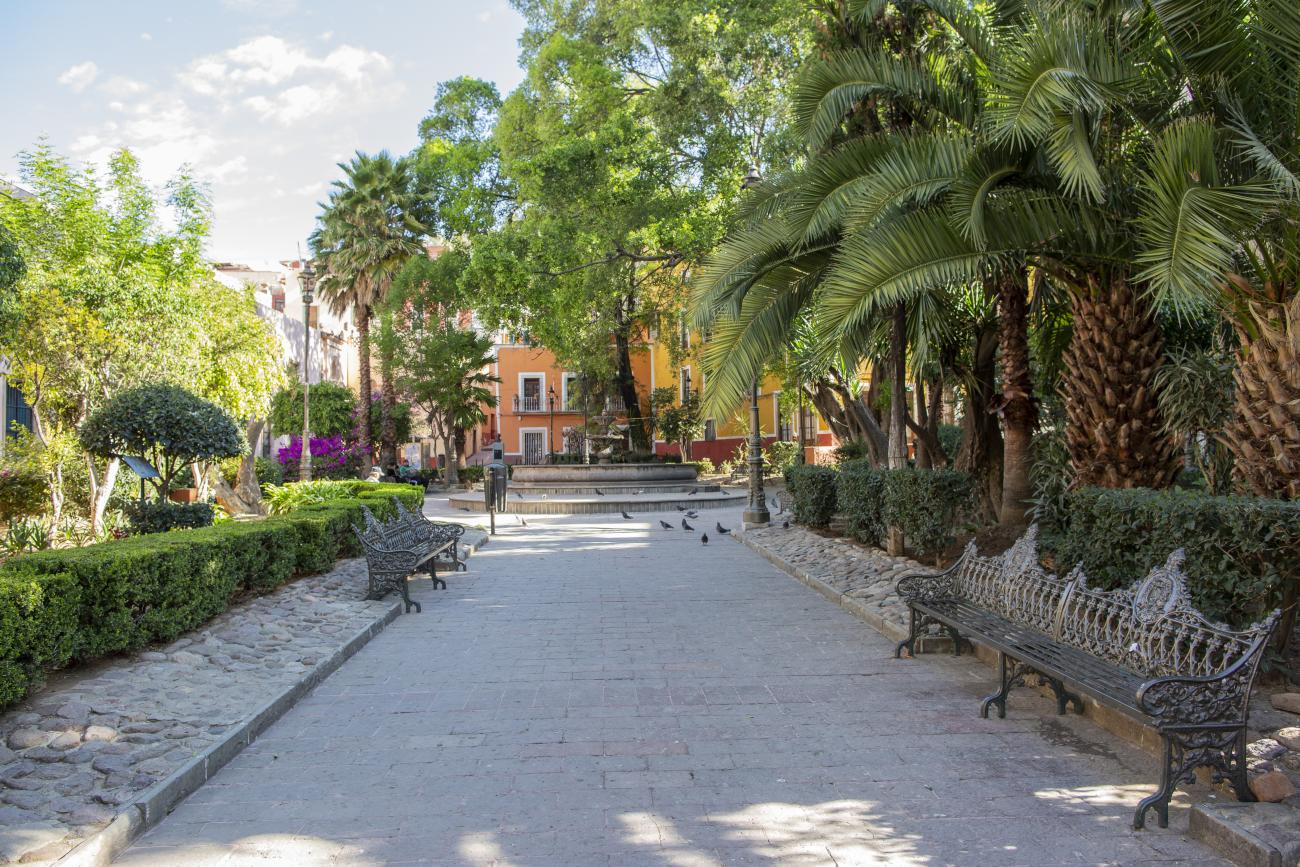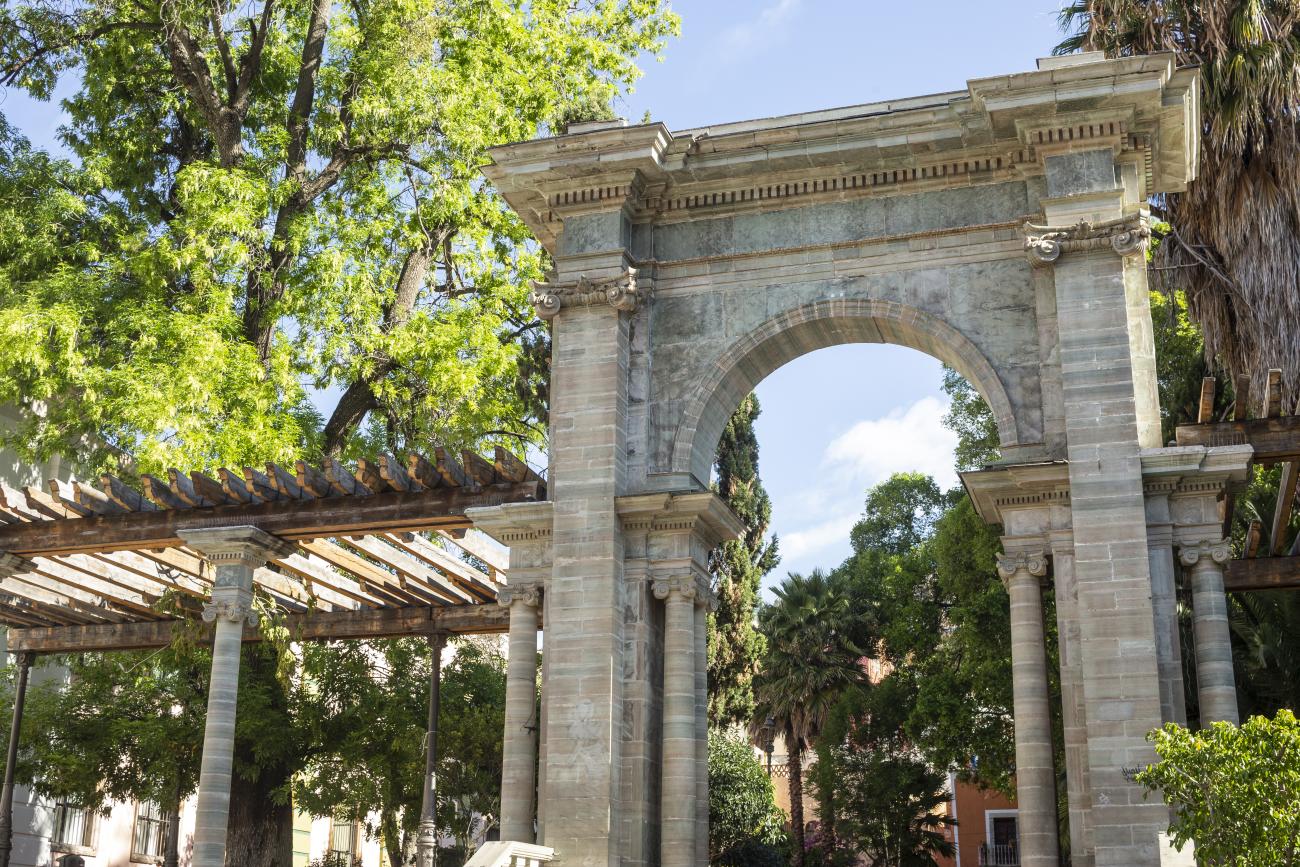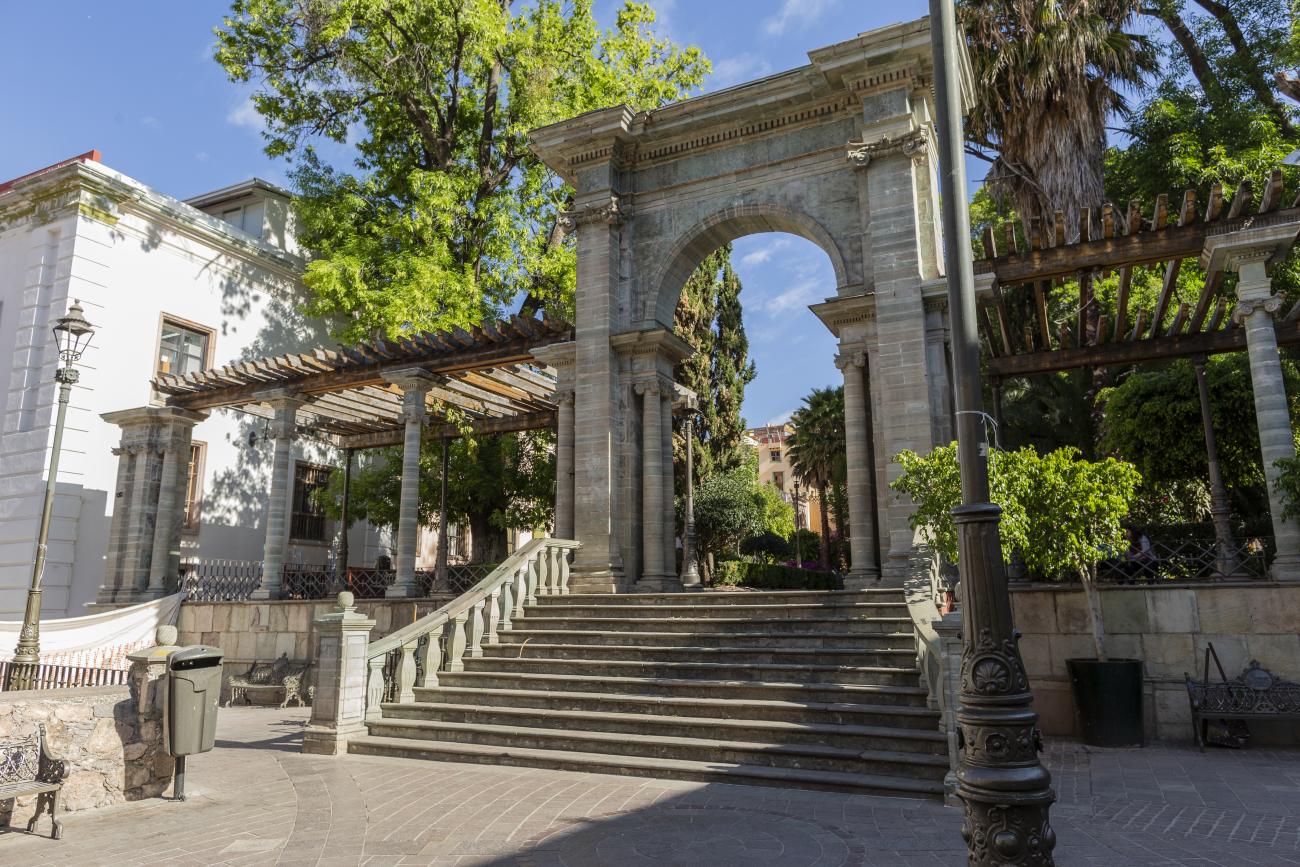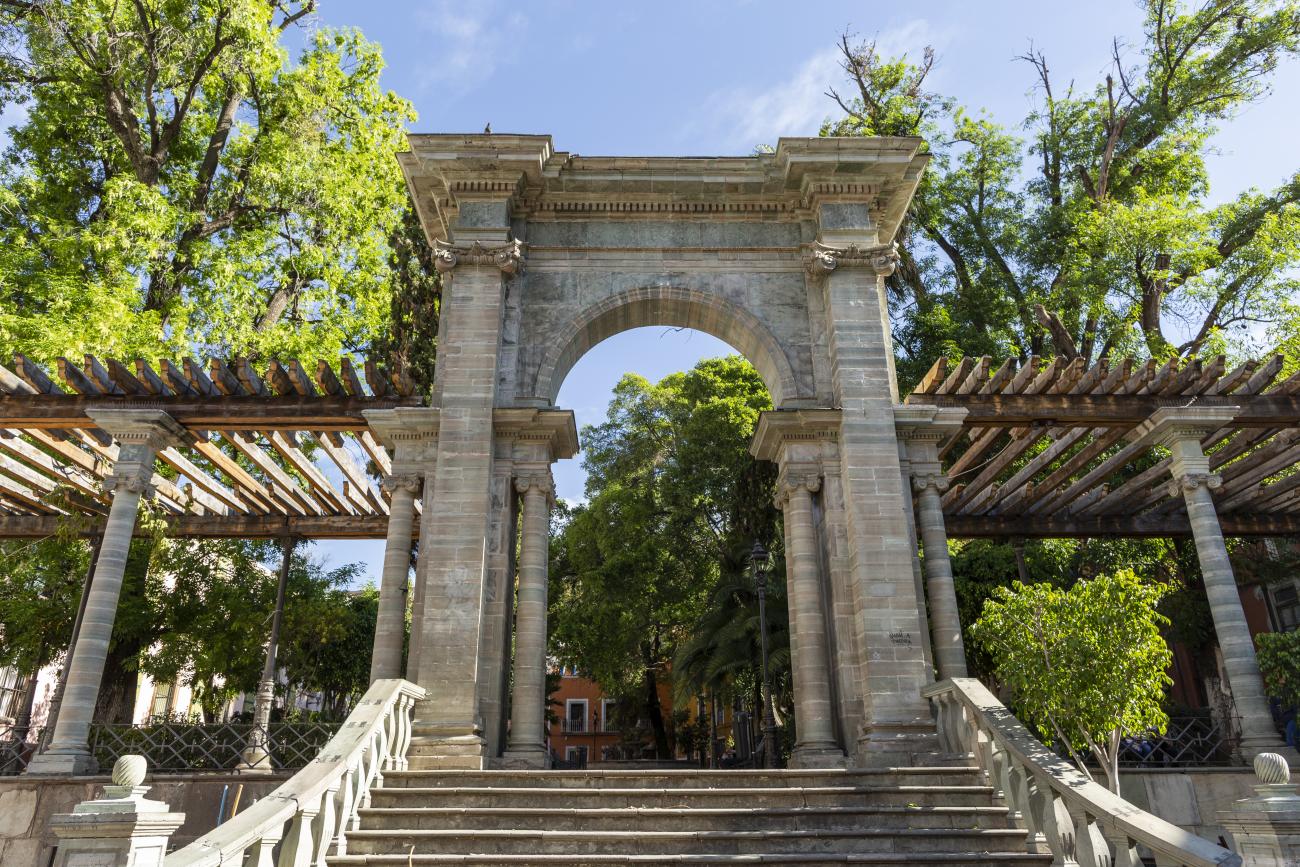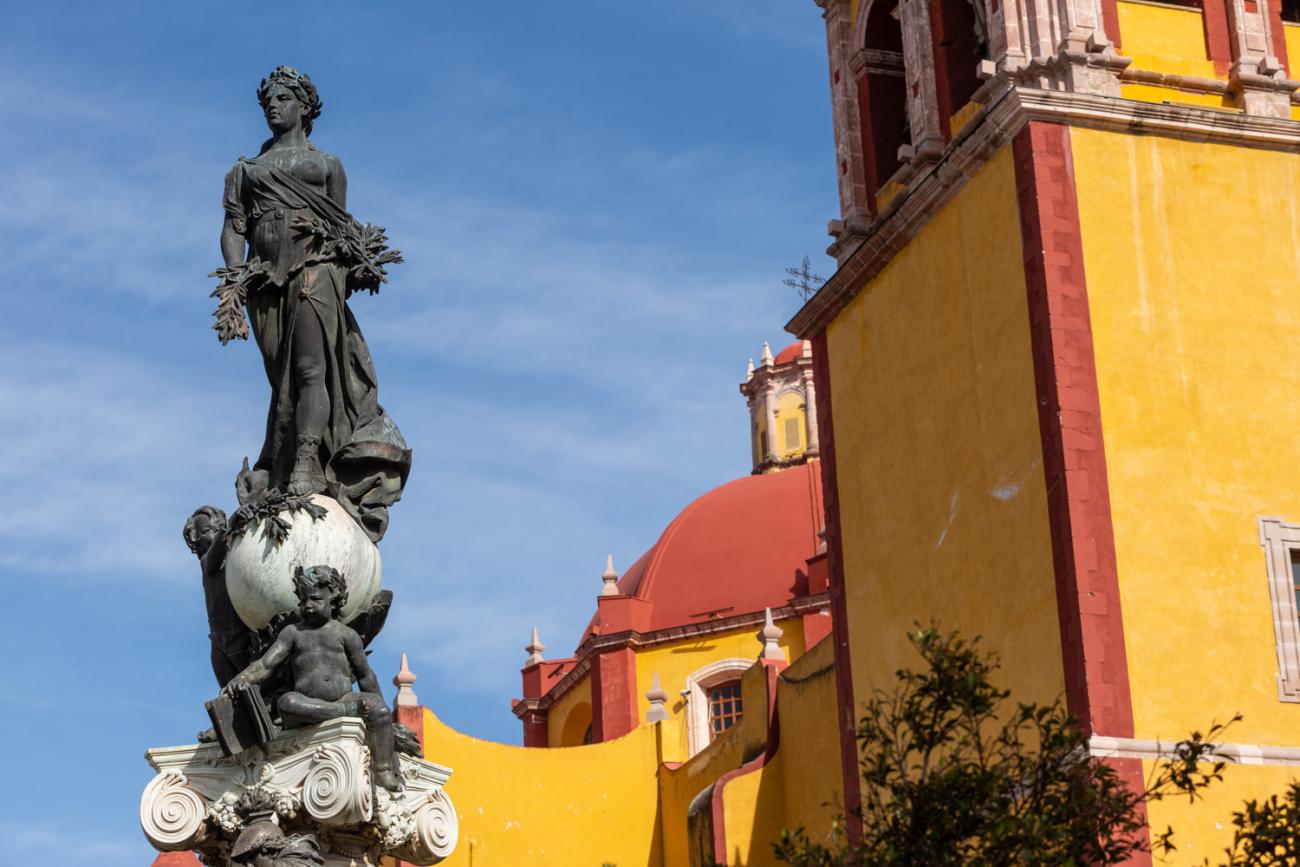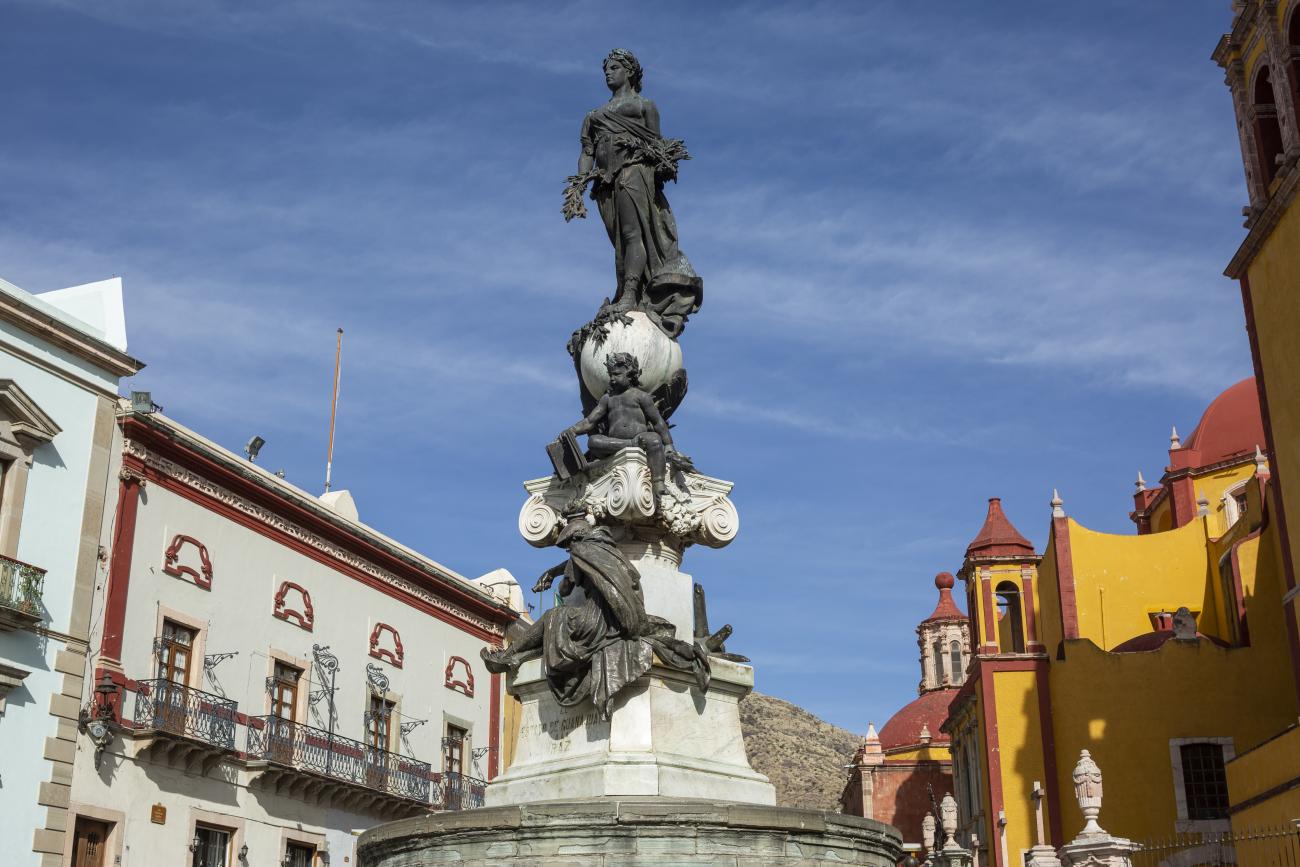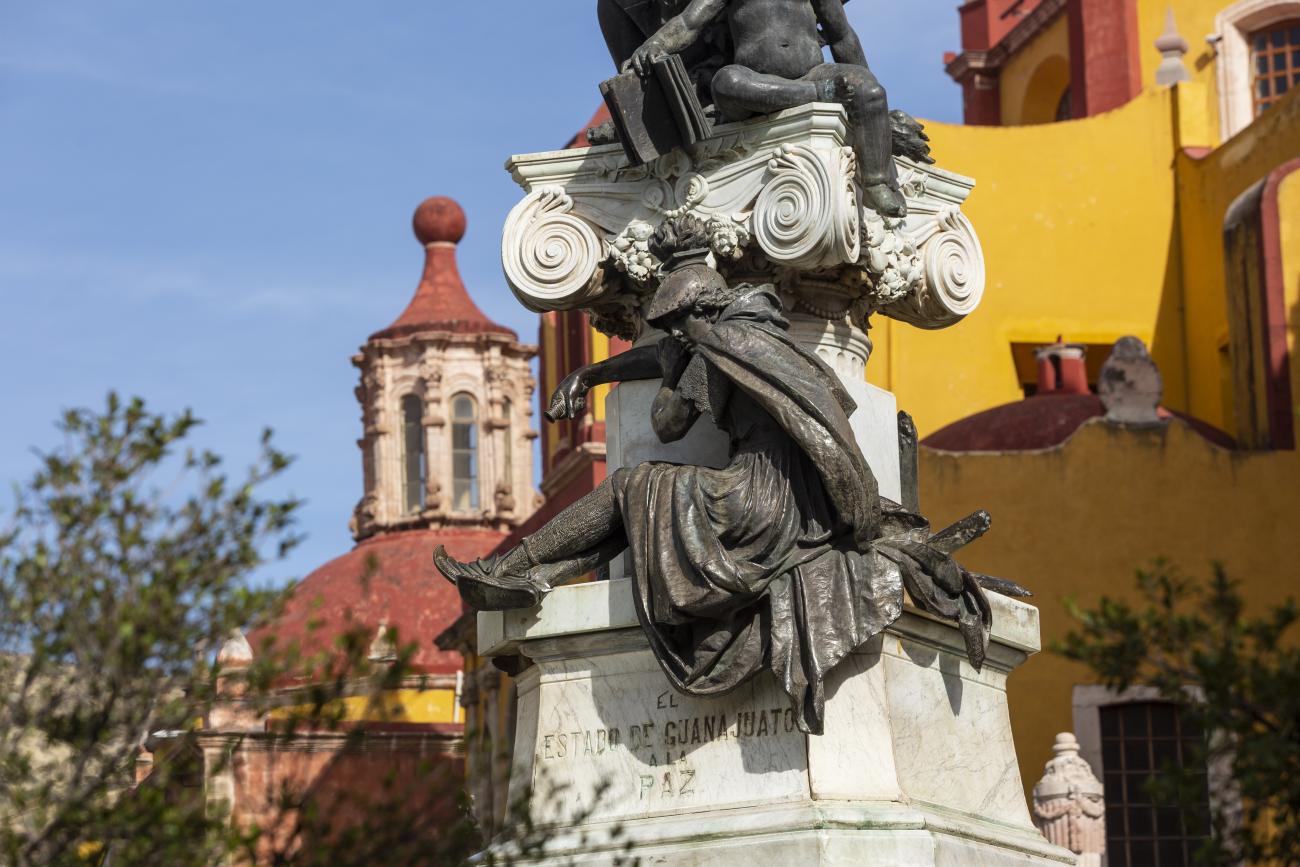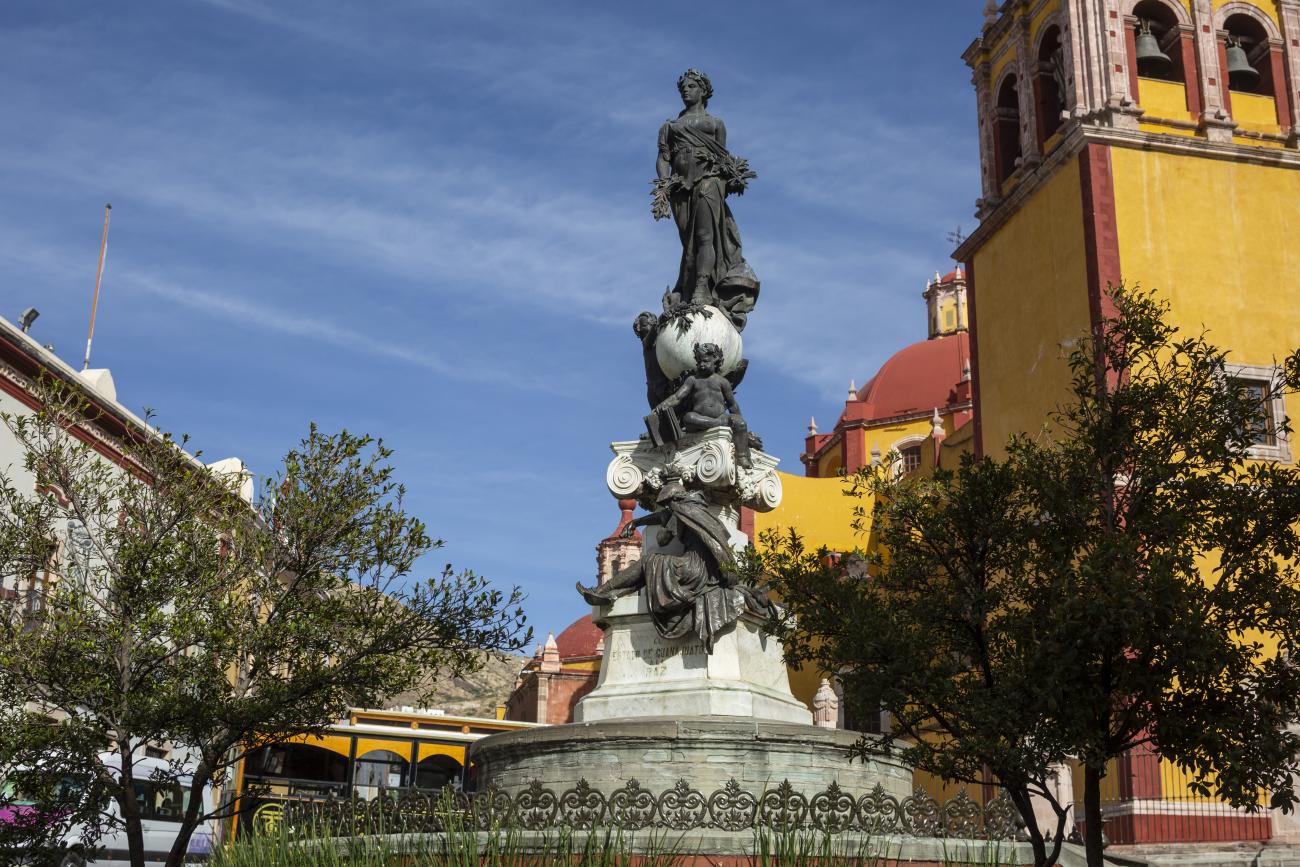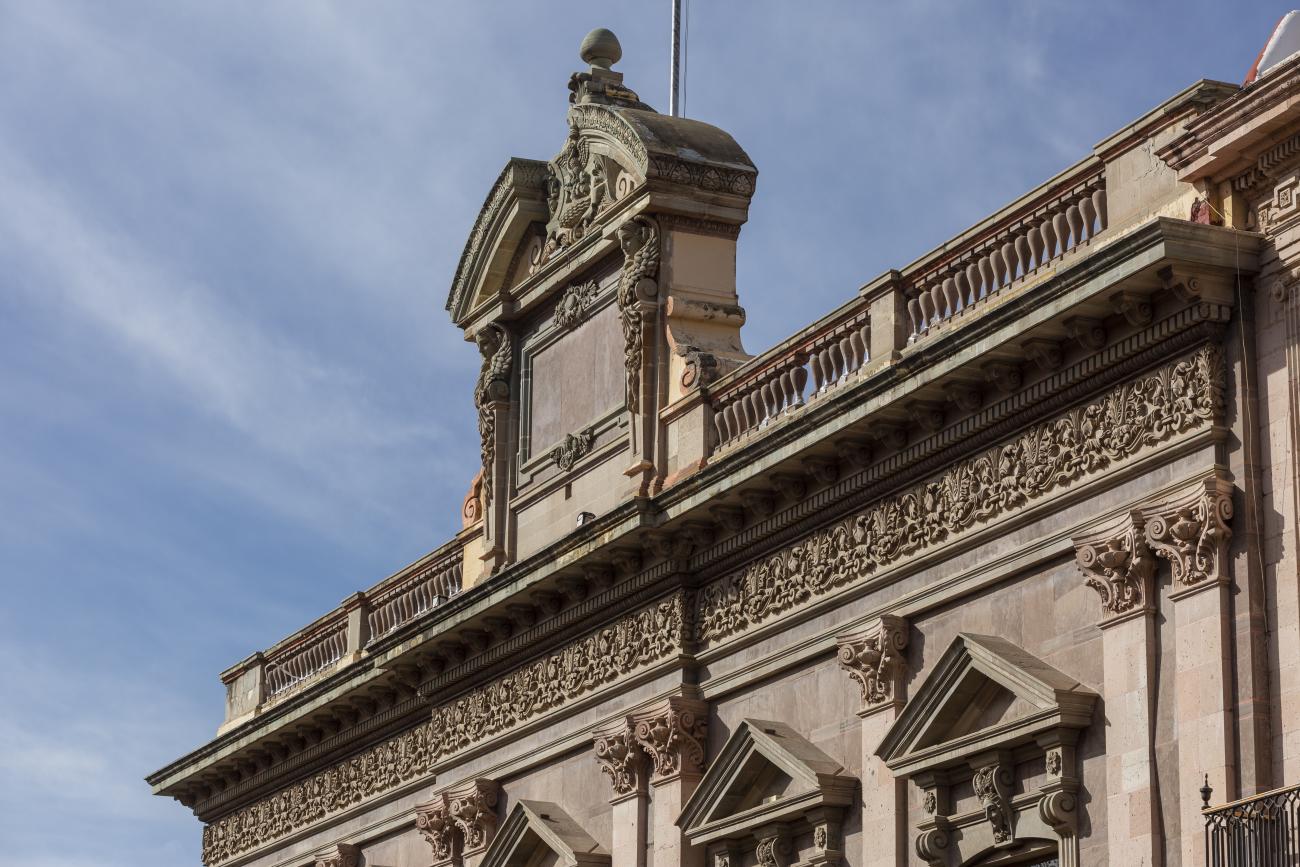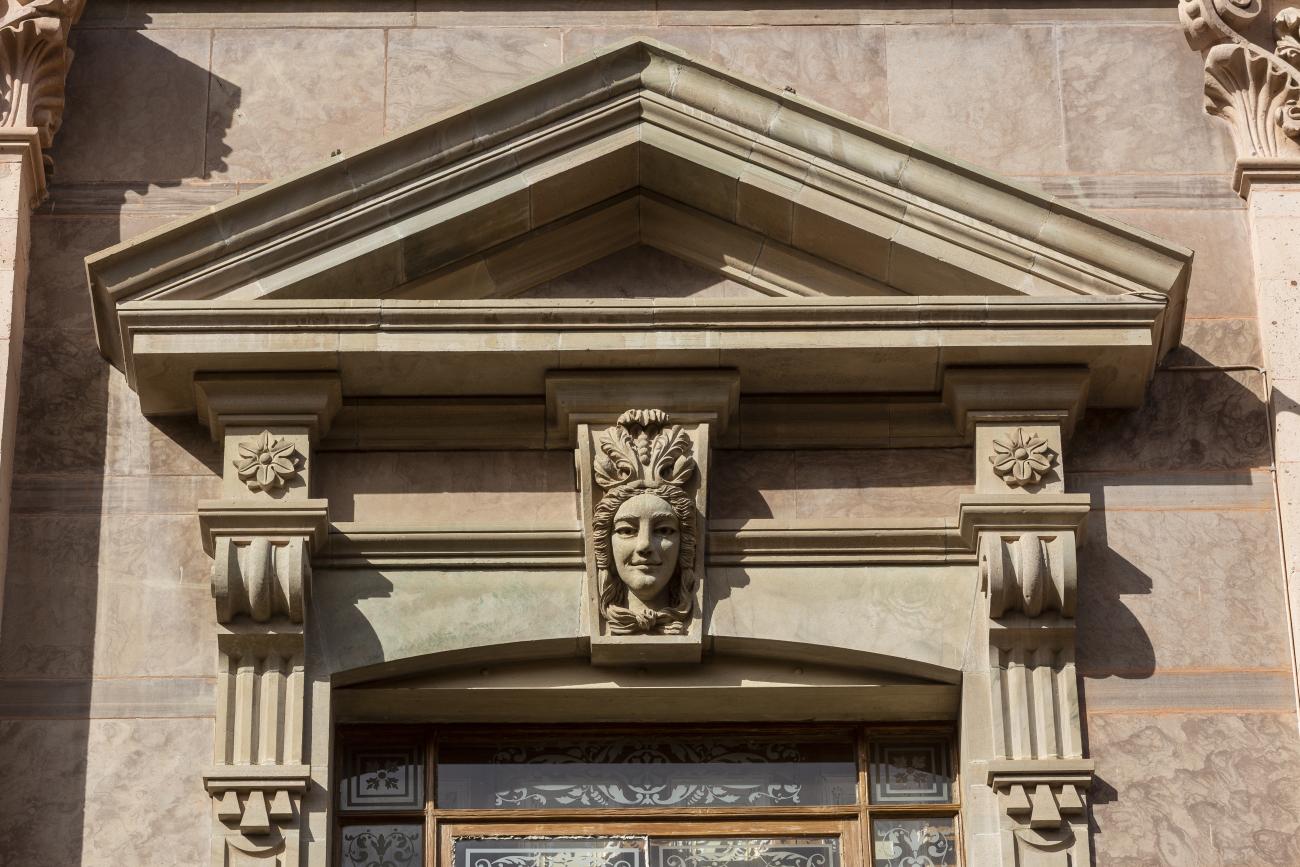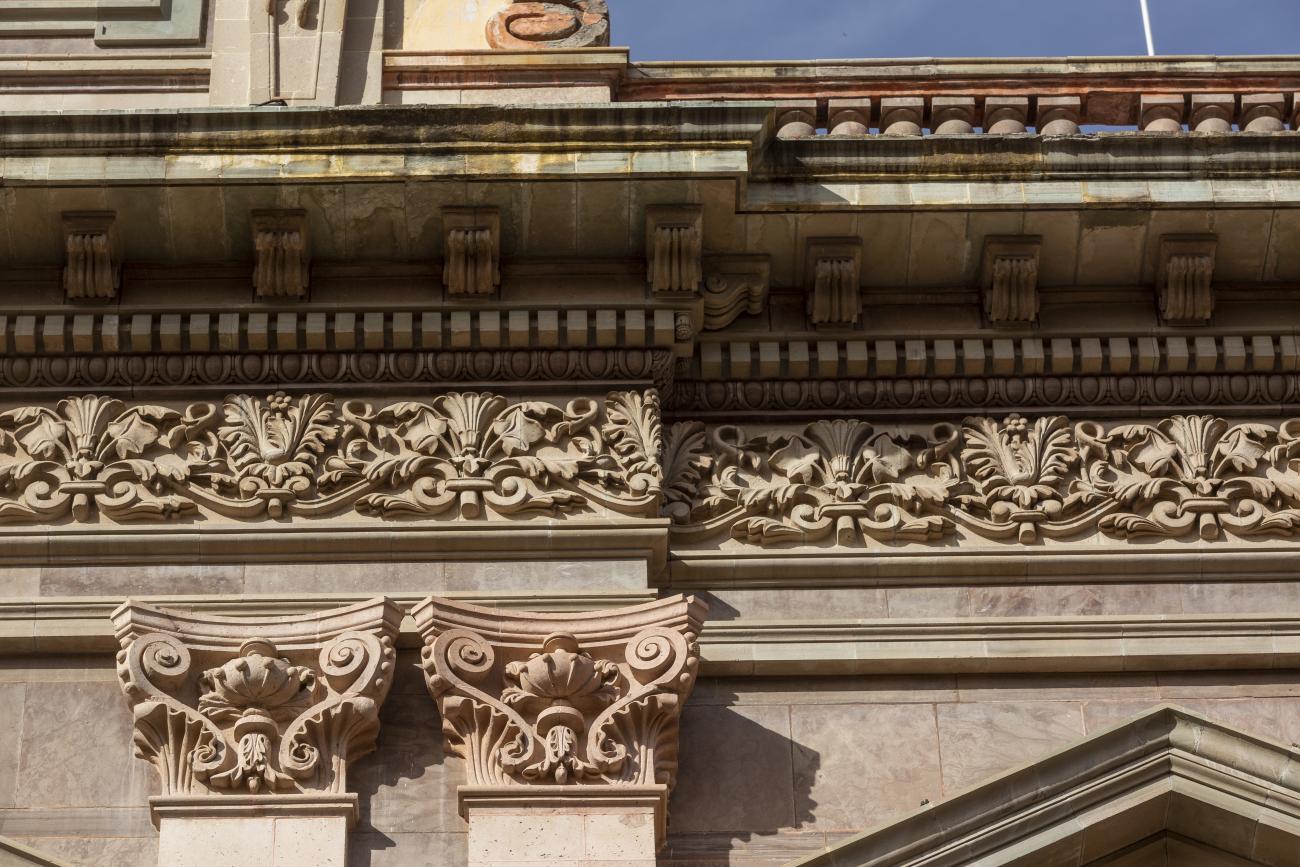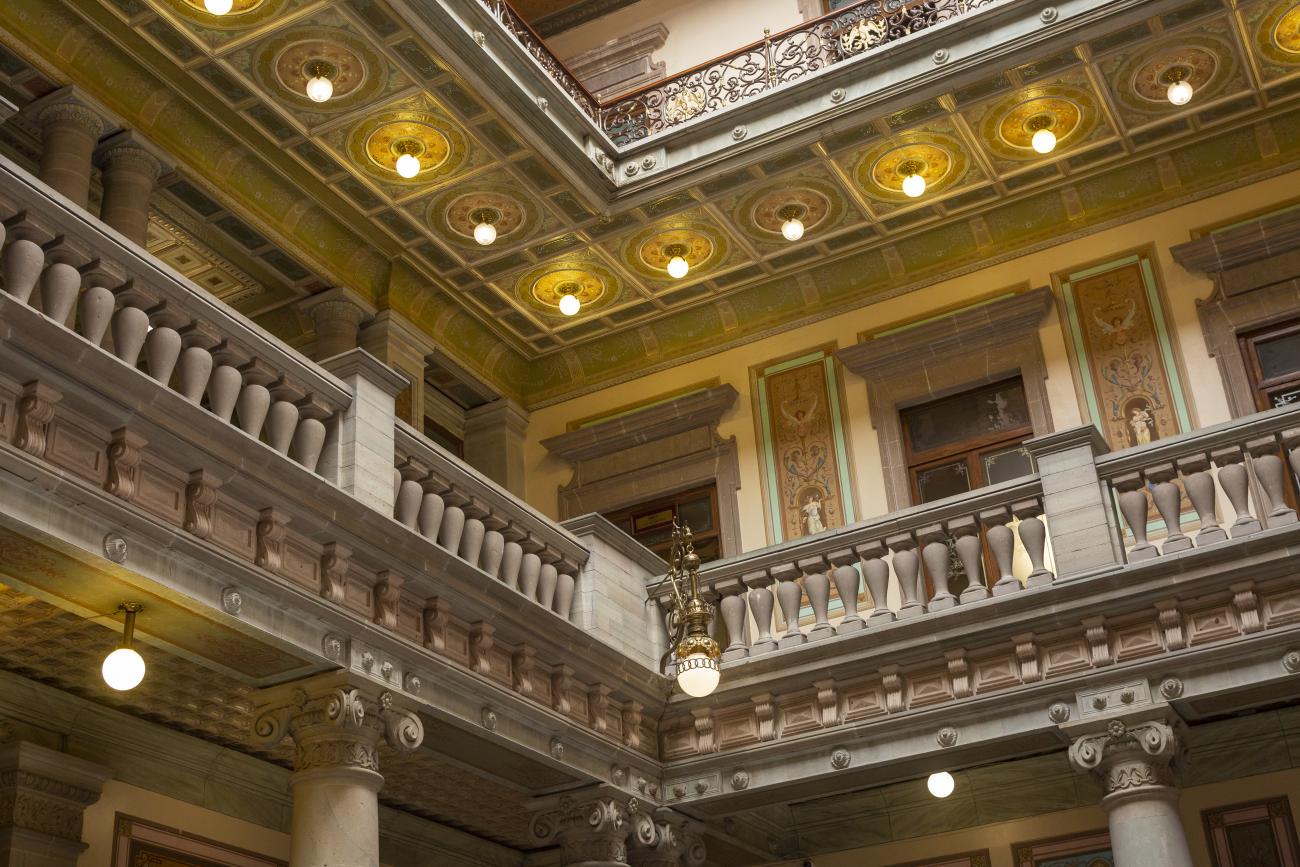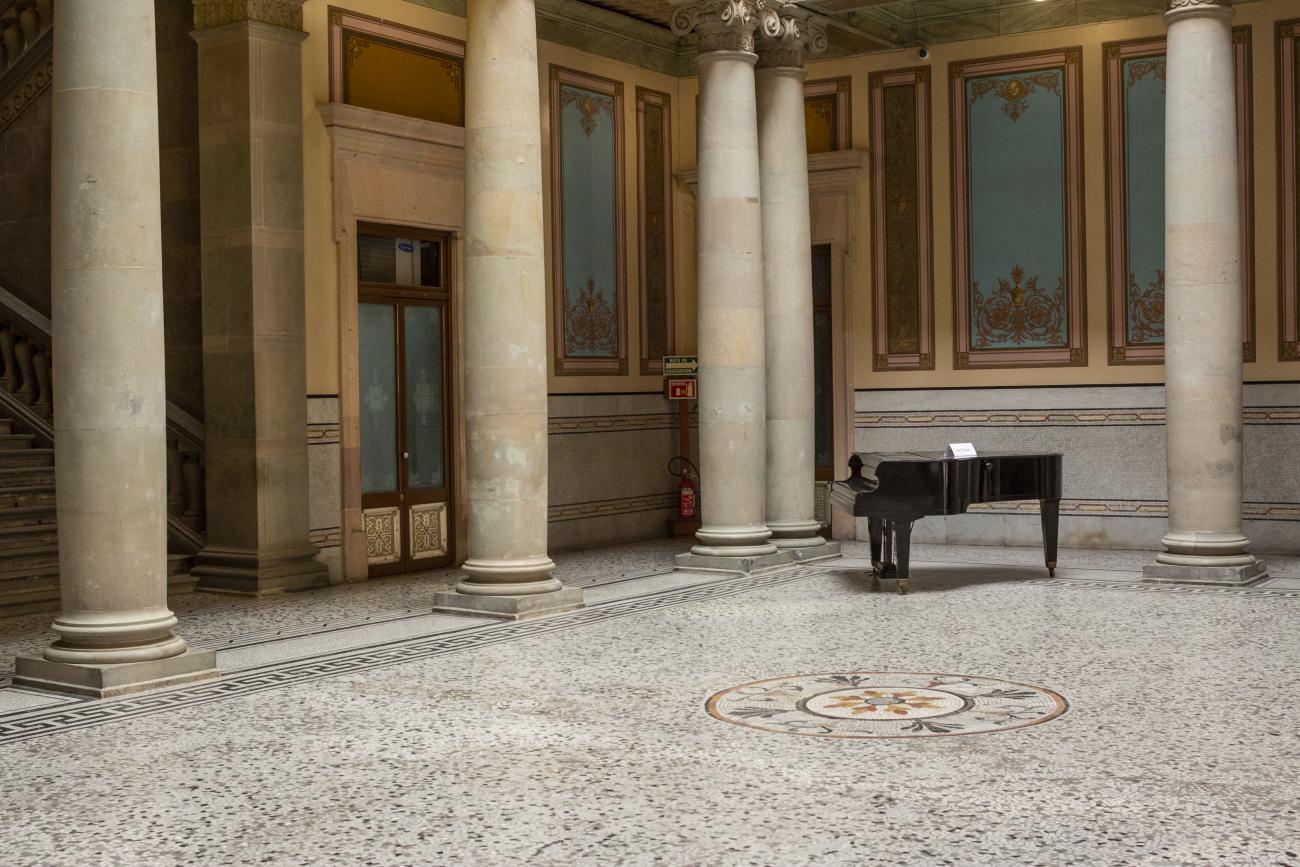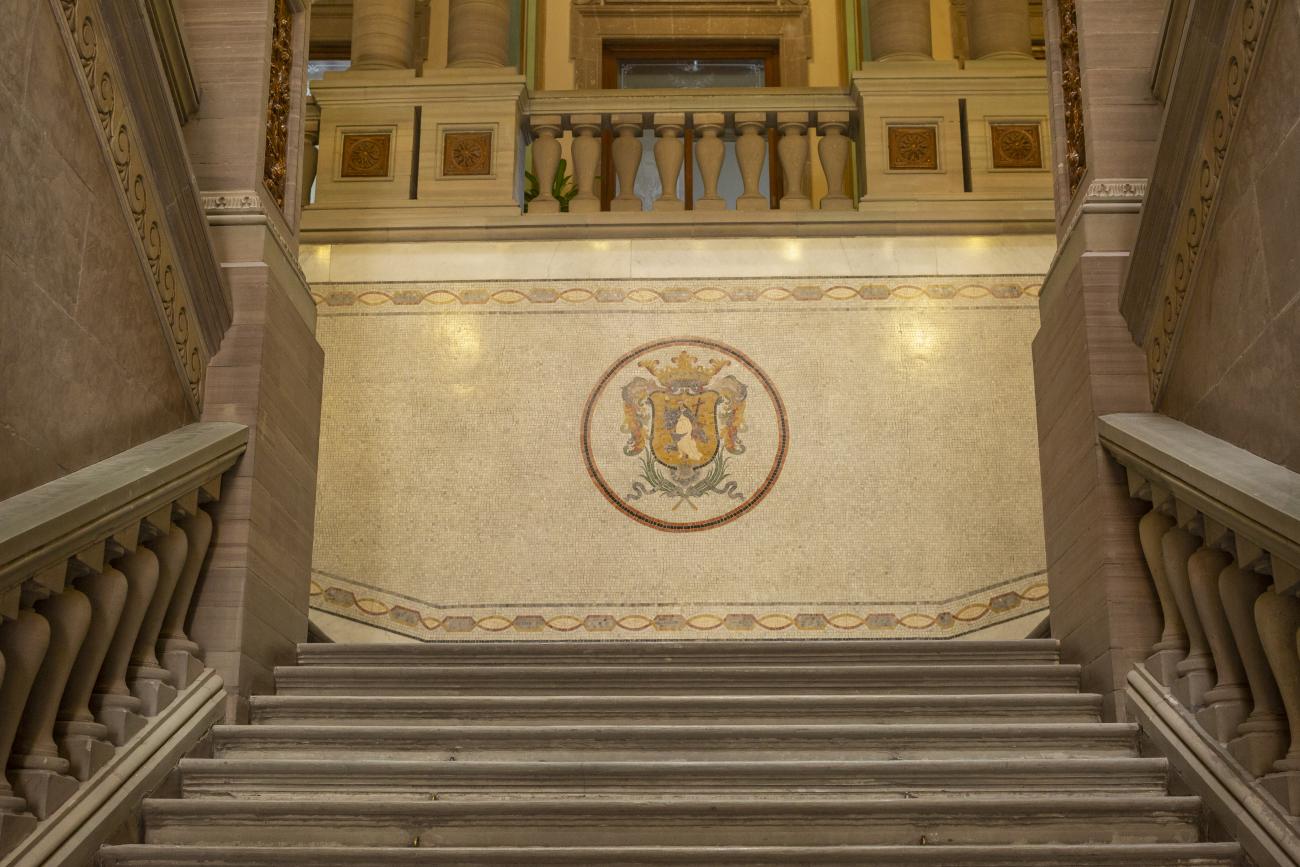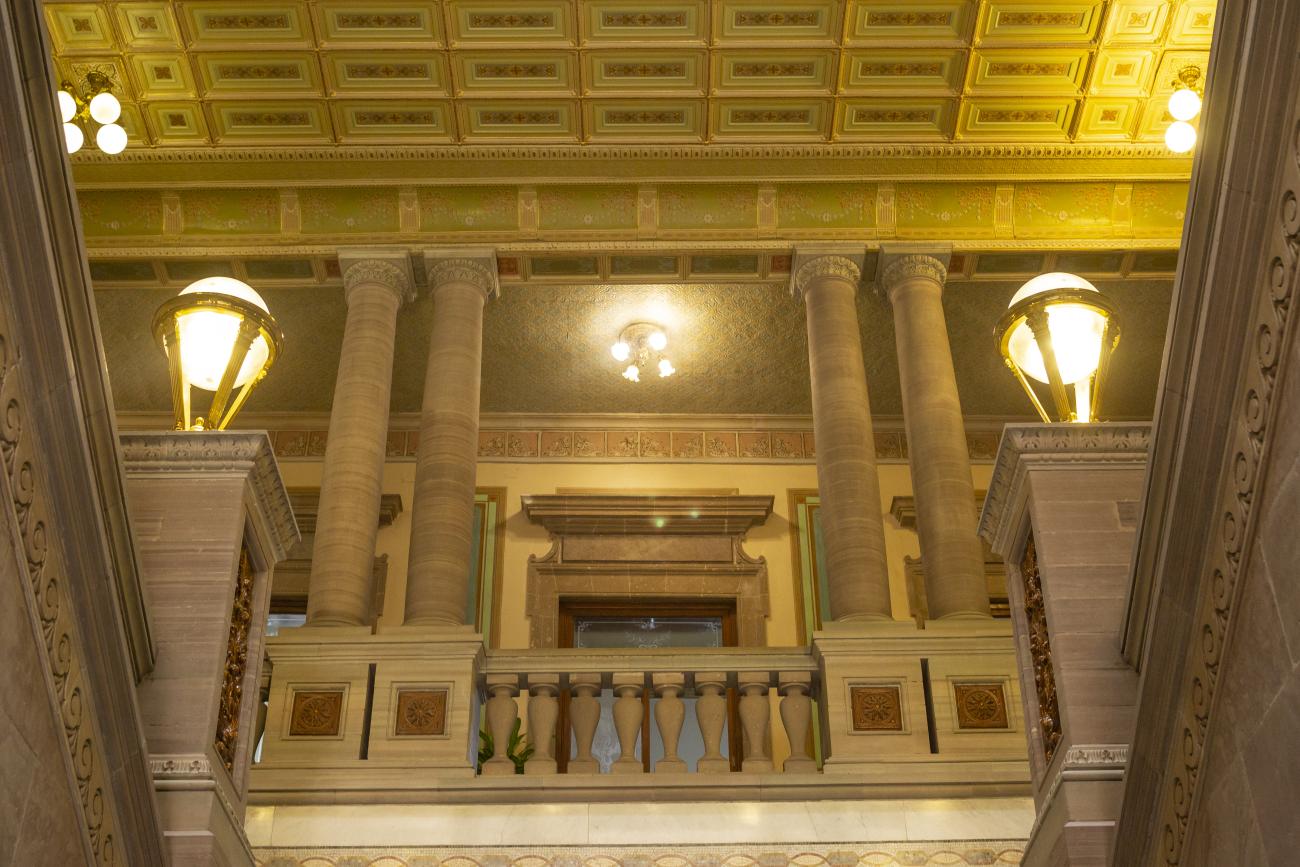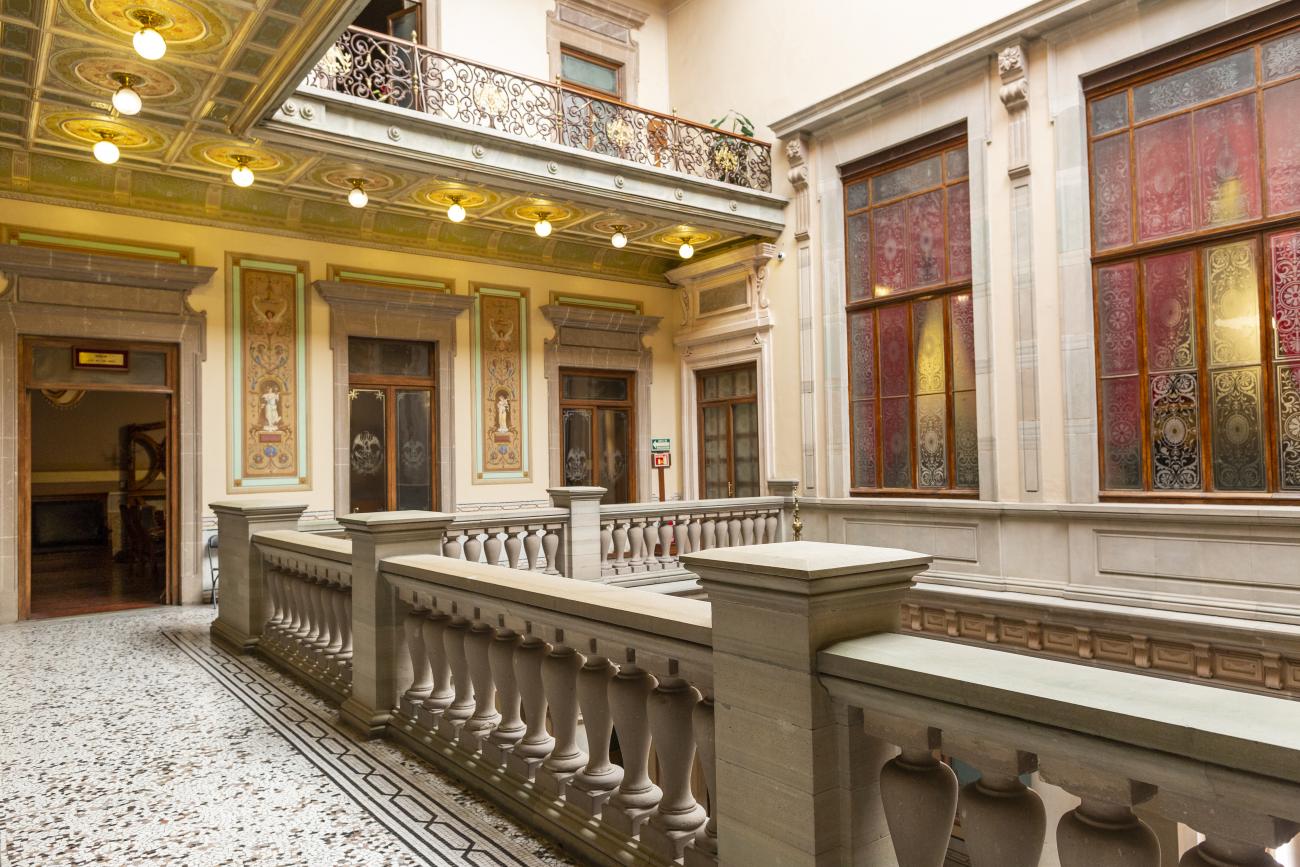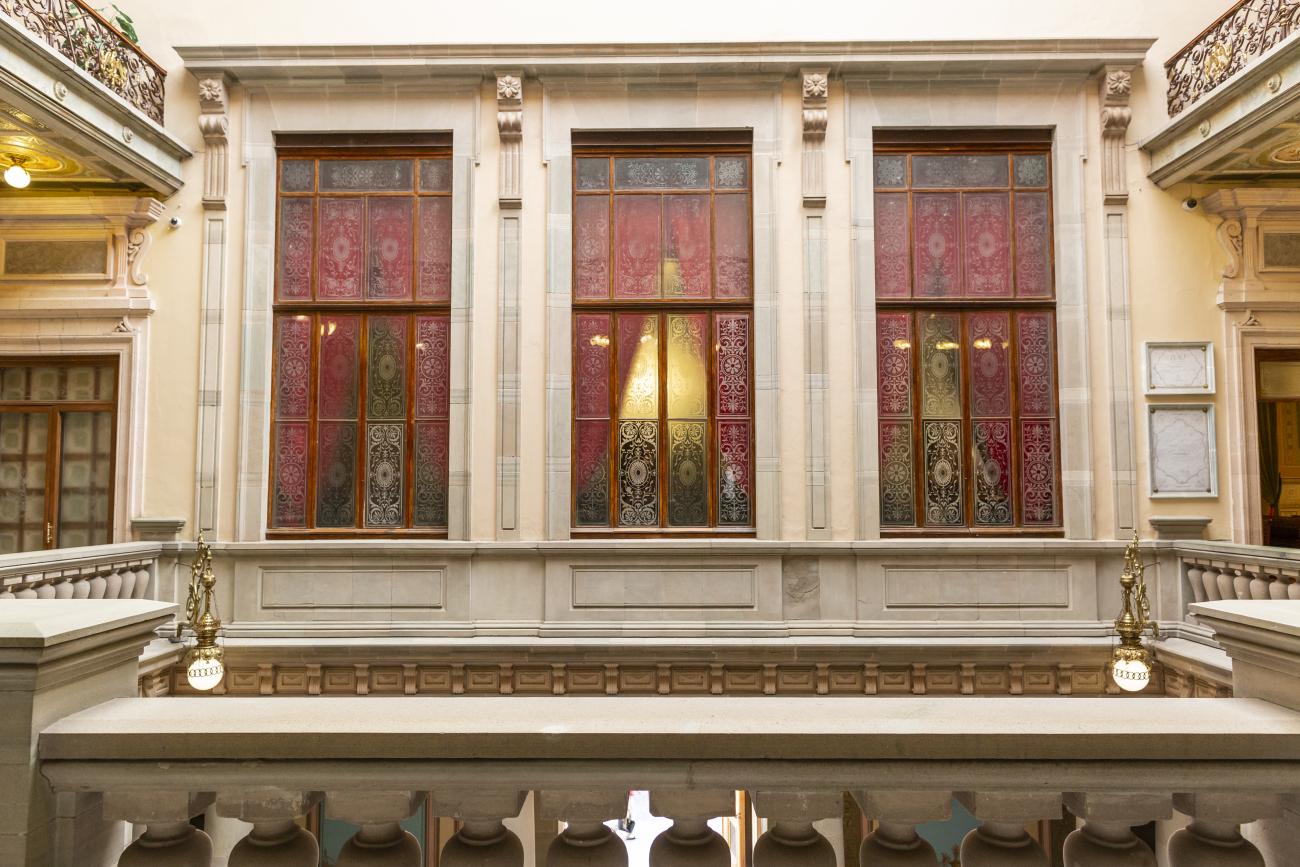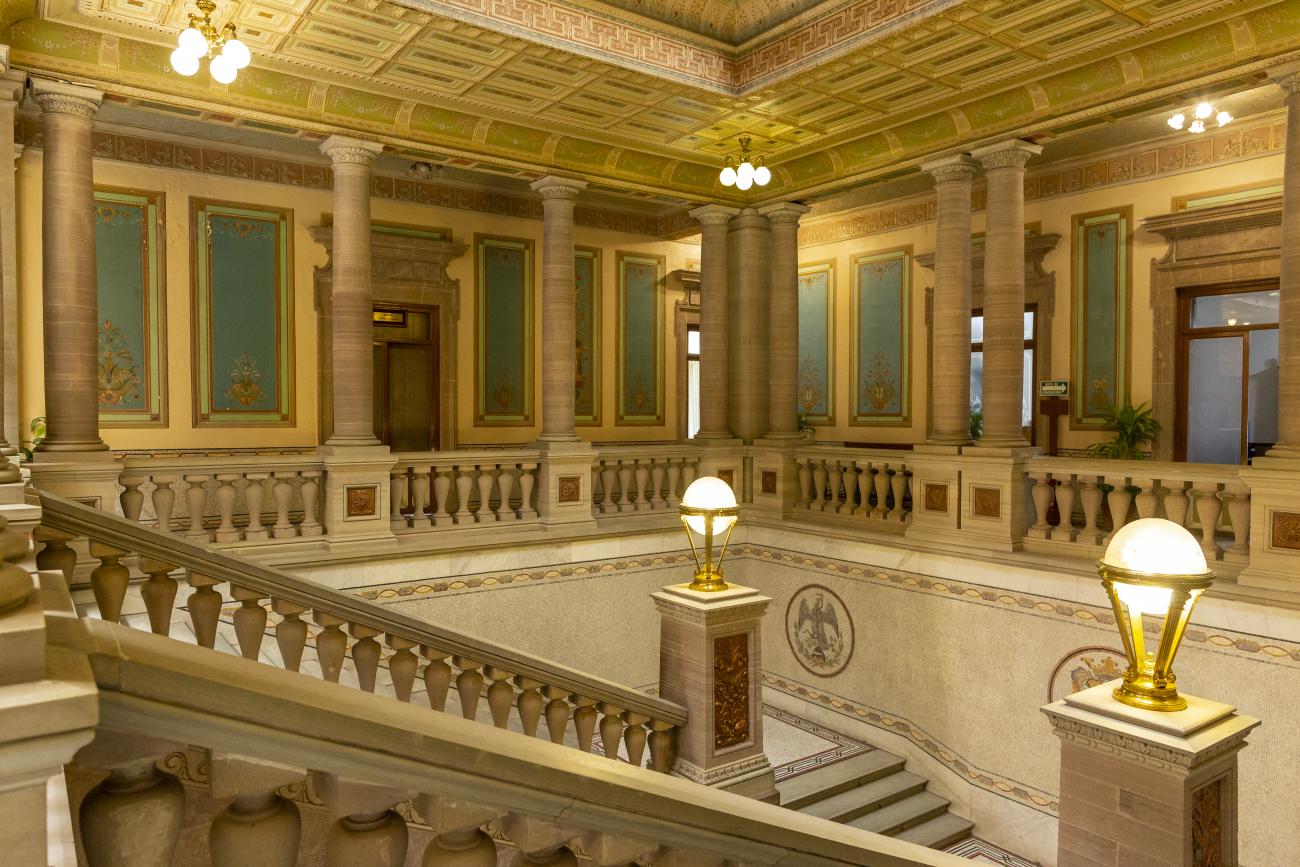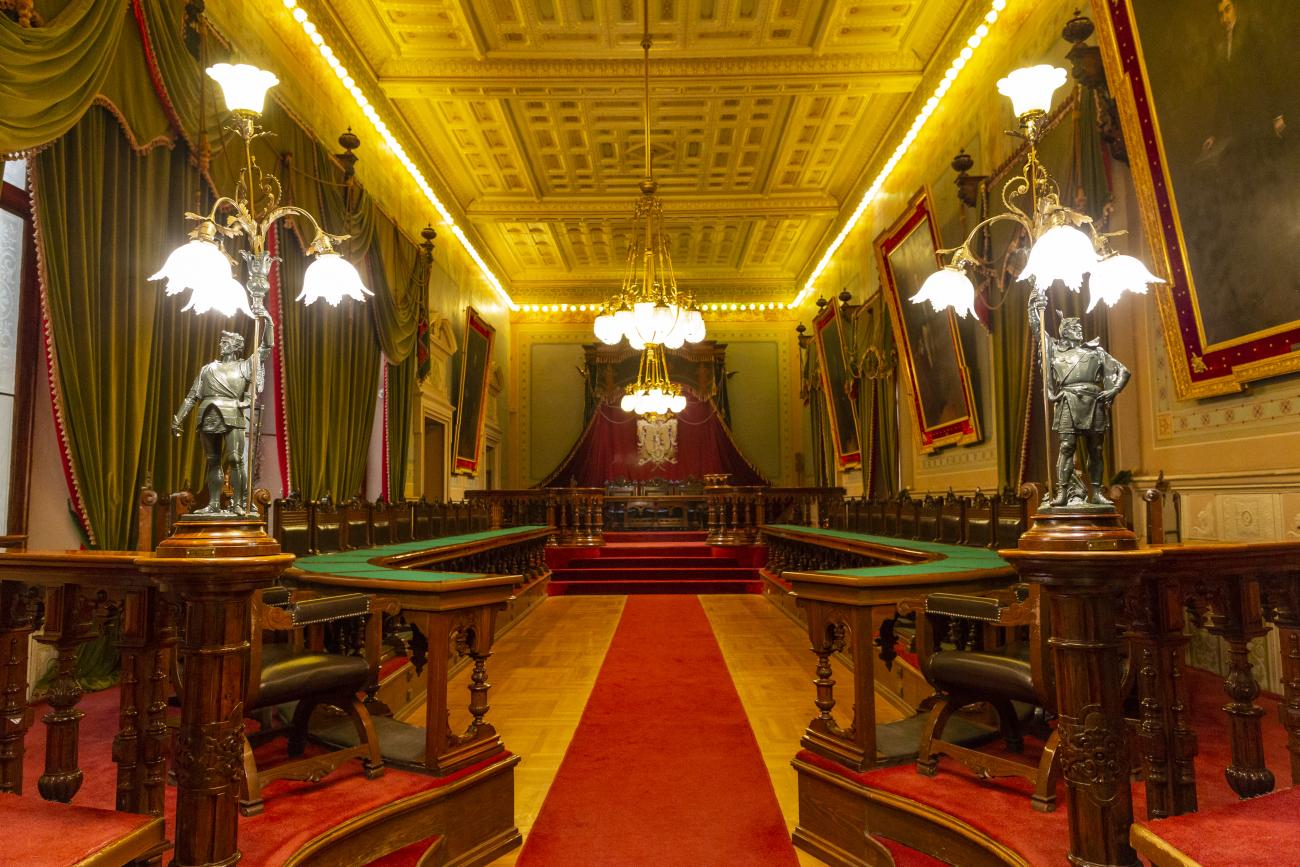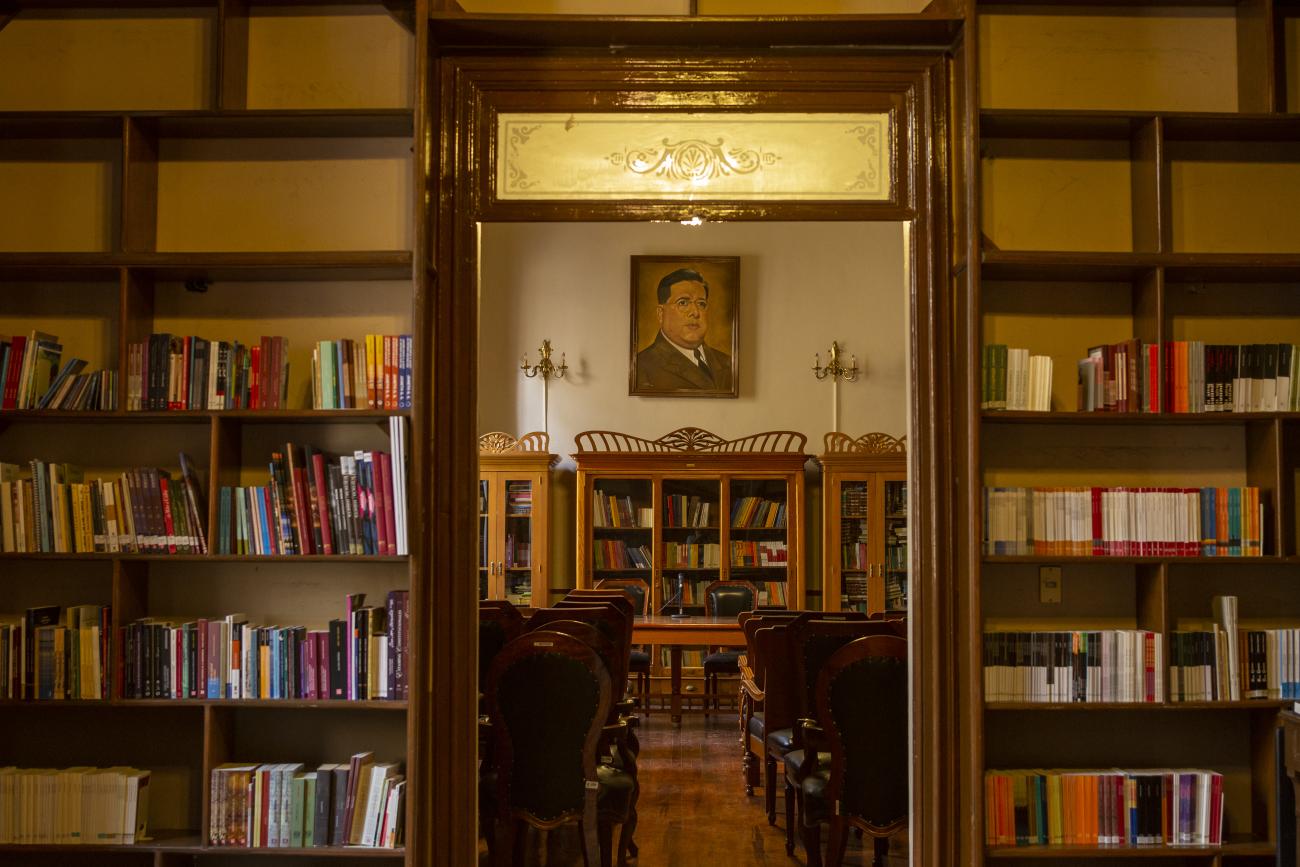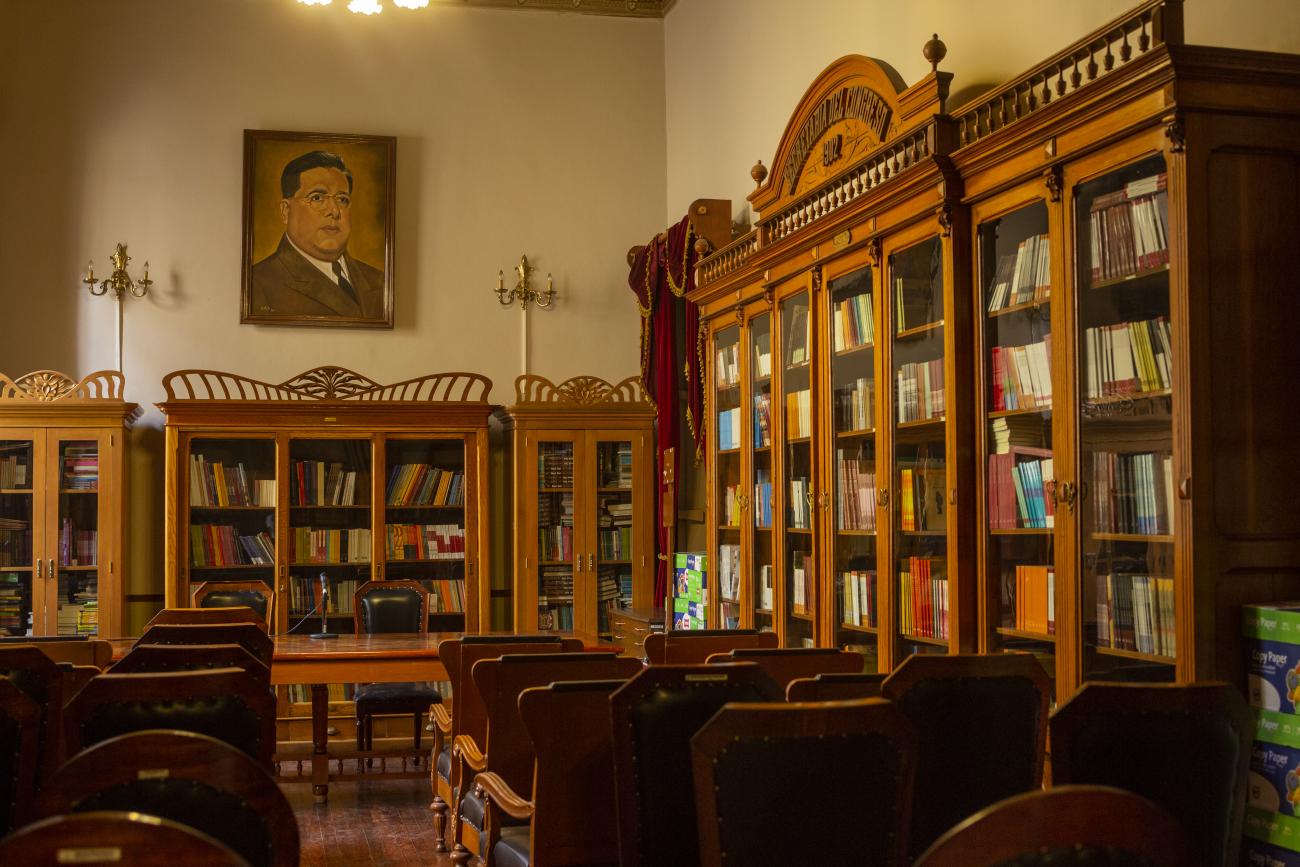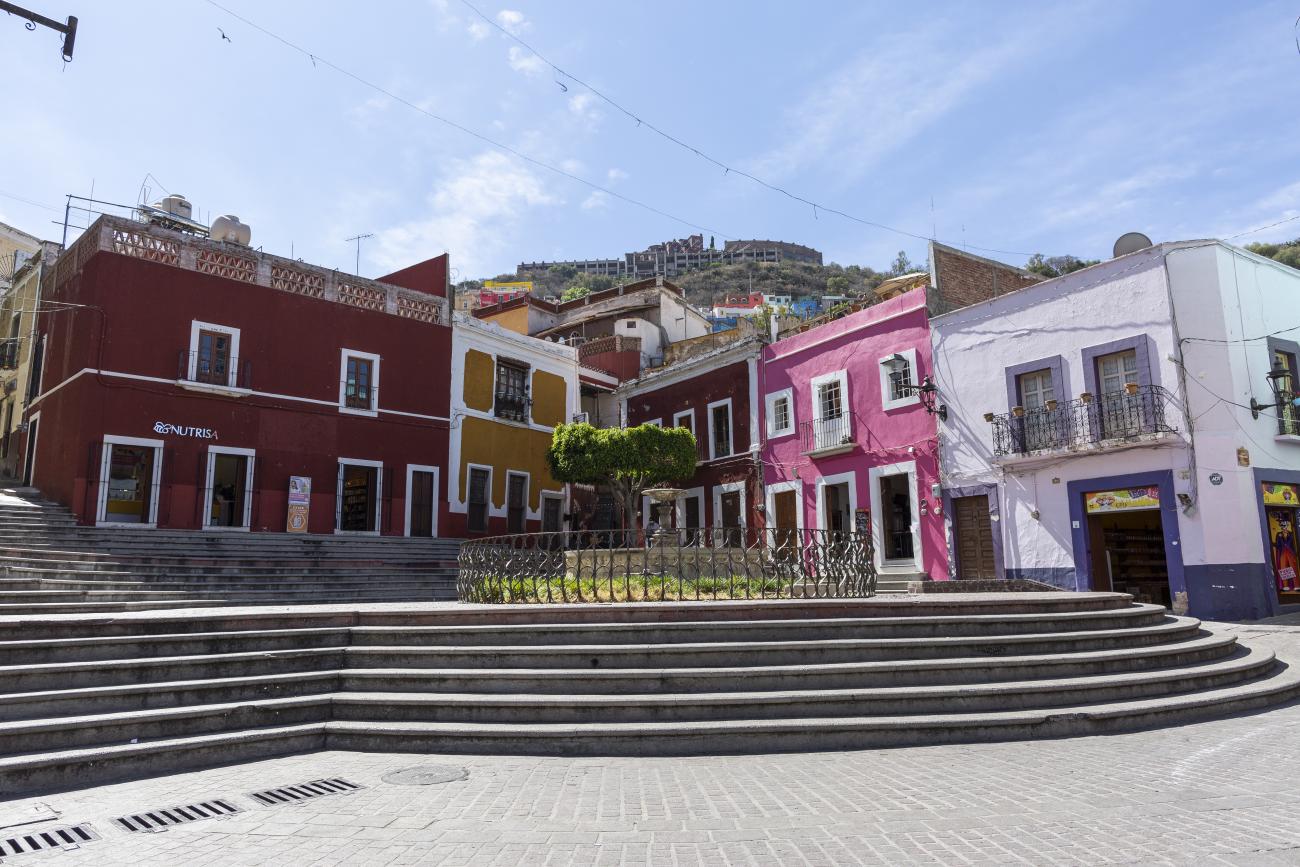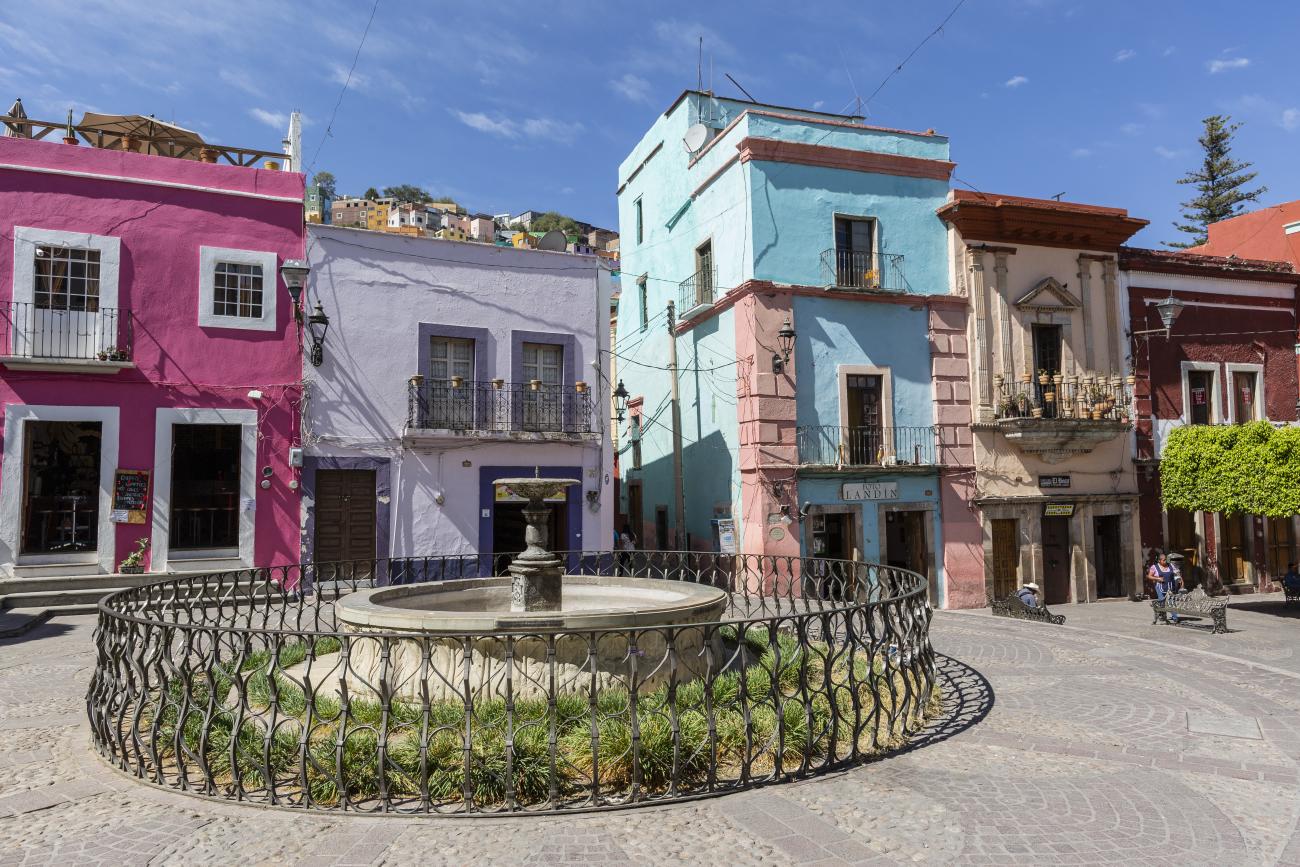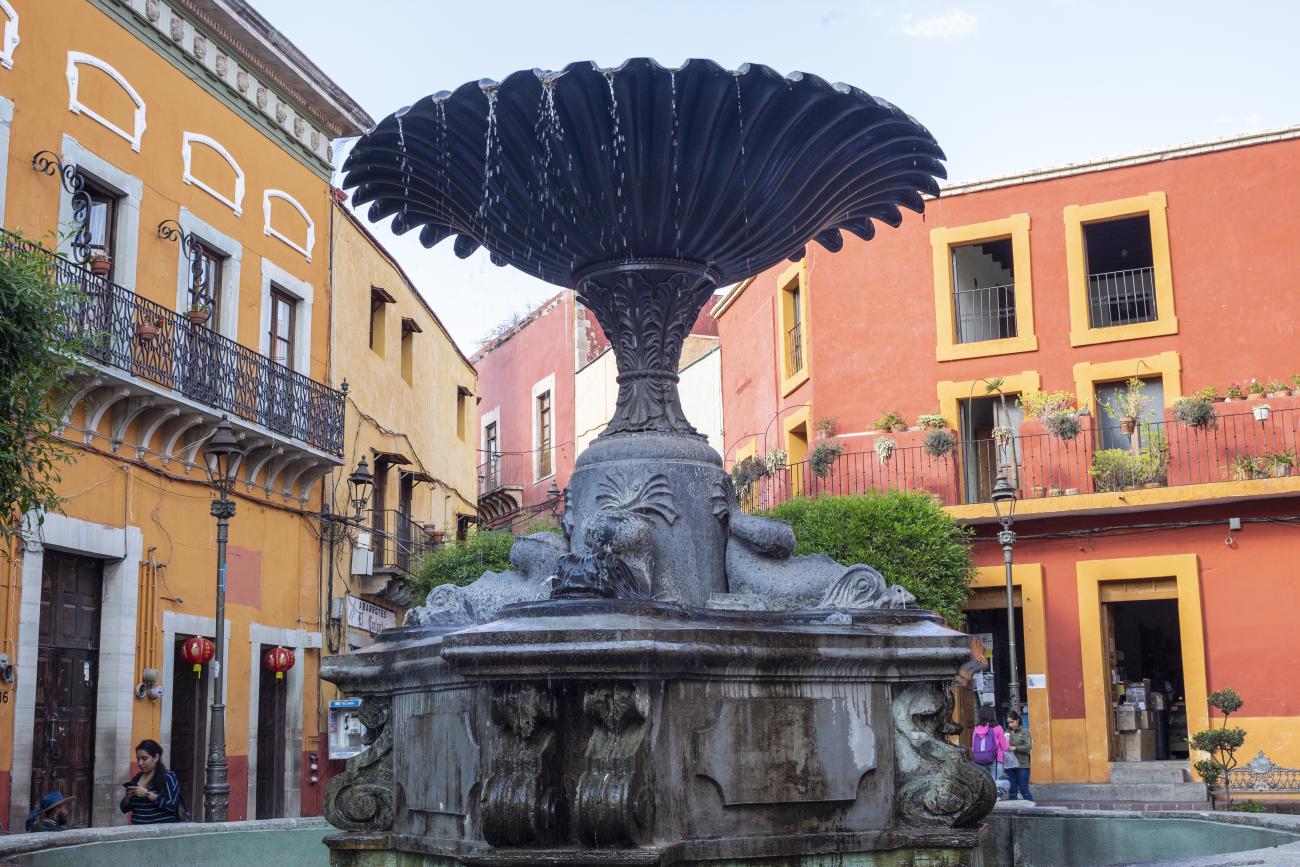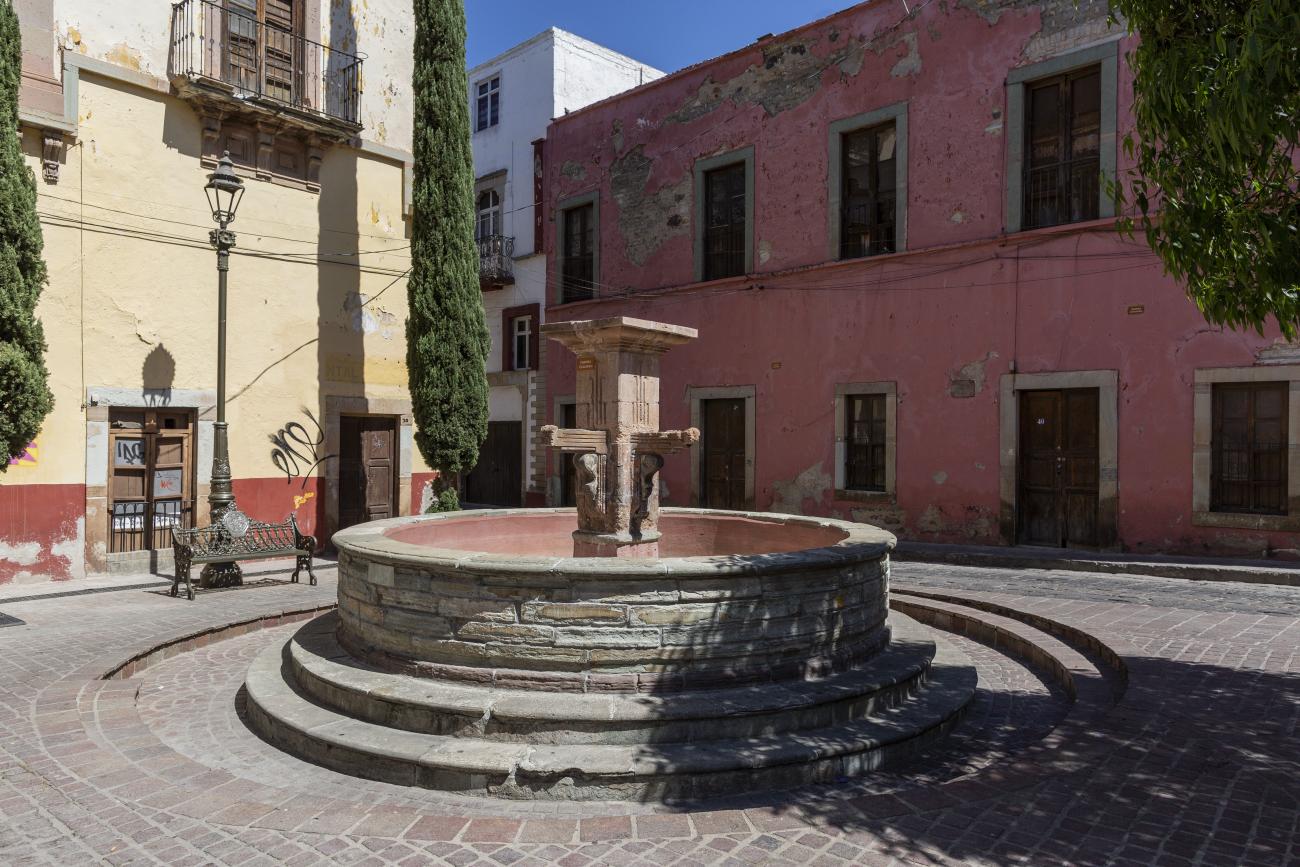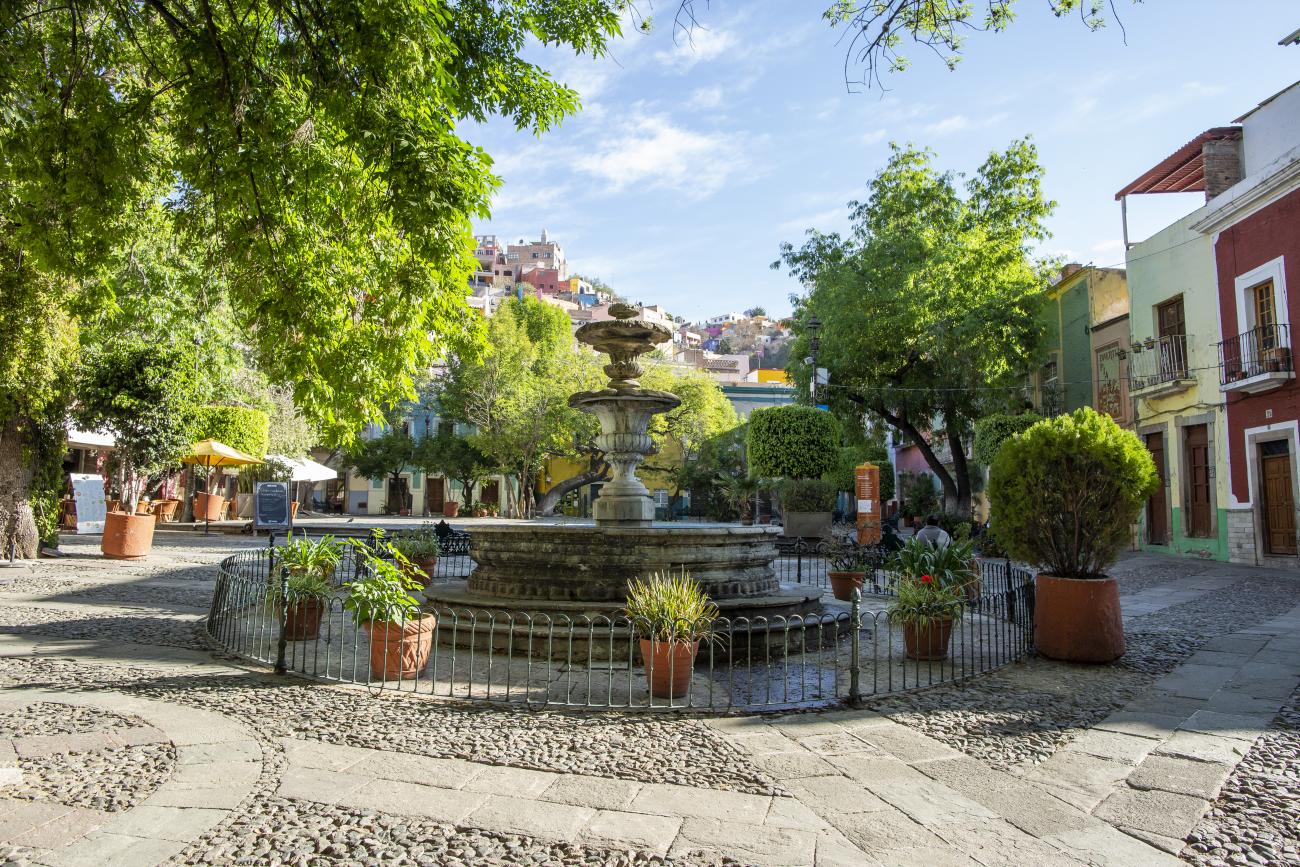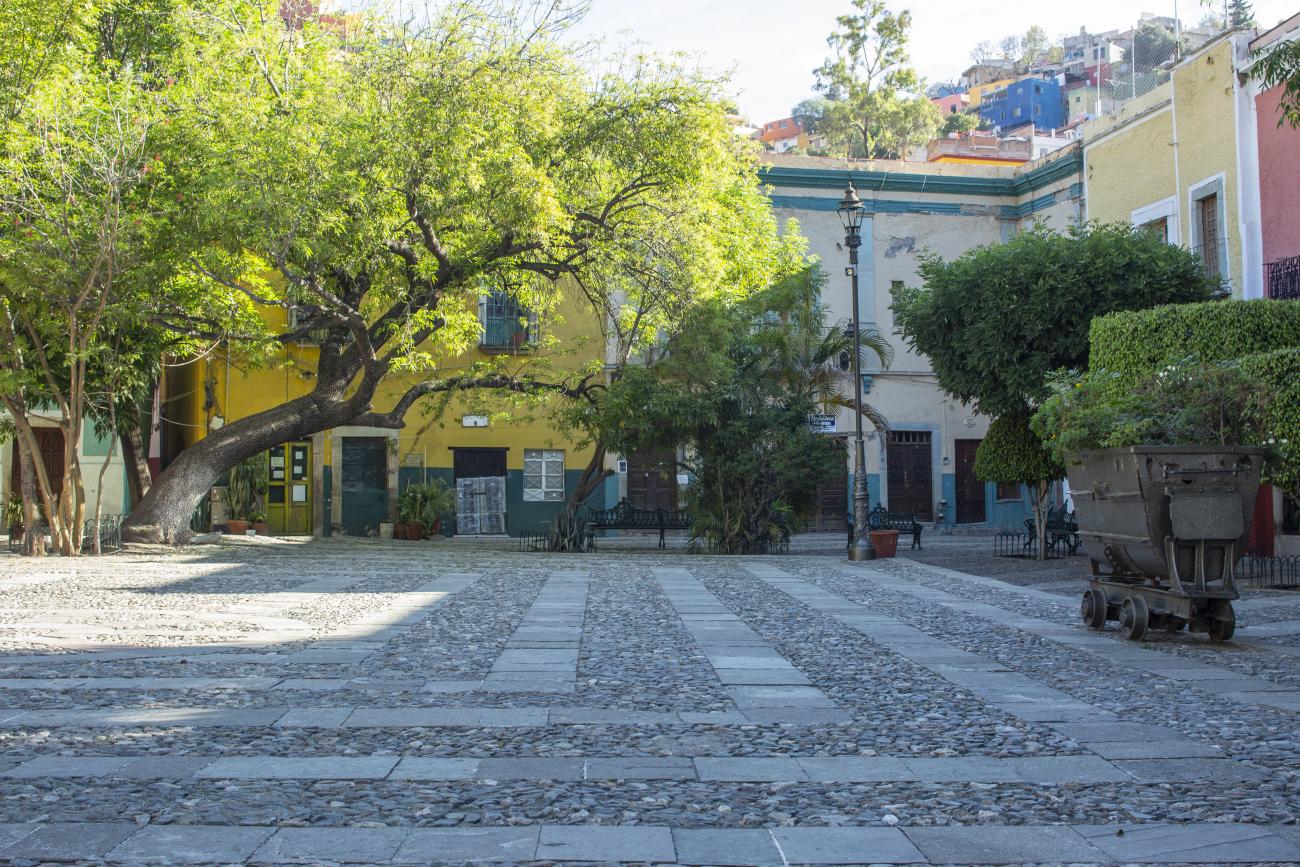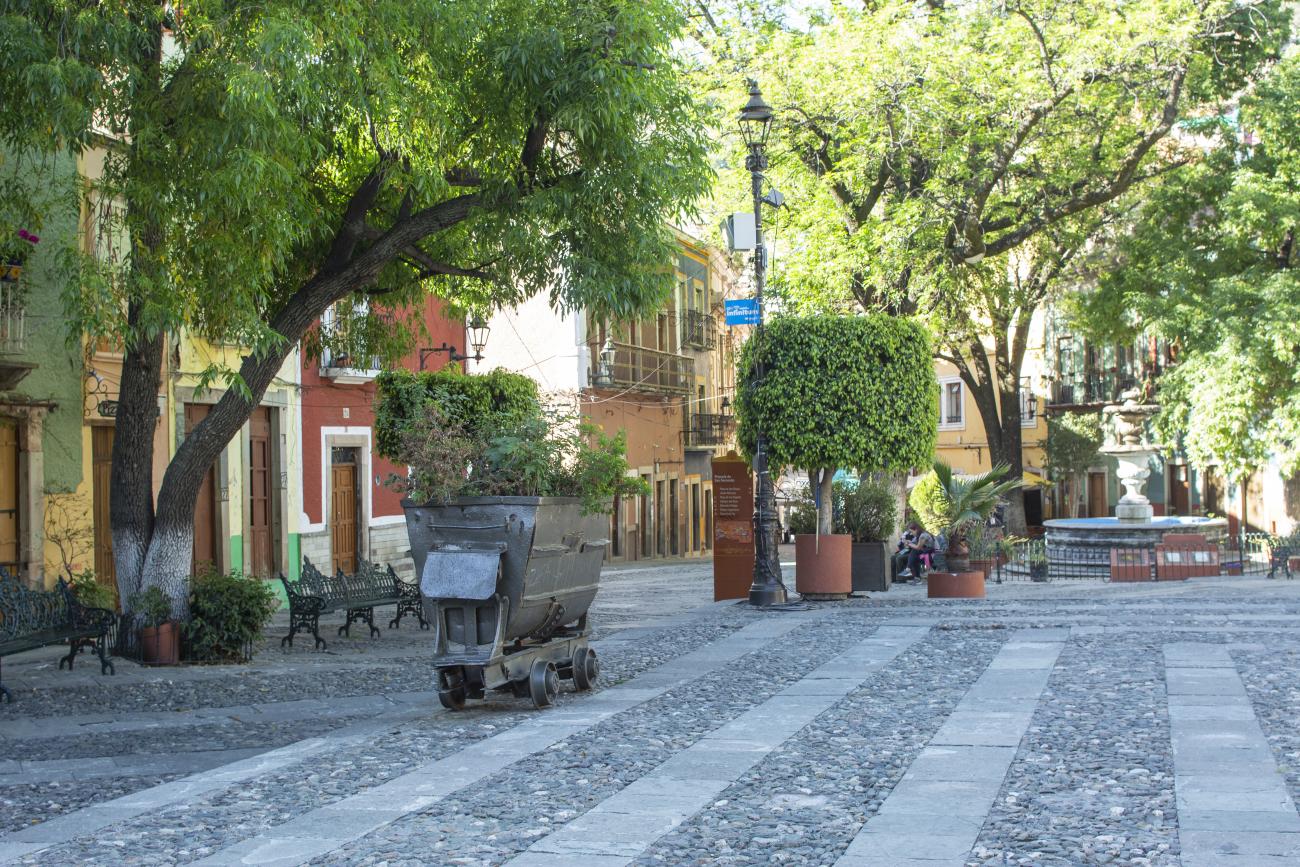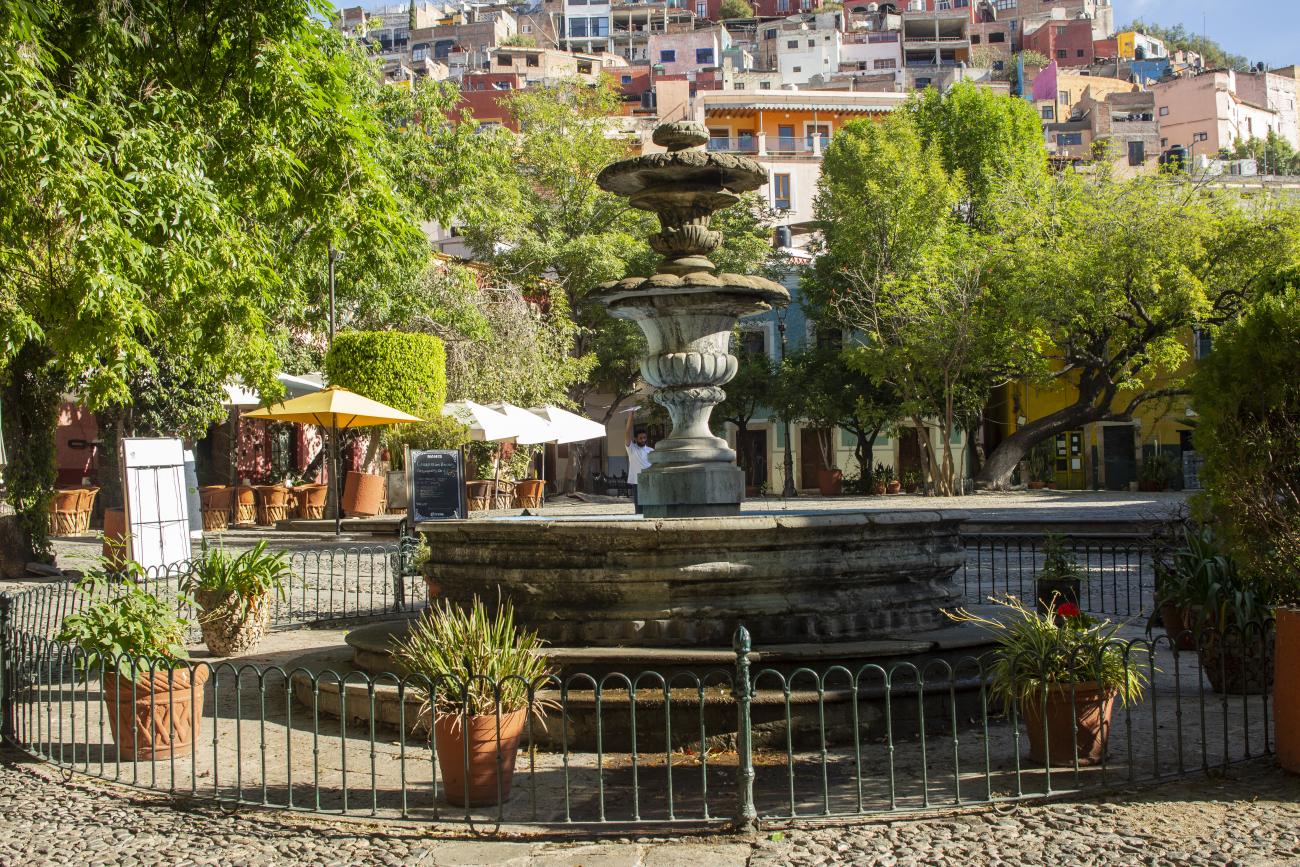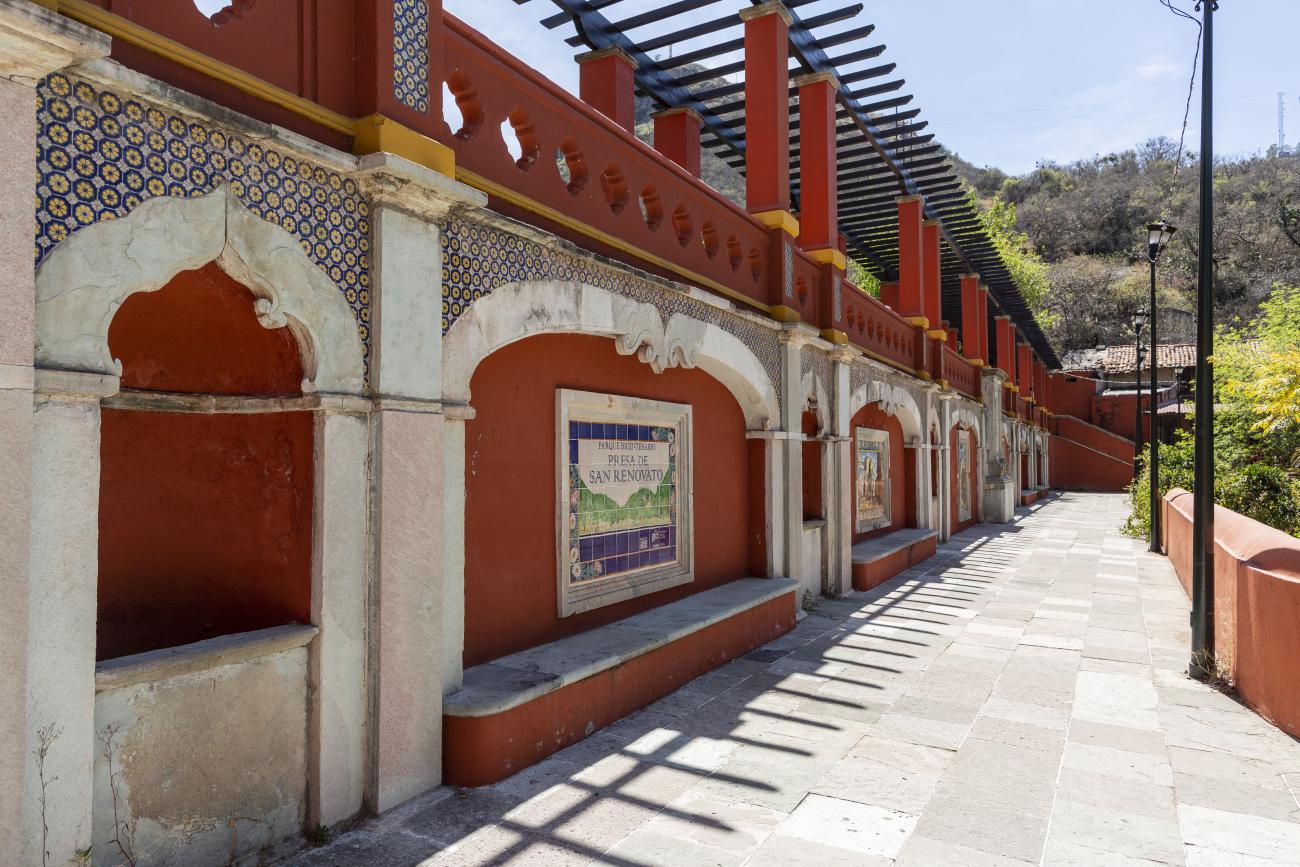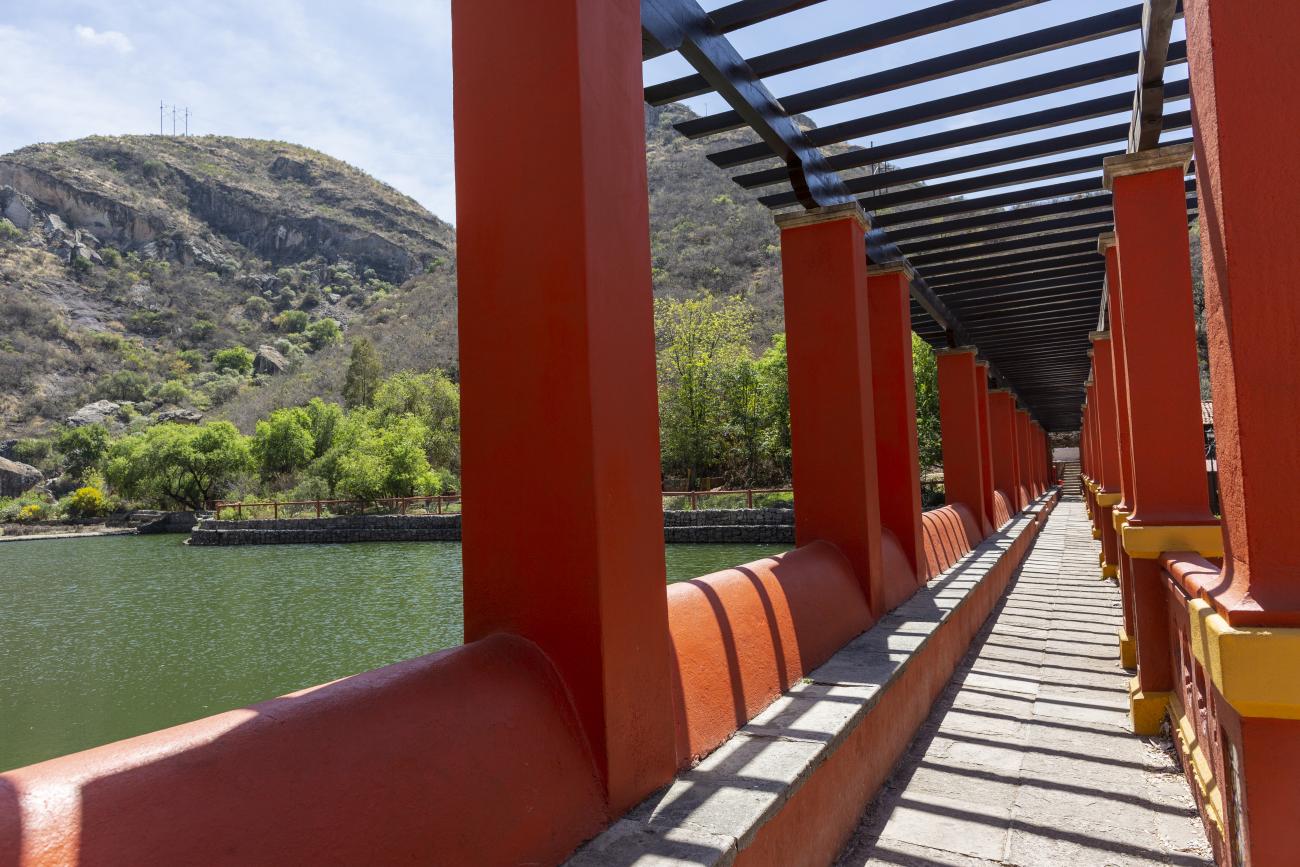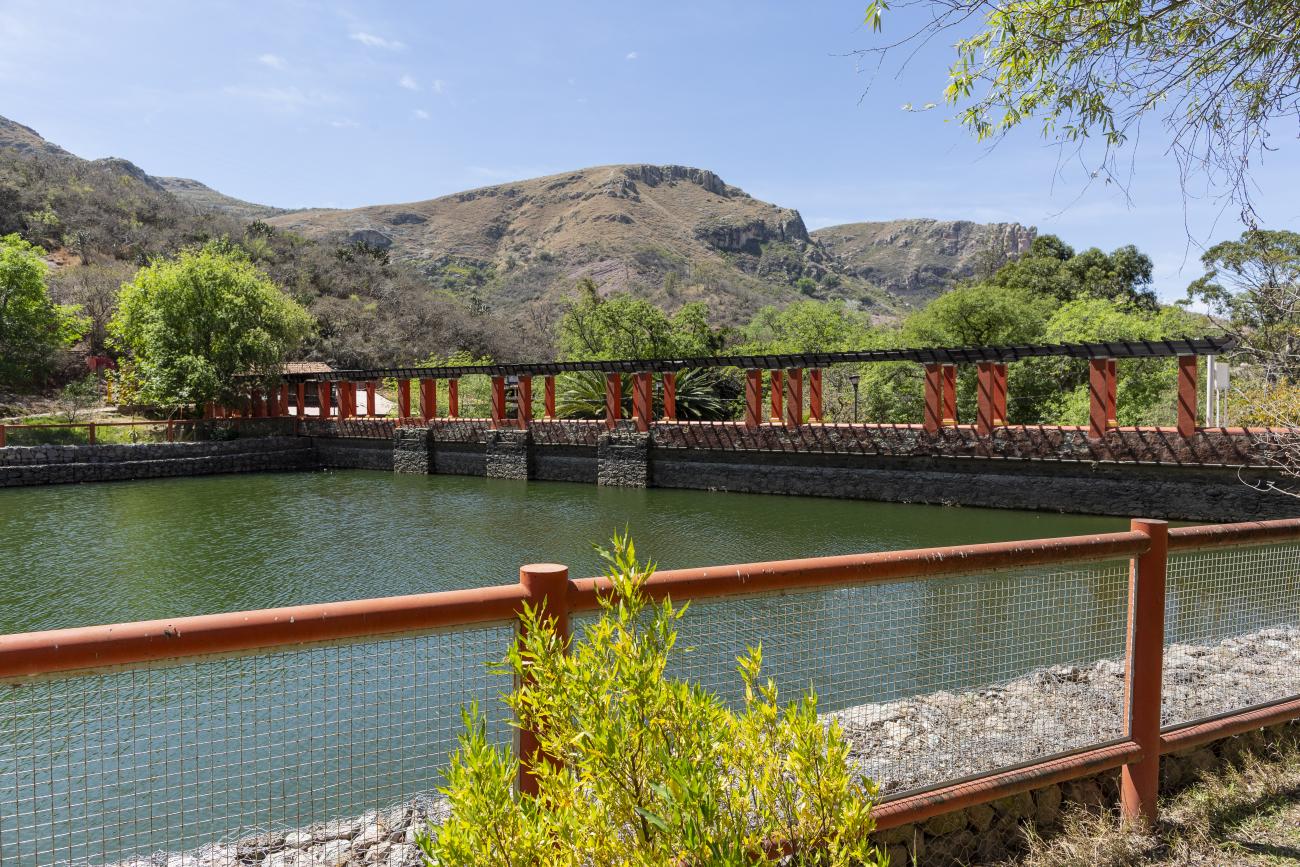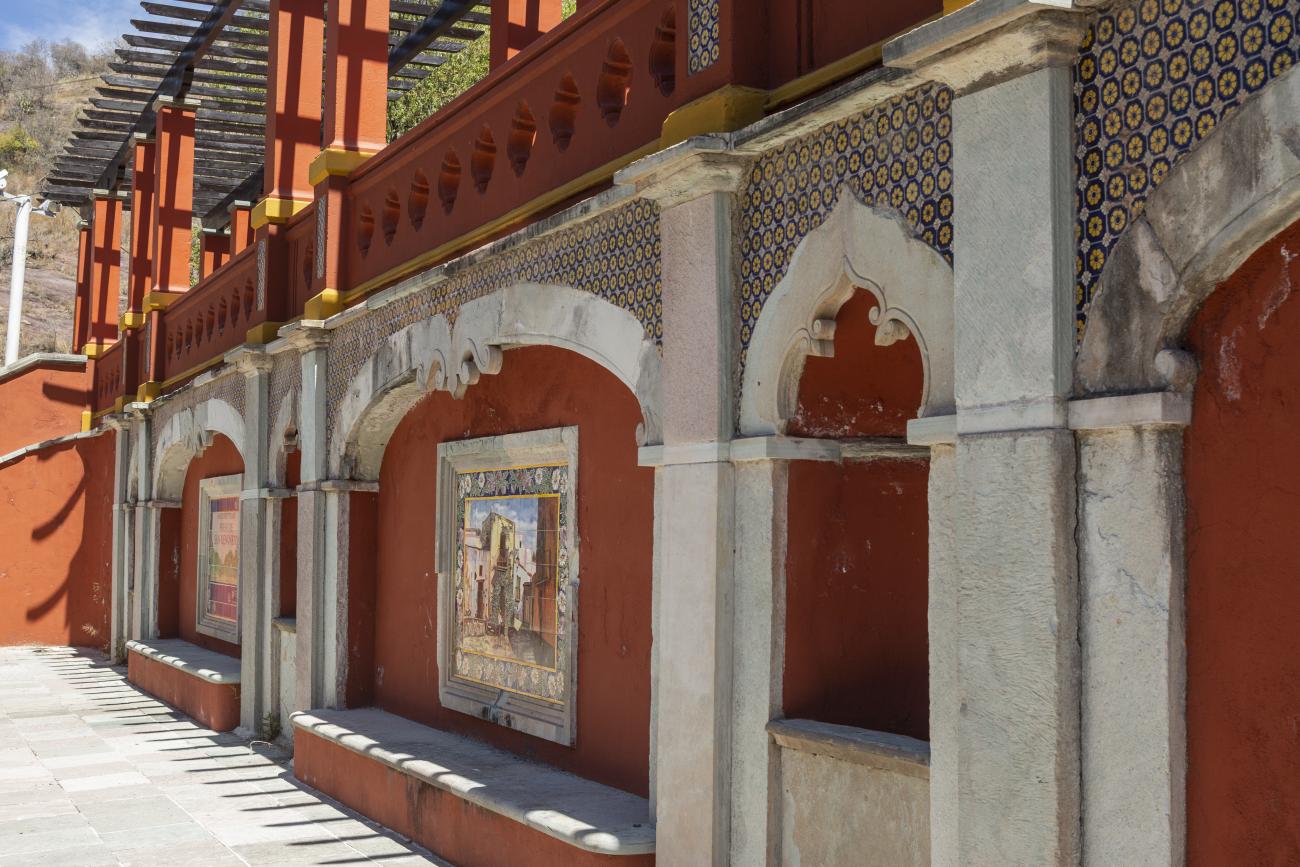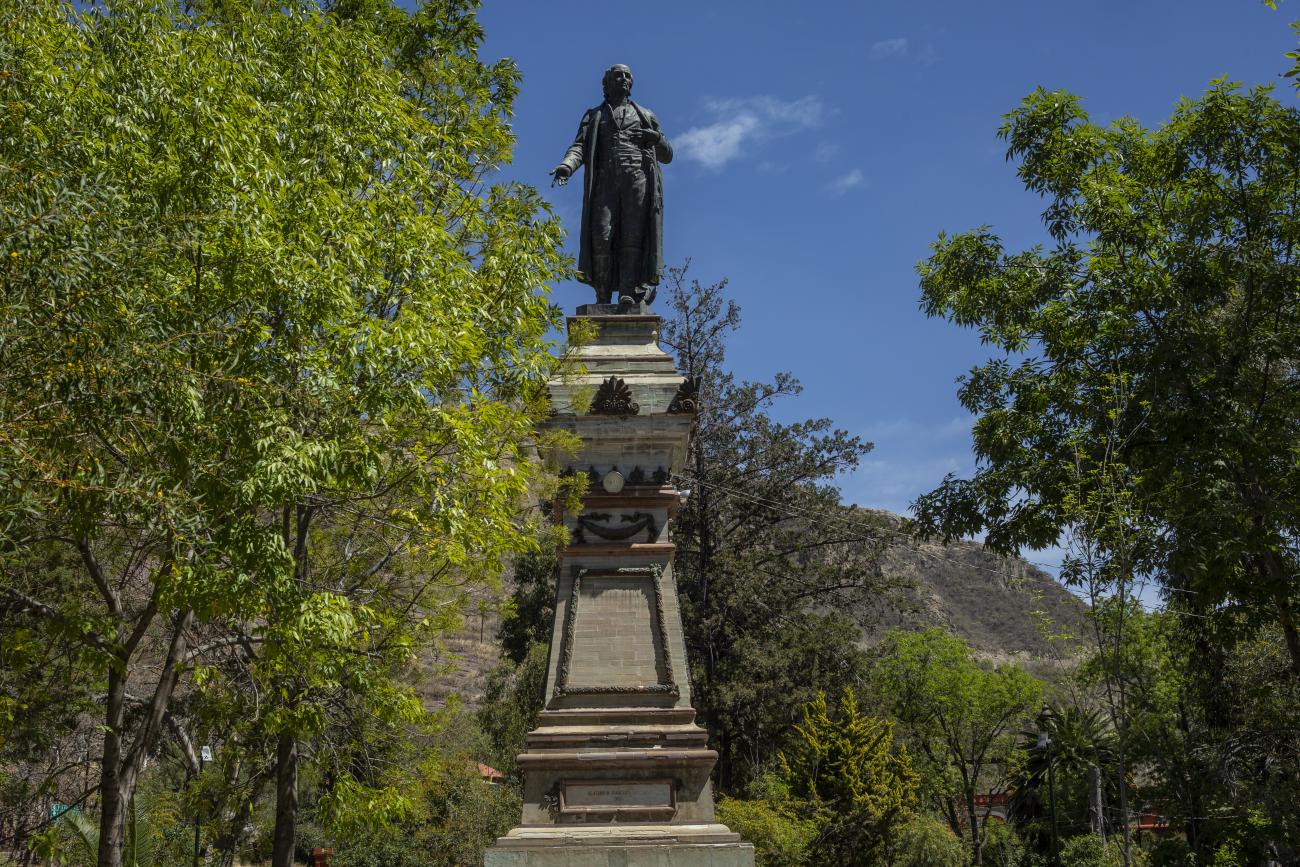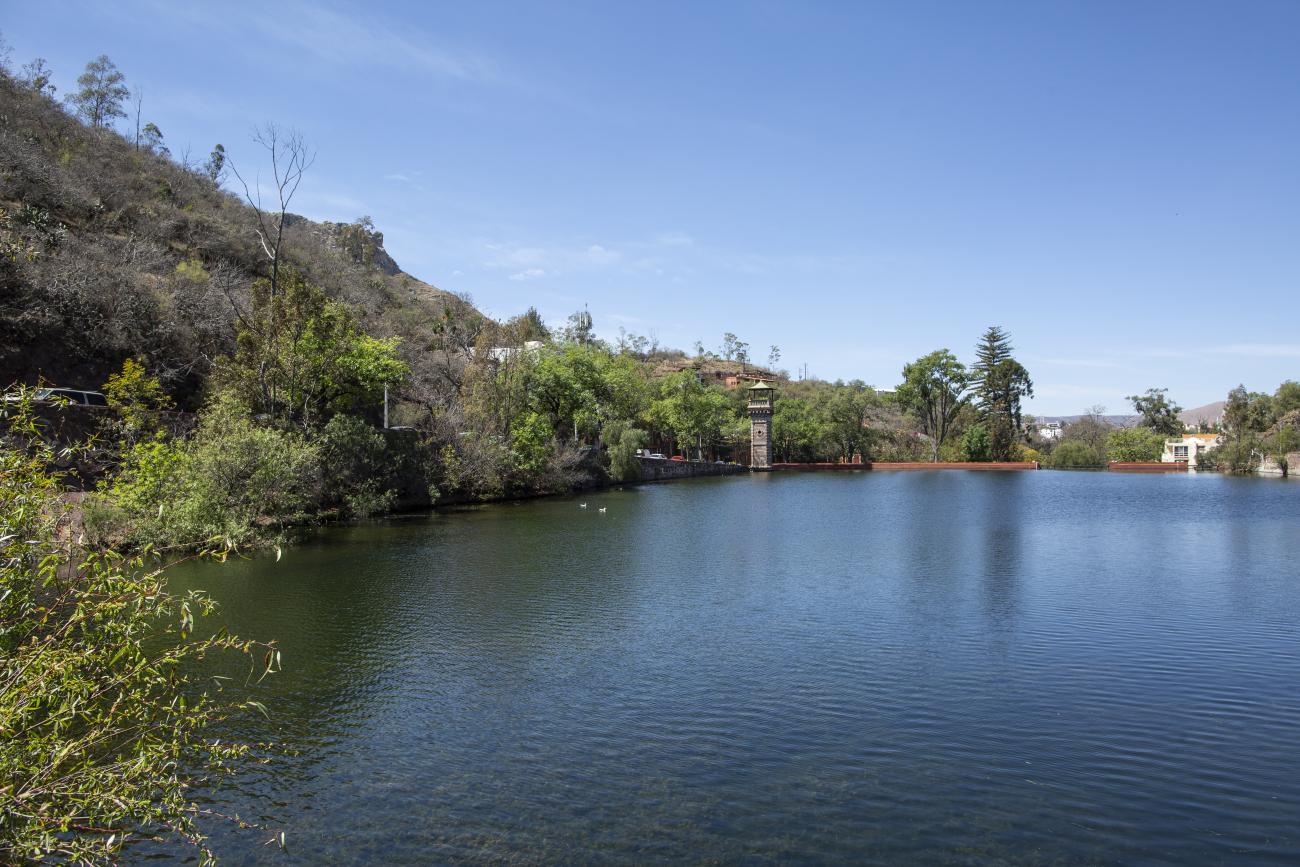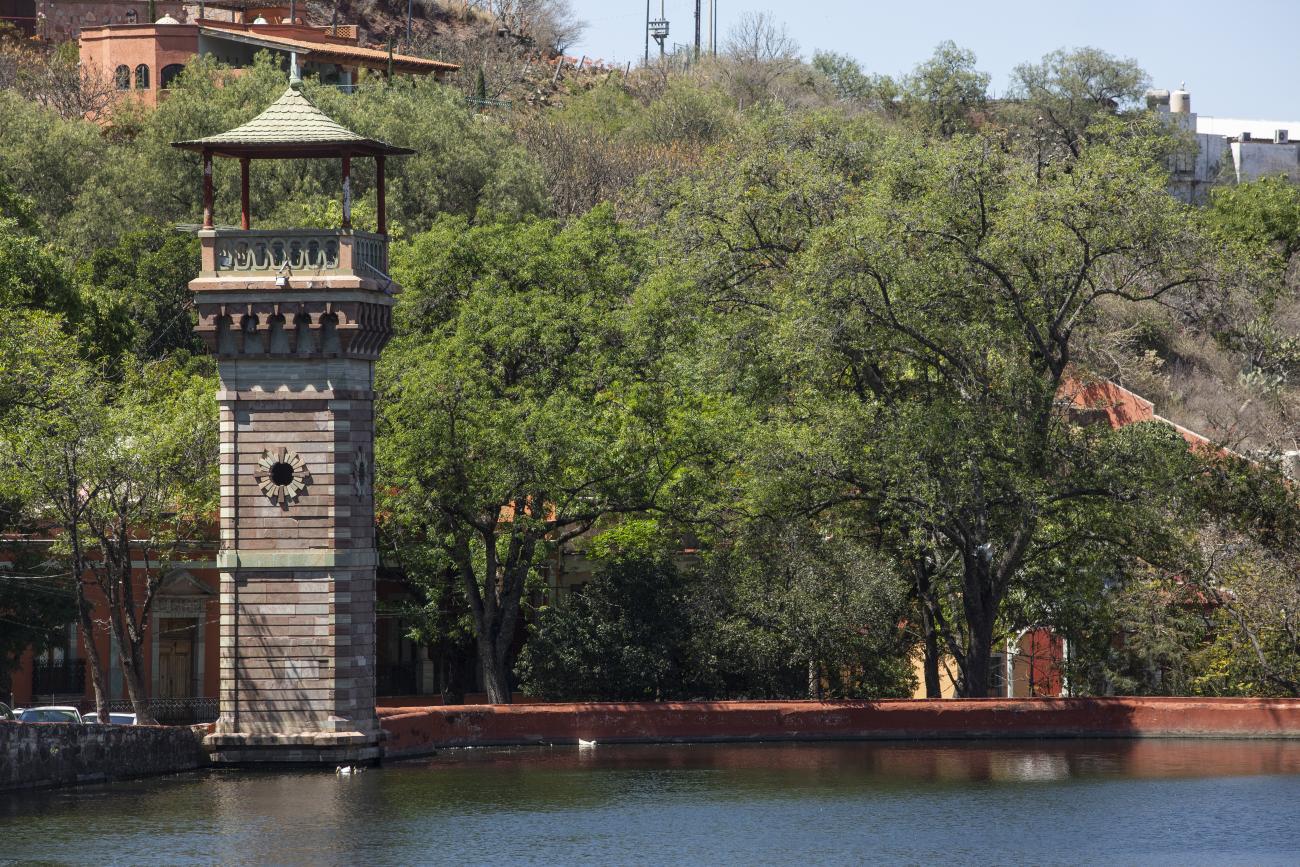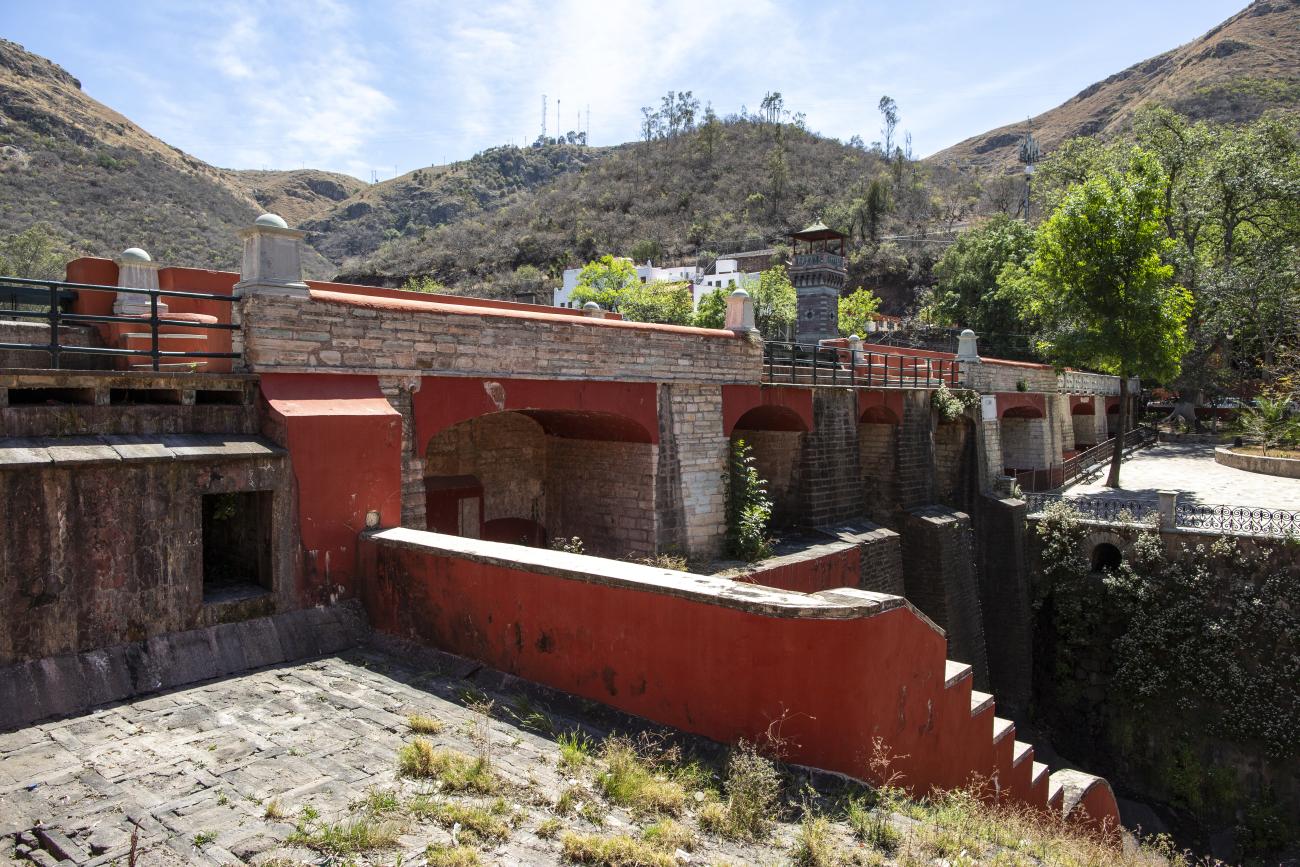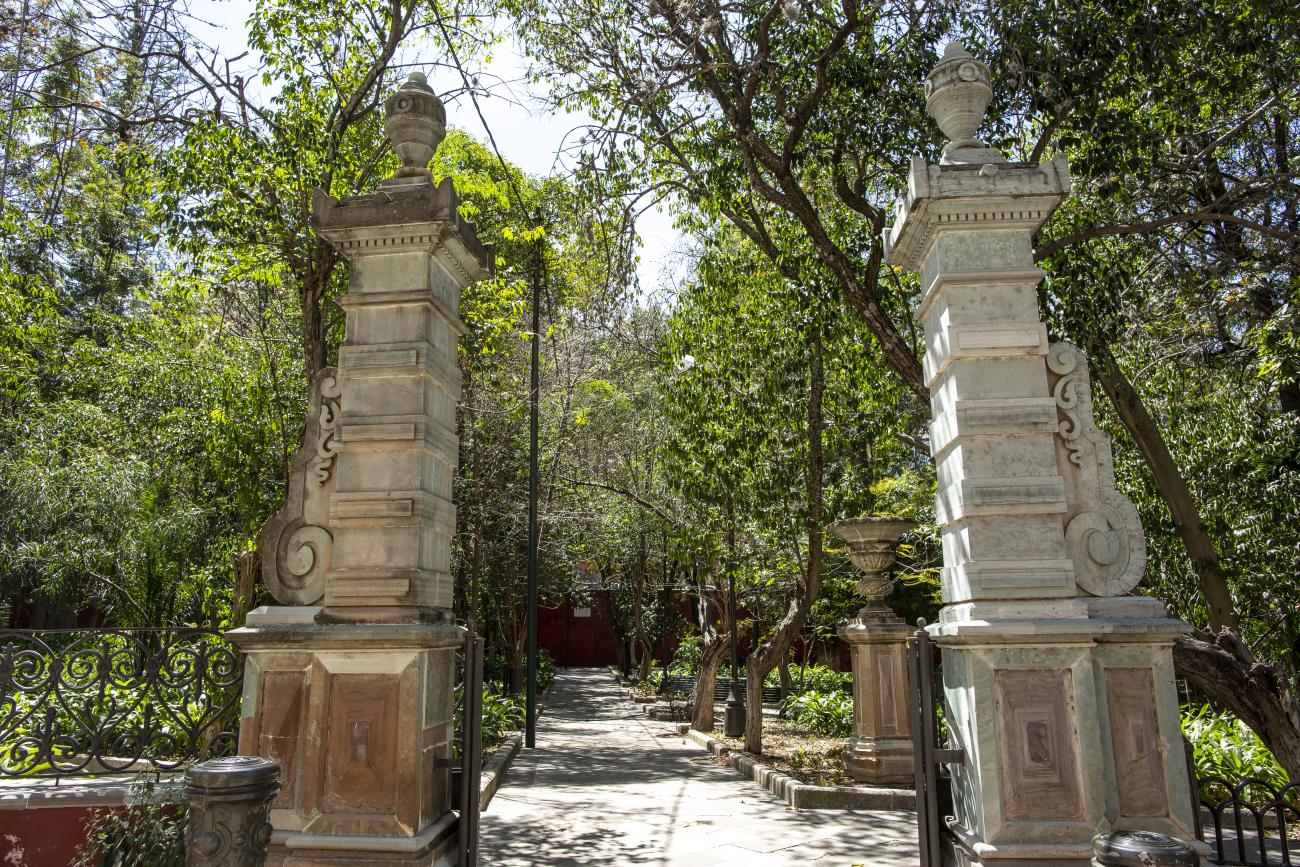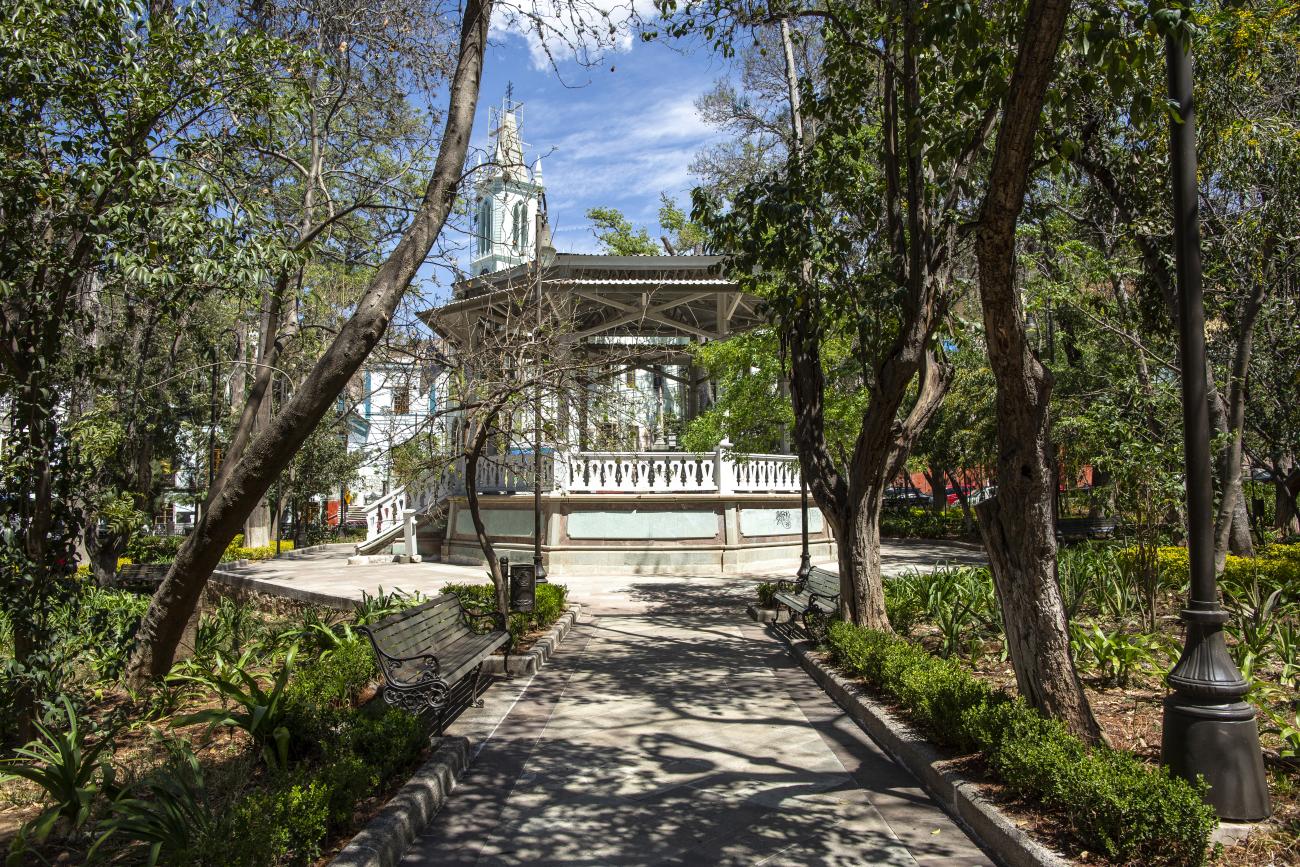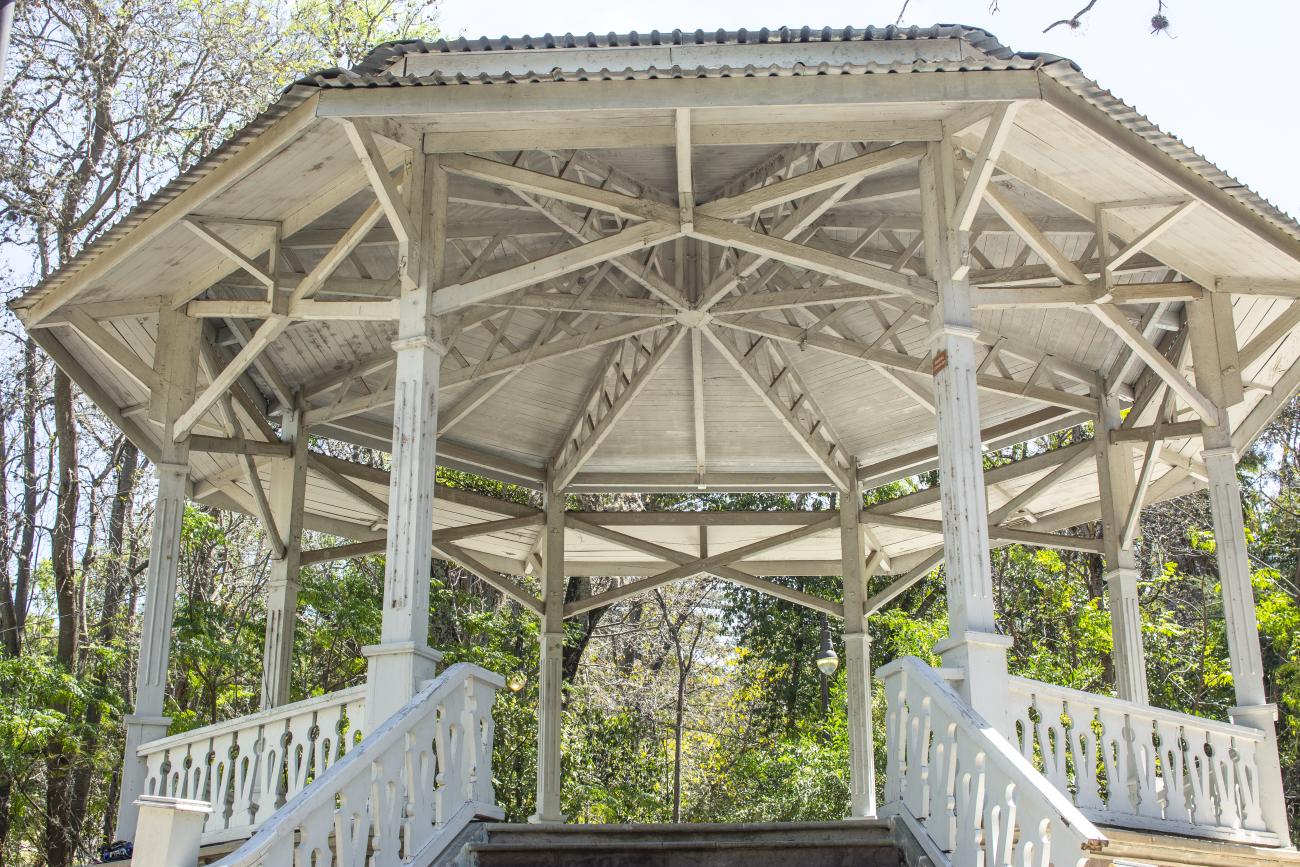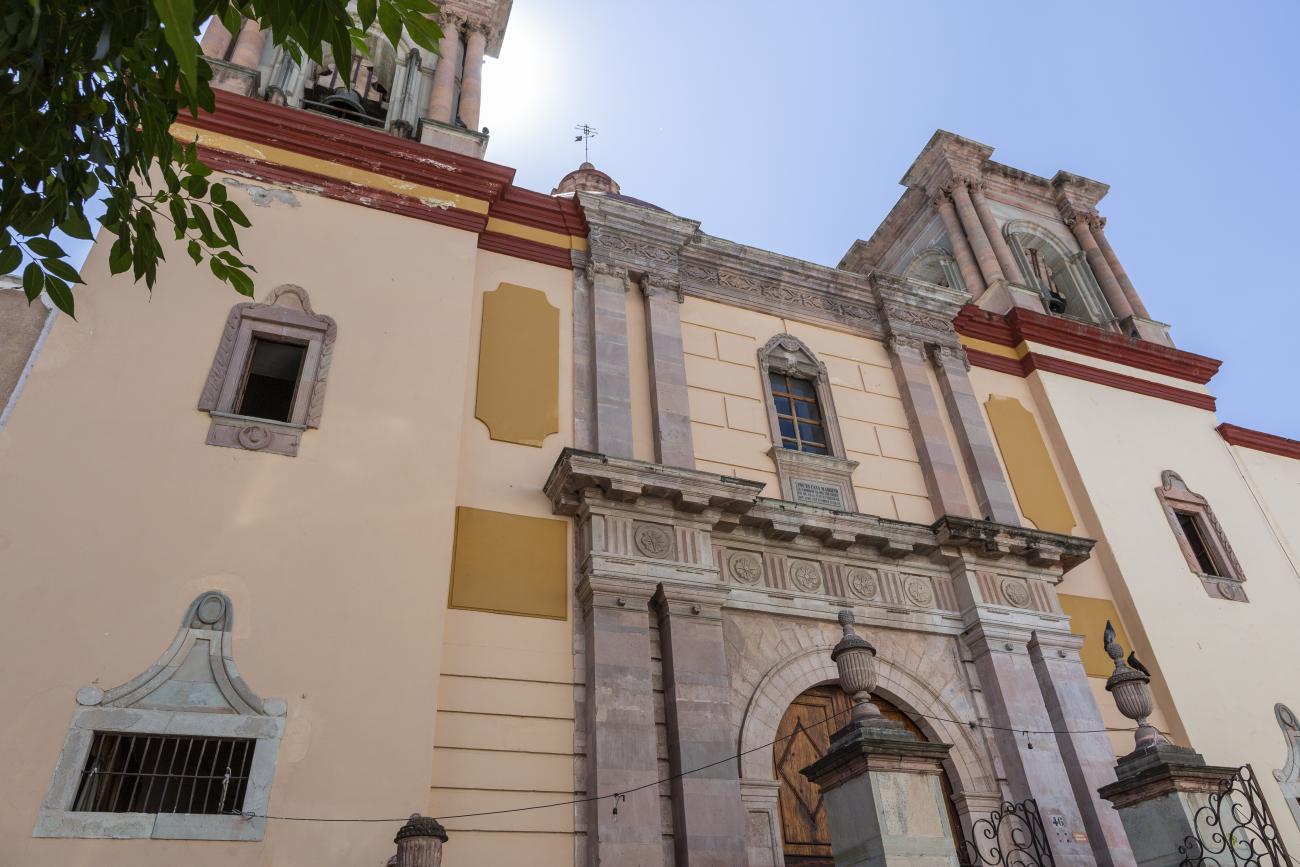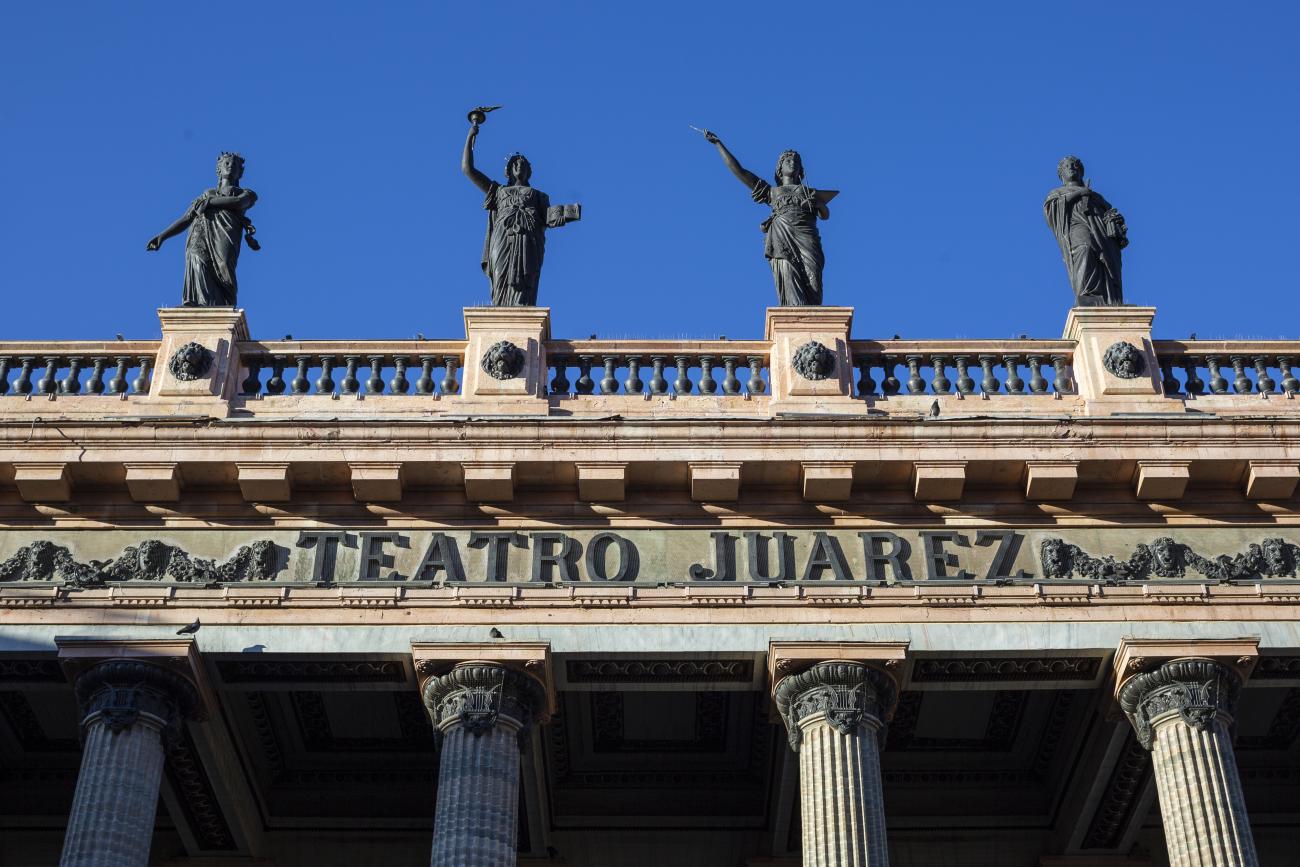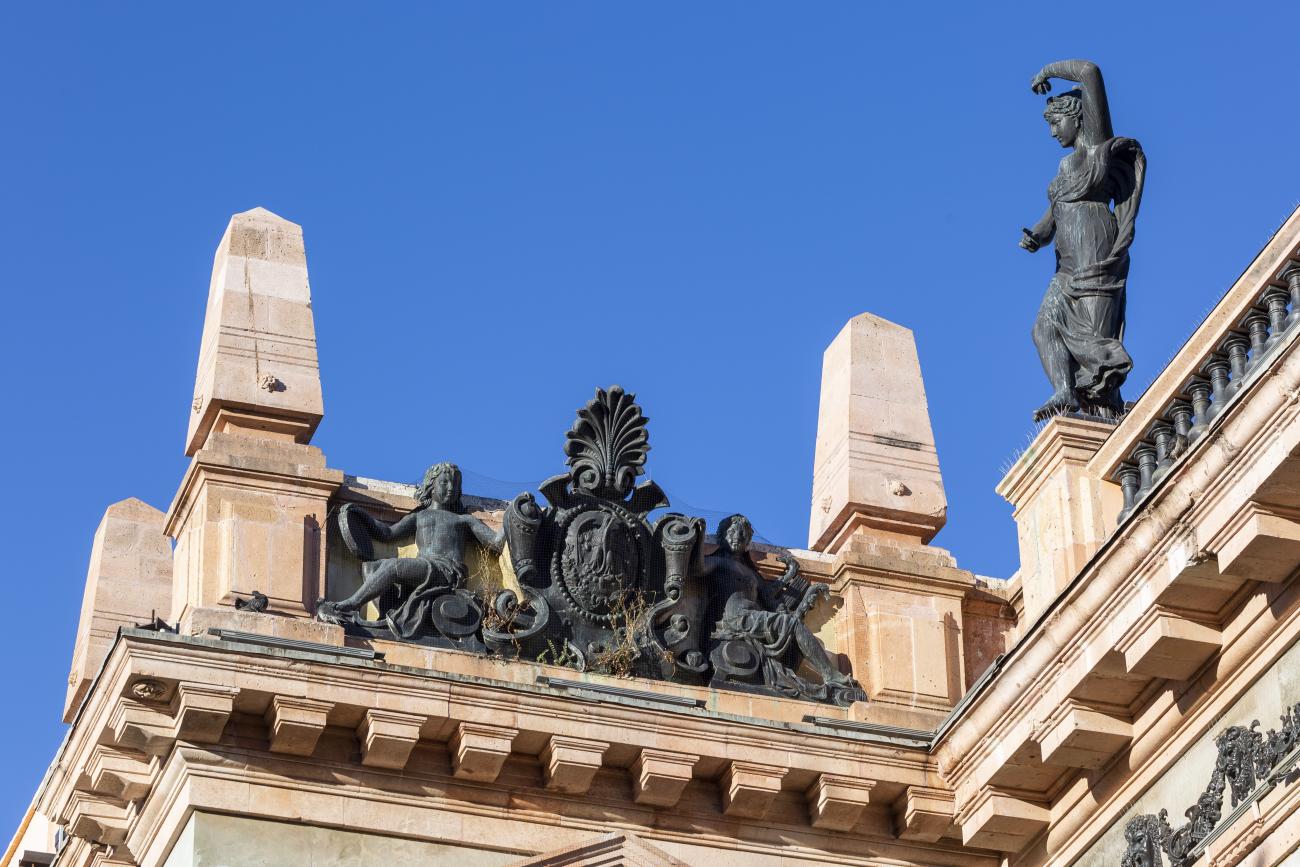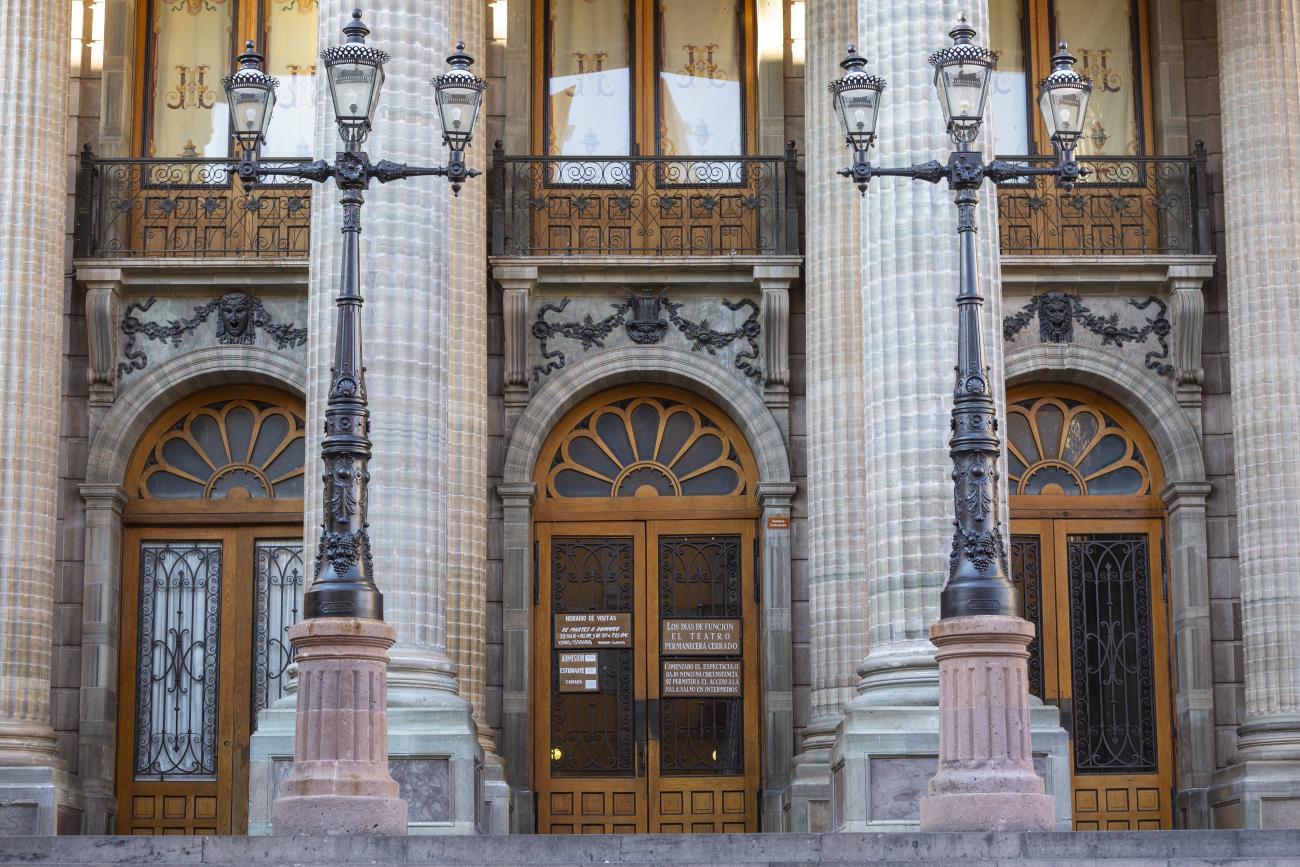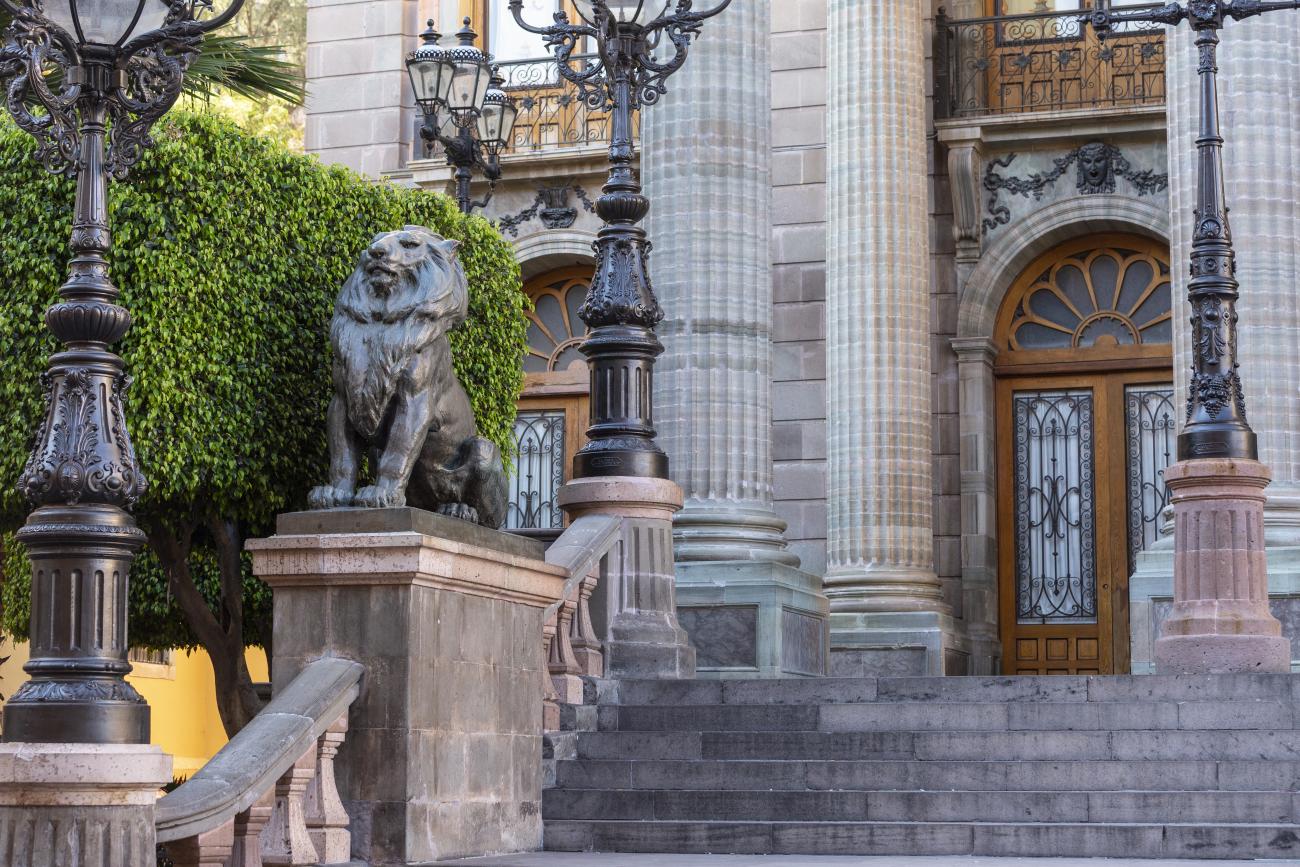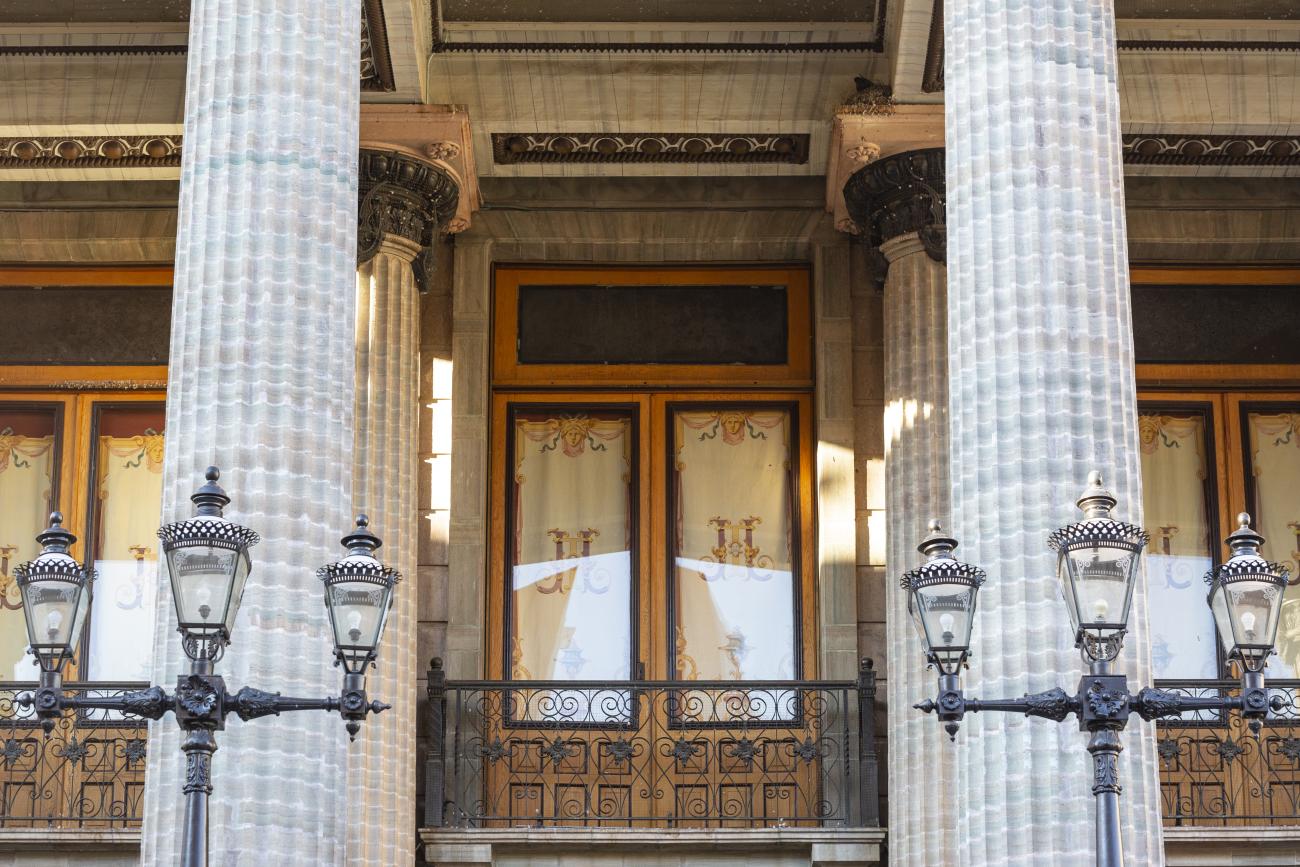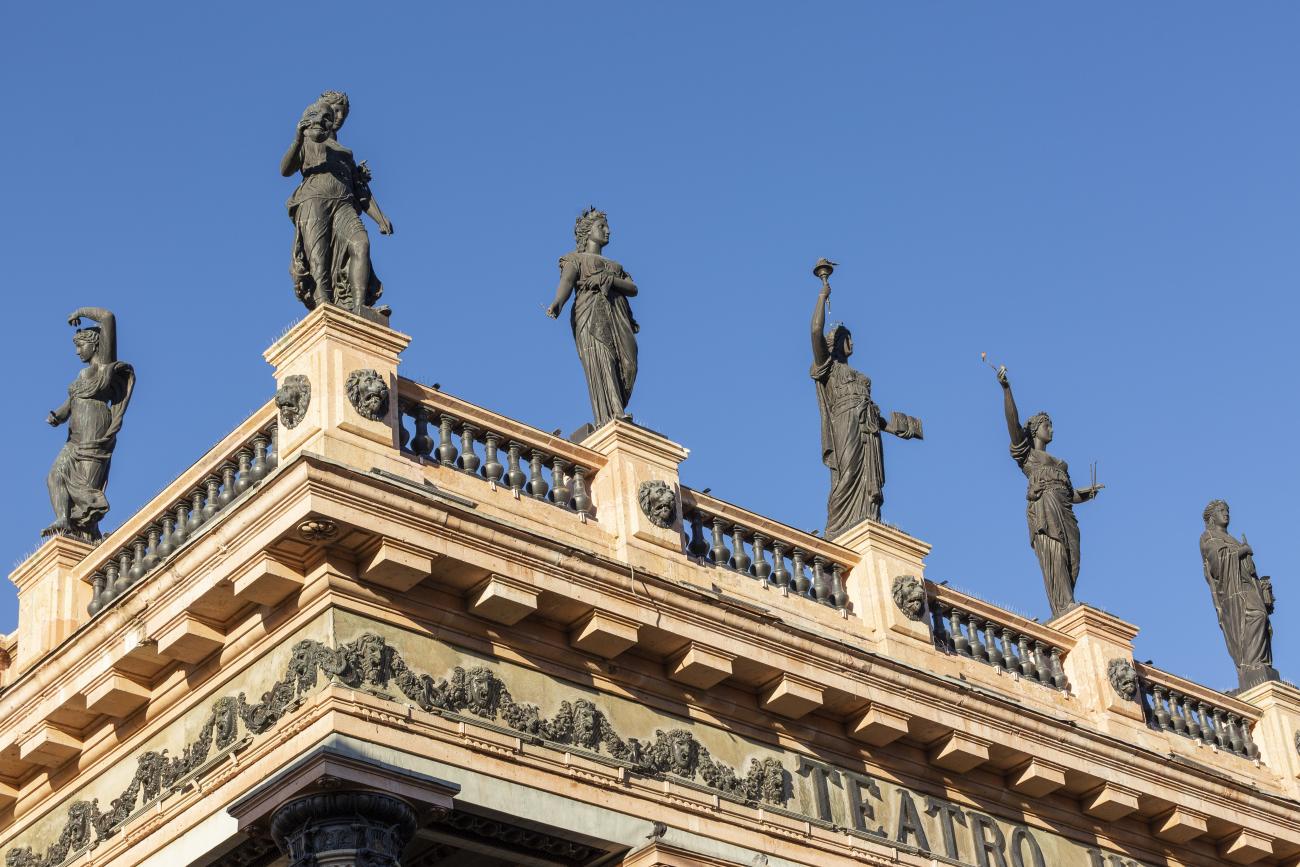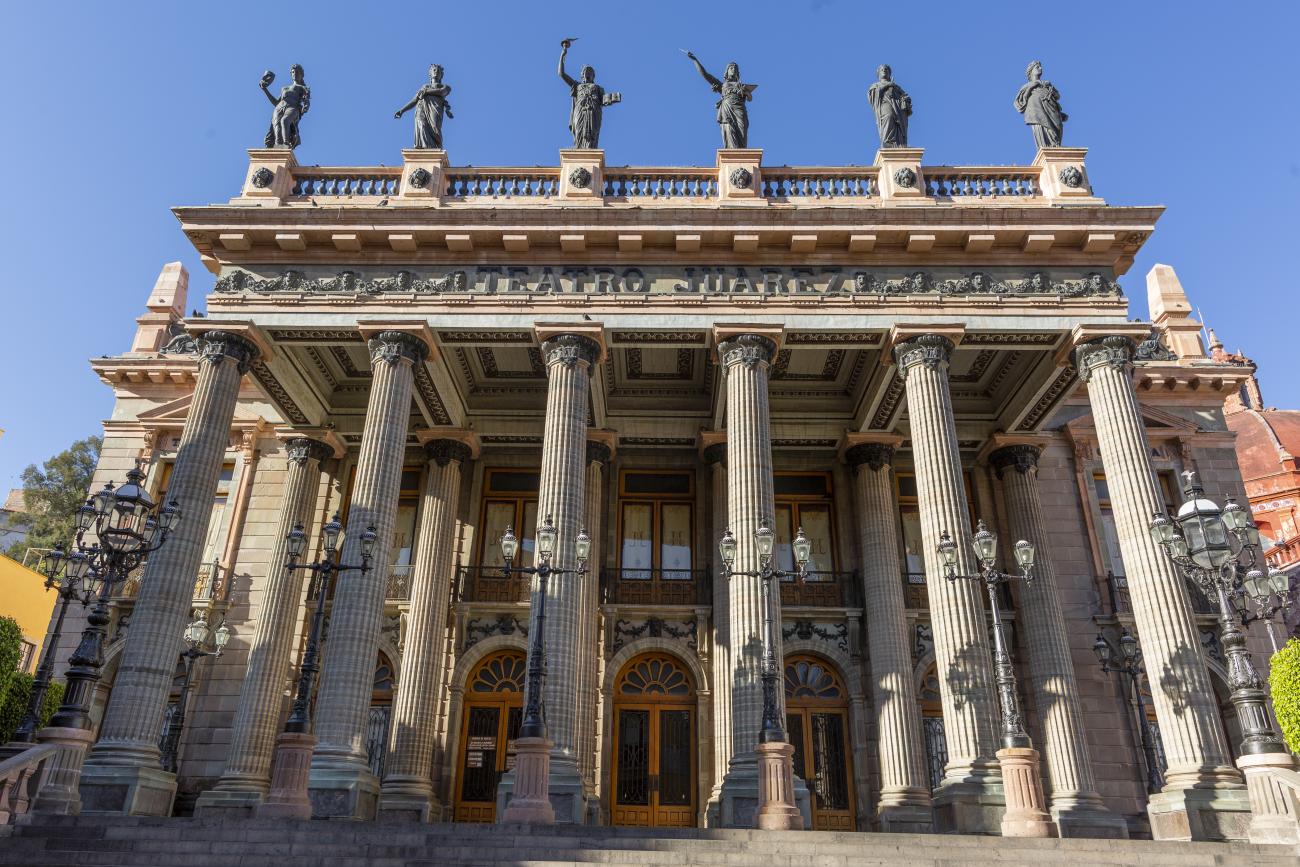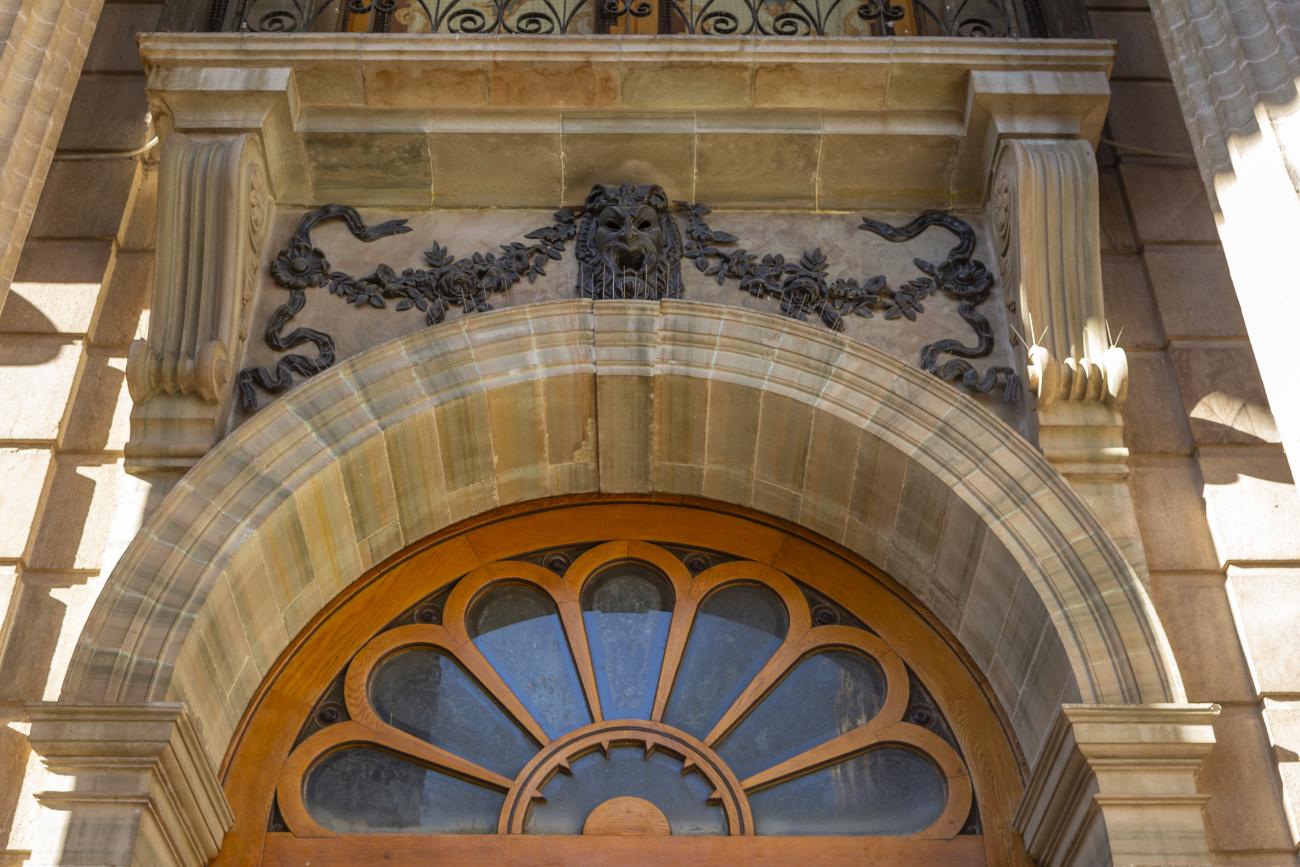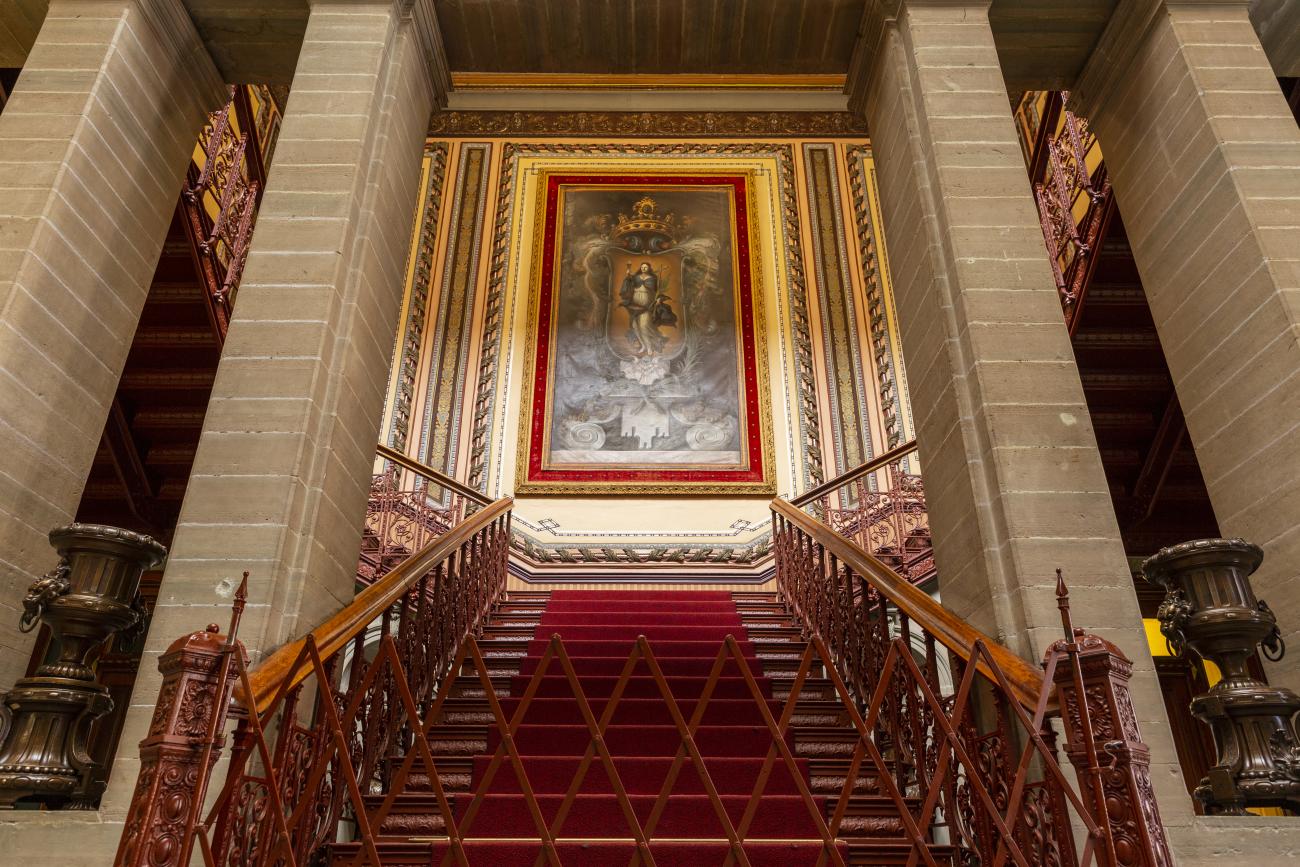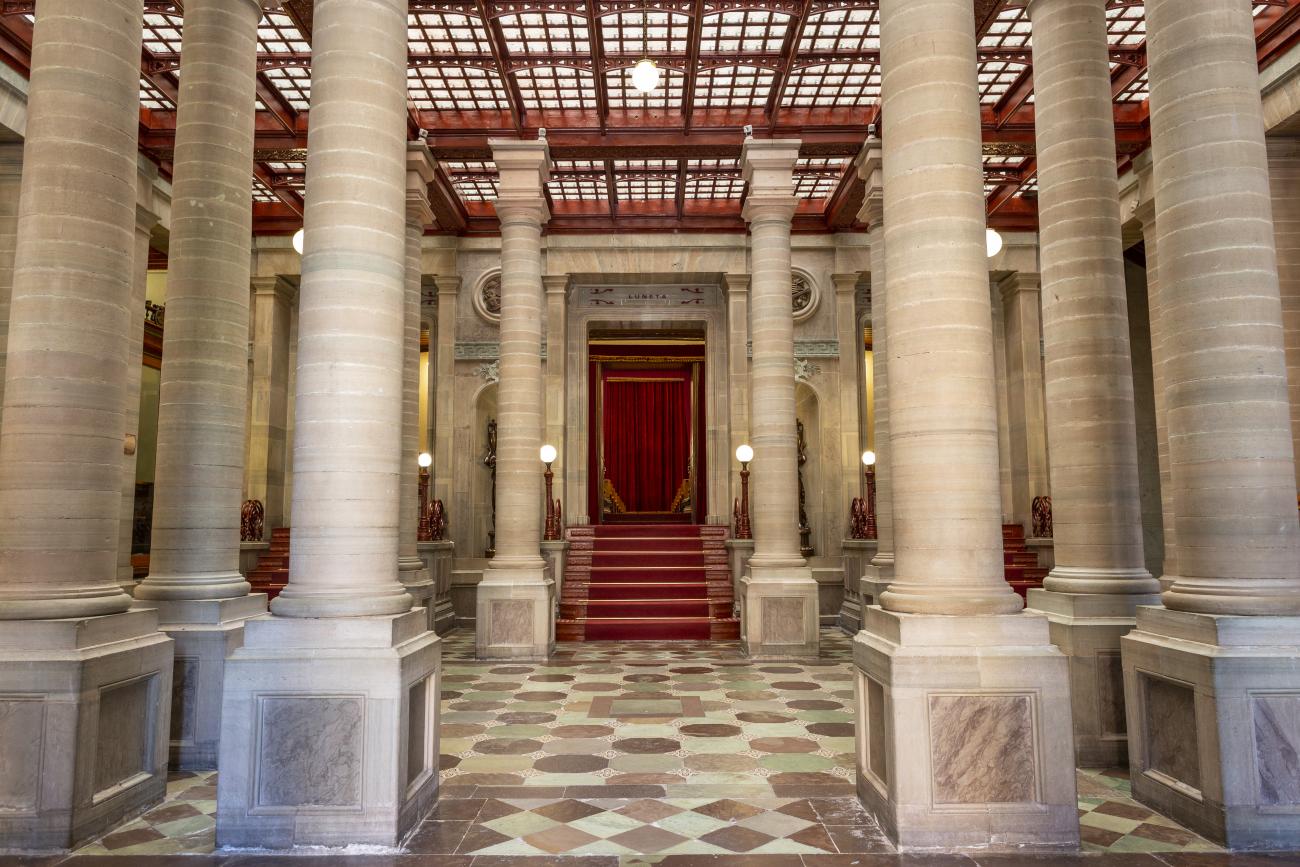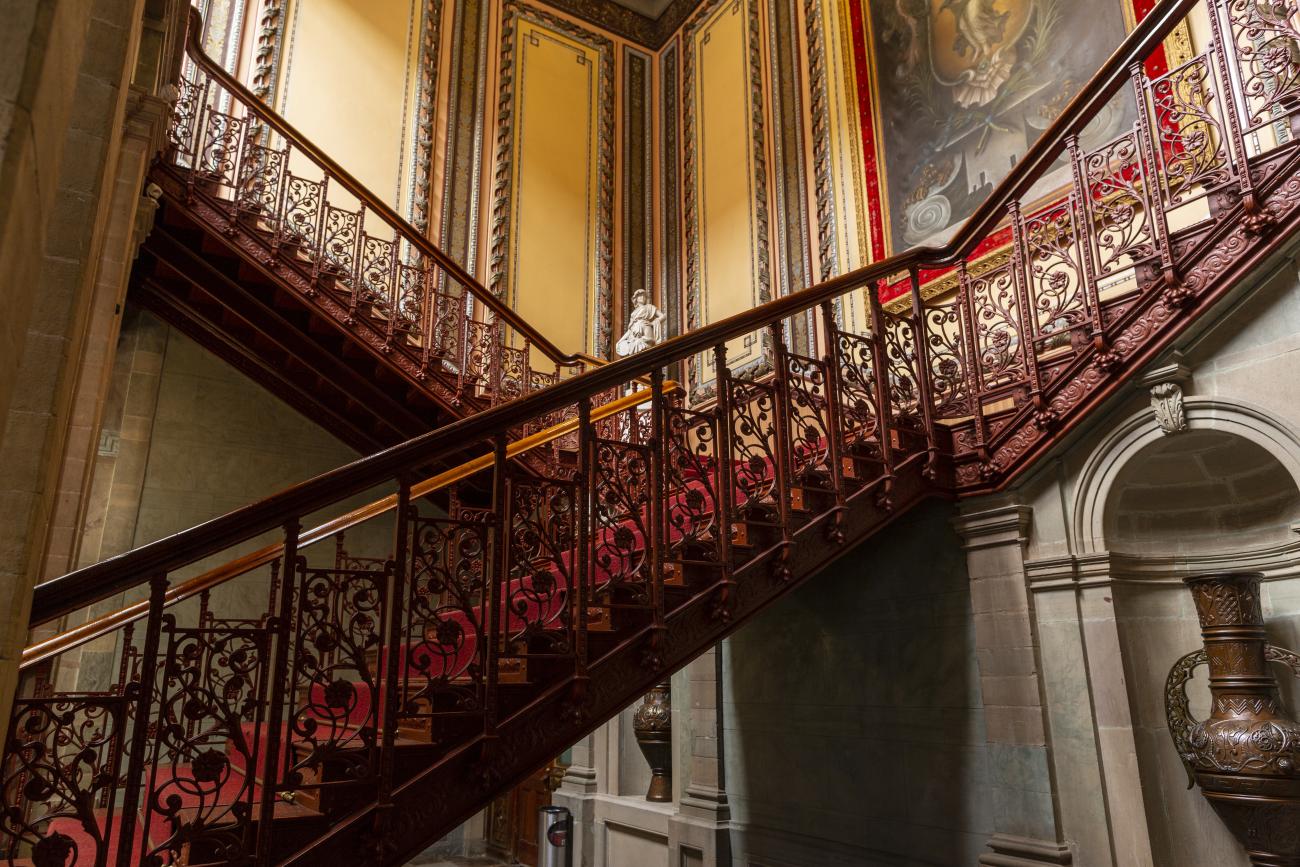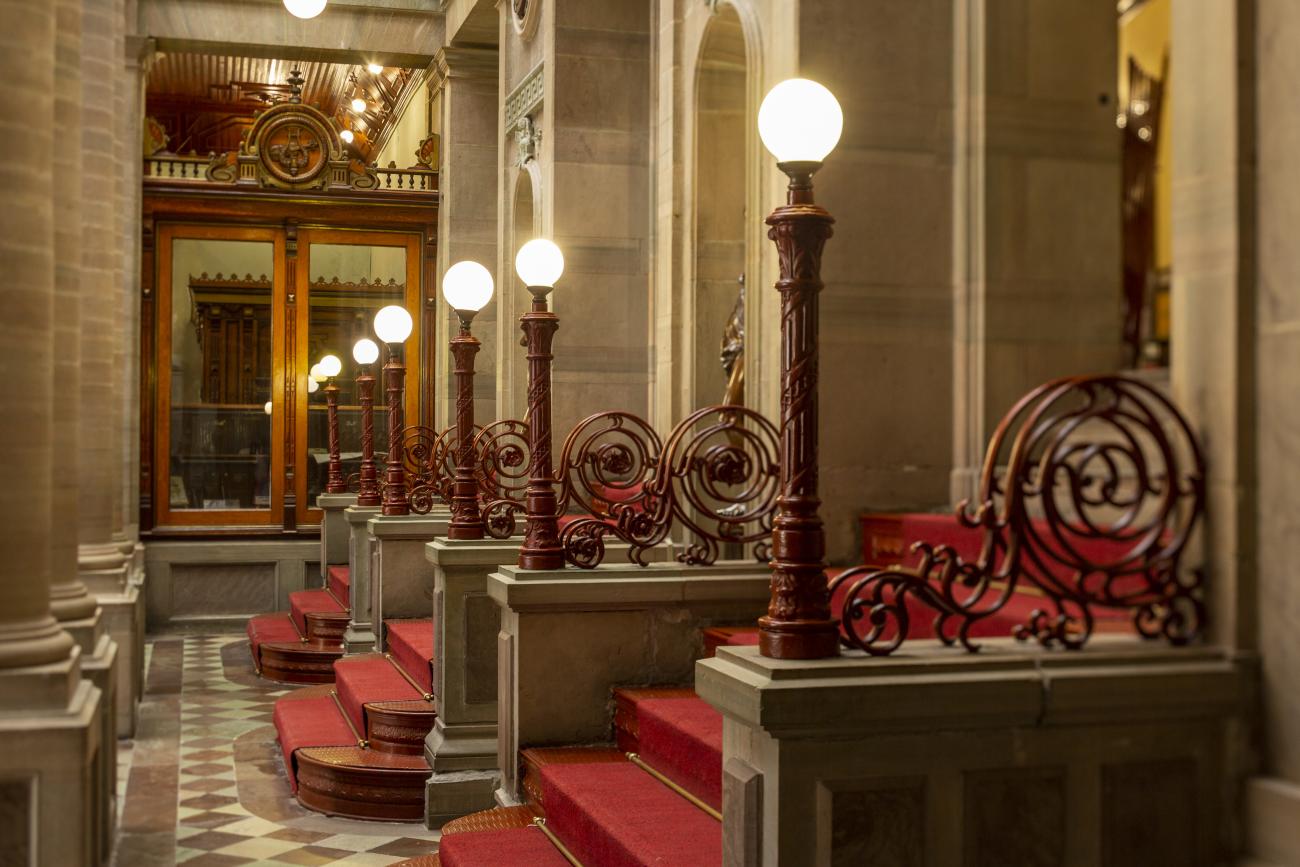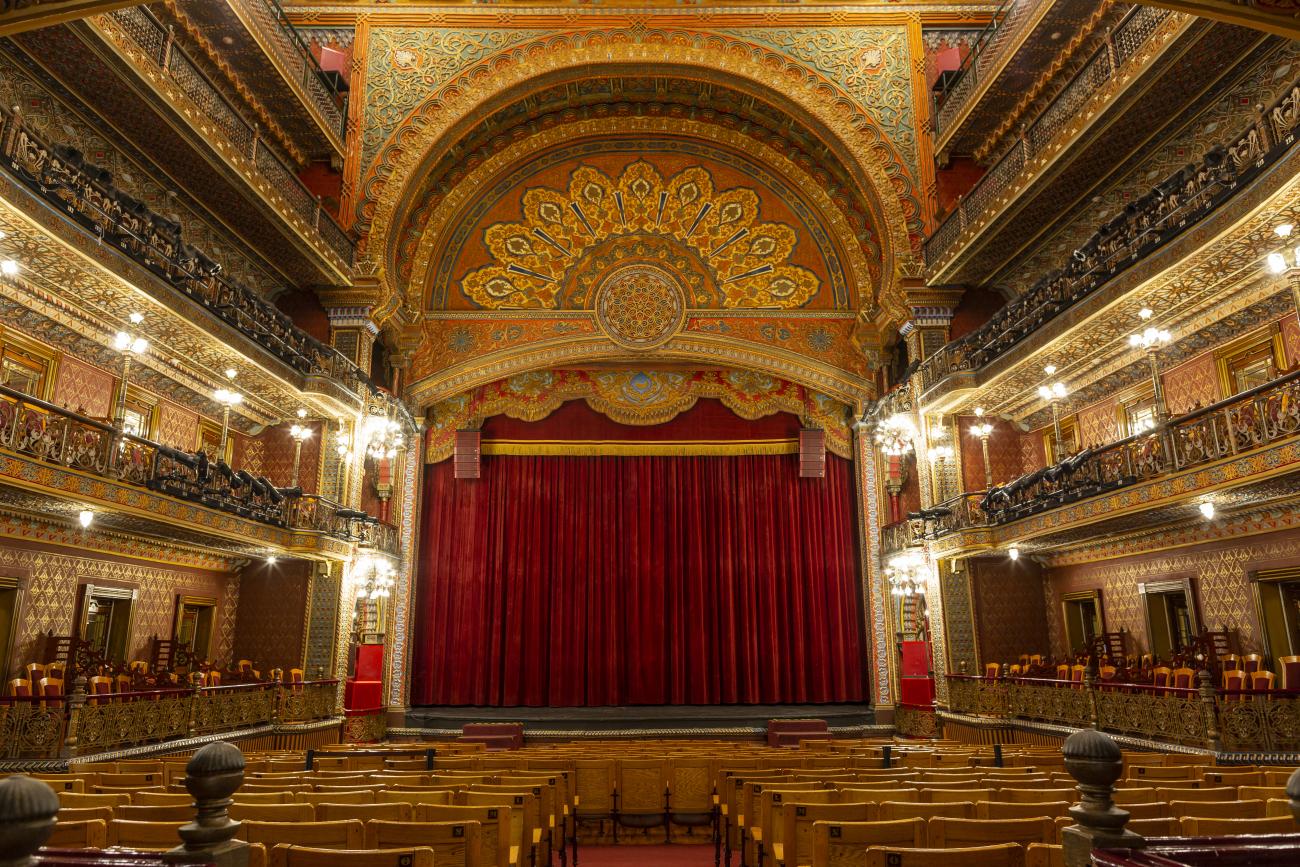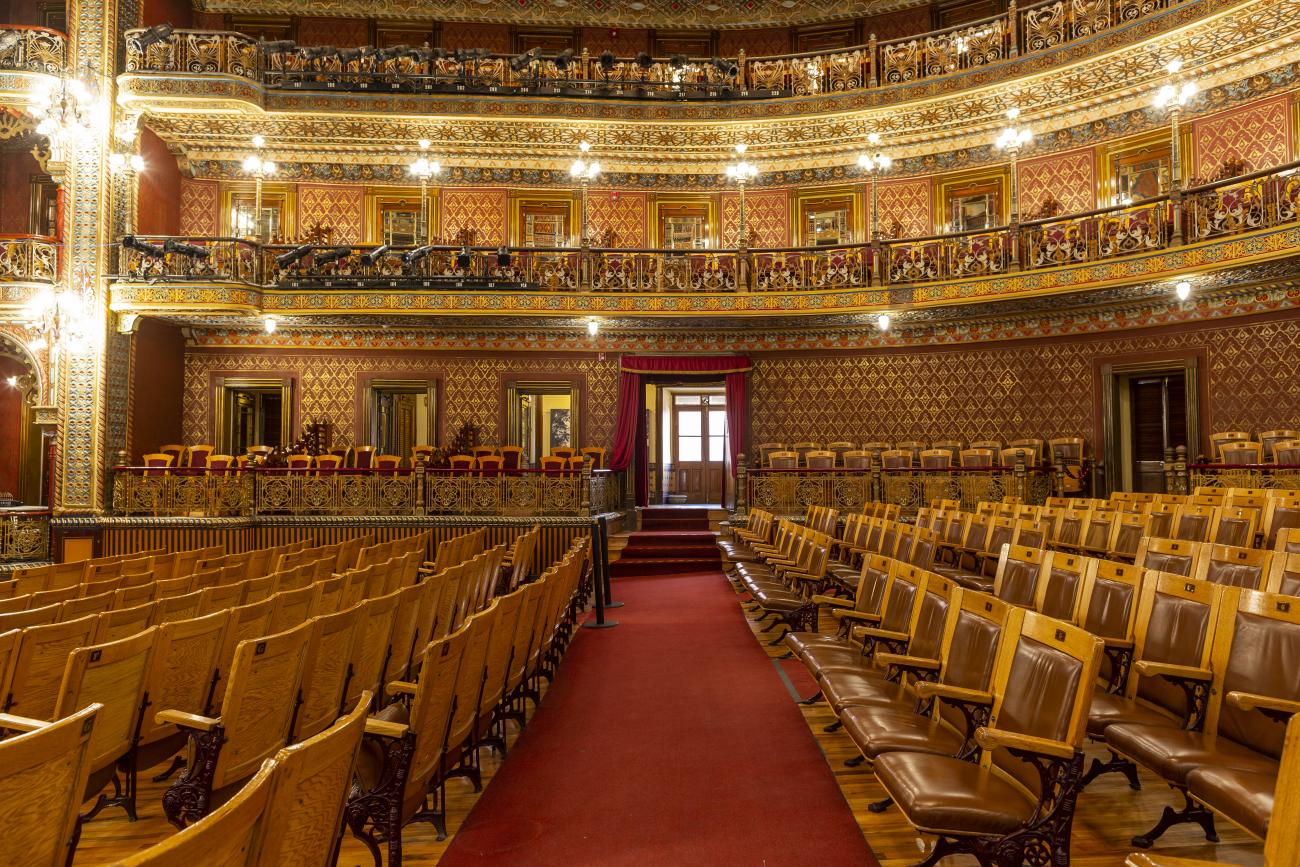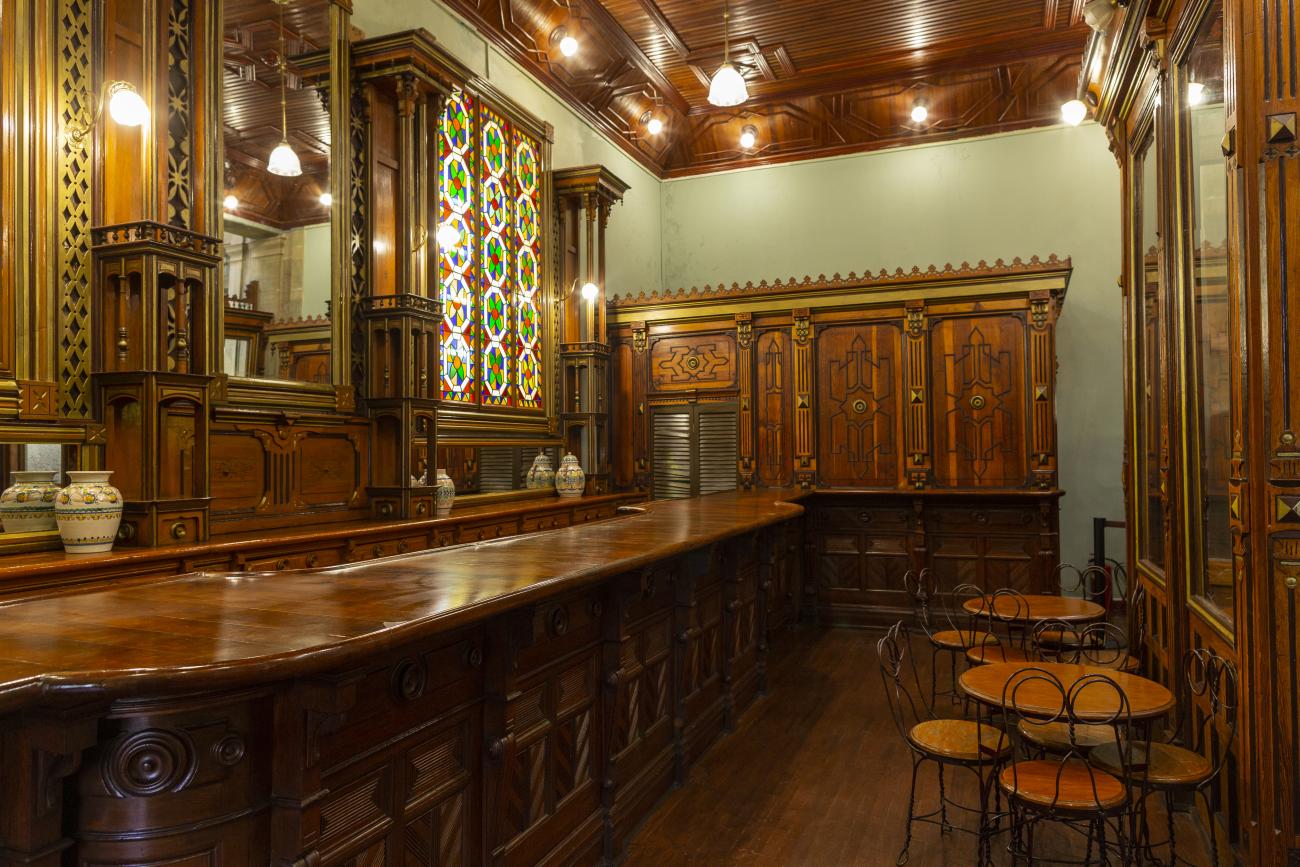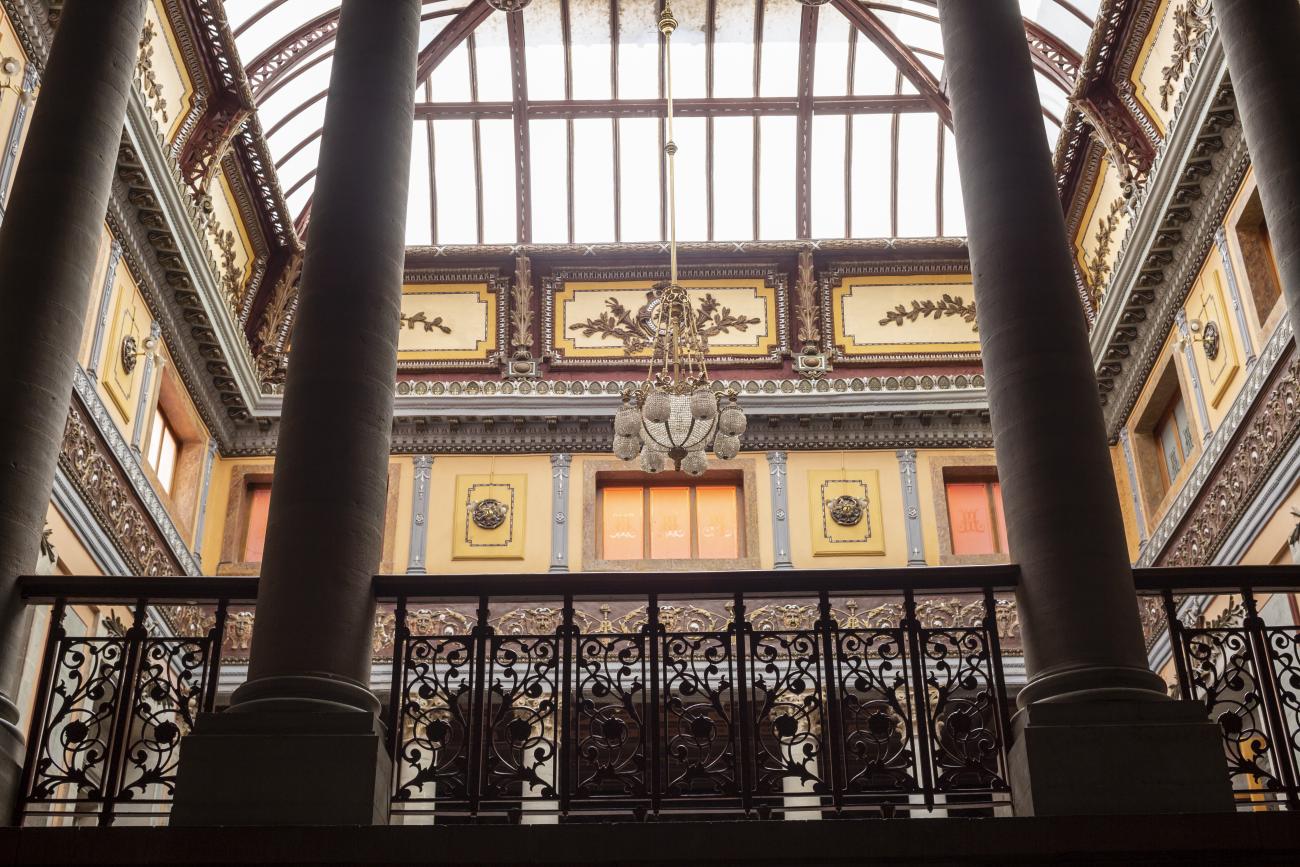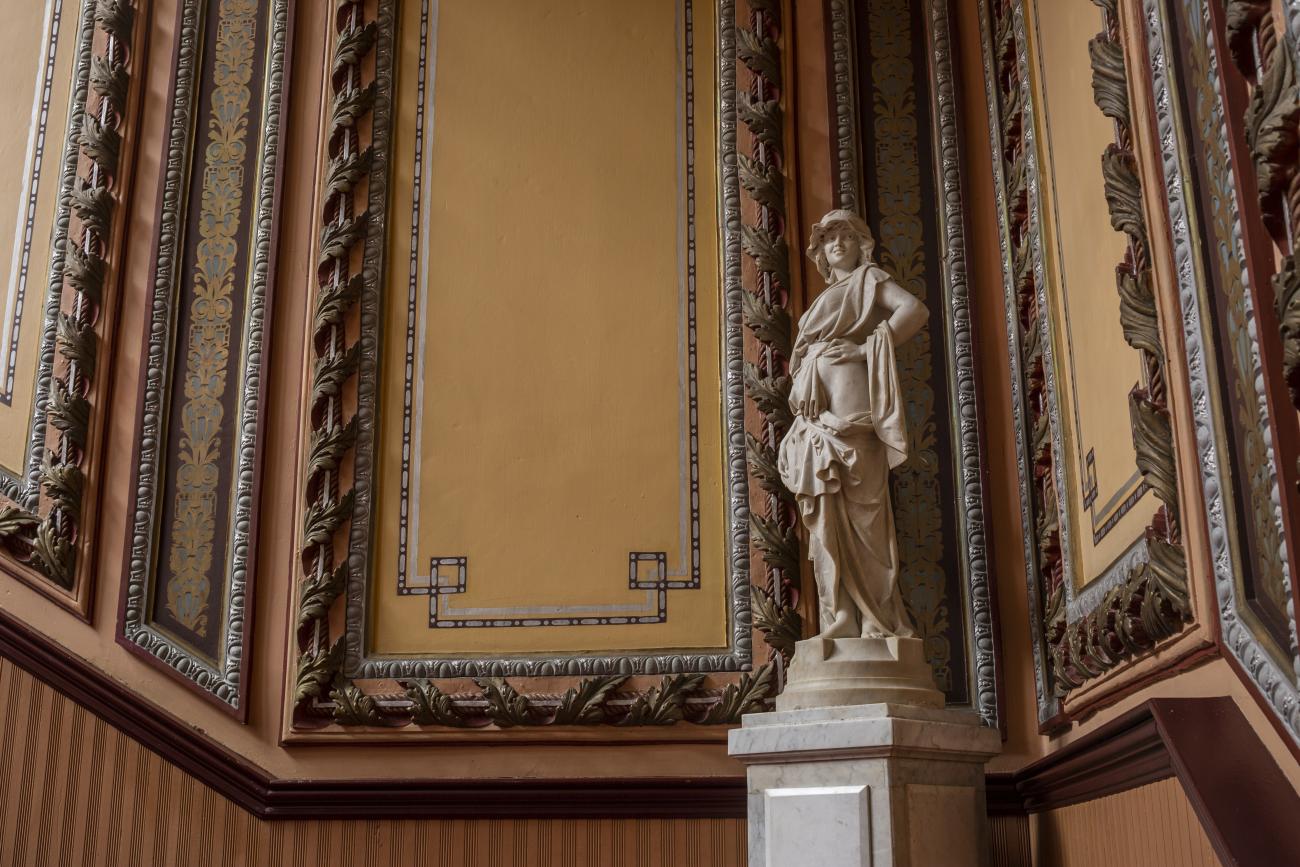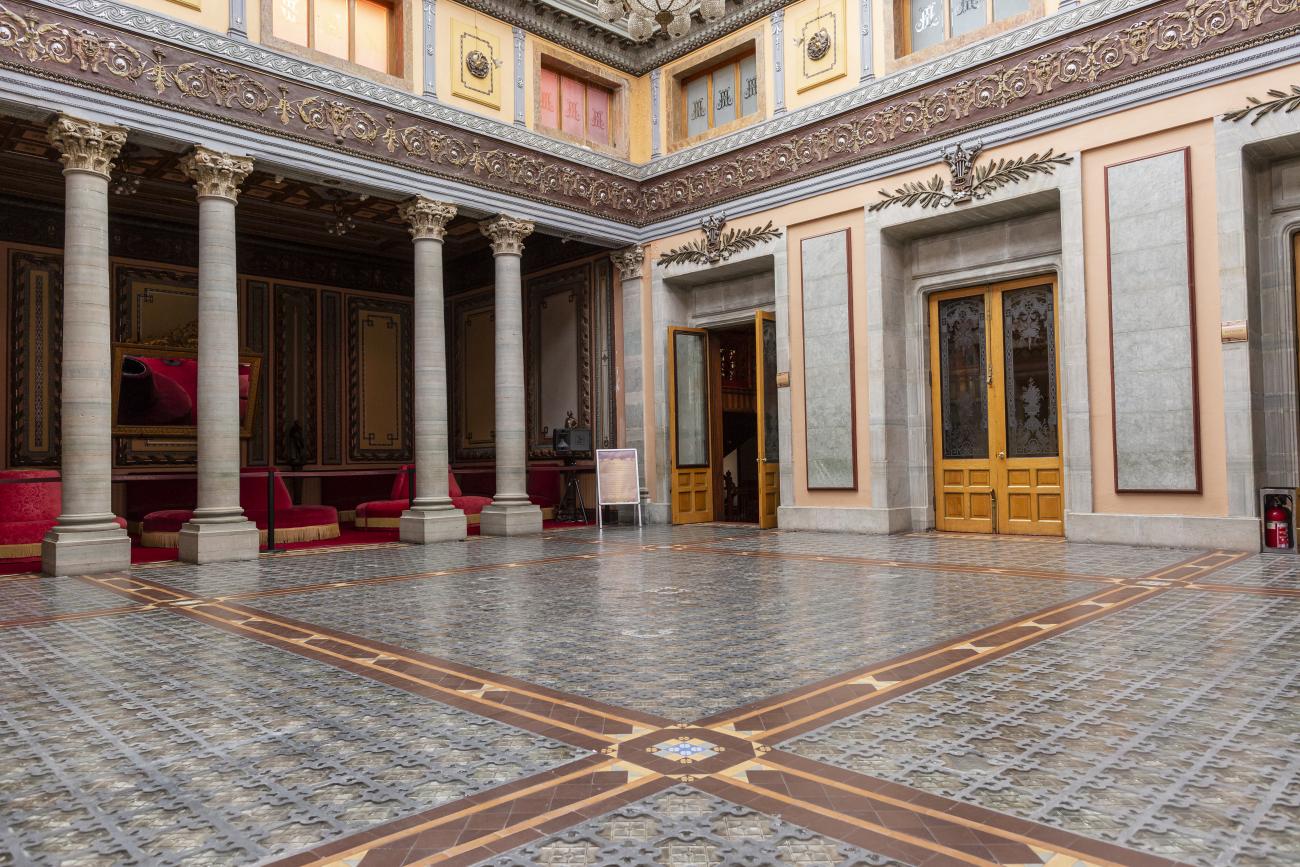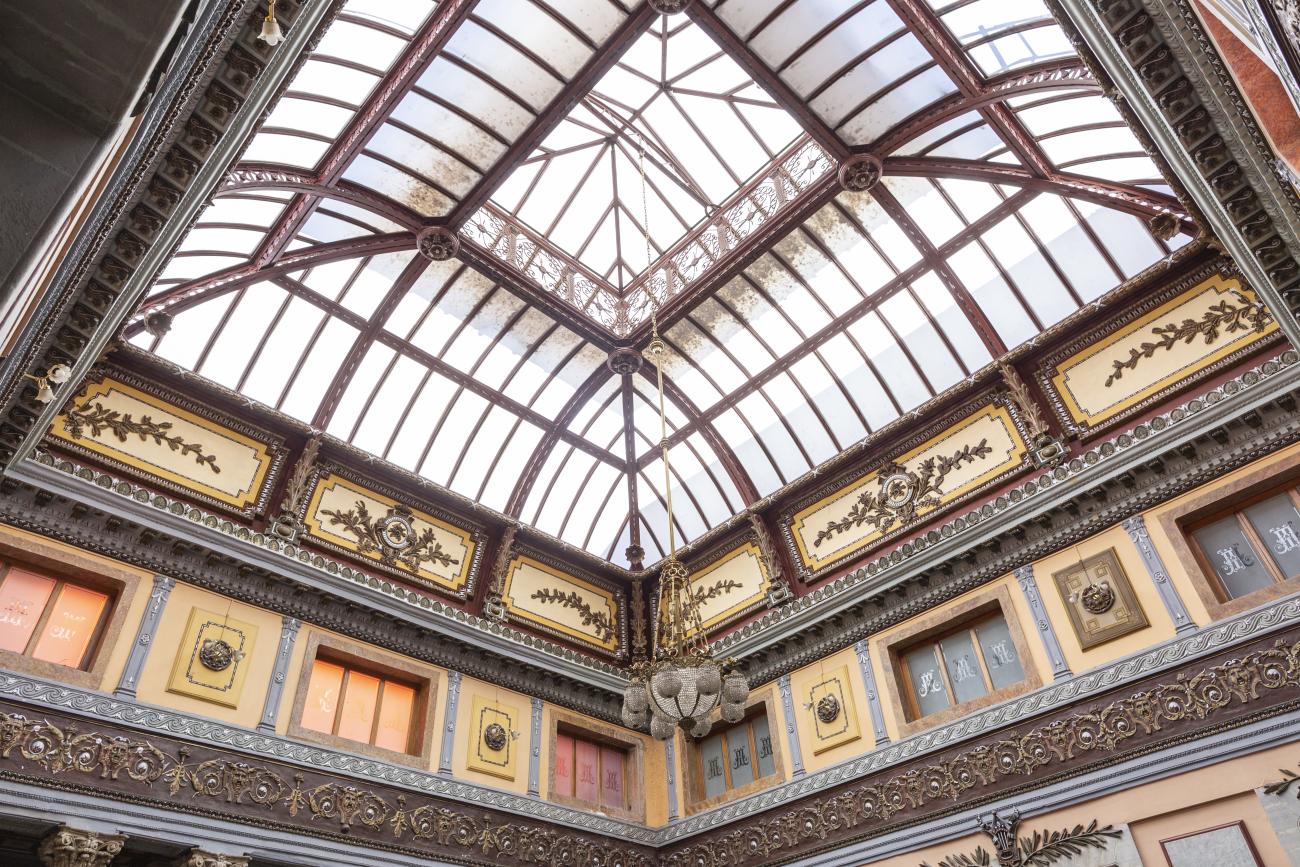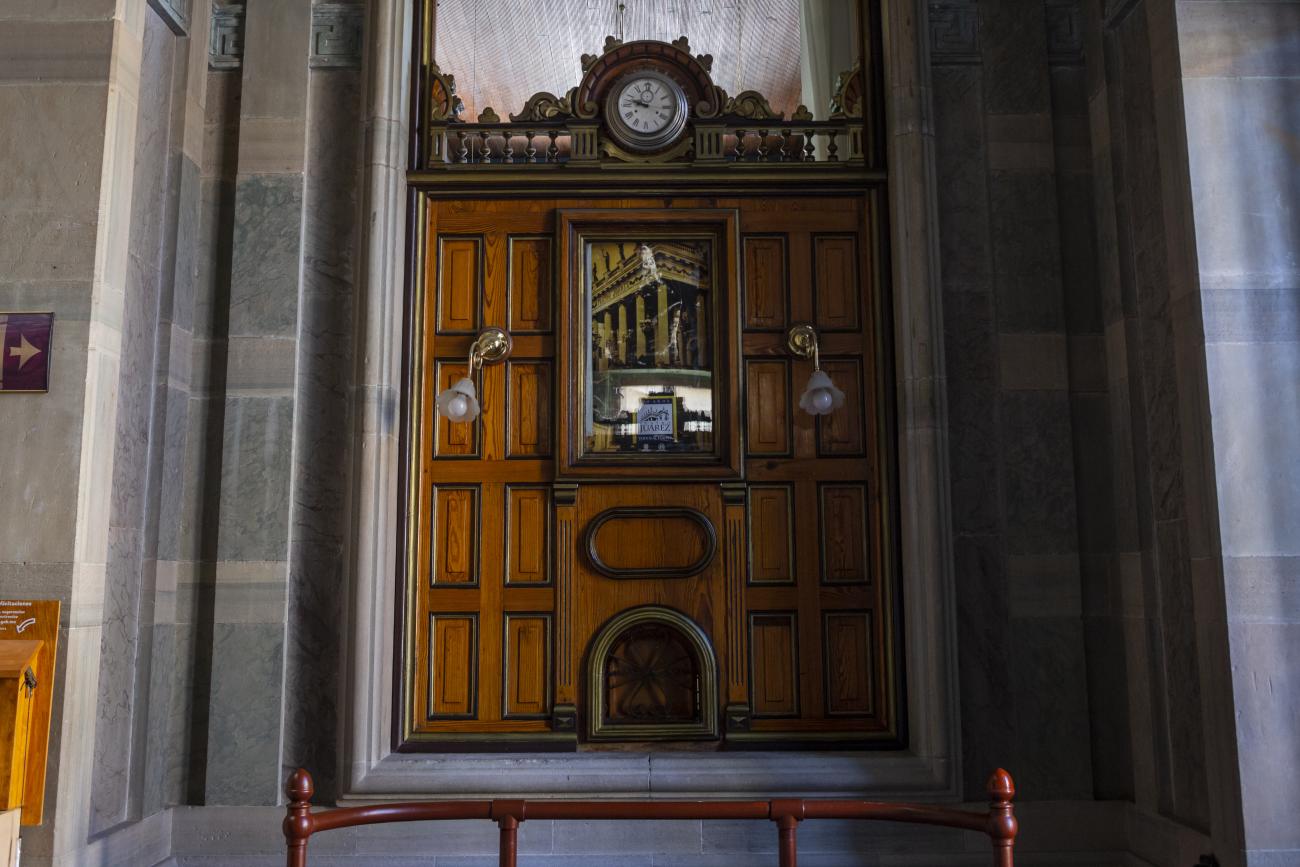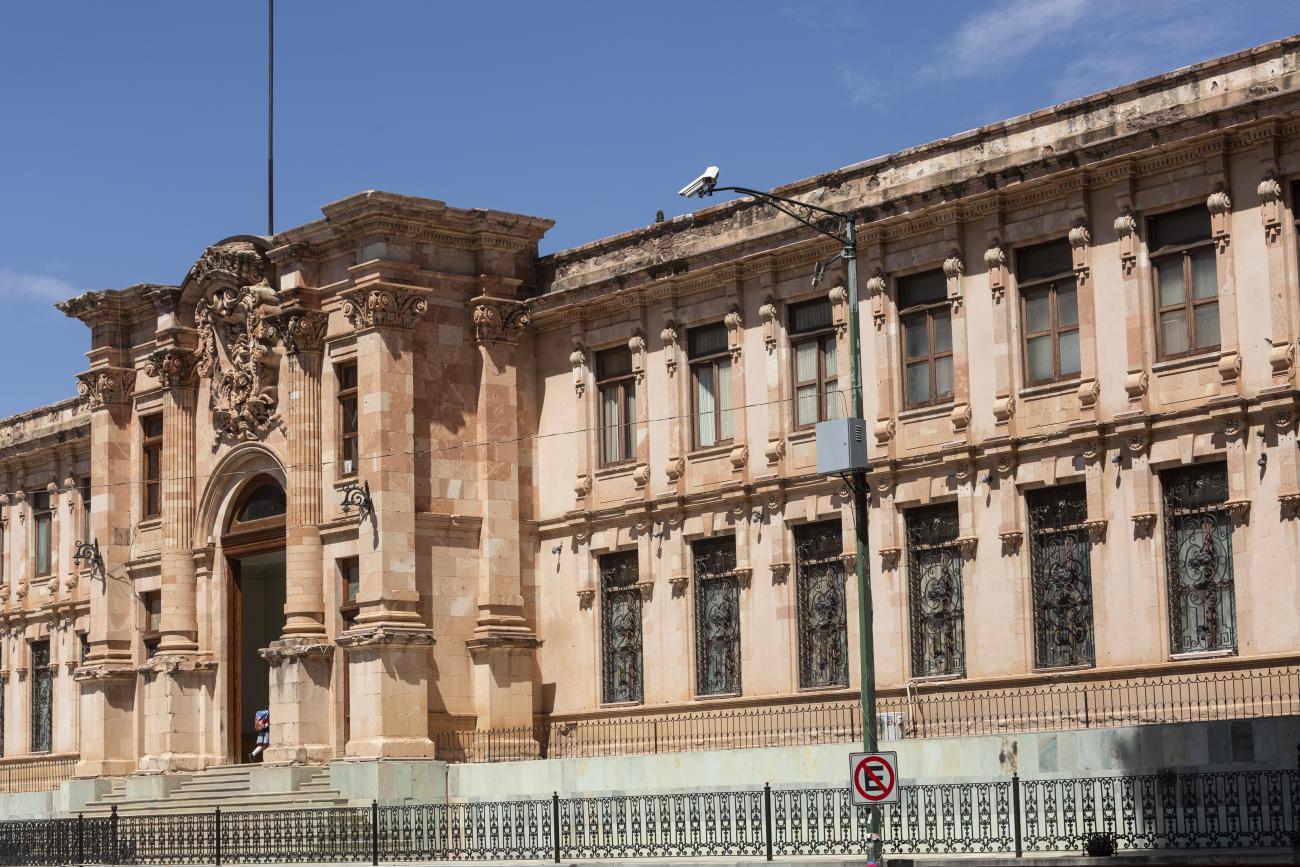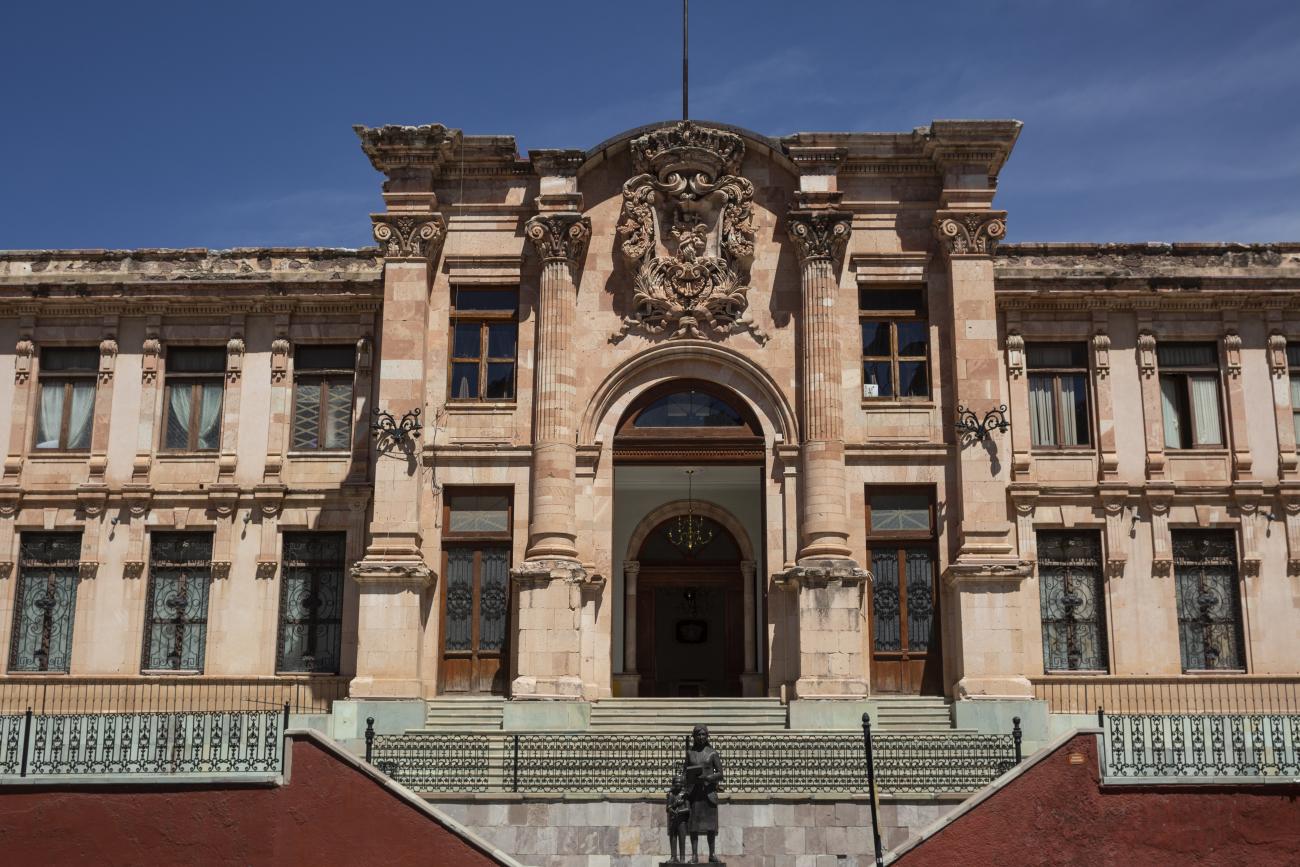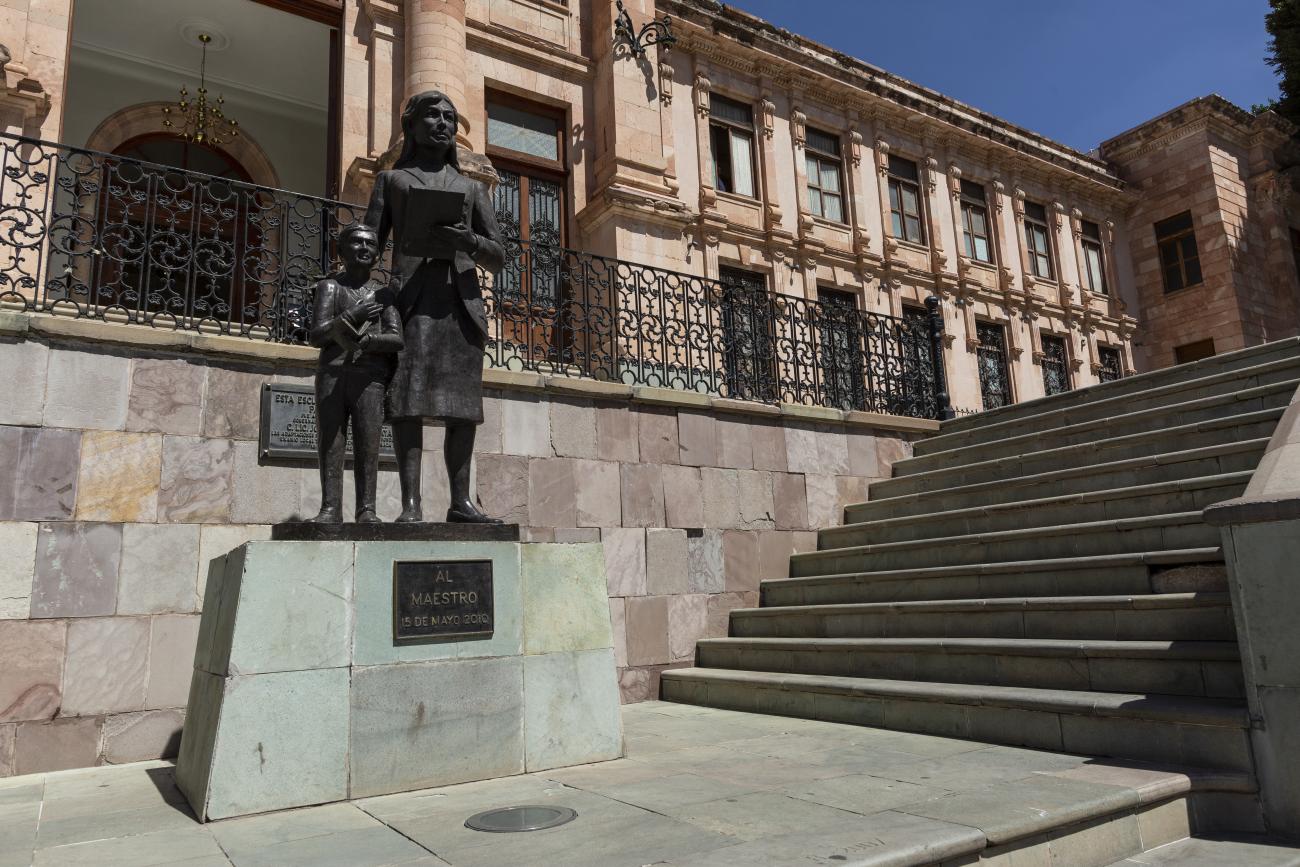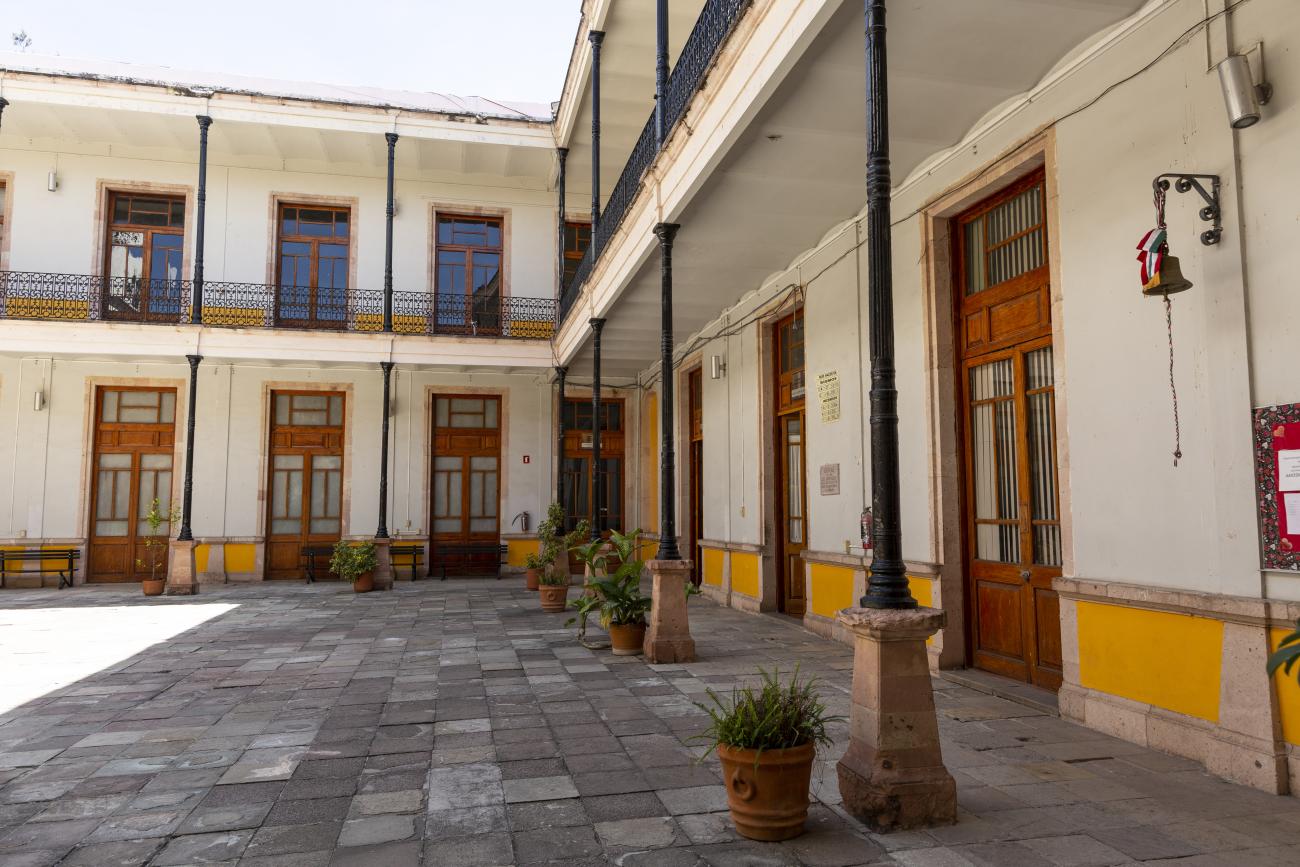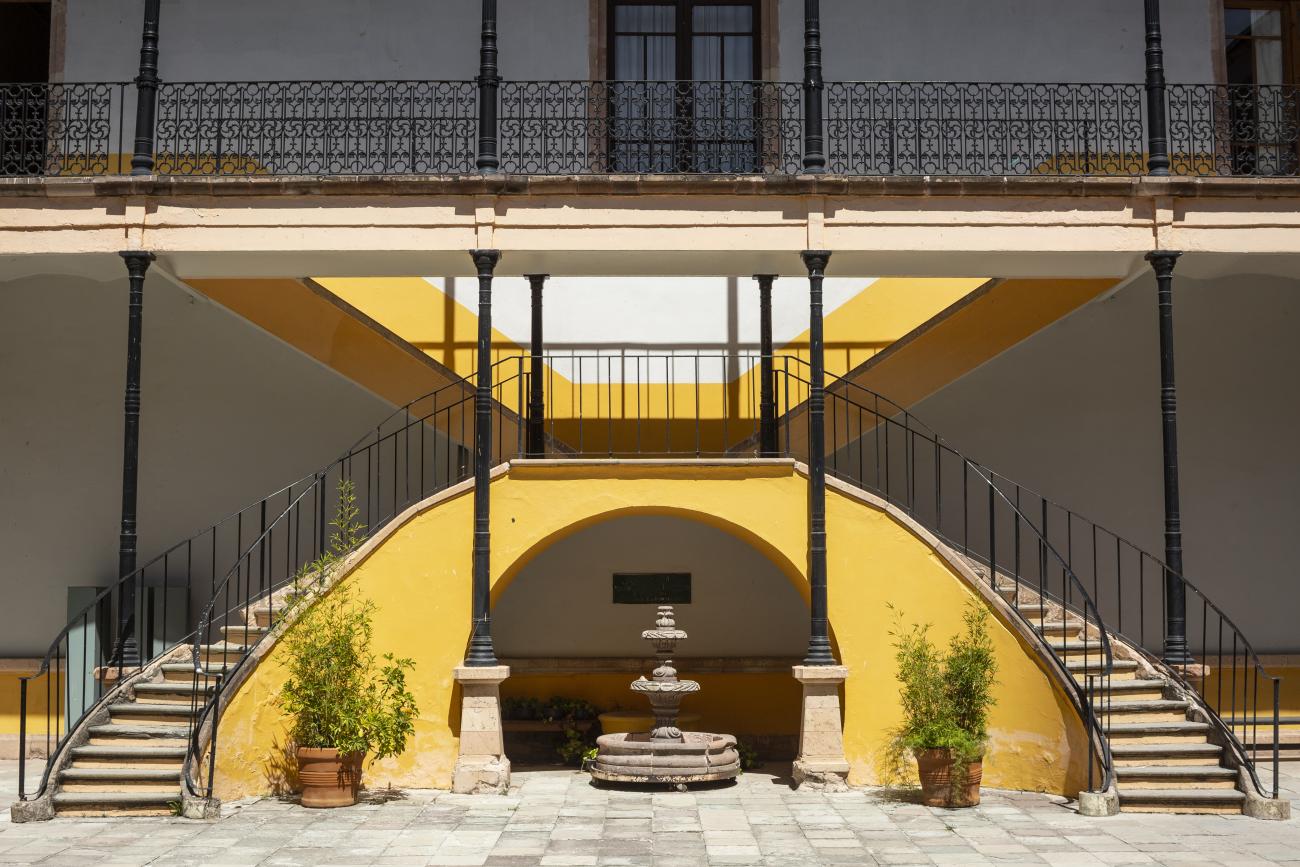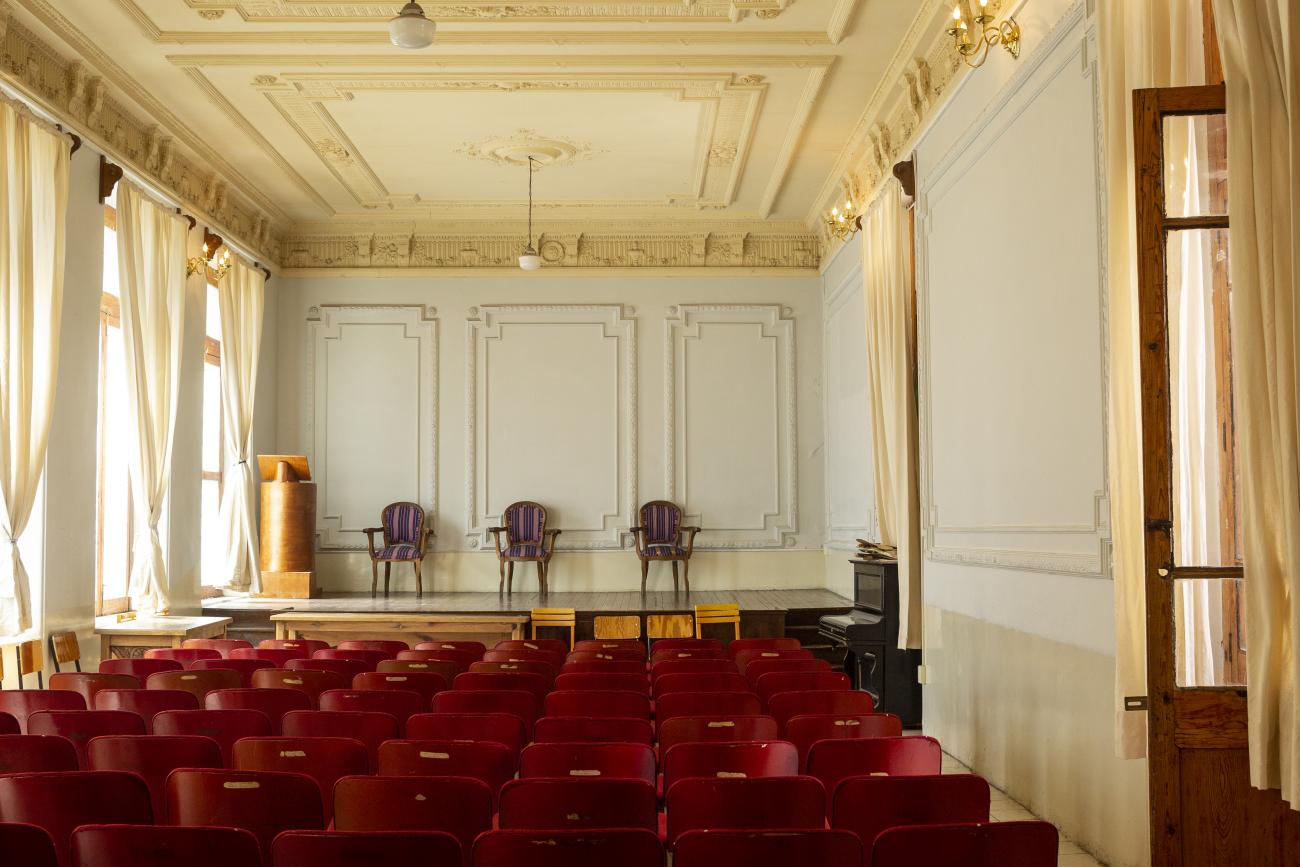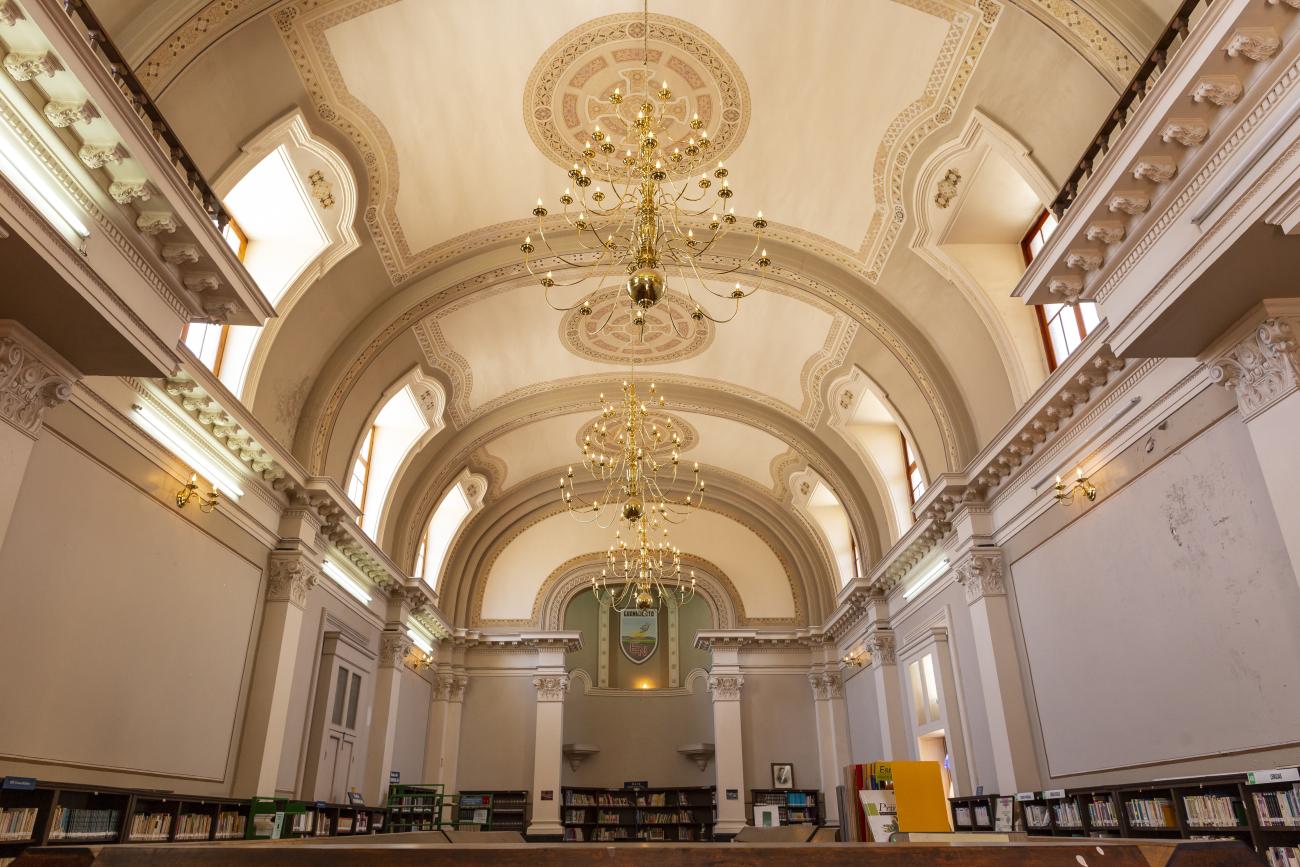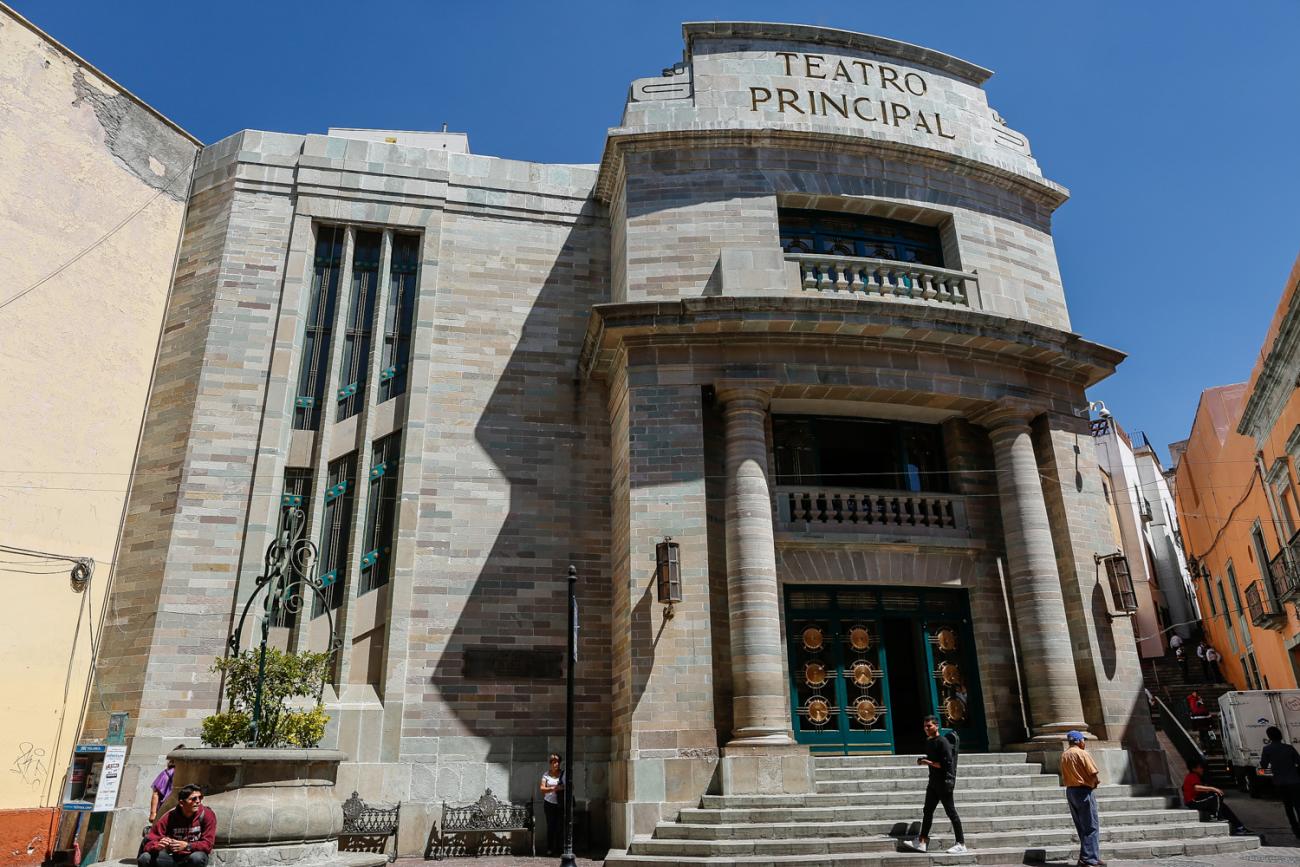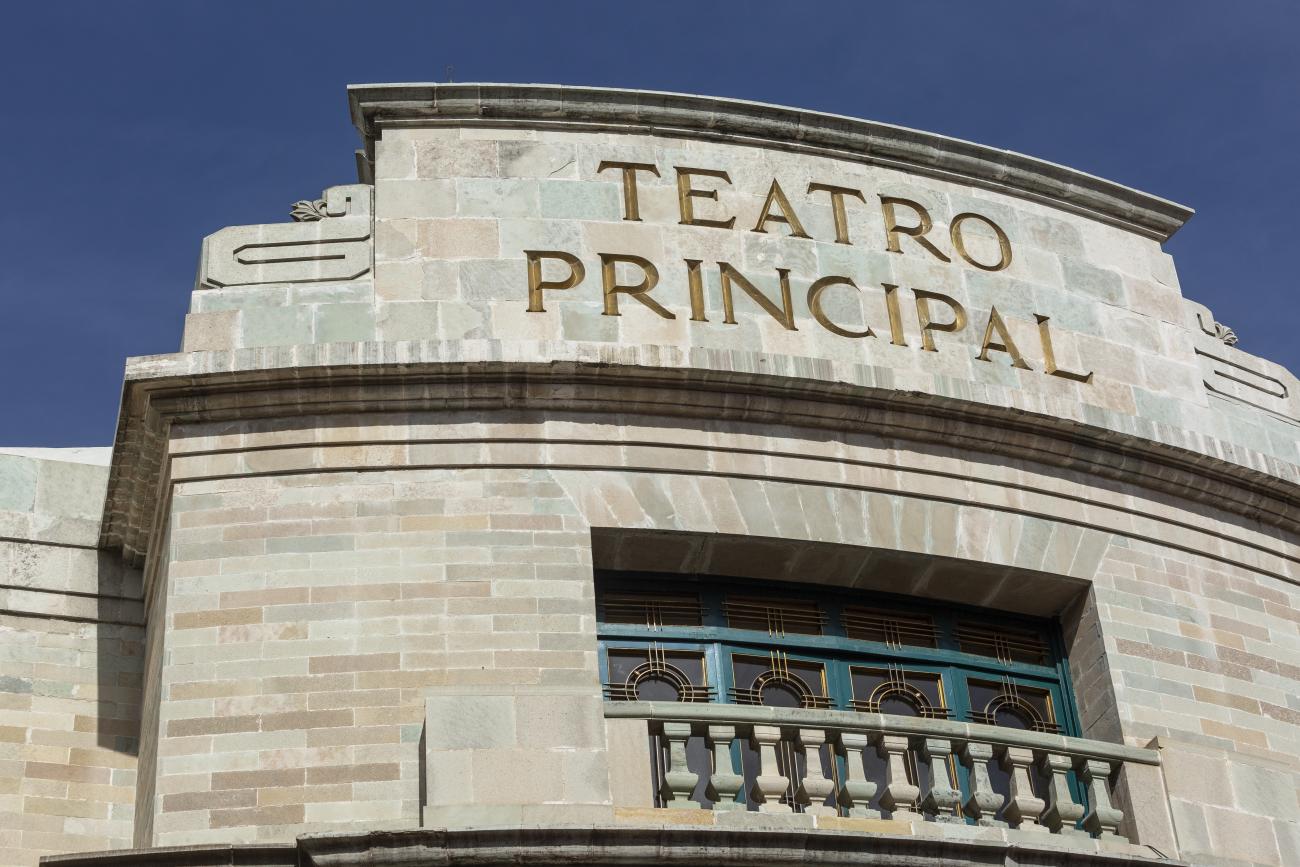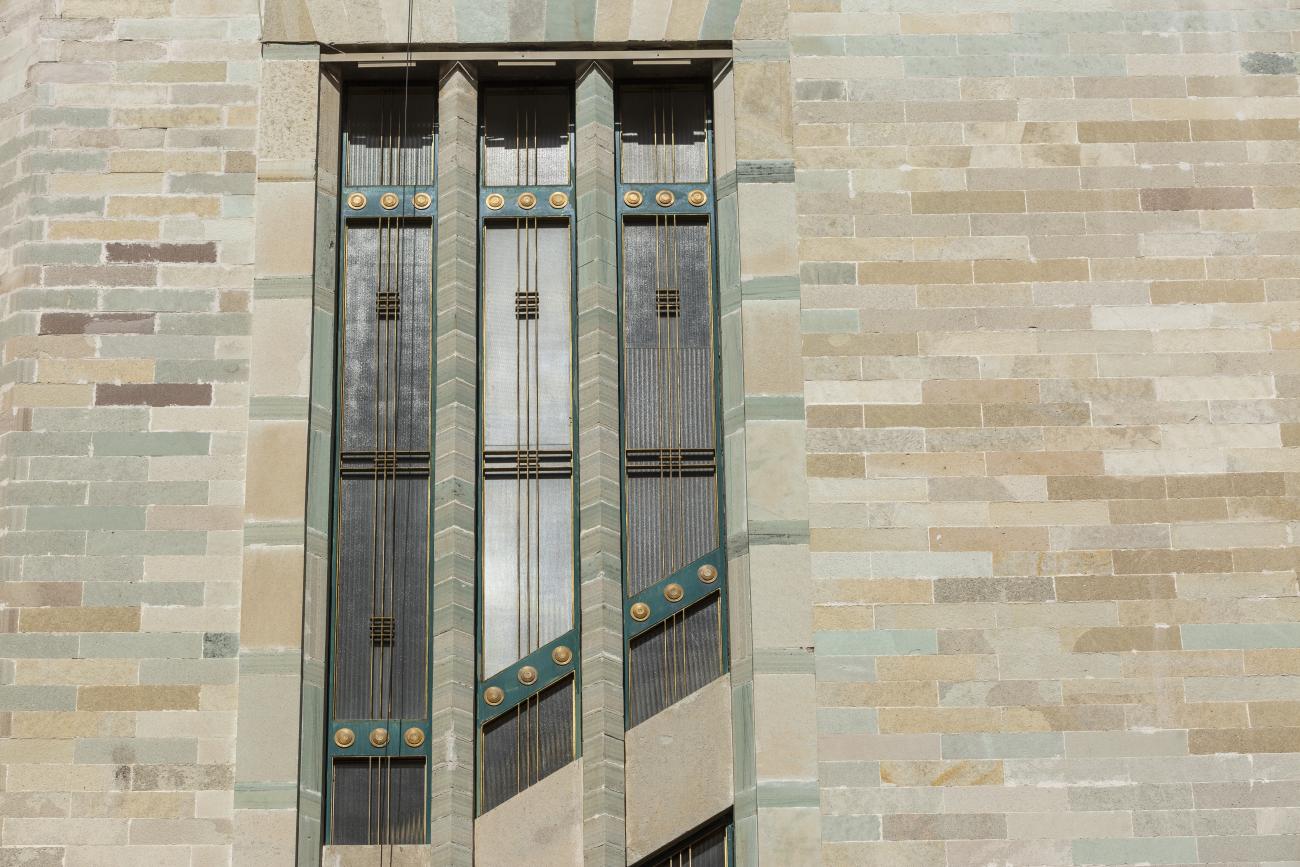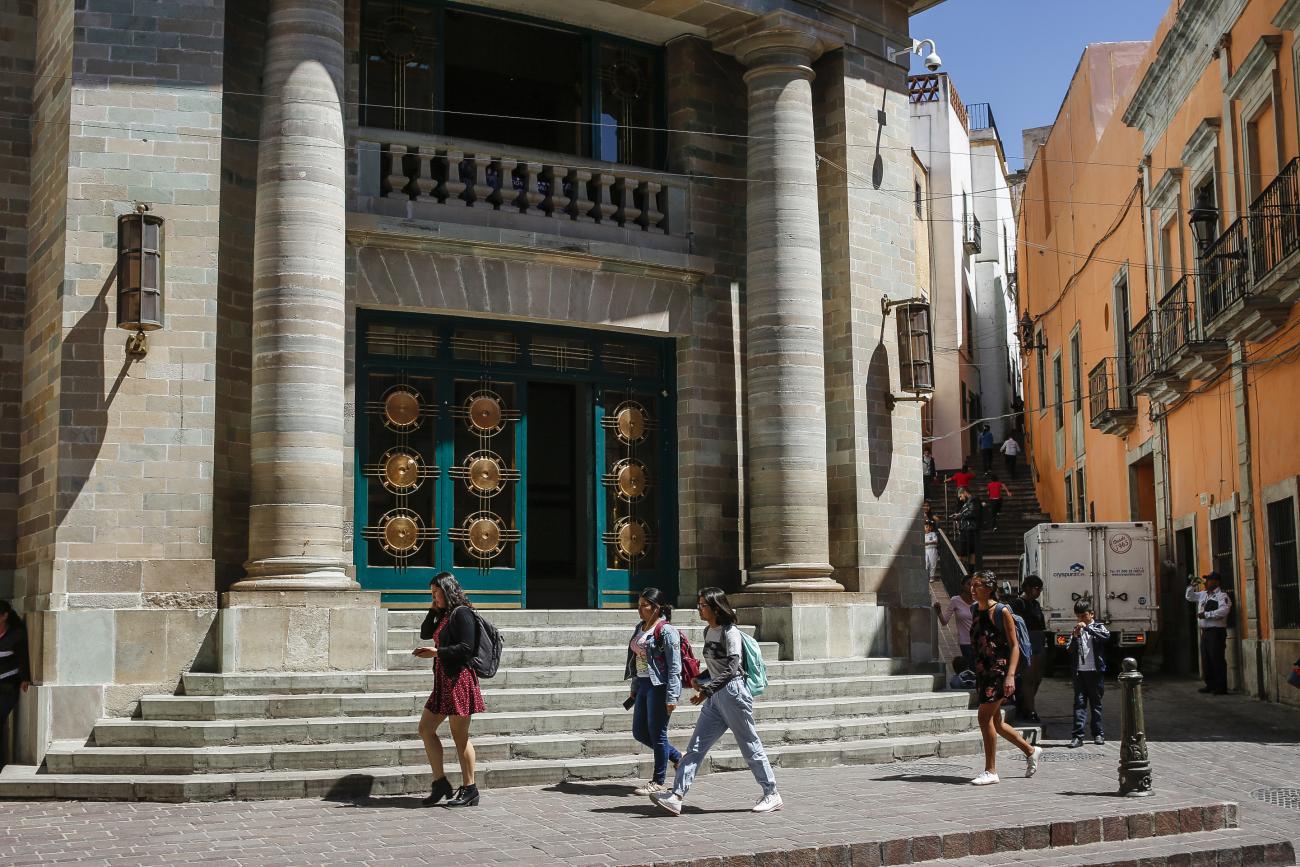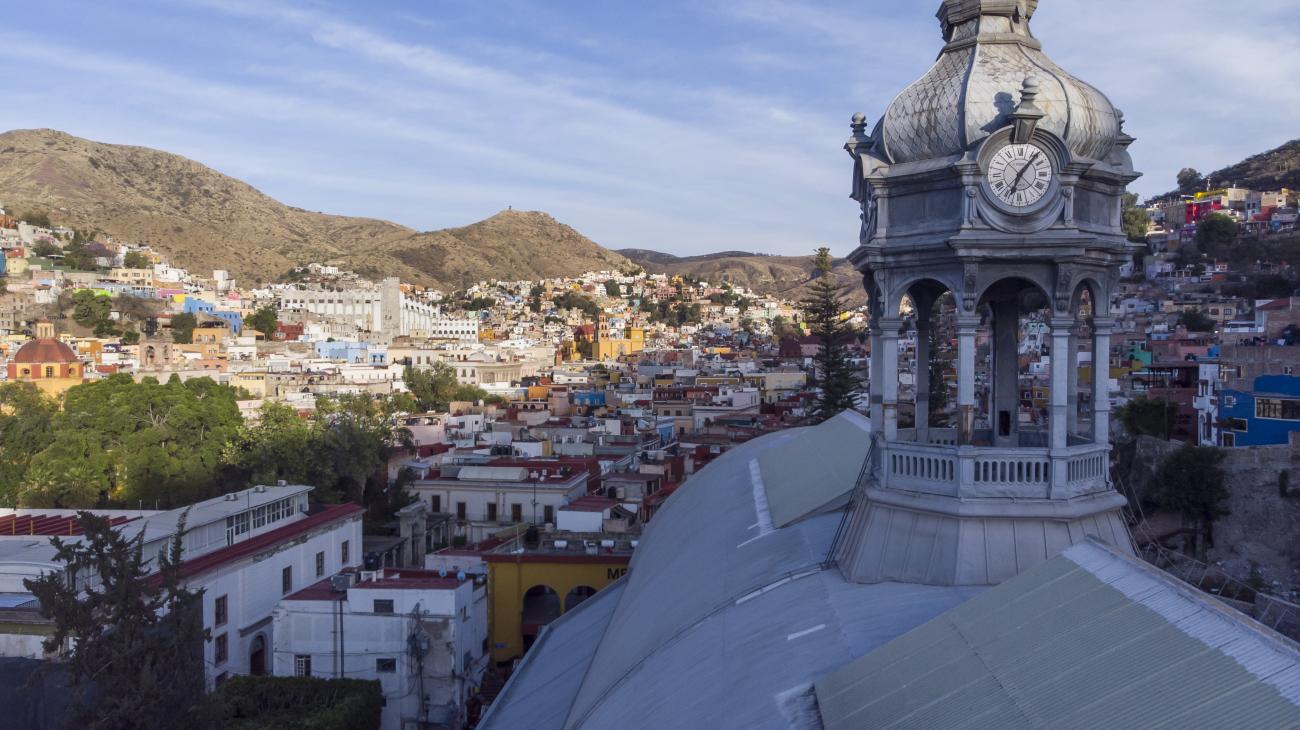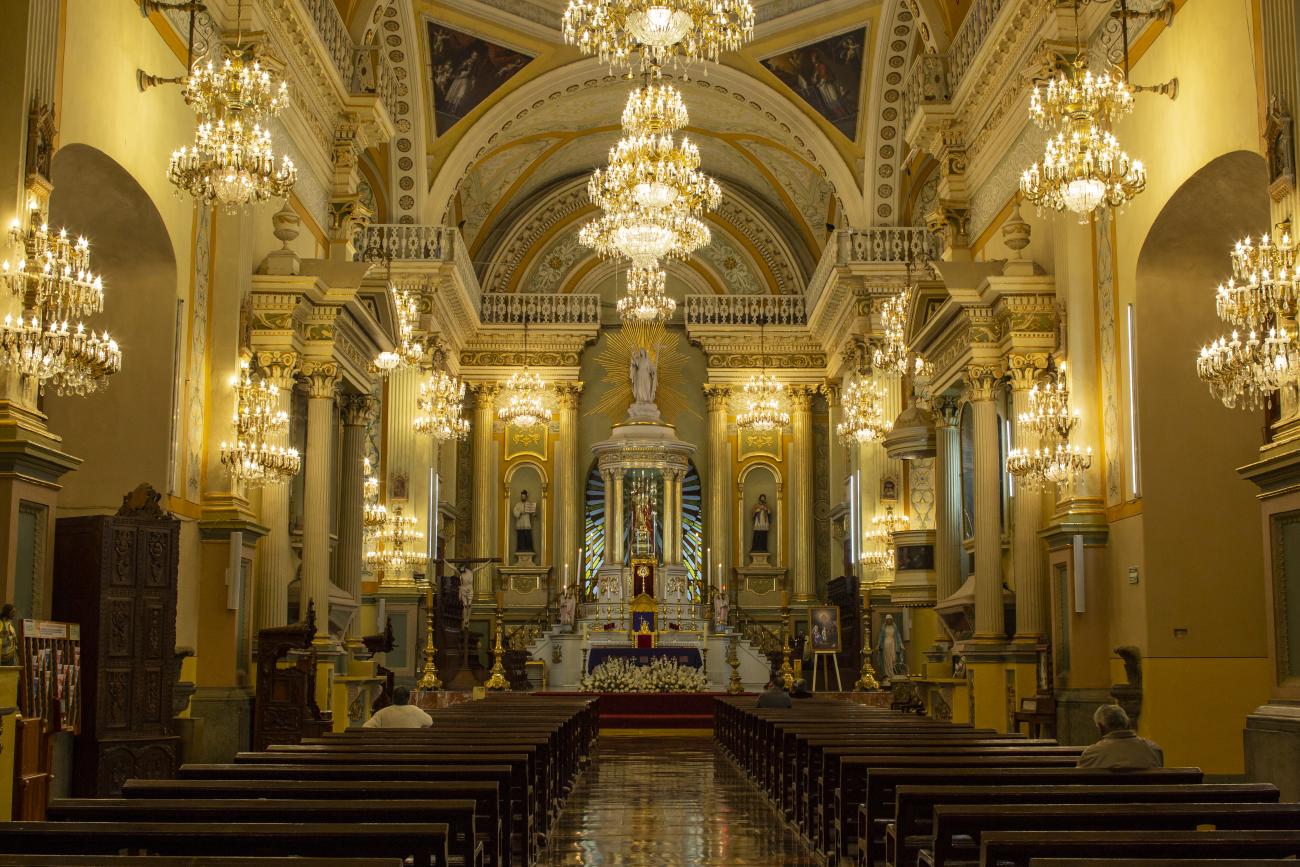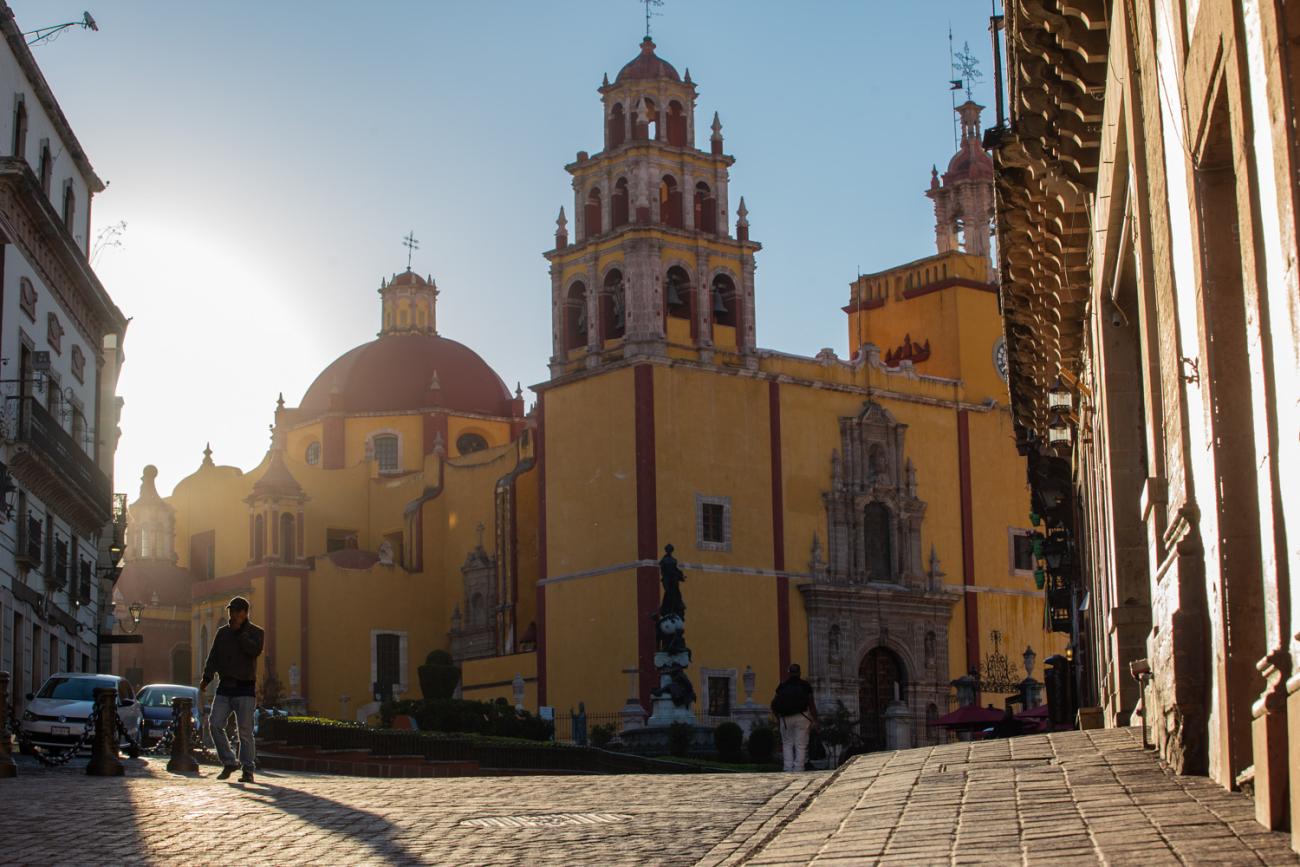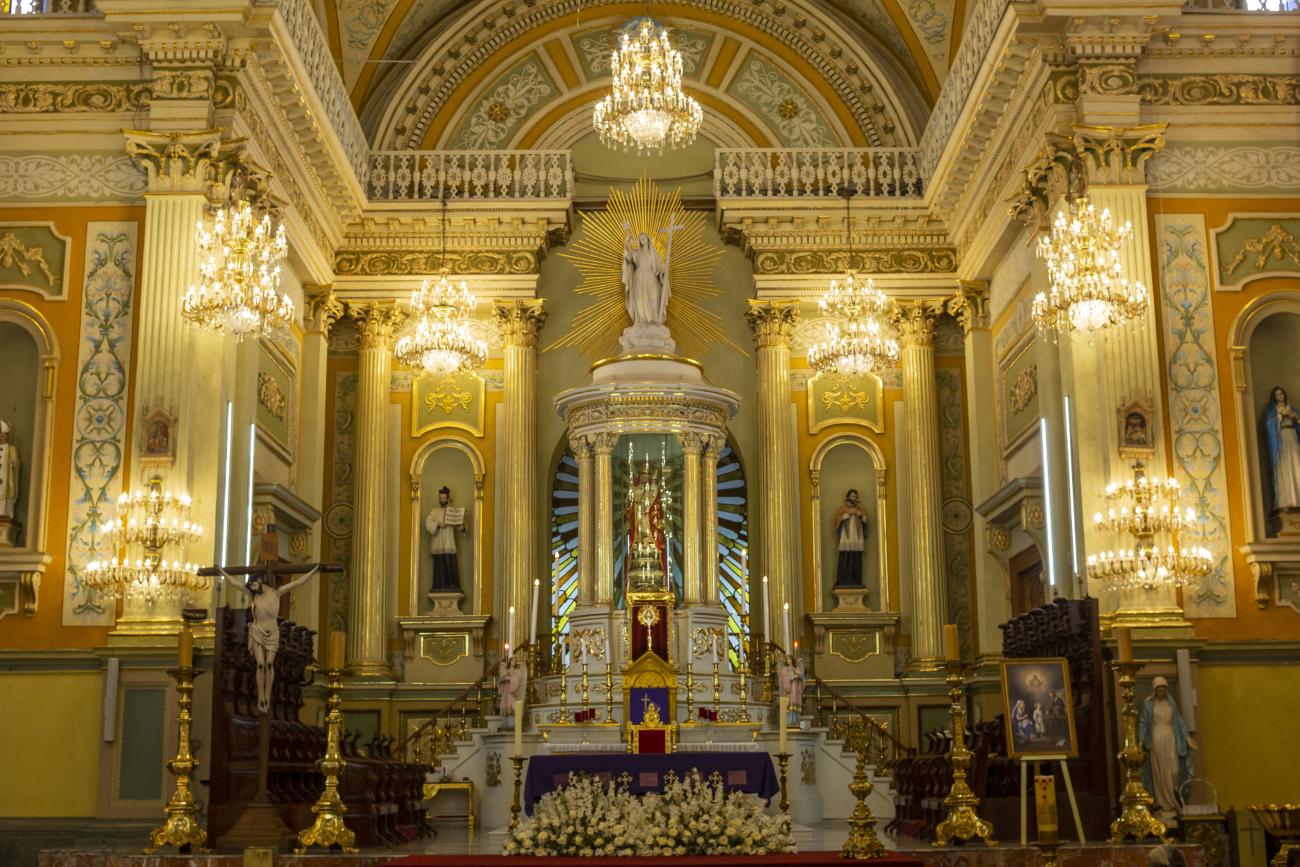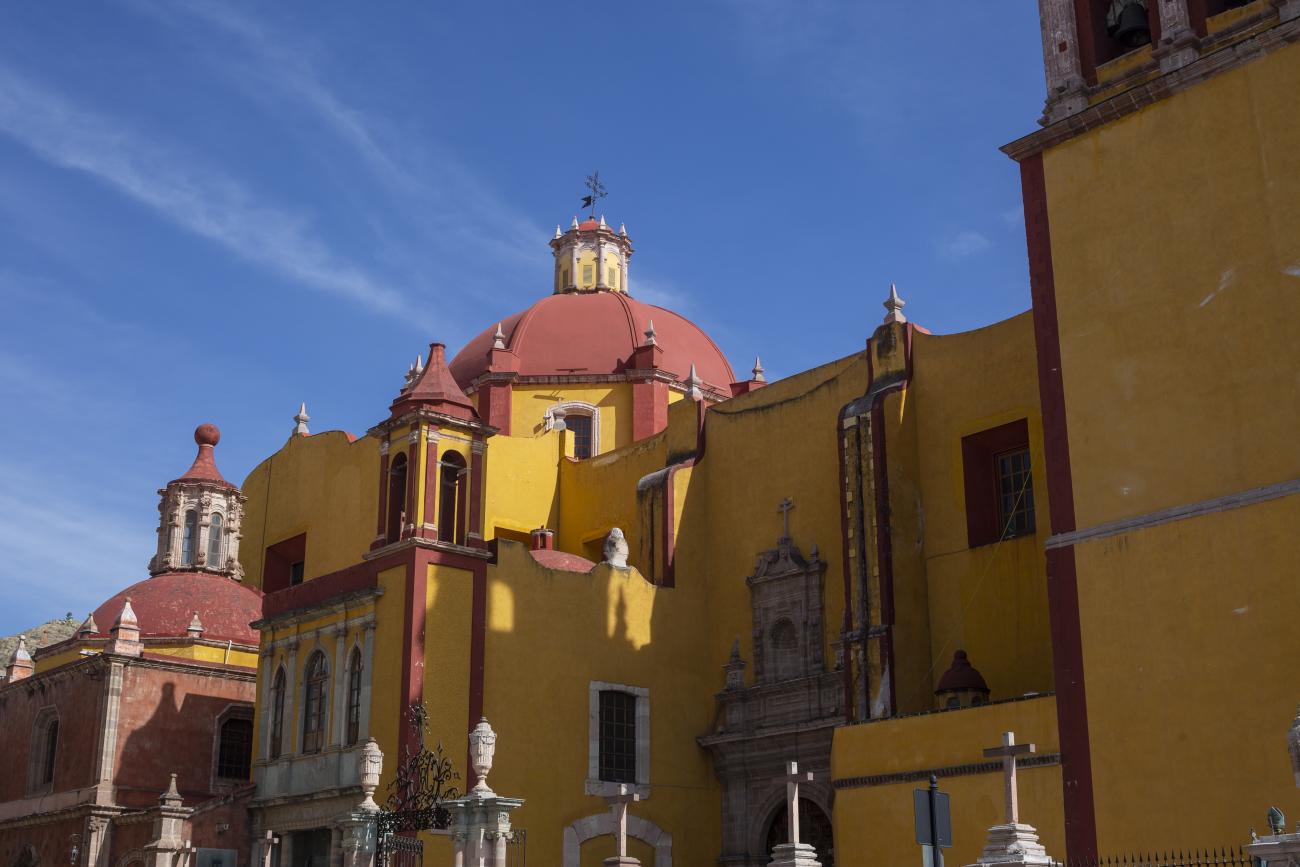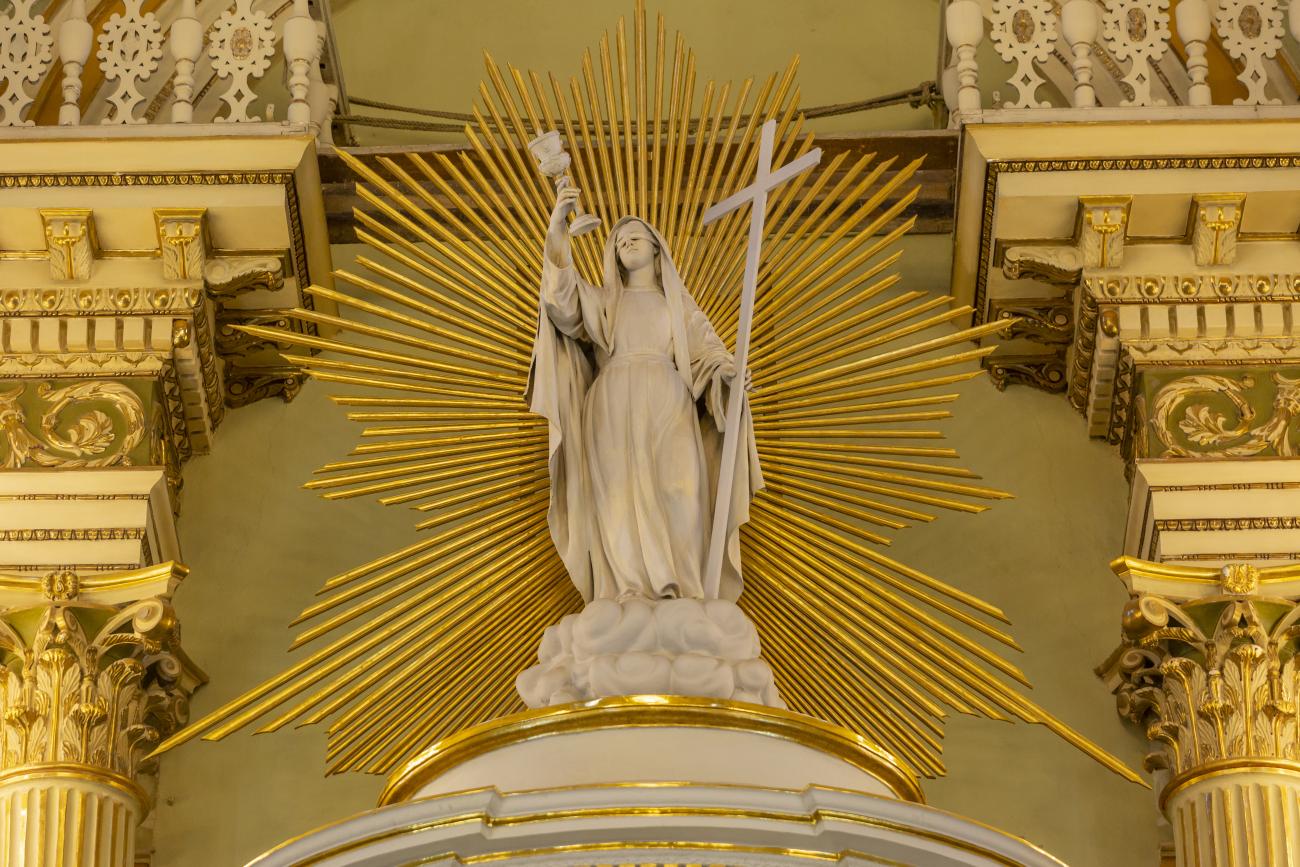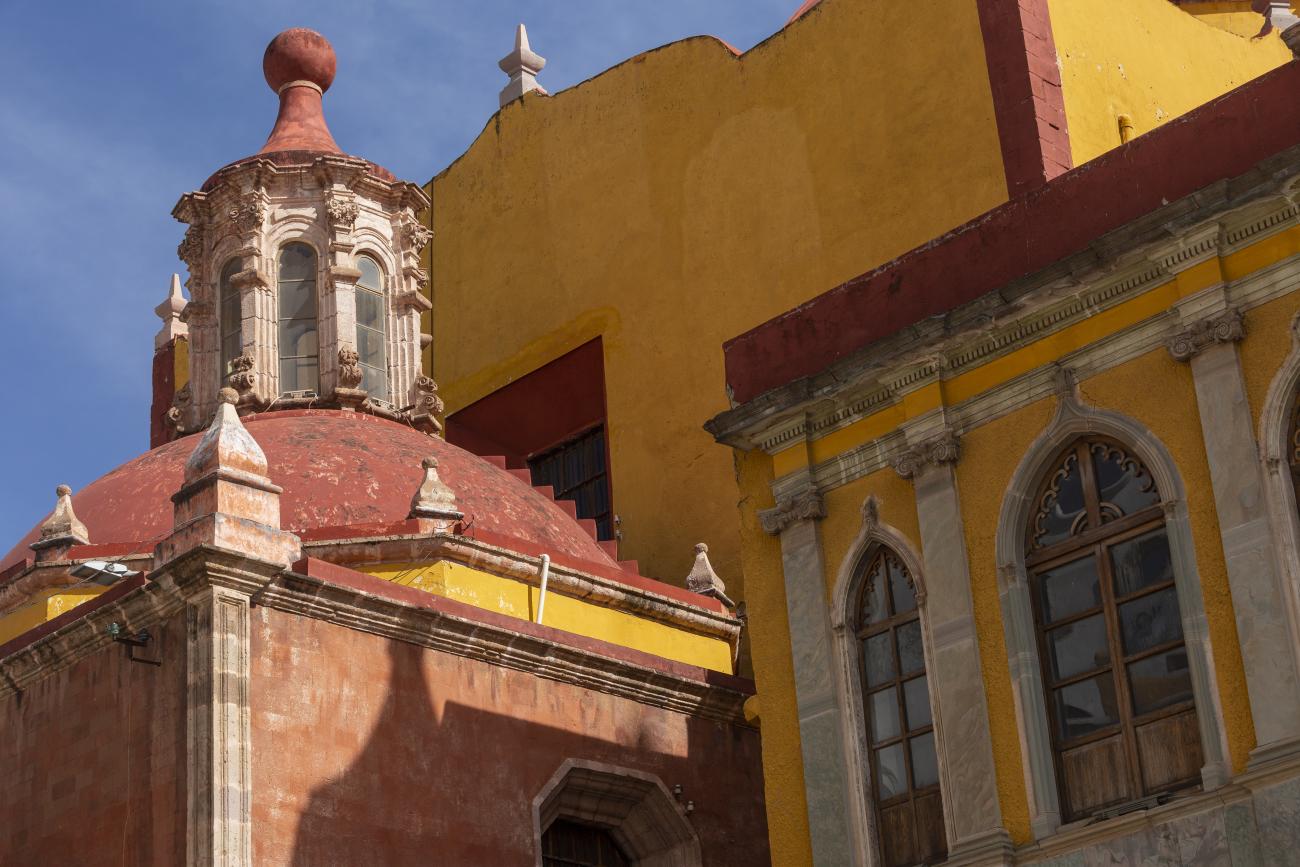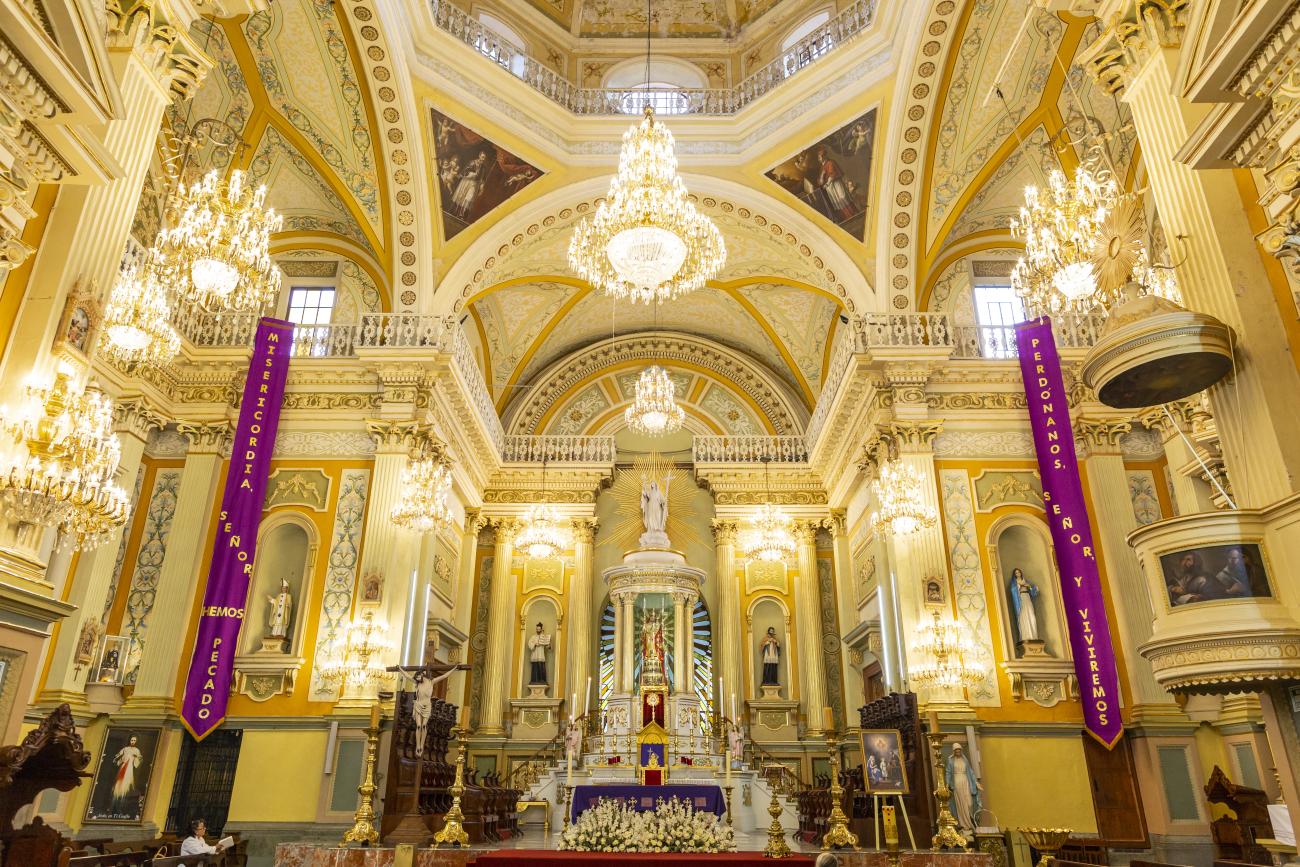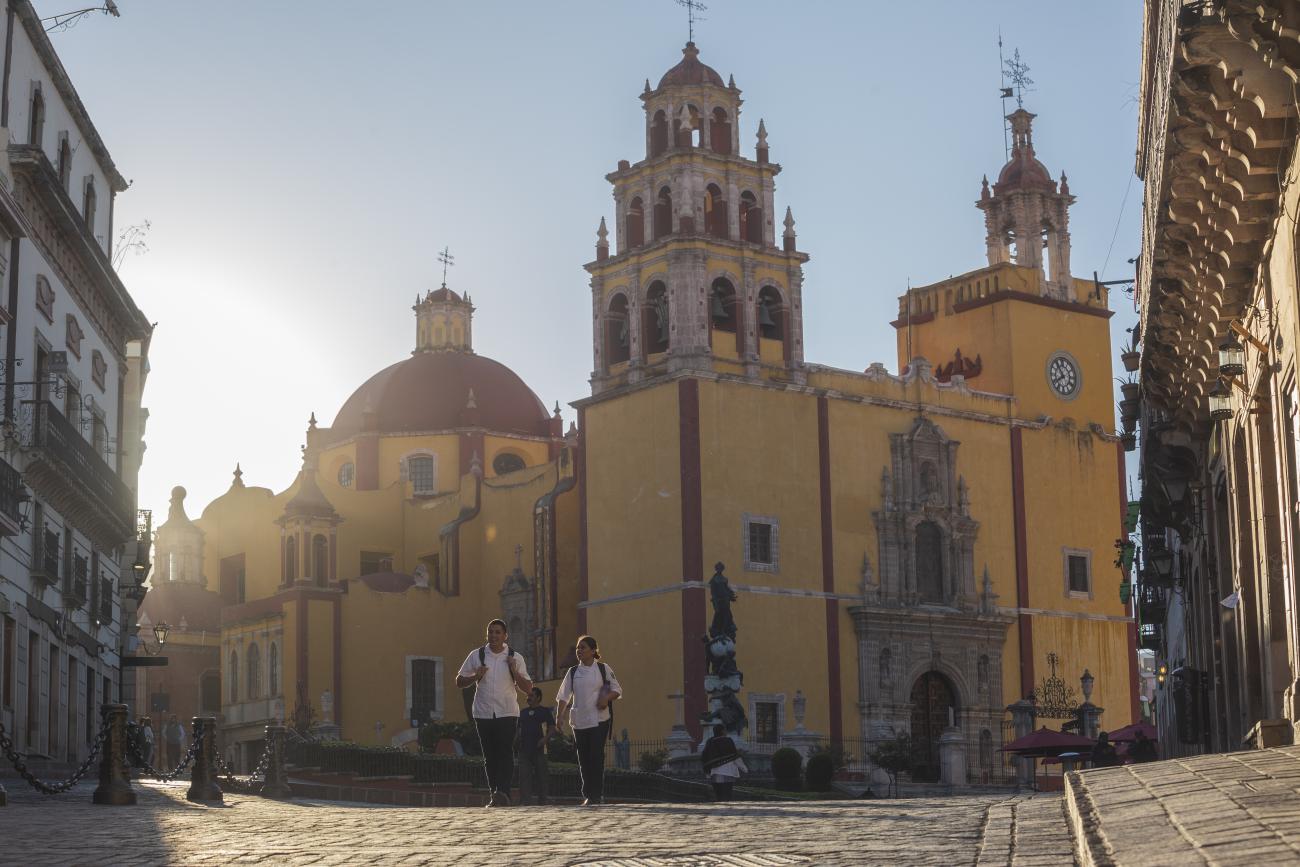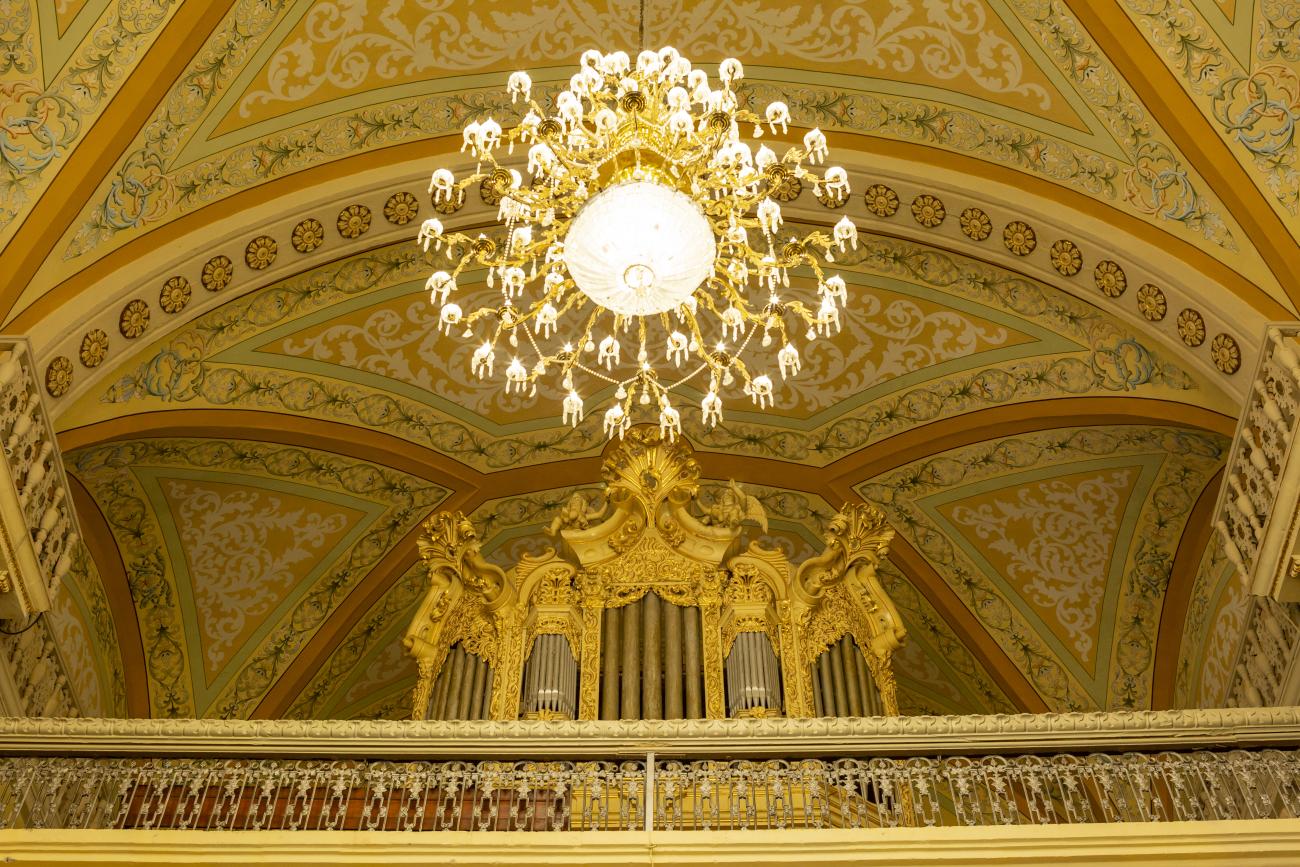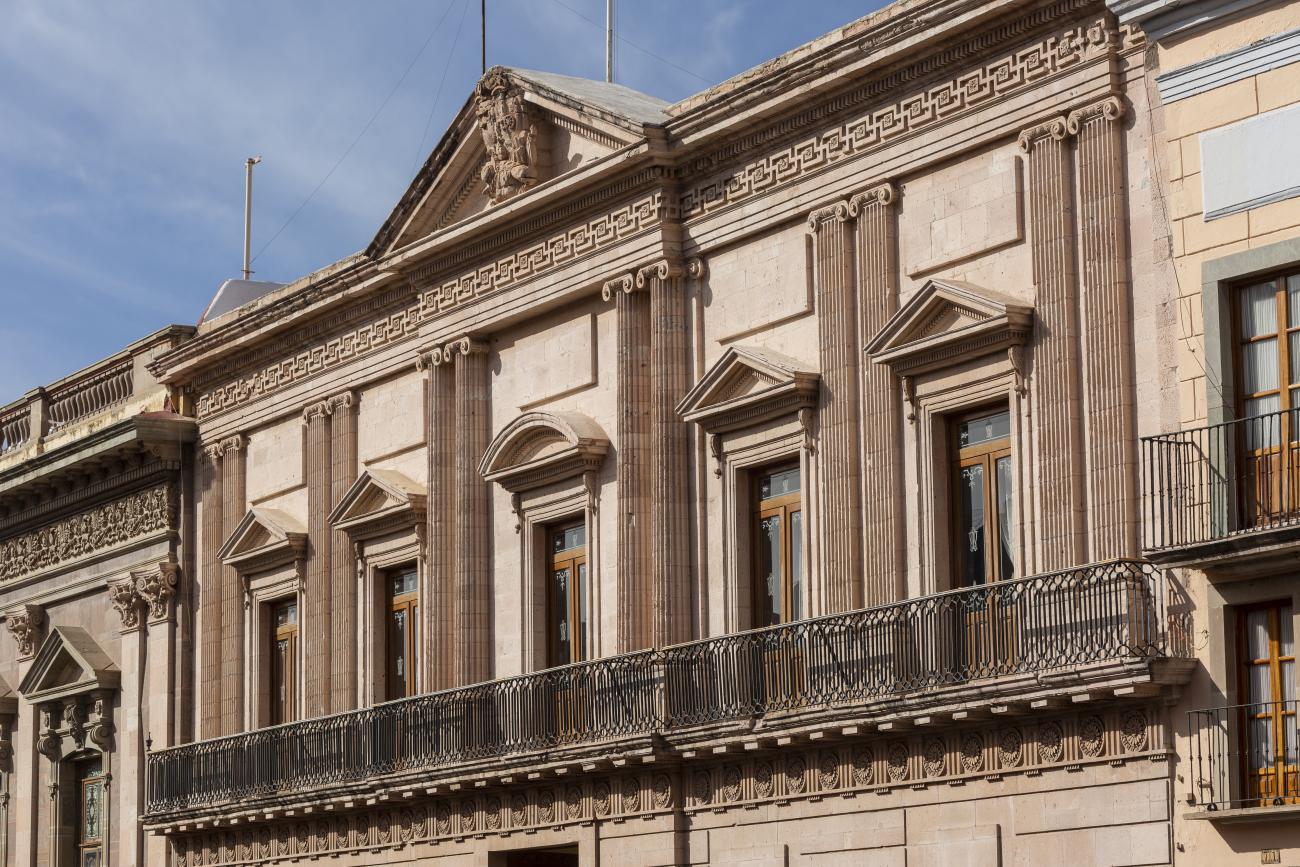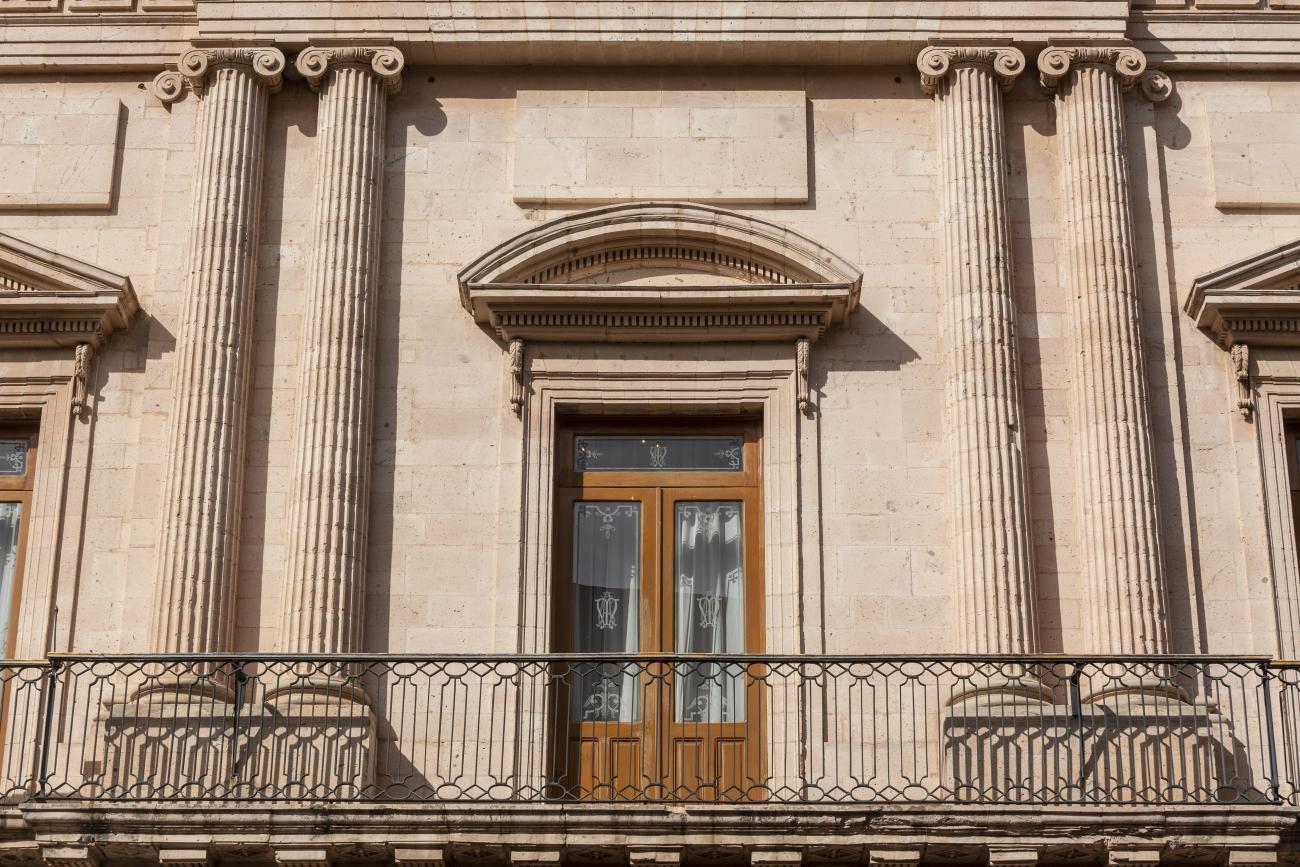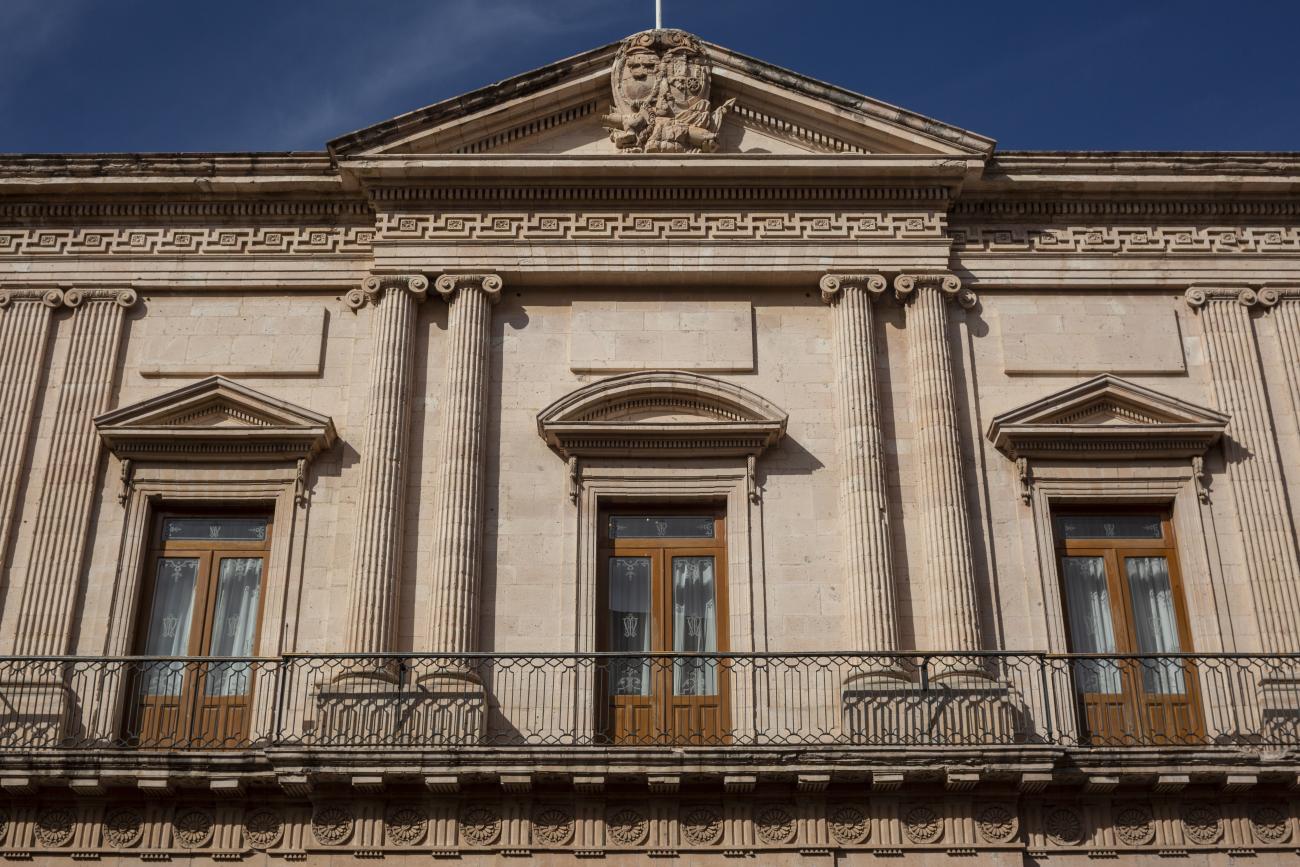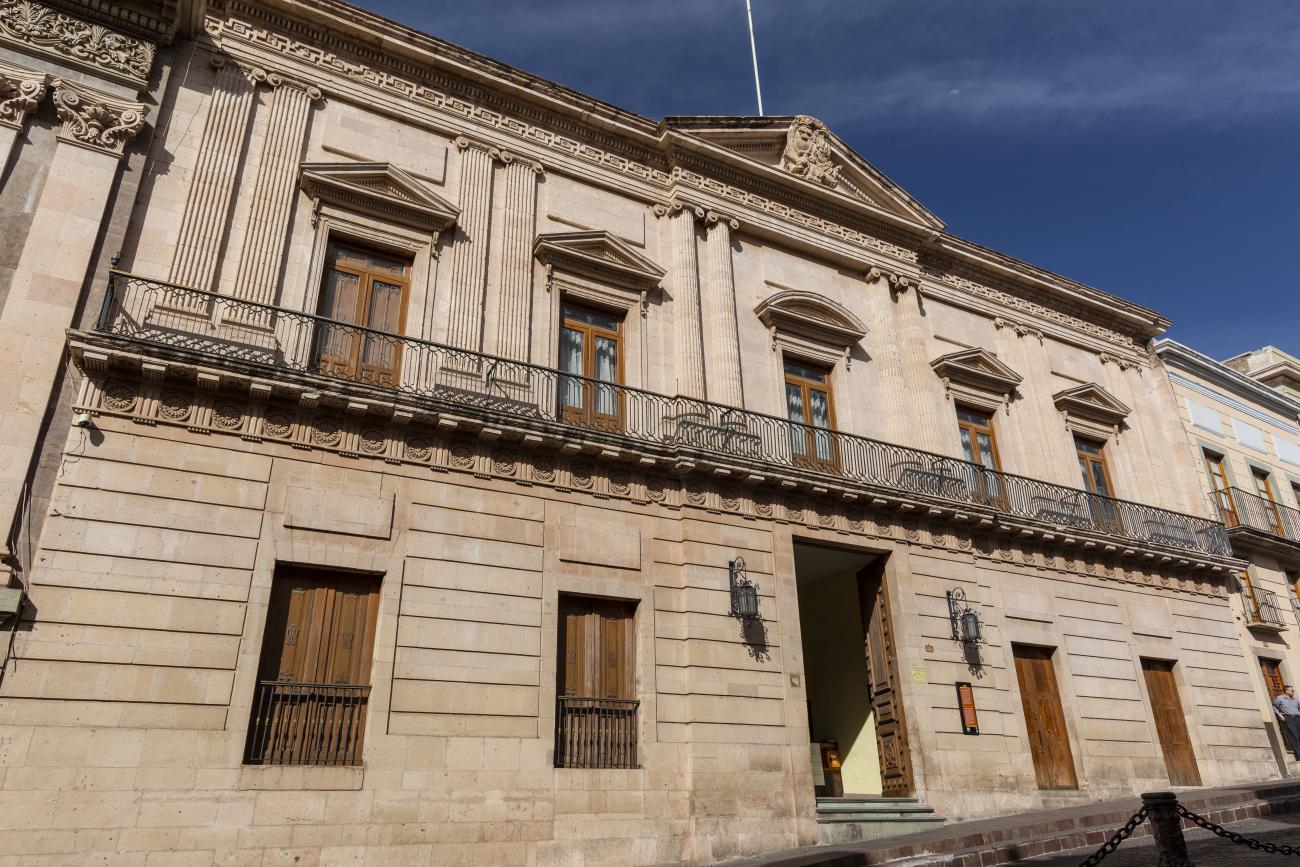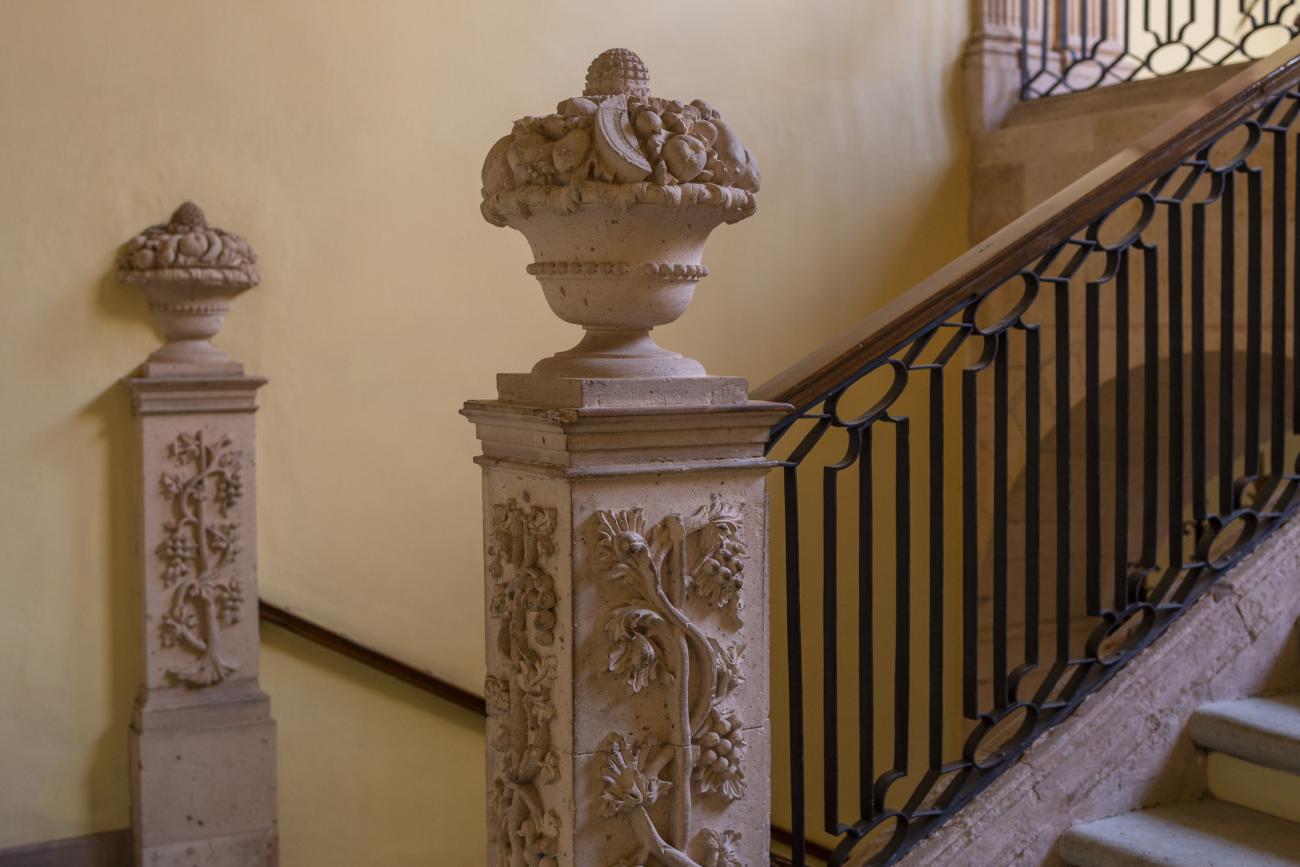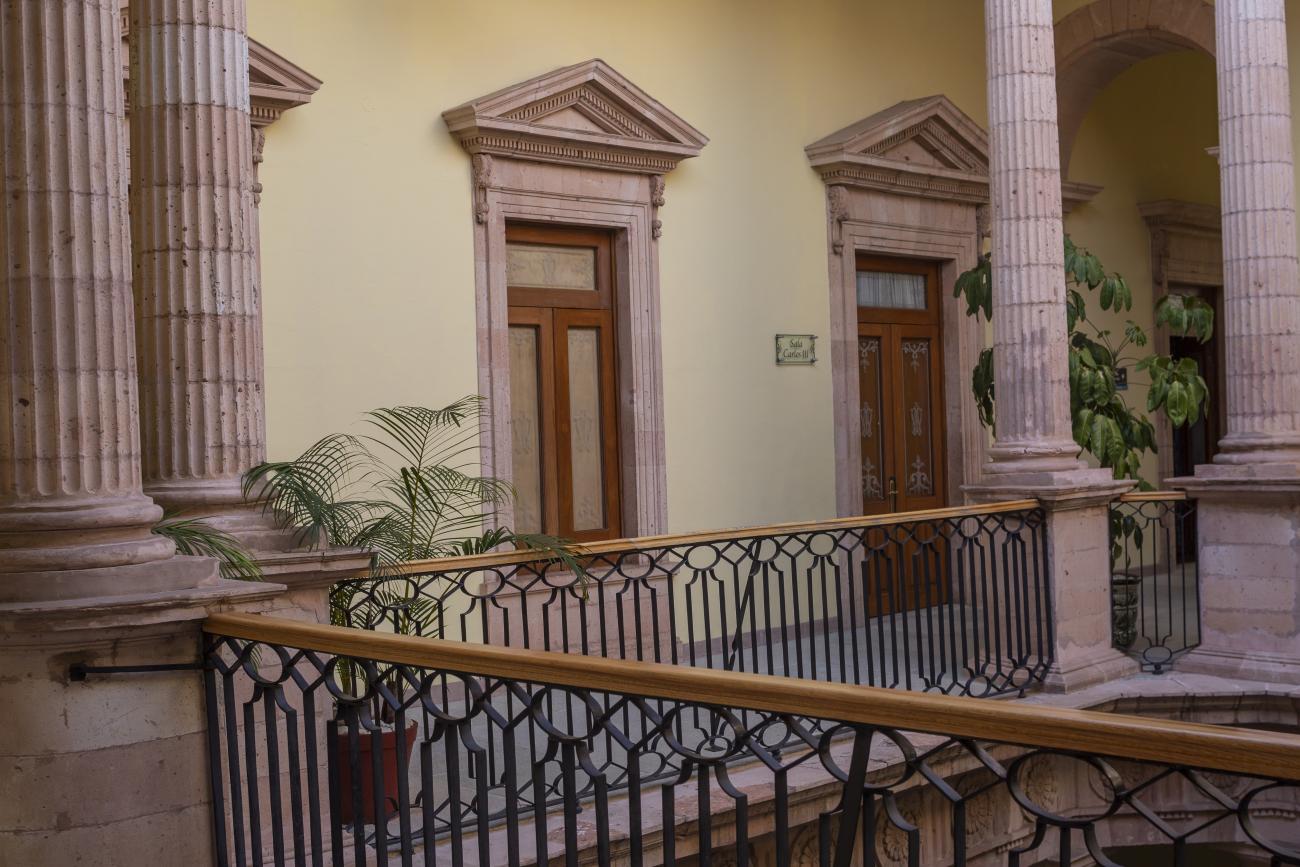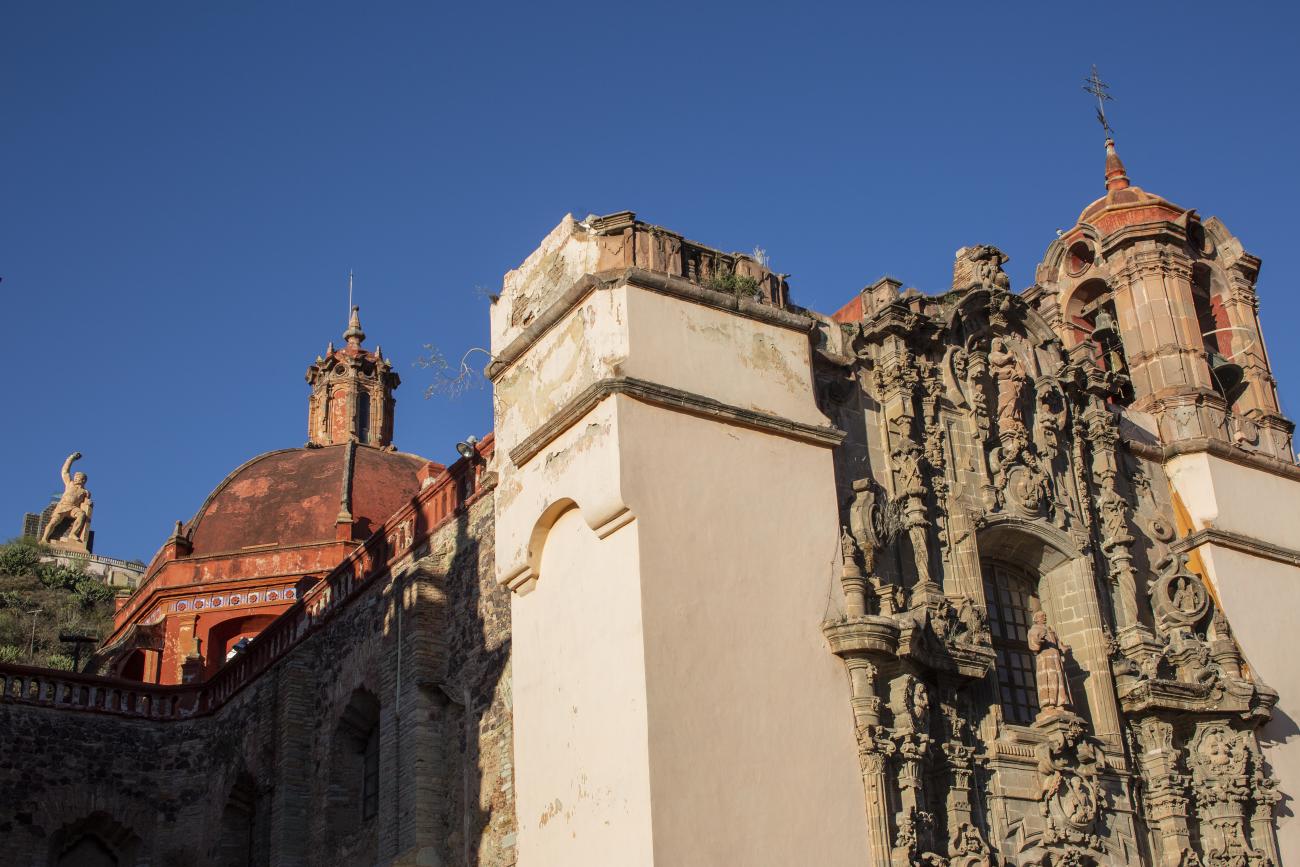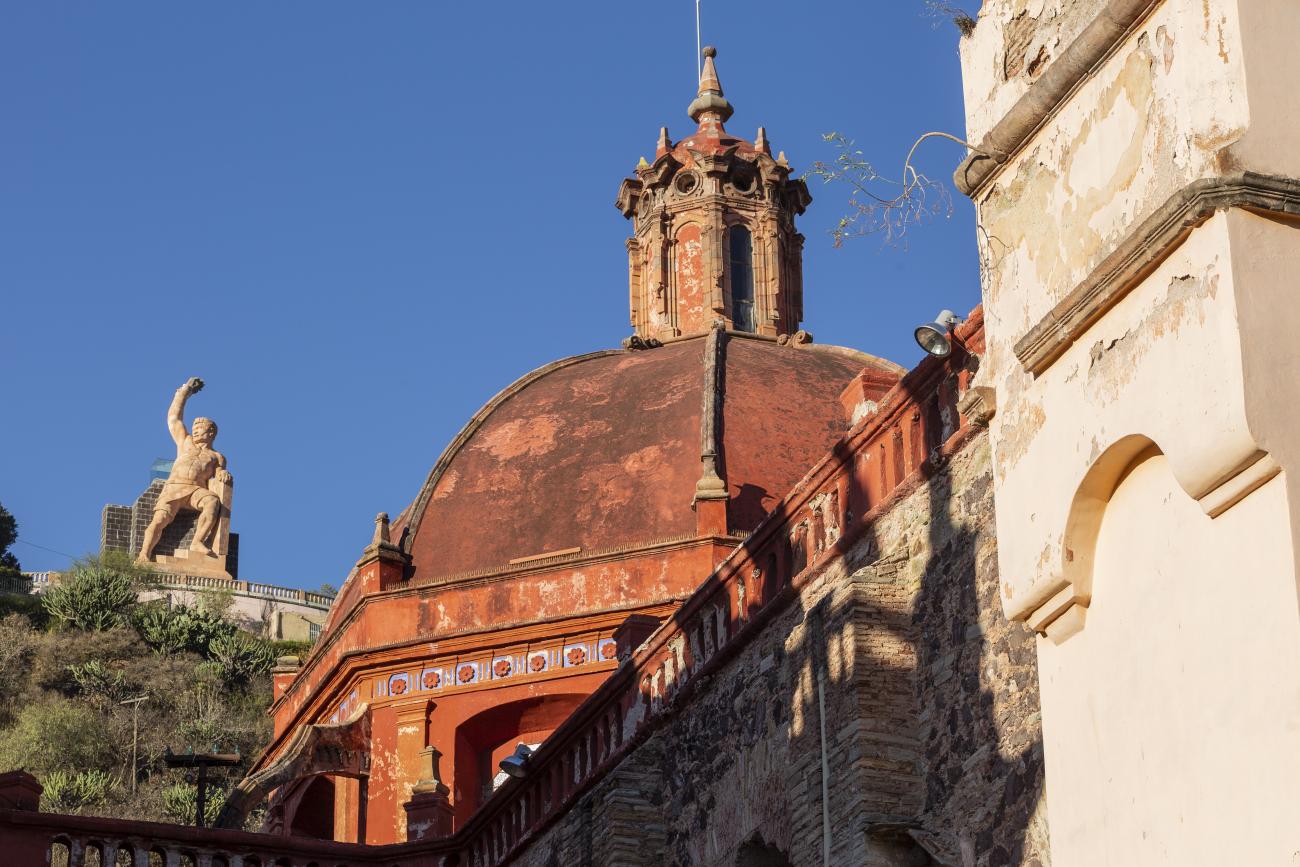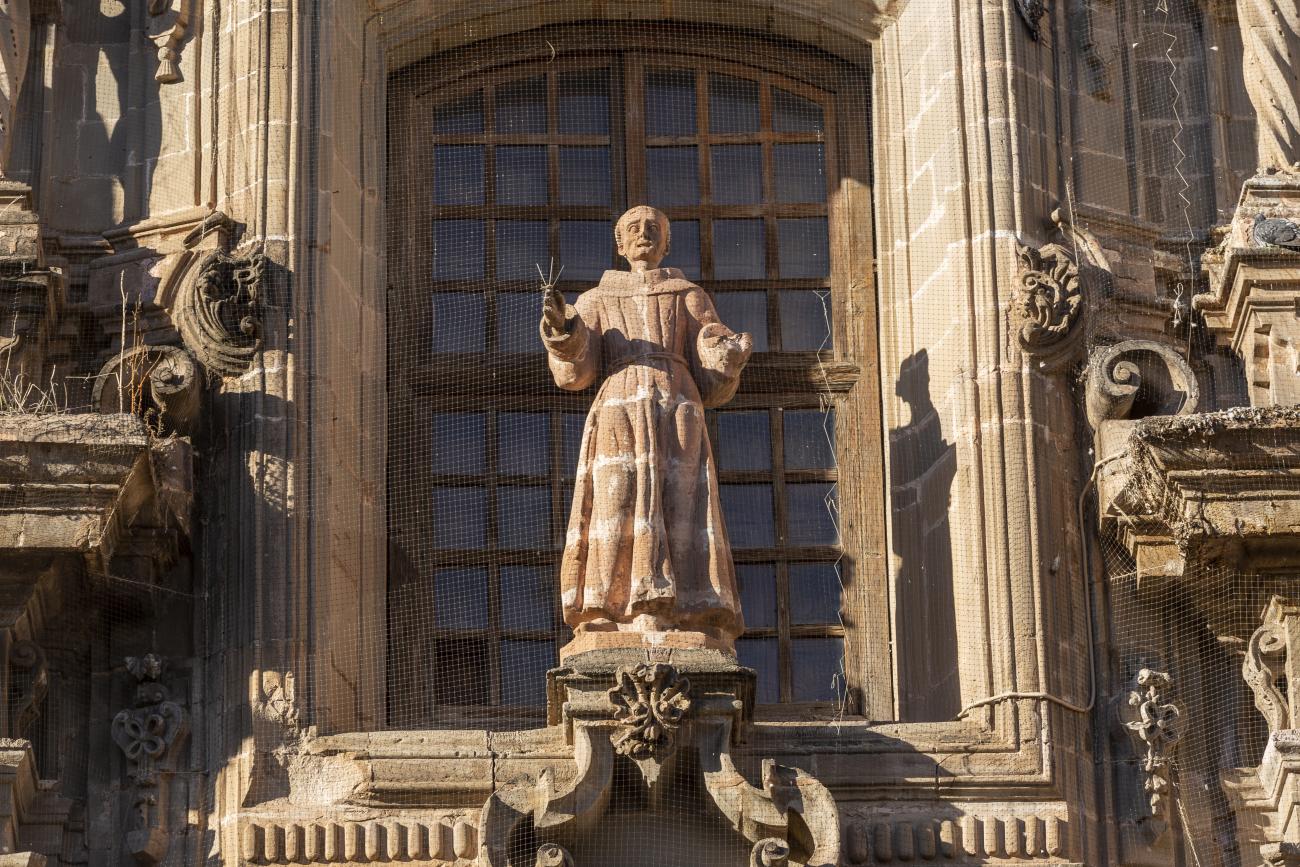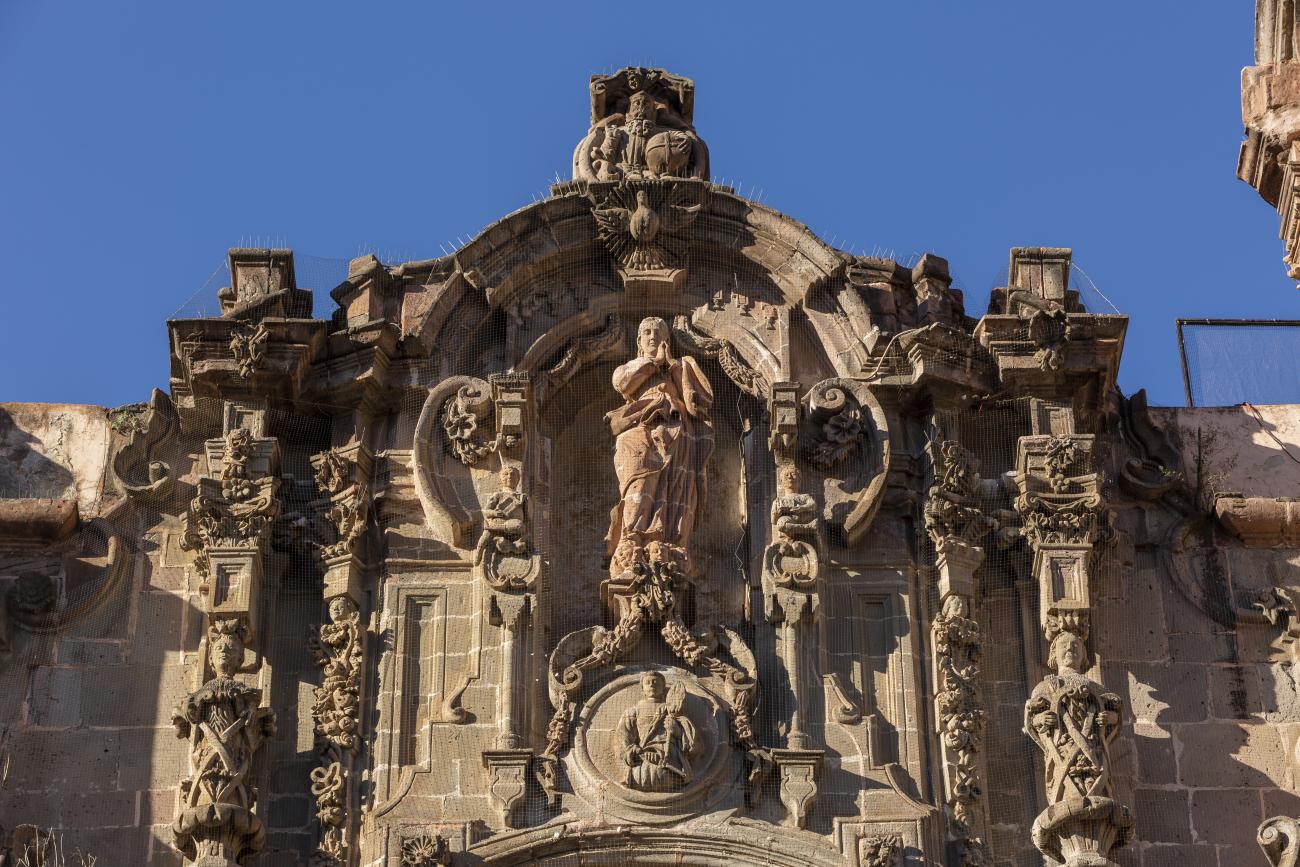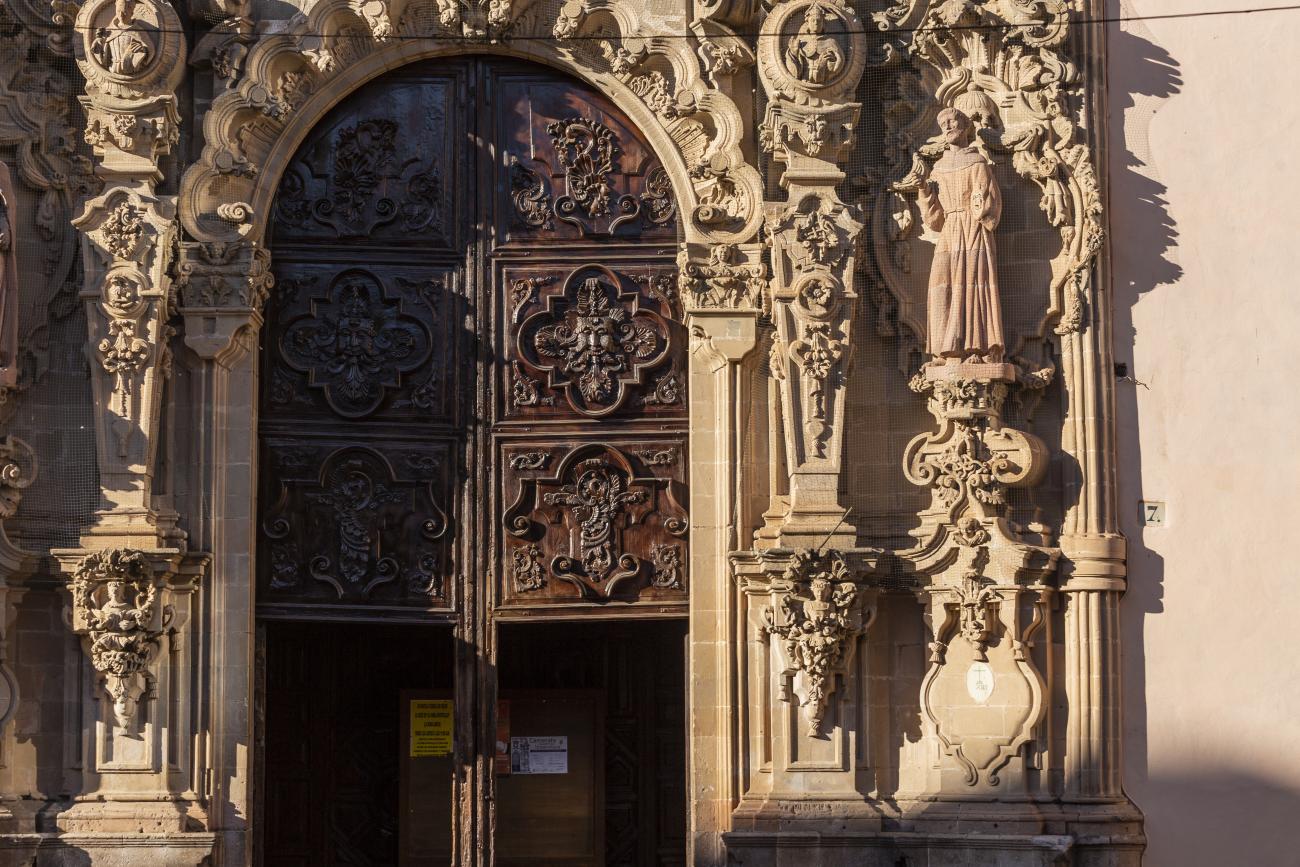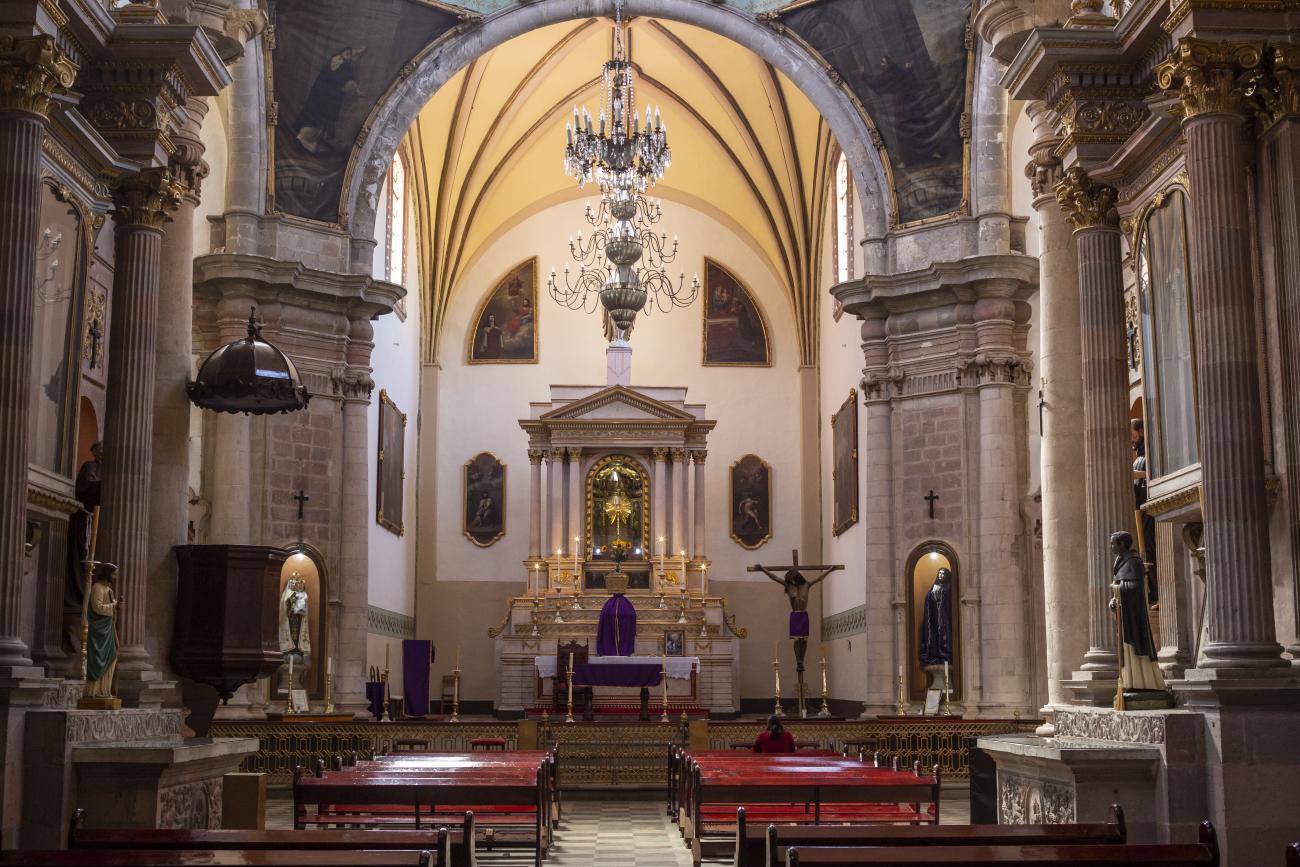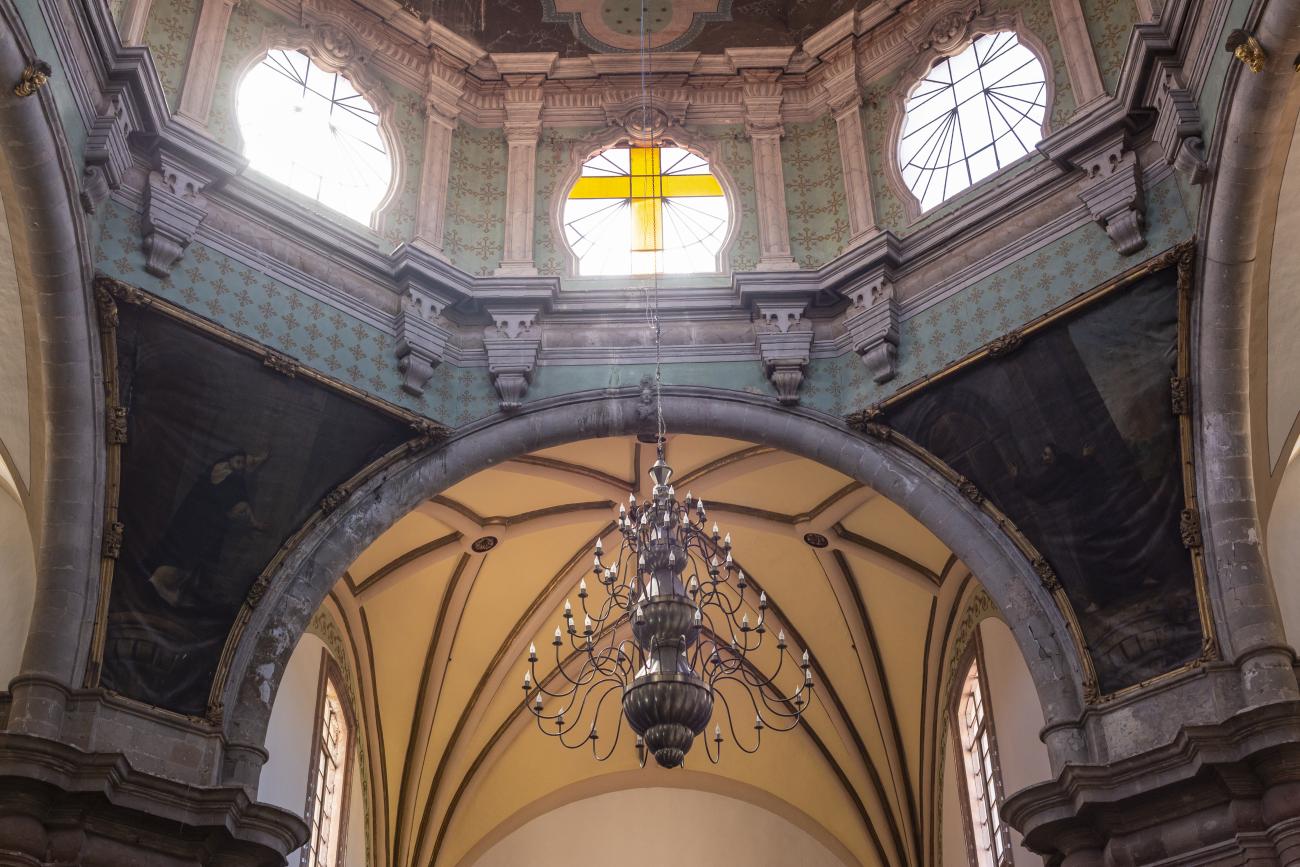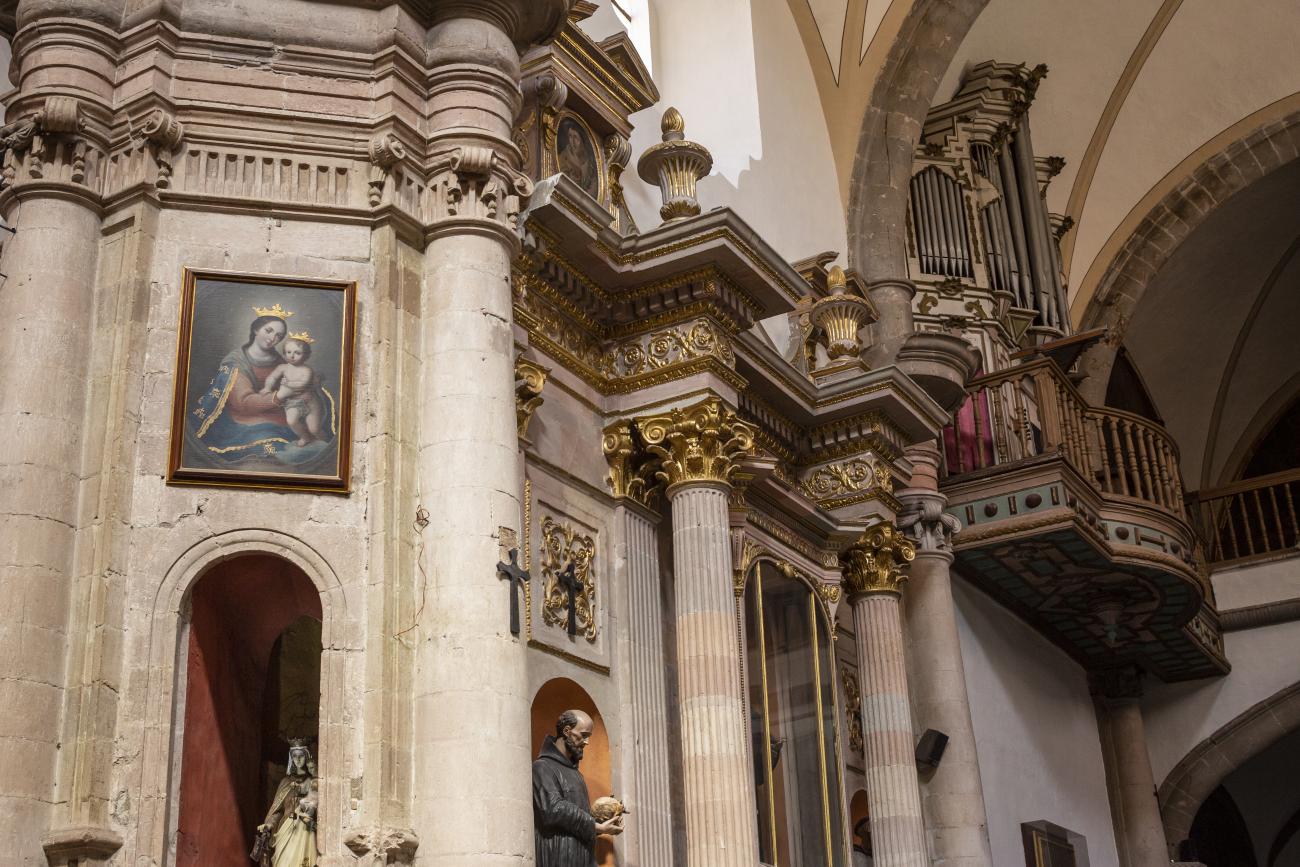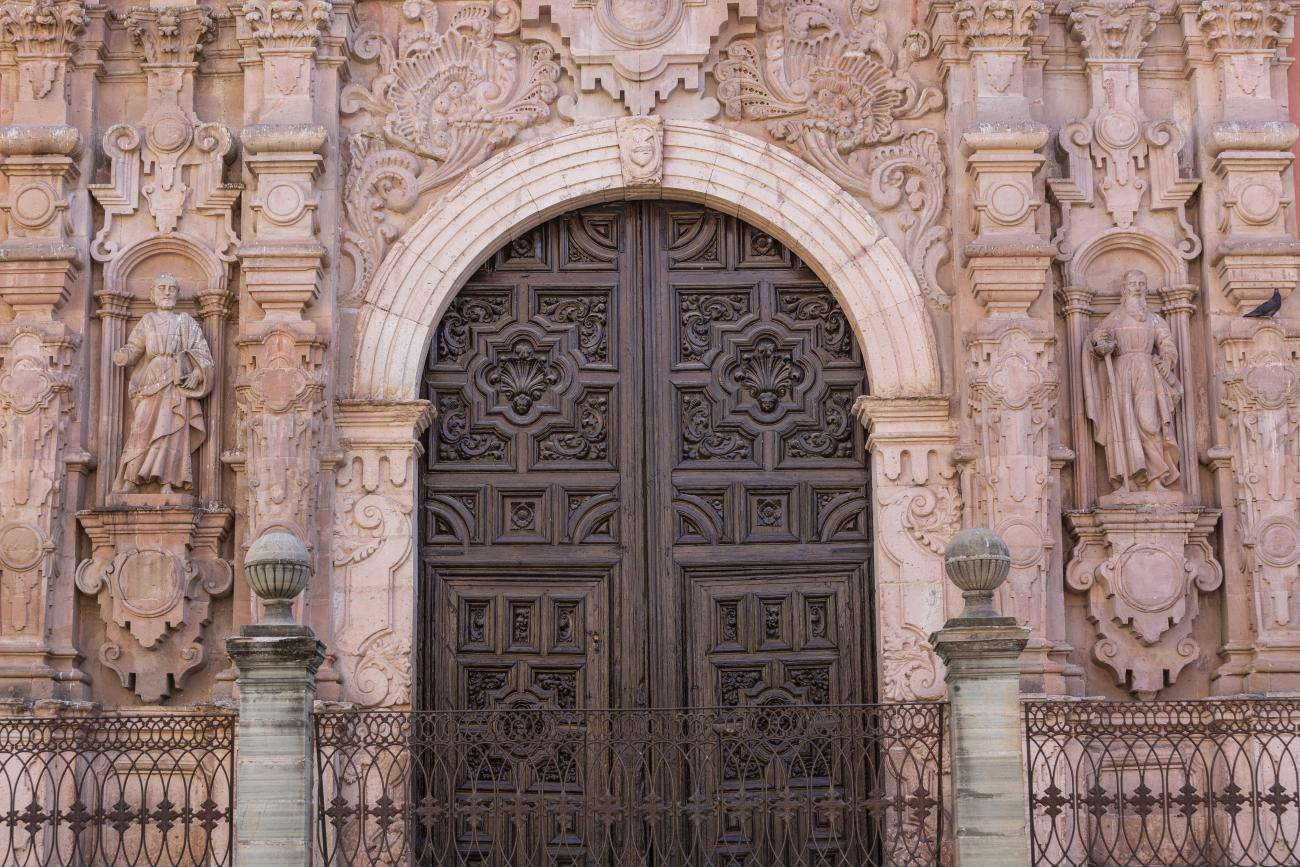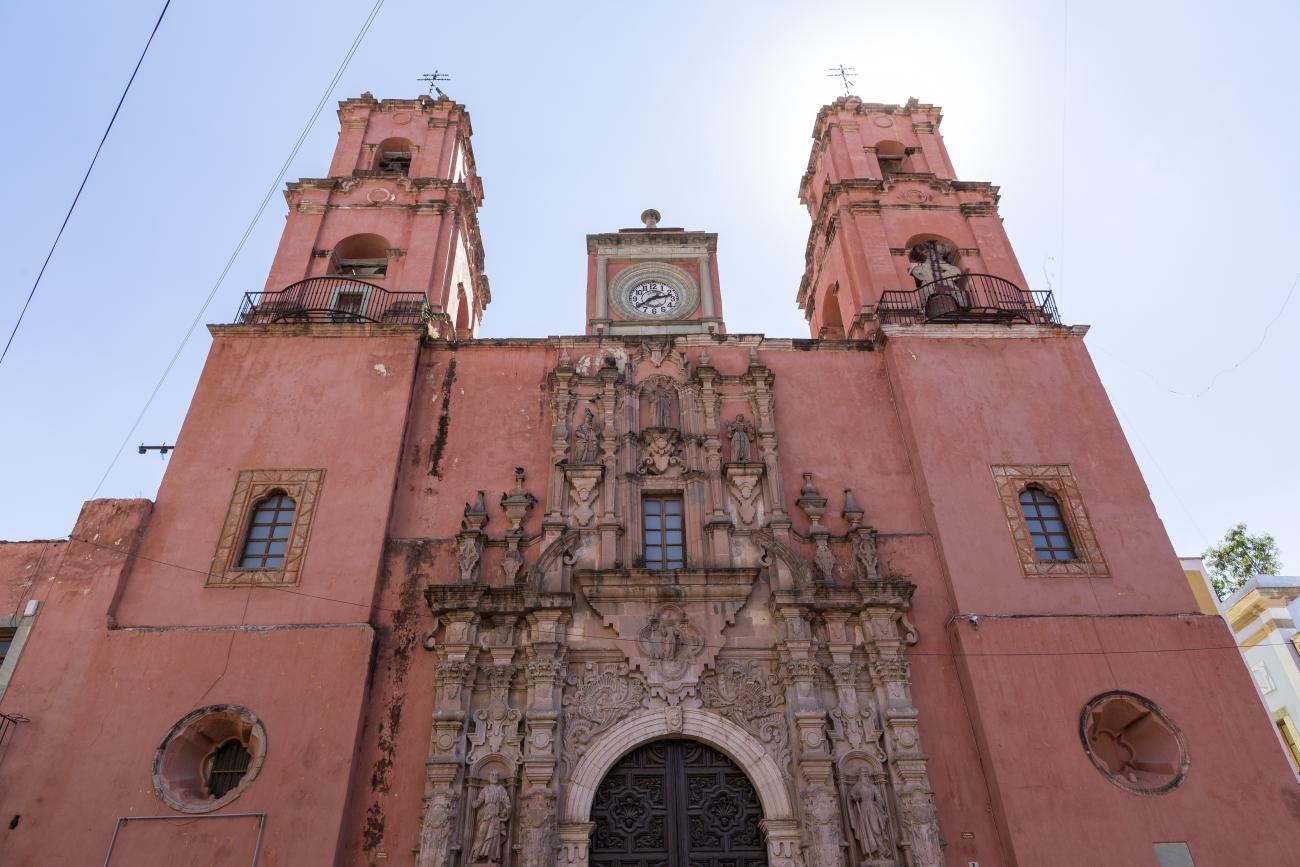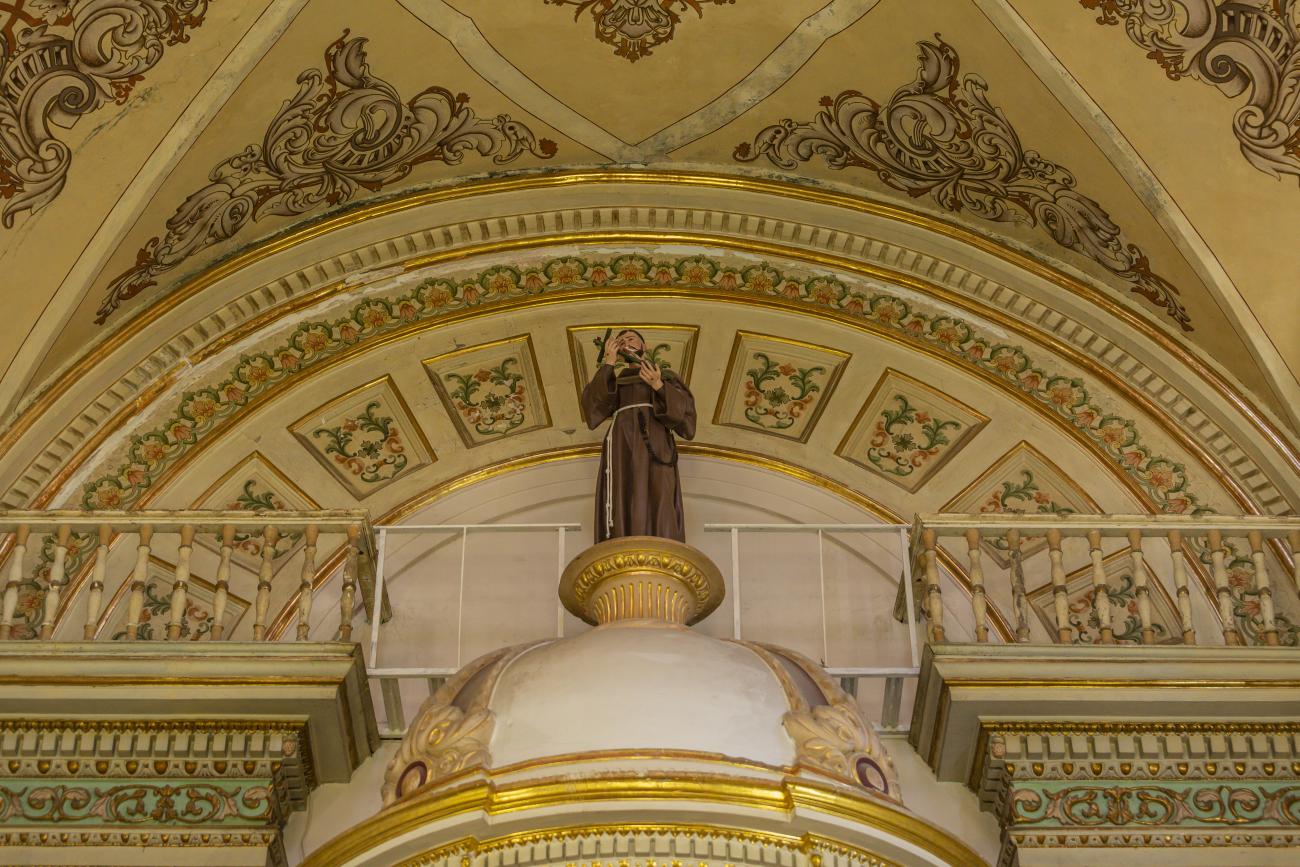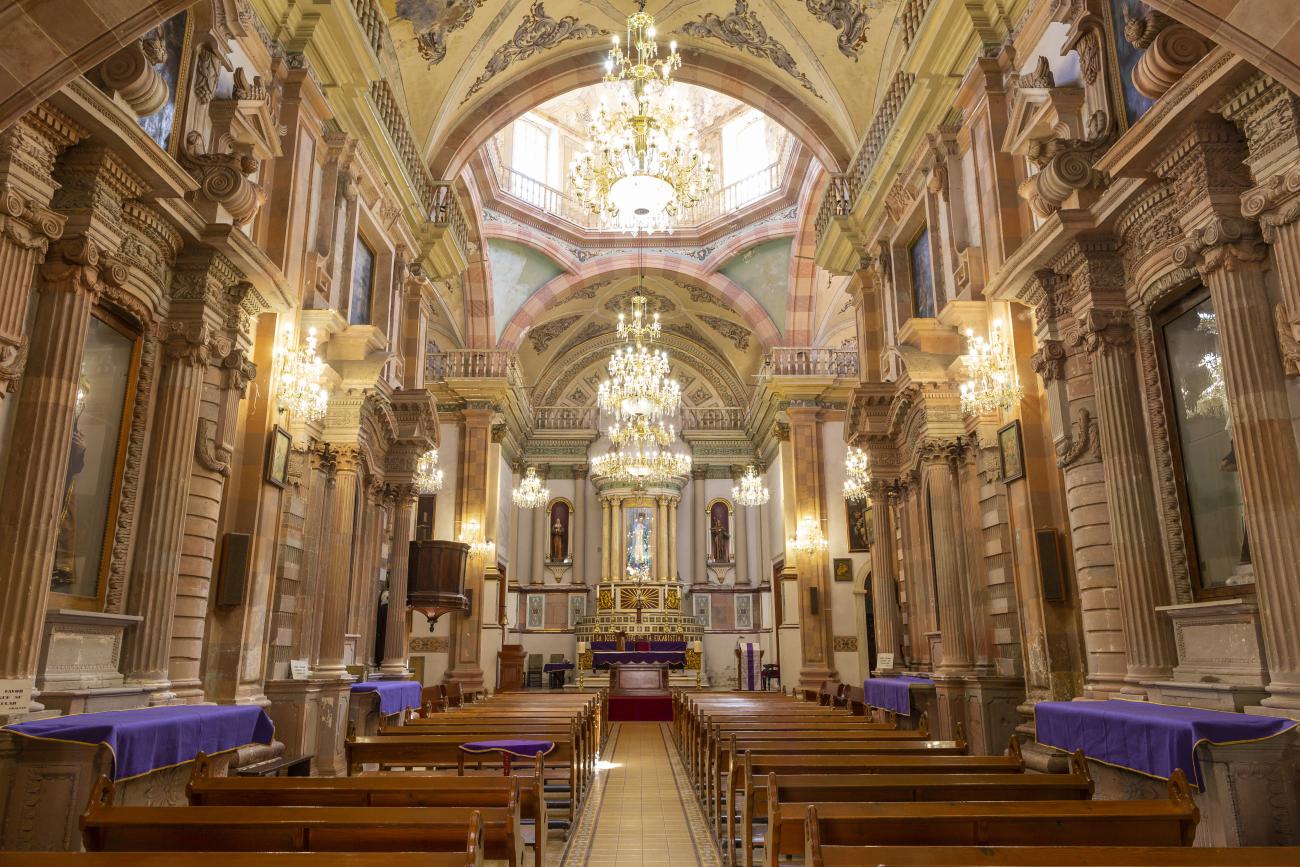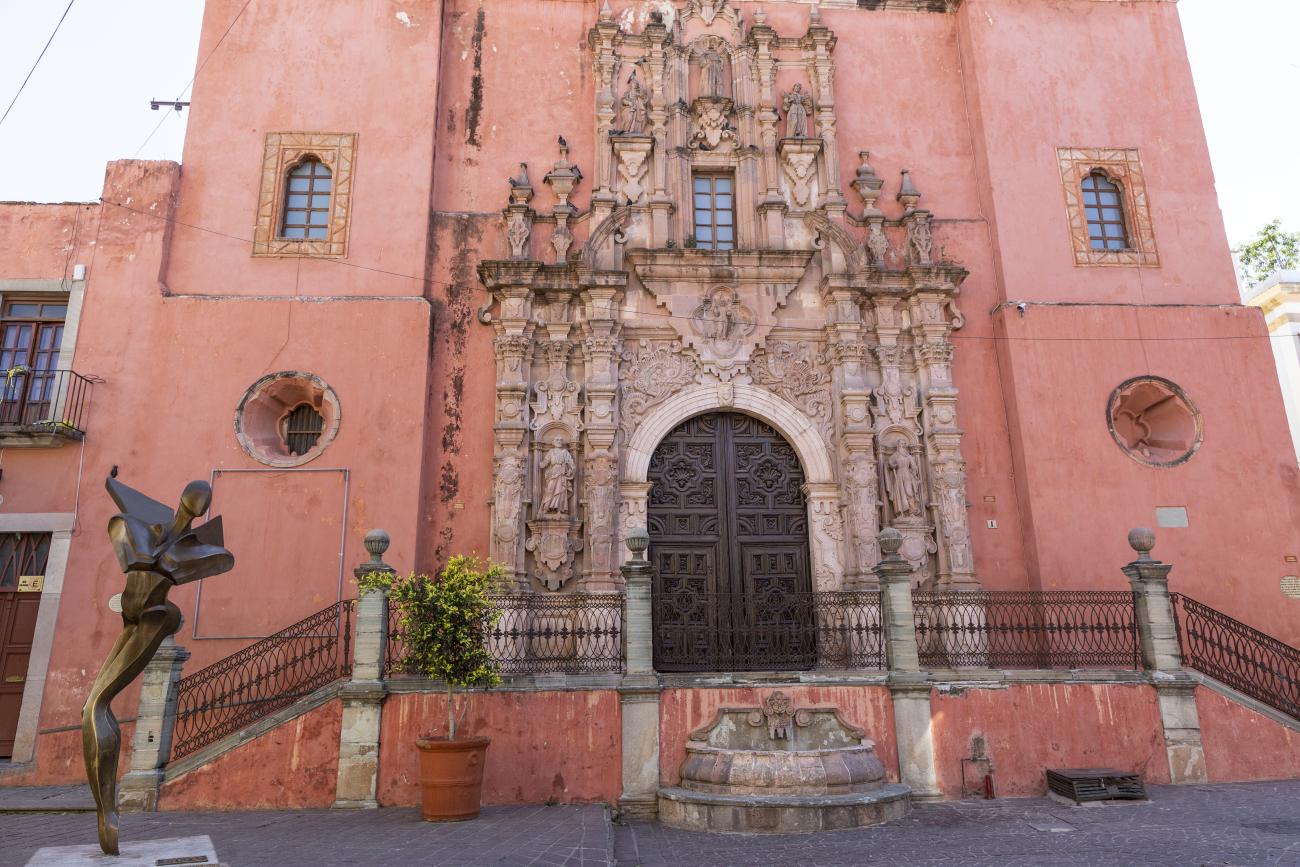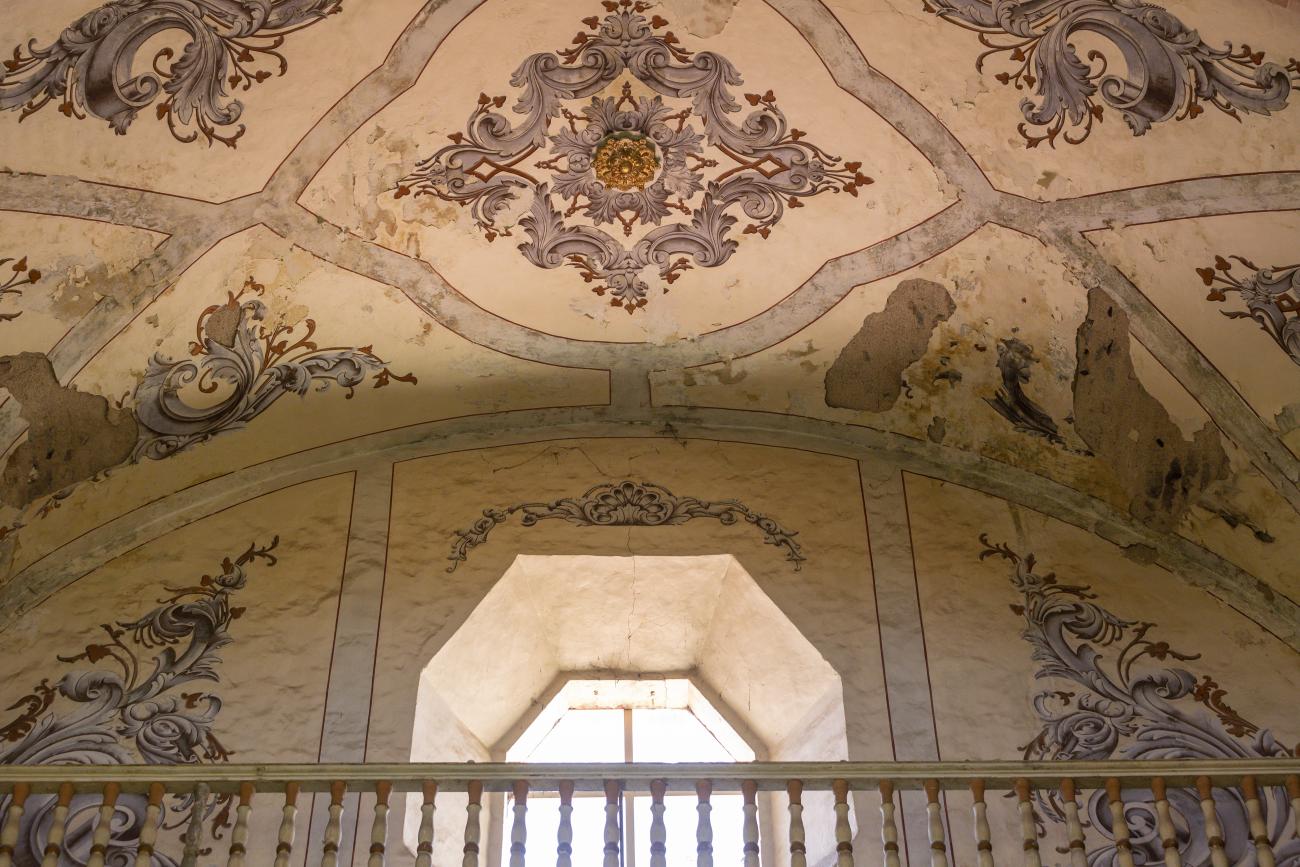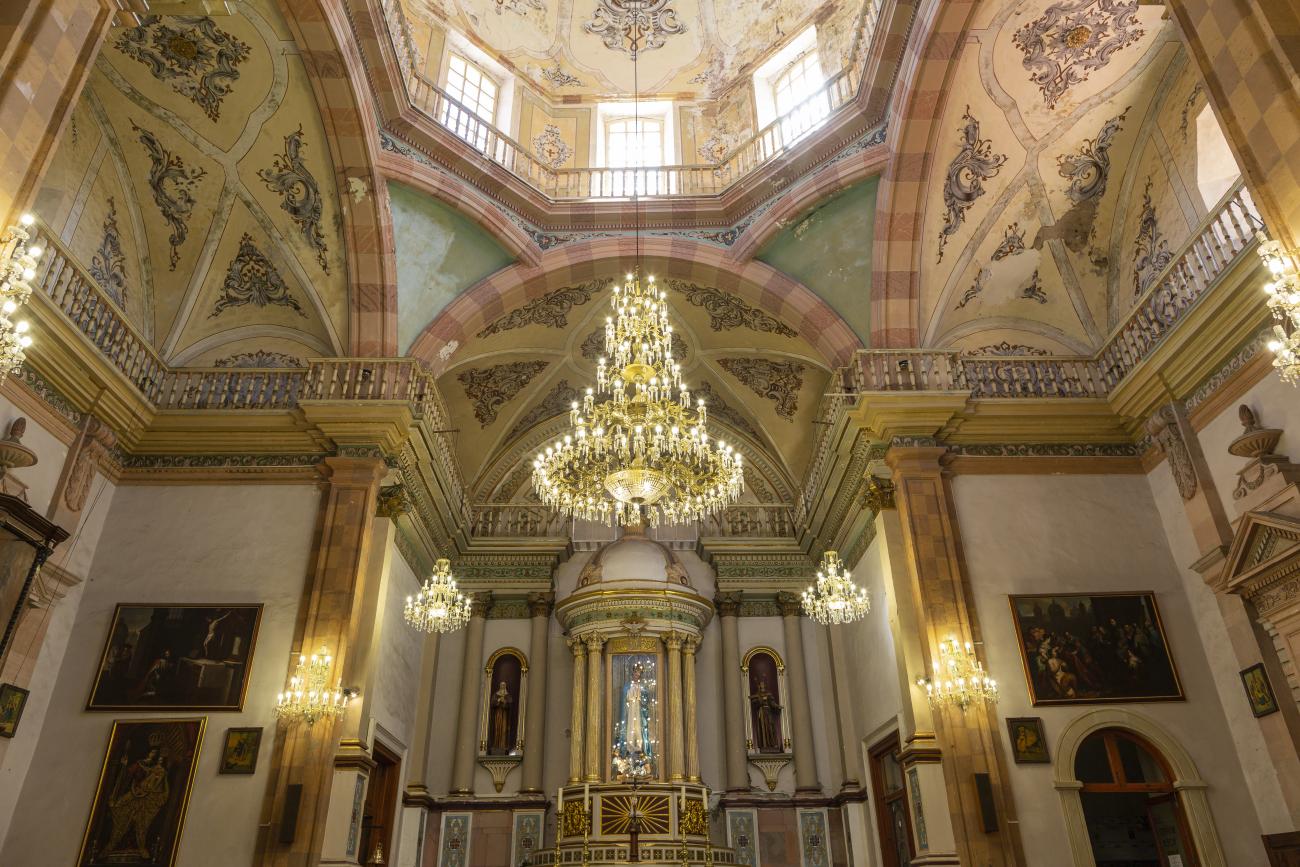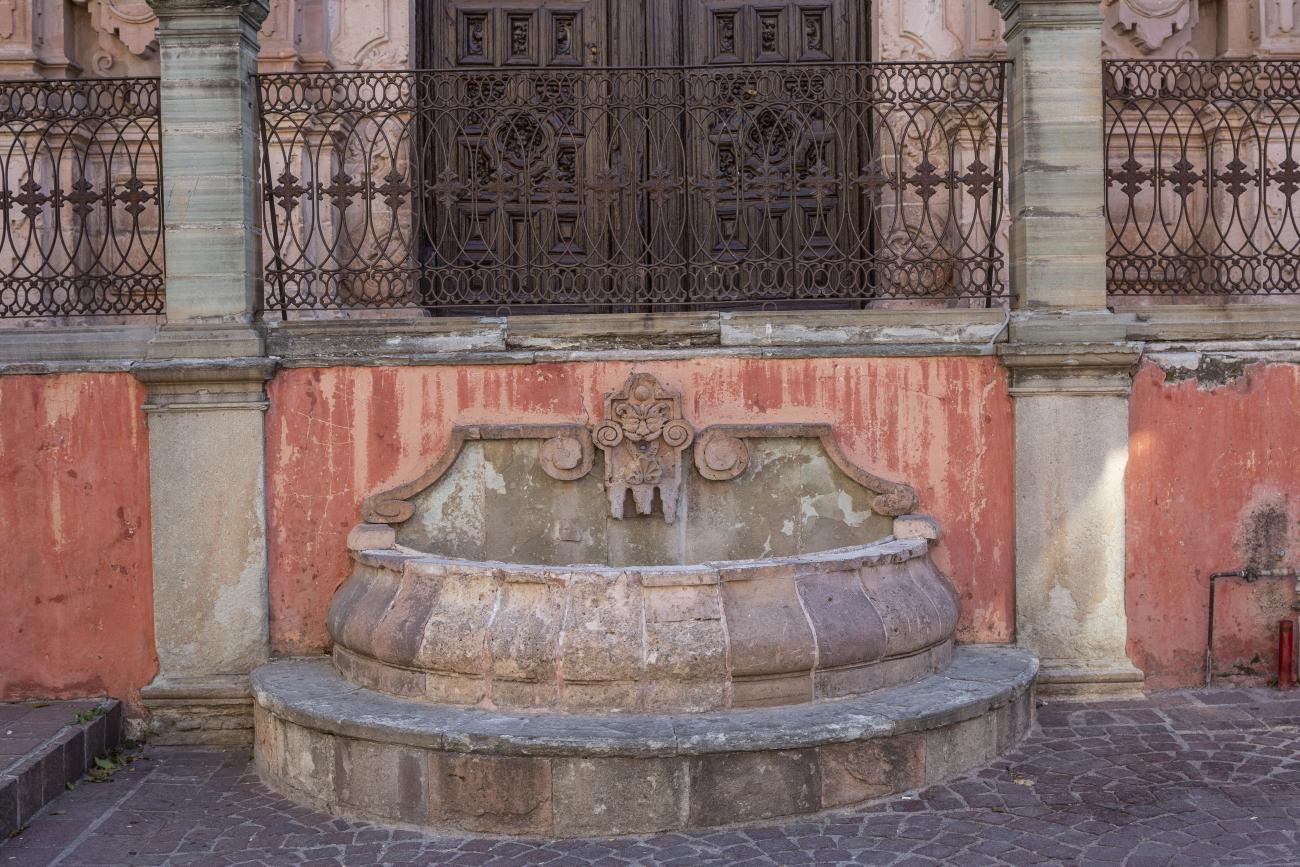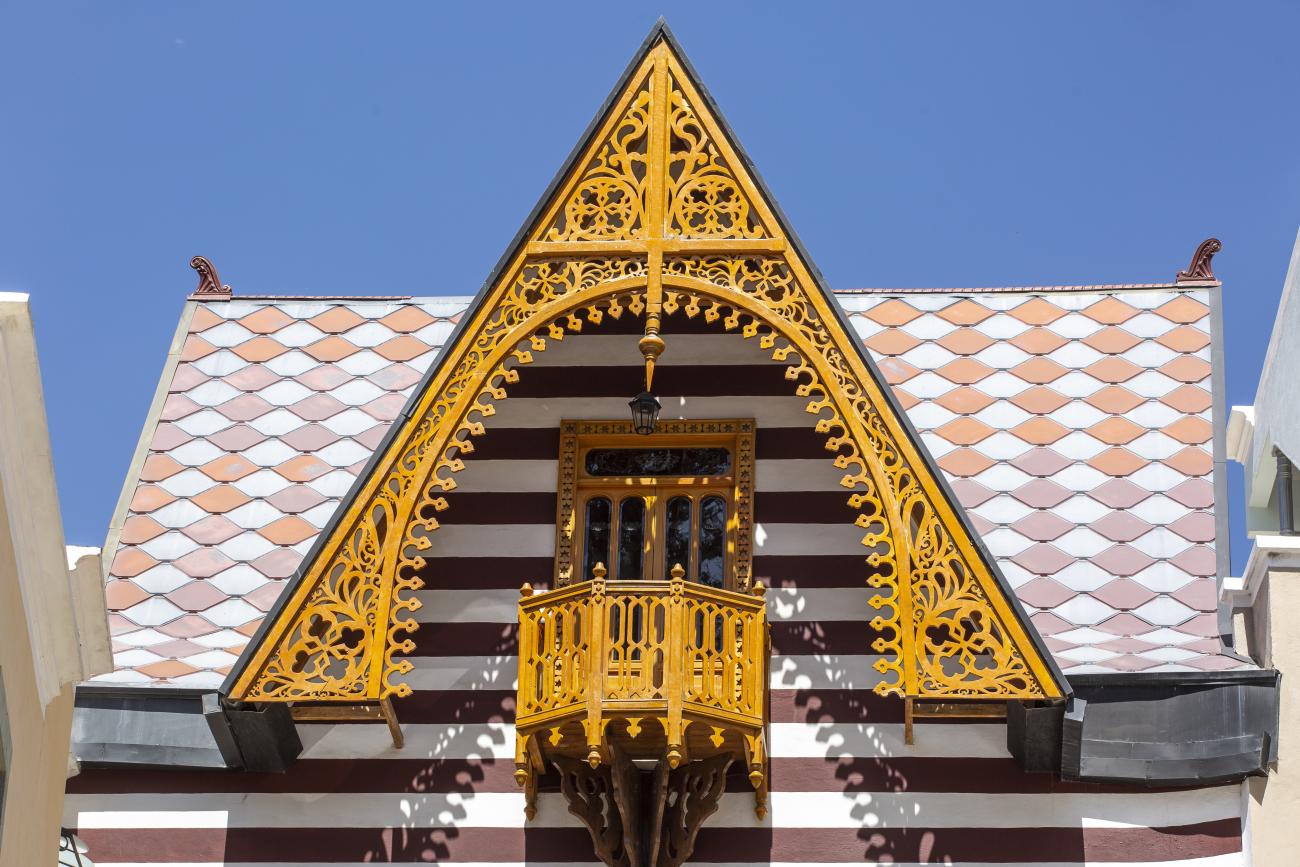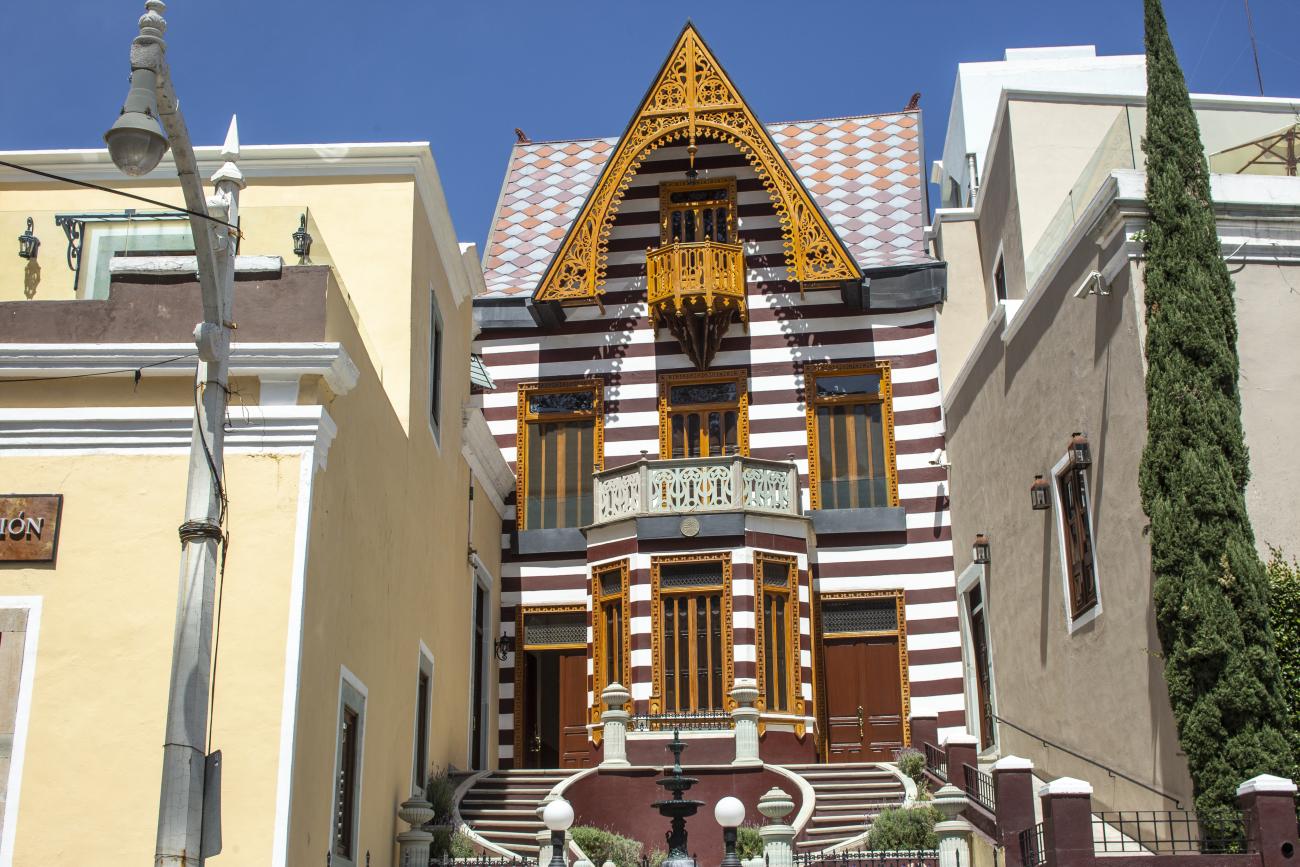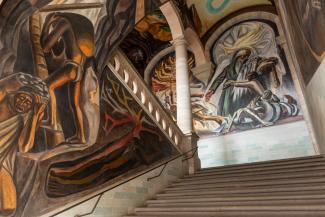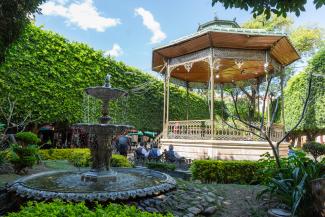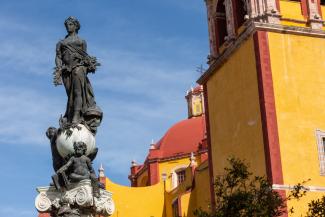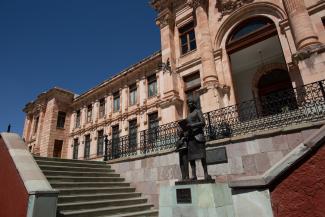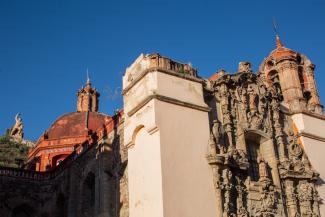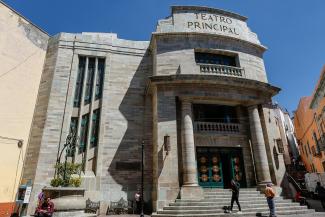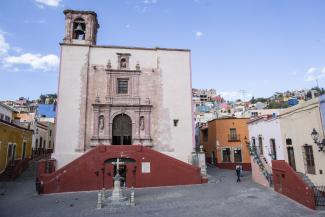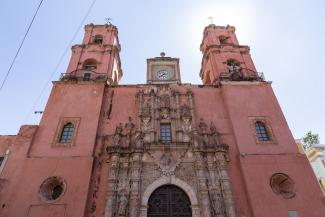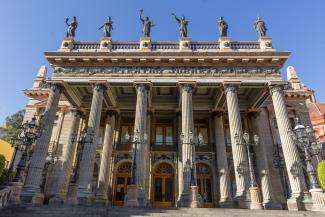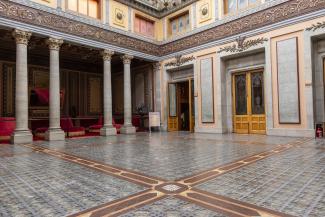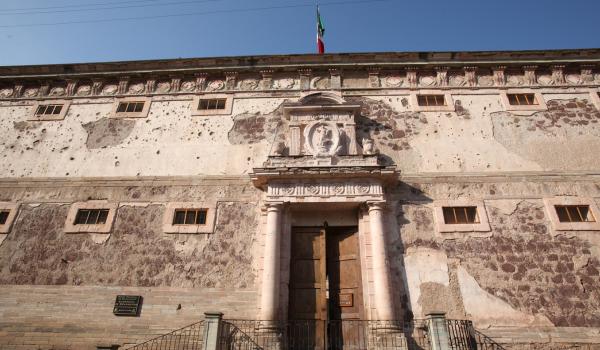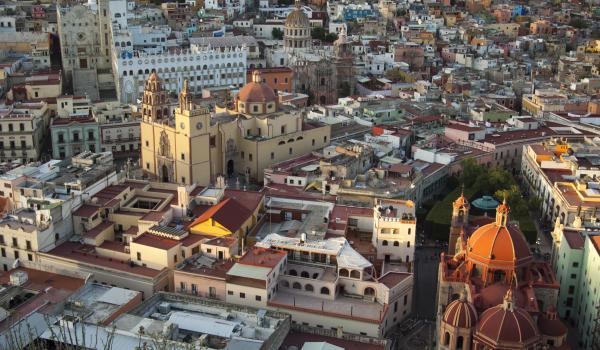Guanajuato
Historical Monuments Zone
Abstract
A city of extraordinary beauty and mining tradition. Its streets formed of legendary alleys and tunnels are home to more than a dozen outstanding buildings of historical and artistic value. Capital of the country for a short time. It has been registered on the World Heritage List by UNESCO, in addition to being part of the Camino Real de Tierra Adentro.
The word Guanajuato comes from the Purépecha “quanaxhuato” and means “place where frogs abound.” The city is located in the center of the state of the same name and stands out as a mountainous region, with long, steep slopes and deep valleys. This means it is exposed to flooding at times of torrential rains, but also favors the use of water resources through the construction of dams.
In the year 1541, the viceroy Don Antonio de Mendoza granted Don Rodrigo Vázquez the lands occupied by what is now the city of Guanajuato. In 1570 the town of Santa Fe de Guanajuato was legally founded, and in 1679, by decree of Viceroy Enrique de Rivera, Guanajuato was given the title of Villa de Santa Fe and Real de Minas de Guanajuato. In 1741 King Felipe V granted it the title of the “very noble and loyal city” of Santa Fe and Real de Minas de Guanajuato.
The mining sector was essential to the economy of Guanajuato, and endowed it with its unique characteristics that are visible in its streets even today. The economic growth of the city developed rapidly due to the discovery of rich mineral veins of gold, silver and copper.
Mining zones are usually found in mountainous areas of abrupt relief, with steep slopes and difficult topography, so the streets of Guanajuato are distinctively narrow and irregular, although they were designed to allow the passage of the carts used for mining and for the supply of all kinds of materials and products from the fields. In the 18th century the construction of the Presa de la Olla dam began, and by the time Alexander von Humboldt visited Guanajuato its nearby mines were the greatest center of silver production in New Spain. In 1786 it was named capital of the Municipality of Guanajuato and, since 1824, capital of the state of the same name.
In addition, it was a scene of the Independence movement. On September 28, 1810, Miguel Hidalgo y Costilla fought the first insurgent battle there, known as the occupation of the Alhóndiga de Granaditas, a place that served for the storage and trade of grains in the region. Spanish families had taken refuge here, where the royalist troops were quartered, so it was besieged by the rebel troops. Eleven years later, in 1821, the Independence of Mexico was declared. In 1858, during the first presidential term of Benito Juárez, the city was the capital of Mexico.
During the French intervention, it fell to the Imperialists and was occupied by the French army. In 1868, it was recovered by the forces of General Florencio Antillón. During the Porfiriato period, it was the center of major mining activities that boosted the state’s economy. Thanks to this, the Esperanza Dam was built, while the Monument to Peace, the Monument to Hidalgo, the Federal Palace and the Juárez Theater were inaugurated.
The Zone of Monuments amounts to 1.9 km2 across 175 blocks that comprise buildings of historical value, including: the Church of San Diego Alcalá, the Church of the Society of Jesus, the Parish Church of Our Lady of Guanajuato, the Church of San Sebastián and San Roque, the Parish Church of Our Lady of Guadalupe de Pardo, the Church of Santa María de la Asunción, as well as the Church and Former Monastery of San Francisco. Other significant buildings have civil purposes, such as: the Juárez Theater, the Mint, the Alhóndiga de Granaditas, and the Federal Palace.
Guanajuato’s city plan is marked by its alleyways and famous tunnels, built where a river once flowed, endowing it with a unique appearance in Mexico.
Moreover, it is one of the Mexican cities with the greatest number of cultural attractions, and includes outstanding examples of Baroque architecture and the Churrigueresque style. It has long hosted the Cervantino International Festival held annually during the month of October where artistic performances of all kinds are staged, and now considered the most important cultural festival in Mexico and Latin America. The city of Guanajuato is also a university city with an intense cultural life.
It was declared a Zone of Historical Monuments in 1982 and in 1988 was inscribed by UNESCO on the World Heritage List as the “Historic City of Guanajuato and Adjacent Mines”; in addition, it is part of the Camino Real de Tierra Adentro, also inscribed on the World Heritage list.
-
Monumentos Históricos
-
Bienes inmuebles con valor cultural
-
Conjuntos arquitectónicos
-
Sitios de interés
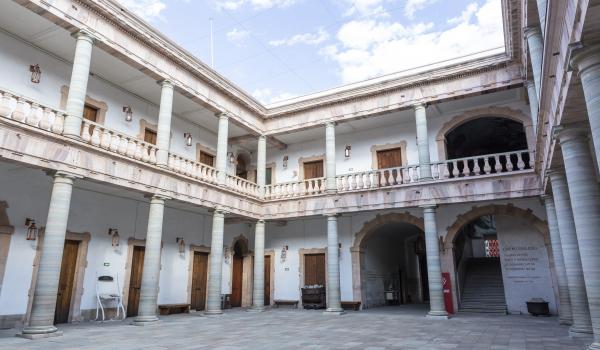
Museo Regional Alhóndiga de Granaditas
An 18th-century civil building constructed to store corn and ensure its supply even in times of drought. On September 28, troops led by Miguel Hidalgo y Costilla, Hidalgo Allende, Juan Aldama, Mariano Abasolo, and Mariano Jiménez had their first encounter with Royalist forces in this building.
Museo Regional Alhóndiga de Granaditas
An 18th-century civil building constructed to store corn and ensure its supply even in times of drought. On September 28, troops led by Miguel Hidalgo y Costilla, Hidalgo Allende, Juan Aldama, Mariano Abasolo, and Mariano Jiménez had their first encounter with Royalist forces in this building. It later served as a prison until September 17, when the Alhóndiga Museum was inaugurated.
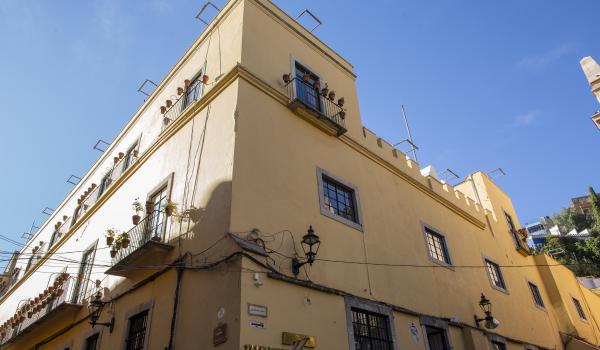
Casa de Moneda
An 18th-century building featuring a turret crowned with battlements and square openings.
Casa de Moneda
An 18th-century building featuring a turret crowned with battlements and square openings.
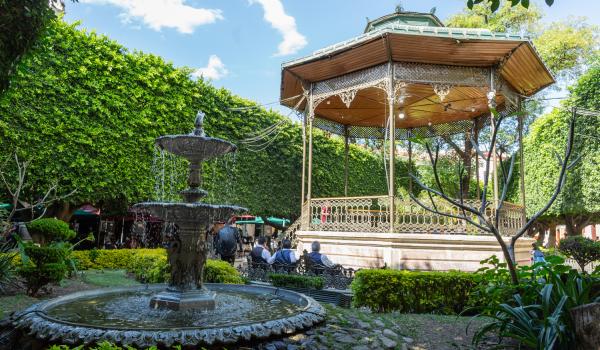
Jardín Reforma
This square underwent different stages of construction during the 19th century. It has stone slab flooring, a fountain, and cast iron benches.
Jardín Reforma
This square underwent different stages of construction during the 19th century. It has stone slab flooring, a fountain, and cast iron benches.
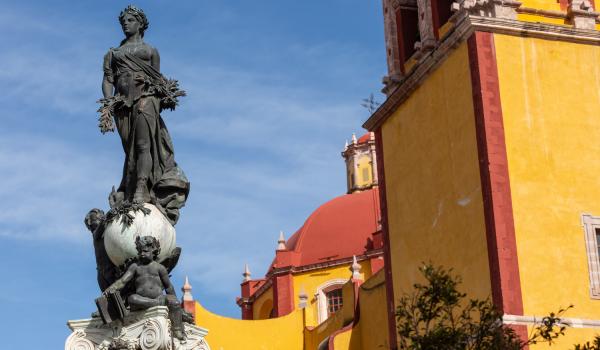
Monumento a La Paz
This bronze sculpture stands in the center of the square of the same name on a stone base covered with quarry stone and marble.
Monumento a La Paz
This bronze sculpture stands in the center of the square of the same name on a stone base covered with quarry stone and marble.

Palacio Legislativo
Designed and built by architect Luis Long, the building is characterized by its Mannerist elements, with a carved stone facade and a congressional chamber decorated and furnished with wood, luxurious fabrics, and paintings from the Porfirian era.
Palacio Legislativo
Designed and built by architect Luis Long, the building is characterized by its Mannerist elements, with a carved stone facade and a congressional chamber decorated and furnished with wood, luxurious fabrics, and paintings from the Porfirian era.
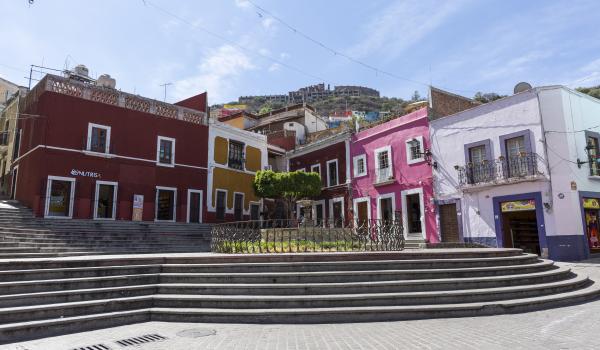
Plazuela de los Angeles
Small square with quarry stone paving and cast iron benches.

Plaza del Baratillo
The square consists of an esplanade and a fountain made of quartzite and cast iron.
Plaza del Baratillo
The square consists of an esplanade and a fountain made of quartzite and cast iron.
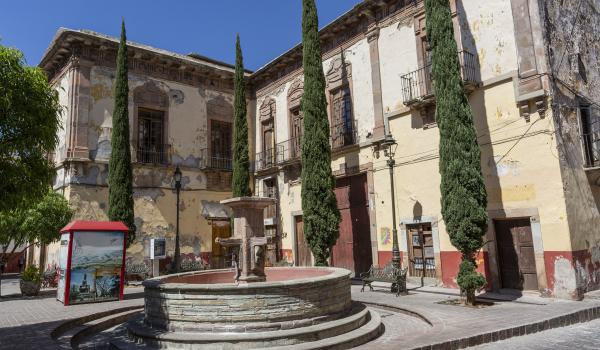
Plazuela del ropero
The main feature of the square is a quarry stone fountain, with a neoclassical building in the background.
Plazuela del ropero
The main feature of the square is a quarry stone fountain, with a neoclassical building in the background.
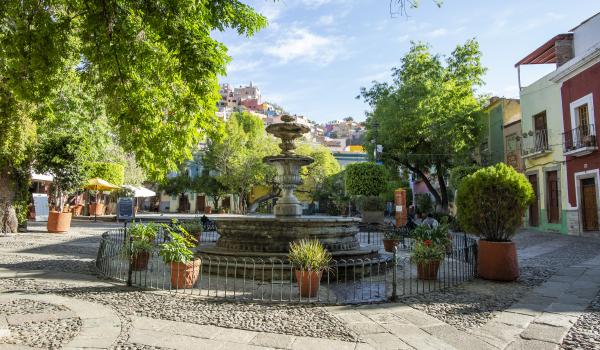
Plaza San Fernando
An irregularly shaped square with cast iron benches, geometric stone slab flooring, and a 19th-century fountain.
Plaza San Fernando
An irregularly shaped square with cast iron benches, geometric stone slab flooring, and a 19th-century fountain.
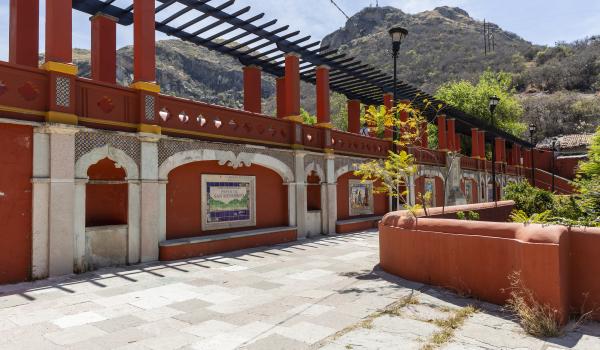
Presa de la Olla
The dam consists of a watchtower or lookout point and a curtain wall.
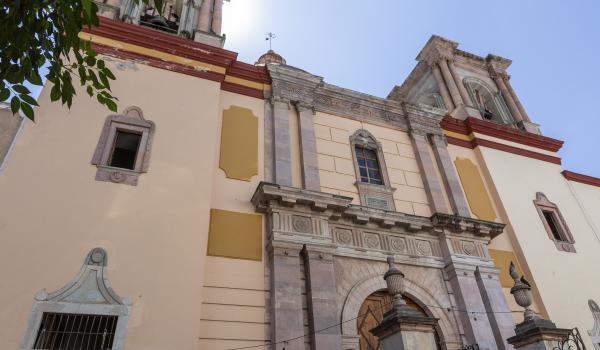
Templo de la Santa Casa de Loreto
Temple with a circular architectural plan and two adjoining chapels.
Templo de la Santa Casa de Loreto
Temple with a circular architectural plan and two adjoining chapels.
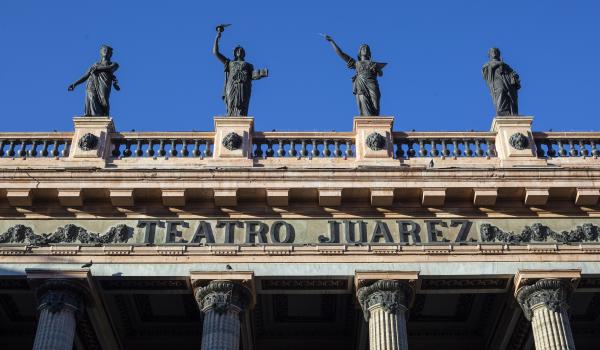
Teatro Juárez
The neoclassical façade of this building is crowned by eight bronze sculptures of Greek muses personifying the fine arts. The entrance is flanked by two lion statues and cross-shaped lights.
Teatro Juárez
The neoclassical façade of this building is crowned by eight bronze sculptures of Greek muses personifying the fine arts. The entrance is flanked by two lion statues and cross-shaped lights. The curtain, which recreates a scene from the fairy tale “The Golden Horn of Constantinople,” was created by French artist Labasta. It was built on the site of the Temple of the Third Order of St. Francis. It is one of the city's most iconic buildings.
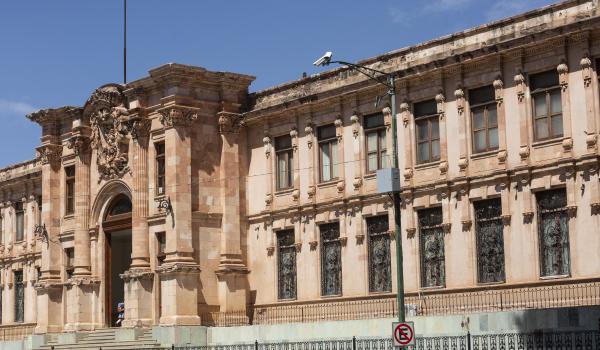
Benemérita y Centenaria Escuela Normal Oficial de Guanajuato
This building was designed by engineer Salvador Madrazo. Construction began in 1910 and was completed in 1929.
n>
Benemérita y Centenaria Escuela Normal Oficial de Guanajuato
This building was designed by engineer Salvador Madrazo. Construction began in 1910 and was completed in 1929.
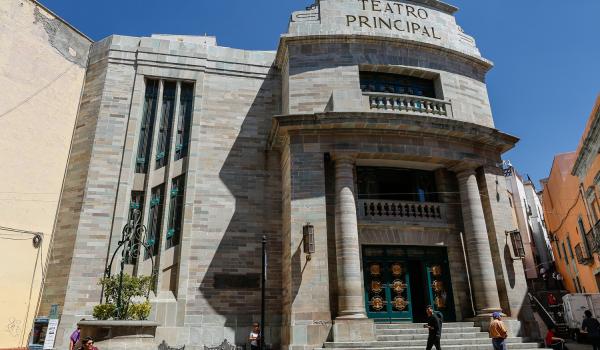
Teatro Principal
Theater with a neoclassical façade featuring exposed grayish-pink stone. It is considered one of the best theaters in the country.
n>
Teatro Principal
Theater with a neoclassical façade featuring exposed grayish-pink stone. It is considered one of the best theaters in the country.

Mercado Hidalgo
A 20th-century building designed by architect Antonio Rivas Mercado and built by architect Ernesto Brunel. It is one of the most important civil architecture buildings in the city, as it was built entirely with a metal structure, except for the stone facade.
n>
Mercado Hidalgo
A 20th-century building designed by architect Antonio Rivas Mercado and built by architect Ernesto Brunel. It is one of the most important civil architecture buildings in the city, as it was built entirely with a metal structure, except for the stone facade.
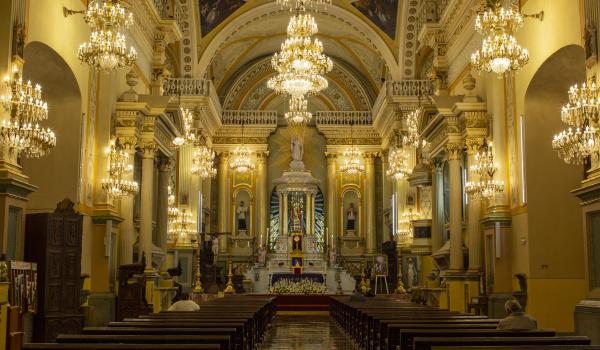
Basílica Colegiata de Nuestra Señora de Guanajuato
This 17th-century neoclassical building is one of the finest examples of religious architecture in the state. It was built between 1671 and 1696 on the ruins of an old church dedicated to Saint Ignatius. It currently houses the image of Our Lady of the Rosary, patron saint of the city.
Basílica Colegiata de Nuestra Señora de Guanajuato
This 17th-century neoclassical building is one of the finest examples of religious architecture in the state. It was built between 1671 and 1696 on the ruins of an old church dedicated to Saint Ignatius. It currently houses the image of Our Lady of the Rosary, patron saint of the city.
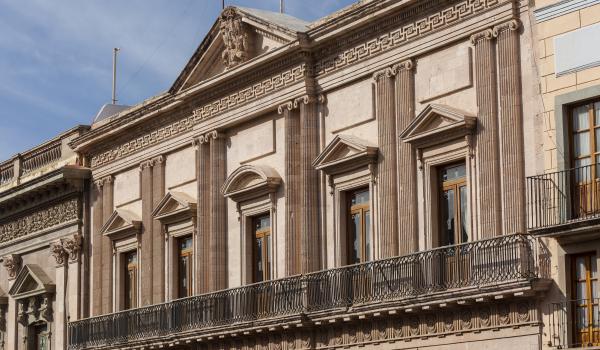
Casa del Conde Rul y Valencia
A 19th-century neoclassical building constructed from pink quarry stone. It is considered the most remarkable work of civil domestic architecture in Mexico.
Casa del Conde Rul y Valencia
A 19th-century neoclassical building constructed from pink quarry stone. It is considered the most remarkable work of civil domestic architecture in Mexico.
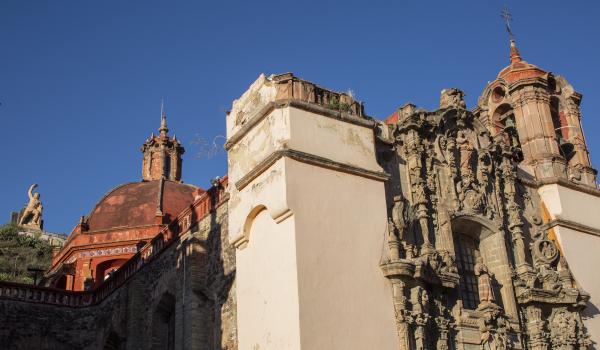
Templo de San Diego de Alcalá
The construction of this temple of the Discalced Franciscans was completed on June 27, 1784, after the previous one was damaged by a flood. It has a Latin cross floor plan and a splendid Churrigueresque façade made of pink quarry stone.
Templo de San Diego de Alcalá
The construction of this temple of the Discalced Franciscans was completed on June 27, 1784, after the previous one was damaged by a flood. It has a Latin cross floor plan and a splendid Churrigueresque façade made of pink quarry stone.

Templo de San Francisco de Asís
An 18th-century temple occupied by Franciscans since September 9, 1828. Its Churrigueresque façade is carved from quarry stone, its architectural layout is in the shape of a Latin cross, and its dome is octagonal with a lantern.
Templo de San Francisco de Asís
An 18th-century temple occupied by Franciscans since September 9, 1828. Its Churrigueresque façade is carved from quarry stone, its architectural layout is in the shape of a Latin cross, and its dome is octagonal with a lantern.

Casa de las brujas

